




Comprehensive Outdoor
Recreation Plan 2025 to 2030


Facility Accessibility
Bicycle and Pedestrian Connections
Water Access / Launch Point Assessment
Community Events and Rec. Programming
Needs and Demand Analysis
Statewide Comp.Outdoor Recreation Plan
Comparison to National Average
Park Service Area Requirements
Population Growth Analysis
Operational Analysis
Engagement & Workshop Results
Needs Summary Recommendations
General Recommendations
Individual Facility Recommendations
Programming
Implementation
Plan Approval and Adoption
Maintenance and Operational Brief
Financial and Grant Opportunities
Implementation Resources
Phased Action Plan
Appendix:
This plan has been prepared to guide the City of Eau Claire in developing and maintaining public parks and outdoor recreation facilities. It also serves as a tool to encourage participation in grant programs through the Department of Natural Resources and other agencies.
It is our mission to assure the common good through services essential for a safe, sustainable, engaged and healthy community.
Parks play an important role in the conservation of natural resources. These protected open spaces not only benefit the environment but also serve as an important indicator to potential outside investment in the community.
Parks are essential in combating important health issues such as nutrition, hunger, obesity and physical inactivity.
Universal access to public parks and recreation should be considered a right, not a privilege. A healthy park system will provide equal access throughout the community.
The existing park system in Eau Claire includes 55 park facilities that cover approximately 180 acres. These facilities range from small, one-acre “miniparks” to large, multi-use parks such as the recently improved Cannery District Park. The parks system serves approximately 69,737 residents.
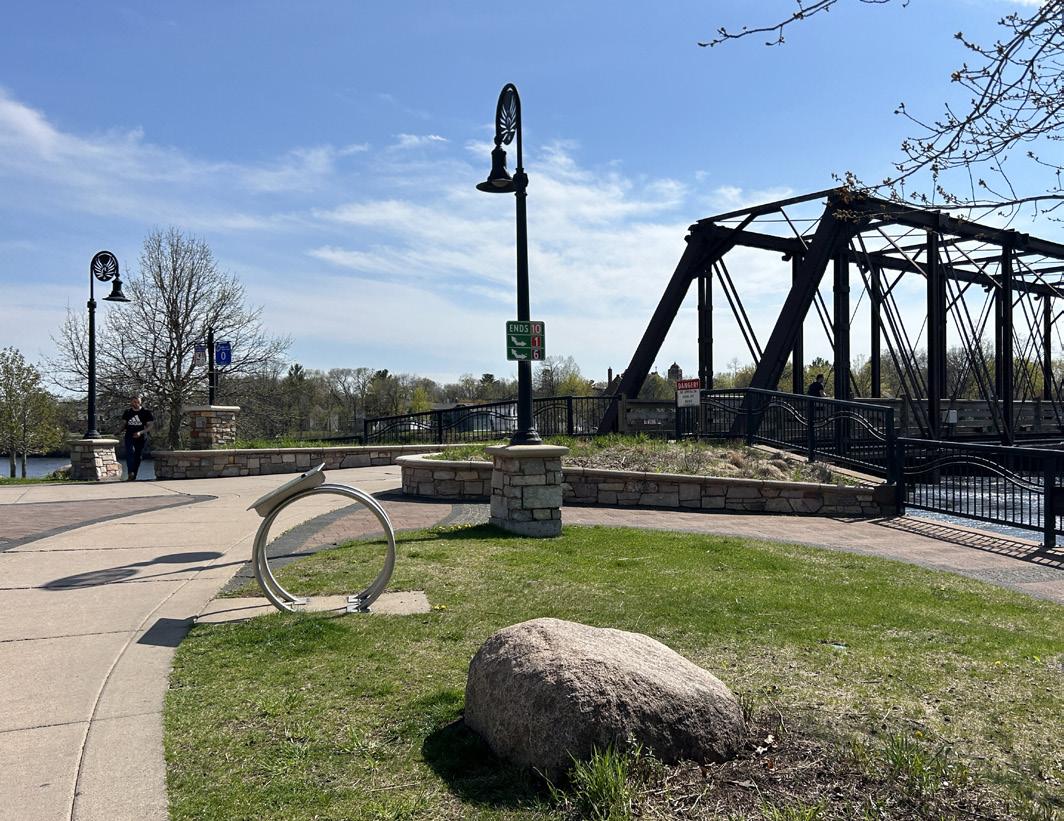
The purpose of this project is to develop a Comprehensive Outdoor Recreation Plan for the City of Eau Claire, assess the vitality, usability and needs of the current City park system and provide direction for maintenance, growth and programming for the next five to ten years.
As a working tool, the plan will provide officials with a clear understanding of park land inventory and future recreational facility and open space needs. The plan also creates an orderly and prioritized strategy for making incremental improvements. The plan will qualify the City to request DNR and other public funding for implementing proposed park improvements.

Project TeamKickoff Meeting
City Council Meeting
Community Engagment @ Summer Concert
Community Engagment @ Express Game
Project Team Workshop
Community Engagment @ Fall Festival
Project Team Workshop
Waterways and Park Meeting
Council and WWP Workshop
City Council Meeting and Adoption
Eau Claire’s parks conserve natural resources, promote community health, create equitable access to safe, welcoming public spaces. Our park system supports the well-being of all residents while advancing broad goals like environmental resilience and inclusive community development
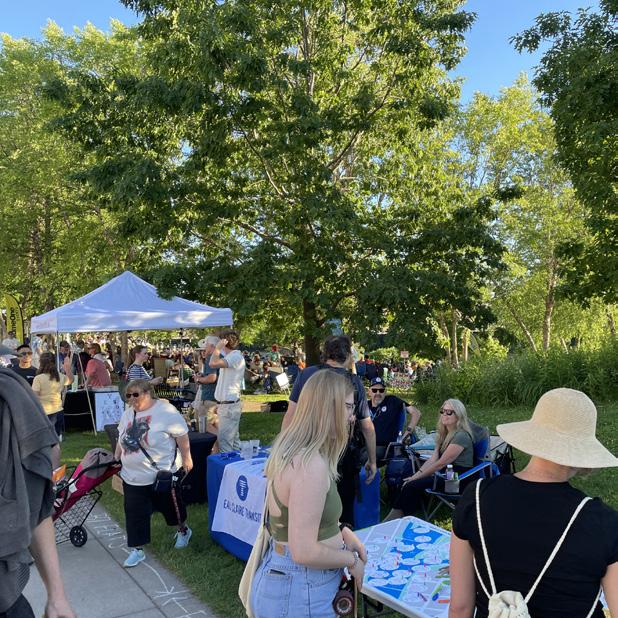

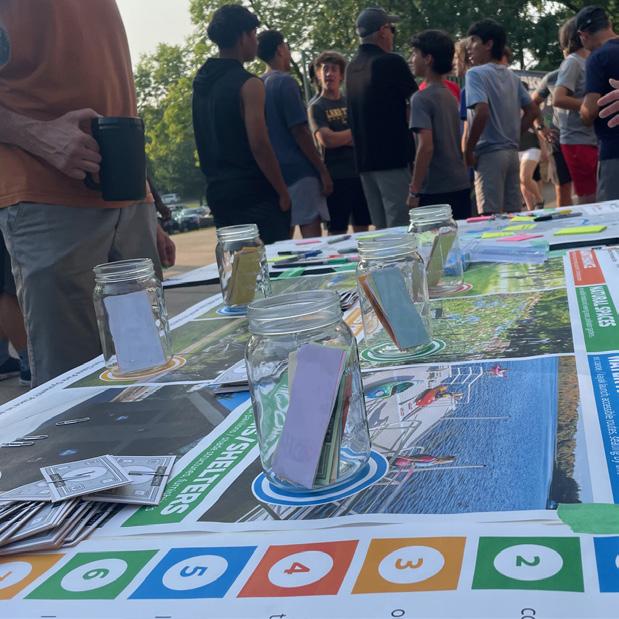
The City of Eau Claire aims to enhance social connectivity through accessible outdoor recreation opportunities that cater to all residents, ensuring equitable access to parks, trails, and water-based activities. By expanding community spaces around rivers, lakes, and natural areas, the city will foster a sense of belonging and well-being, encouraging outdoor play and social interaction year-round. Careful planning and prioritization of accessible recreational facilities will ensure that these spaces are inclusive and sustainable while being mindful of the city’s fiscal responsibilities.
Eau Claire is committed to preserving and enhancing the city’s natural environment by focusing on sustainable outdoor recreation that protects water resources and ecosystems. Plans will prioritize maintaining the integrity of the waterways, restoring natural habitats, and promoting responsible use of outdoor spaces. By implementing eco-friendly design principles and making fiscally responsible decisions, the city will ensure that environmental stewardship is integrated into every recreational project, balancing human activity with the protection of natural assets for future generations.

Outdoor recreation is vital to Eau Claire’s economic growth, and the city will strategically invest in recreational spaces that draw visitors while supporting local businesses. Waterfront development and access to lakes and rivers will enhance tourism opportunities, while community events centered around outdoor spaces will boost economic activity. The city will ensure all investments are fiscally responsible, aligning development with sustainable growth goals while delivering cost-effective projects that stimulate the local economy and offer long-term value to residents and visitors alike.
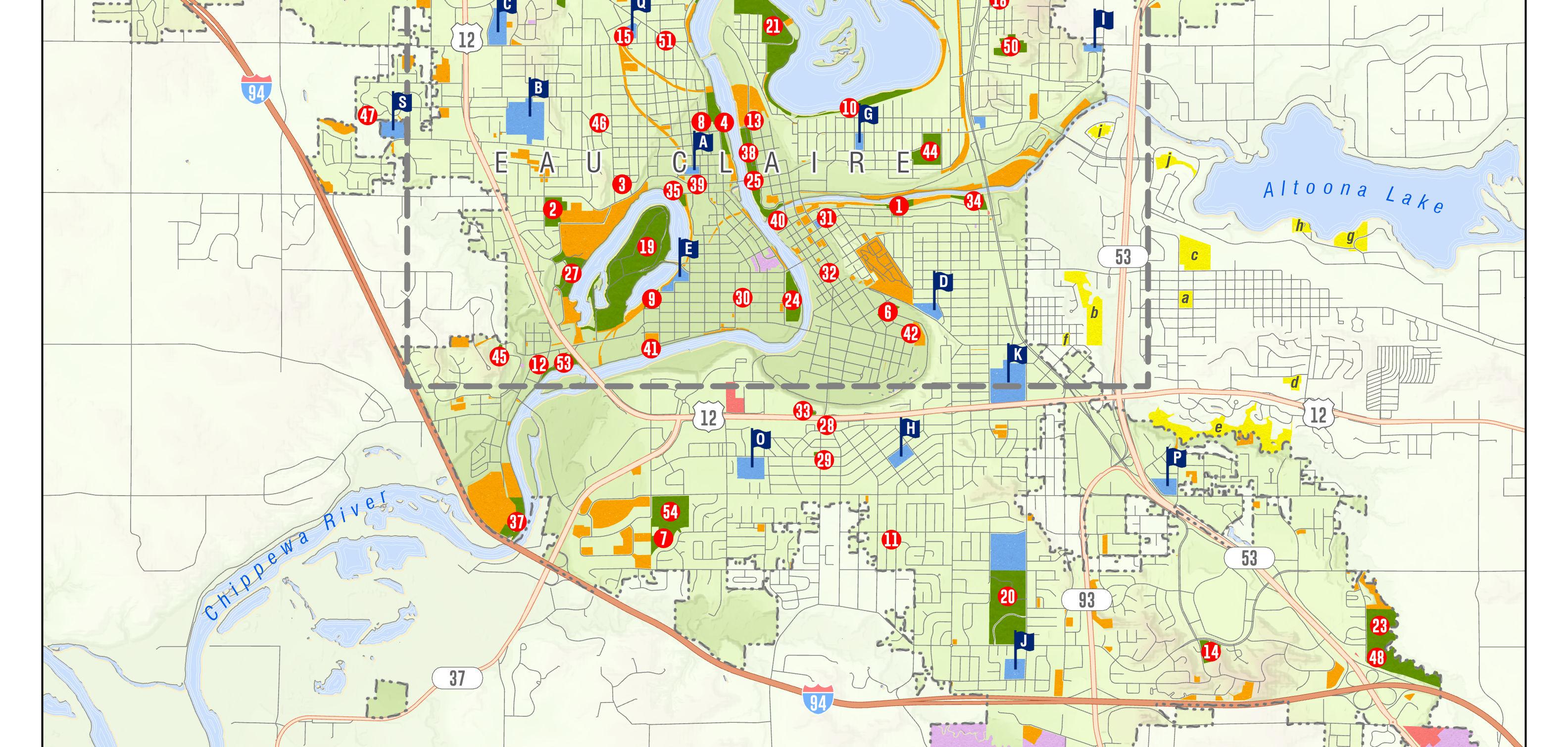
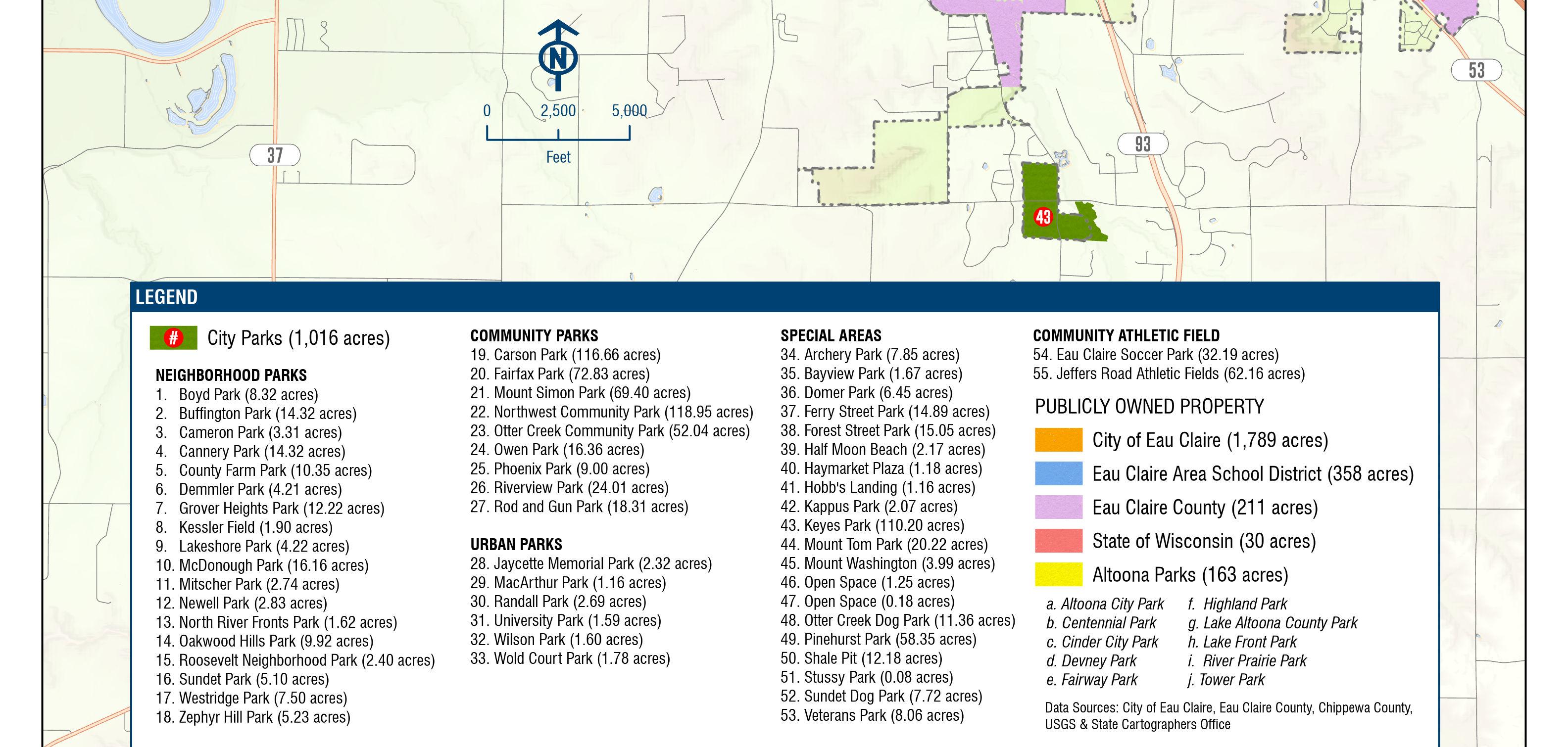
Eau Claire is a dynamic city in west-central Wisconsin, strategically positioned at the confluence of the Eau Claire and Chippewa Rivers. As a regional hub for commerce, education, and recreation, the city plays a vital role in shaping the broader Chippewa Valley. Eau Claire’s strong commitment to outdoor recreation, environmental stewardship, and multimodal connectivity has guided its growth and development, ensuring that parks, trails, and green spaces remain integral to the community’s identity and quality of life. This dedication is reflected in city planning efforts that emphasize sustainability, accessibility, and community-driven placemaking.
The Eau Claire Comprehensive Outdoor Recreation Plan (CORP) is closely aligned with key local planning initiatives, ensuring that park and recreation improvements support broader community goals. The Eau Claire Comprehensive Plan provides an overarching framework for growth and development, emphasizing connectivity and livability. The City of Eau Claire Bicycle and Pedestrian Plan advances mobility and accessibility through an interconnected trail system, while the Eau Claire Area School District Safe Routes to School Plan promotes safe and active transportation for students. Additionally, the previous Open Space and Recreation Plan laid a foundation for park system enhancements, and its insights help inform this update. Together, these planning documents provide a cohesive vision for Eau Claire’s recreational future, balancing environmental conservation, active lifestyles, and community engagement.act

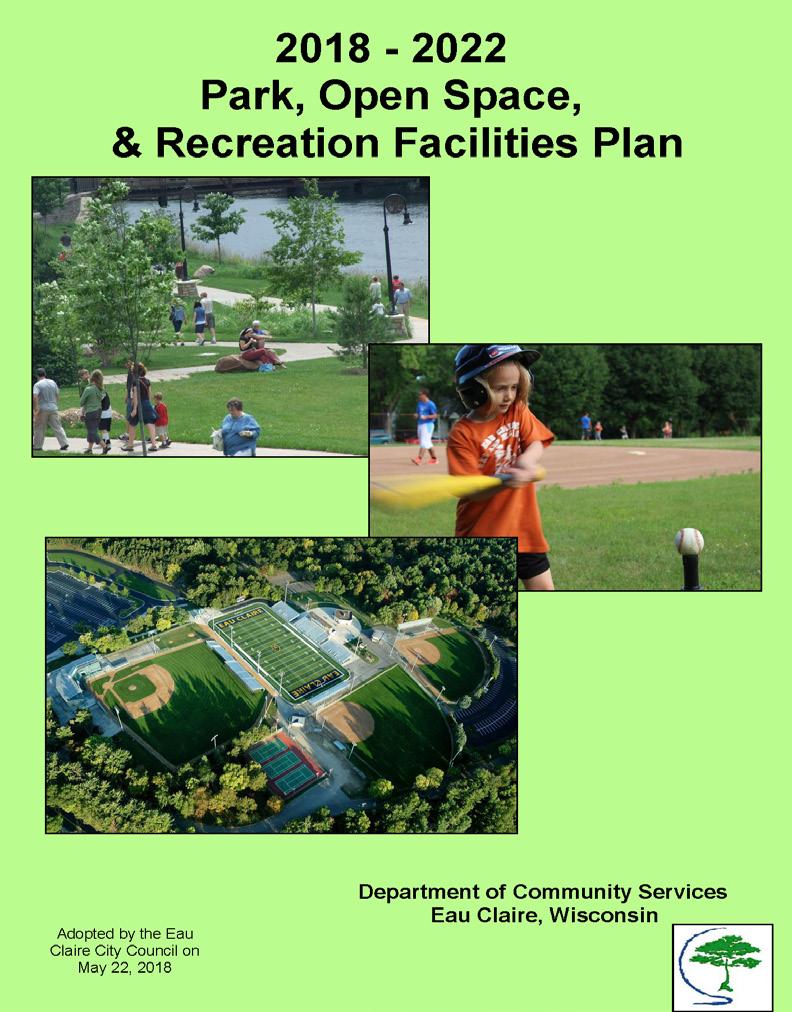
The 2018-2022 Park, Open Space and Recreation Facilities Plan served as a guide for short-term improvements to Eau Claire’s park system, ensuring that recreational facilities met the evolving needs of the community. The plan prioritized equitable access to parks and open spaces, conservation of natural resources, and financial sustainability in park development and maintenance. It emphasized strategic land acquisition, community engagement, and sustainable management practices to enhance Eau Claire’s outdoor spaces.
Key goals of the plan included accommodating the diverse recreational needs of Eau Claire’s population, preserving significant natural resources, minimizing city-borne costs for park development, and expanding public access to waterways such as the Chippewa and Eau Claire Rivers. The plan also aimed to promote citizen involvement in recreation, encourage sustainable management of parkland, and expand park and open space acreage in response to city growth. Major recommendations focused on facility upgrades, such as improved lighting, trail expansion, pavilion renovations, and playground replacements, as well as the implementation of the Cannery Park Master Plan and the addition of amenities like splash pads and kayak launches. Many of these recommendations have been successfully implemented, as documented in Appendix C of the 2018 plan. The Eau Claire Comprehensive Outdoor Recreation Plan (CORP) builds upon these initiatives, ensuring continued investment in high-quality, accessible parks and recreational opportunities.
Adopted in 2015, the Eau Claire Comprehensive Plan provides a long-term framework for public investment and policy decisions, guiding the city’s growth through 2030. The plan addresses key areas such as transportation, housing, economic development, and outdoor recreation, ensuring that infrastructure and amenities evolve alongside community needs. Within this broader vision, parks, greenways, and trails play a central role in shaping Eau Claire’s identity and livability.
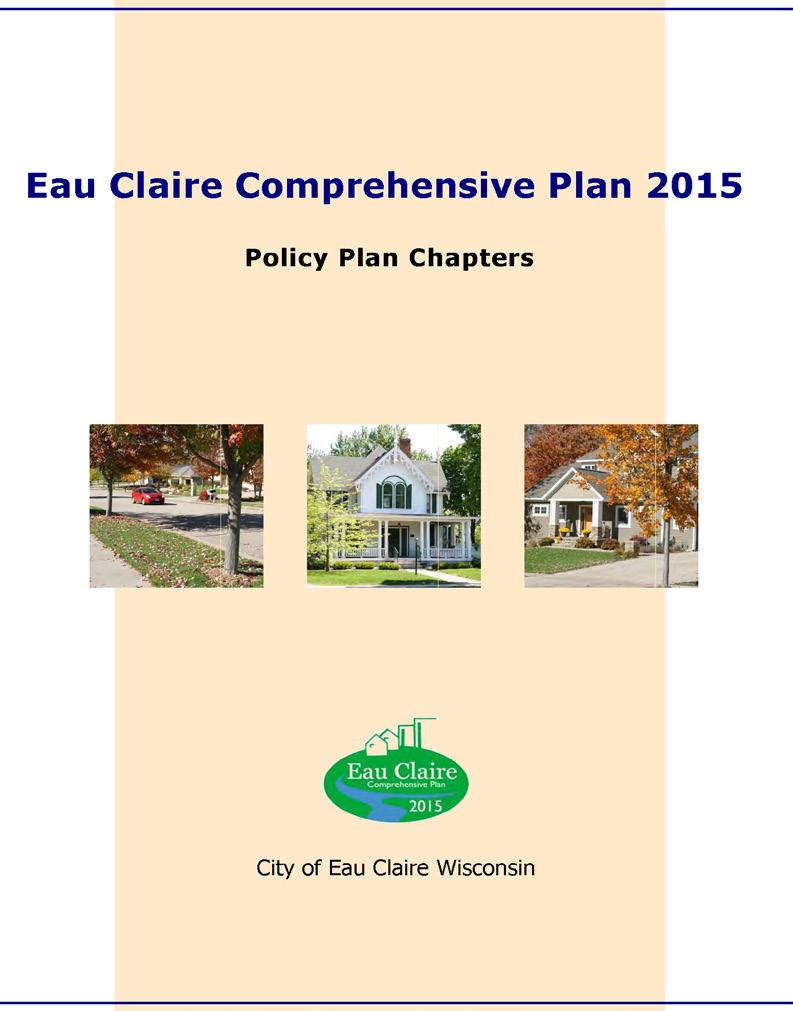
The plan outlines goals for park and recreation planning, emphasizing the development of new parks to meet outdoor recreation demands, preserve environmentally sensitive areas, and enhance urban design. It promotes the improvement of existing parks and trails, expanded riverfront access, and stronger pedestrian and bicycle connections. Recommendations include building additional walking and biking paths along the riverfront, ensuring neighborhood-level recreation access, increasing public participation in park programming, and incorporating sustainable land stewardship practices. These priorities align with the Eau Claire CORP, reinforcing the importance of a well-connected, sustainable park system that supports both recreational needs and environmental conservation.
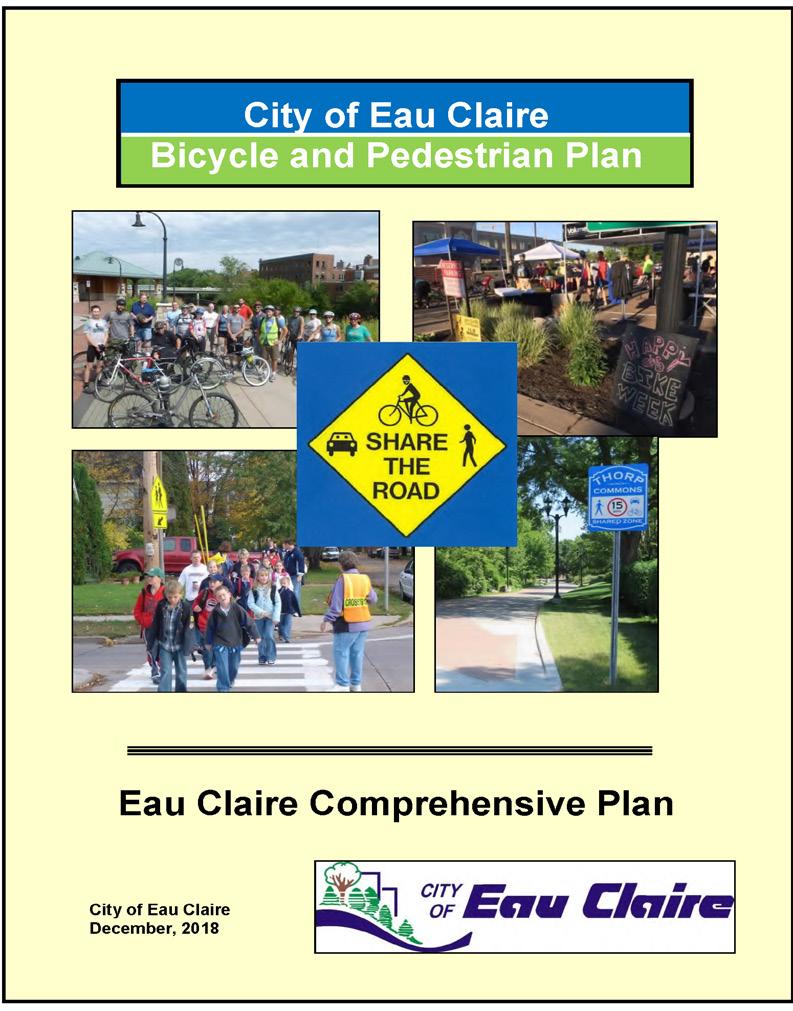
The 2018 Bicycle and Pedestrian Plan updates the city’s strategy for expanding and improving nonmotorized transportation, building upon the previous plan from 2010. It provides an assessment of current biking and walking conditions, identifies existing barriers, and offers targeted recommendations to enhance accessibility and safety. The plan recognizes that a well-connected bicycle and pedestrian network is essential for recreation, transportation, and public health.
Key recommendations include the development of new trails, the creation of designated bike routes to connect neighborhoods and destinations, and the removal of pedestrian barriers such as curbs and narrow sidewalks. Infrastructure improvements, such as installing pedestrian-activated signals and incorporating innovative design elements like bike boxes and traffic-calming measures, aim to improve safety for cyclists and walkers. The Eau Claire CORP integrates these recommendations by ensuring that park and trail planning supports the city’s larger goal of fostering a pedestrian- and bike-friendly environment.
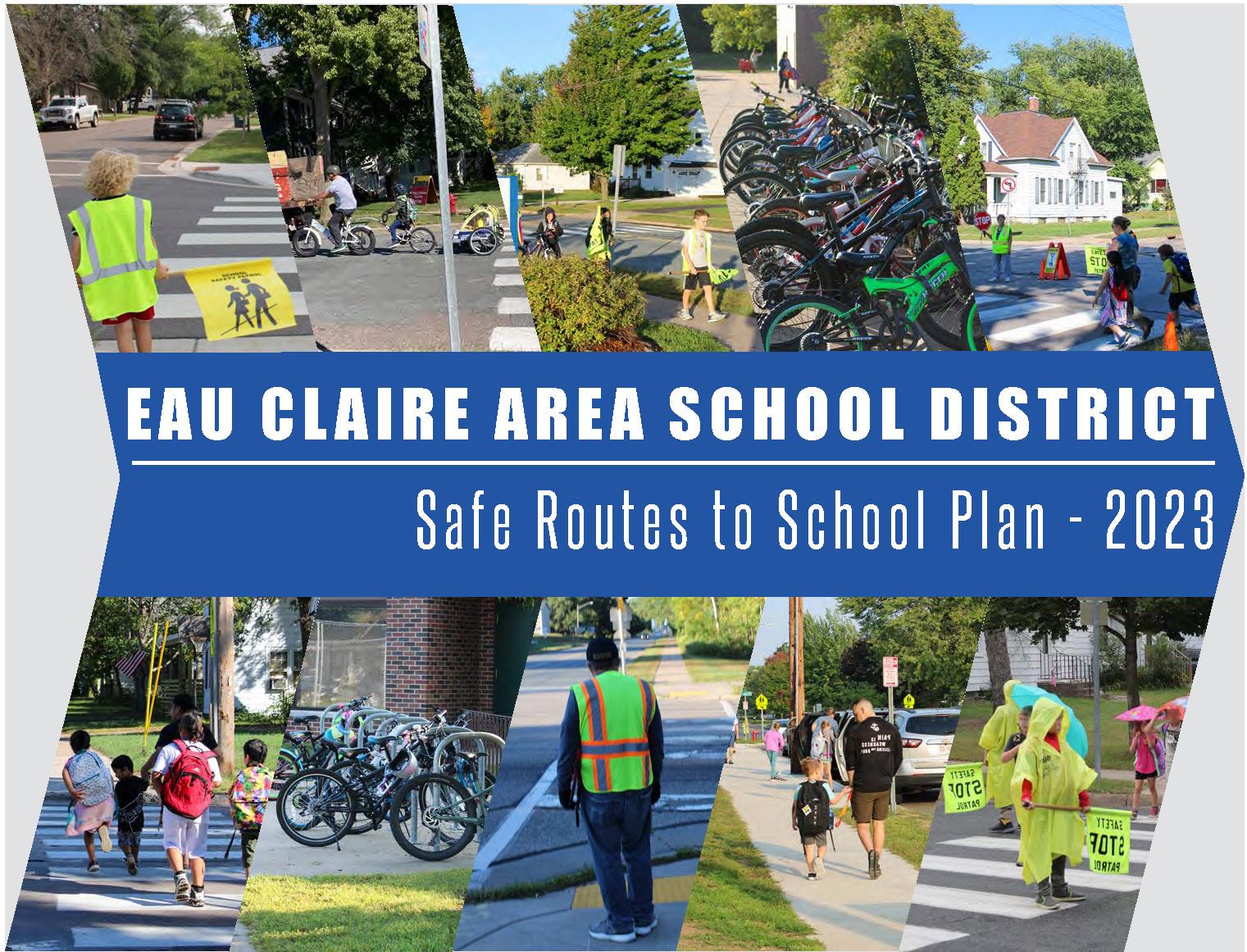
The Eau Claire Safe Routes to School Plan focuses on creating safer conditions for students walking and biking to school. Through site audits, neighborhood assessments, surveys, and crash data analysis, the plan identifies key issues and proposes solutions to improve the safety and accessibility of school routes. By reducing barriers to walking and biking, the plan encourages active transportation and promotes a healthier, more connected community.
Citywide recommendations include the installation of enhanced crosswalk treatments, stricter enforcement of parking and drop-off areas near schools, and reduced speed limits in school zones. The plan also calls for maintaining and expanding the placement of adult crossing guards, distributing annual safe route maps, and ensuring future development projects align with pedestrian and bicycle policies. These recommendations complement the Eau Claire CORP by reinforcing the city’s commitment to safe, accessible recreation and transportation networks for residents of all ages.
The City of Eau Claire features a variety of unique physical characteristics, including the Chippewa and Eau Claire rivers and a blend of urban developed land and natural spaces. Demographically, the City has been growing steadily over the past 50 years, with population trends directly correlating to the need for parks and recreational space.
The following section gives background information on some of the physical characteristics of Eau Claire. This section can be useful in giving an overall impression of the area, determining suitability for certain improvements and identifying areas that should be conserved due to their unique natural features.
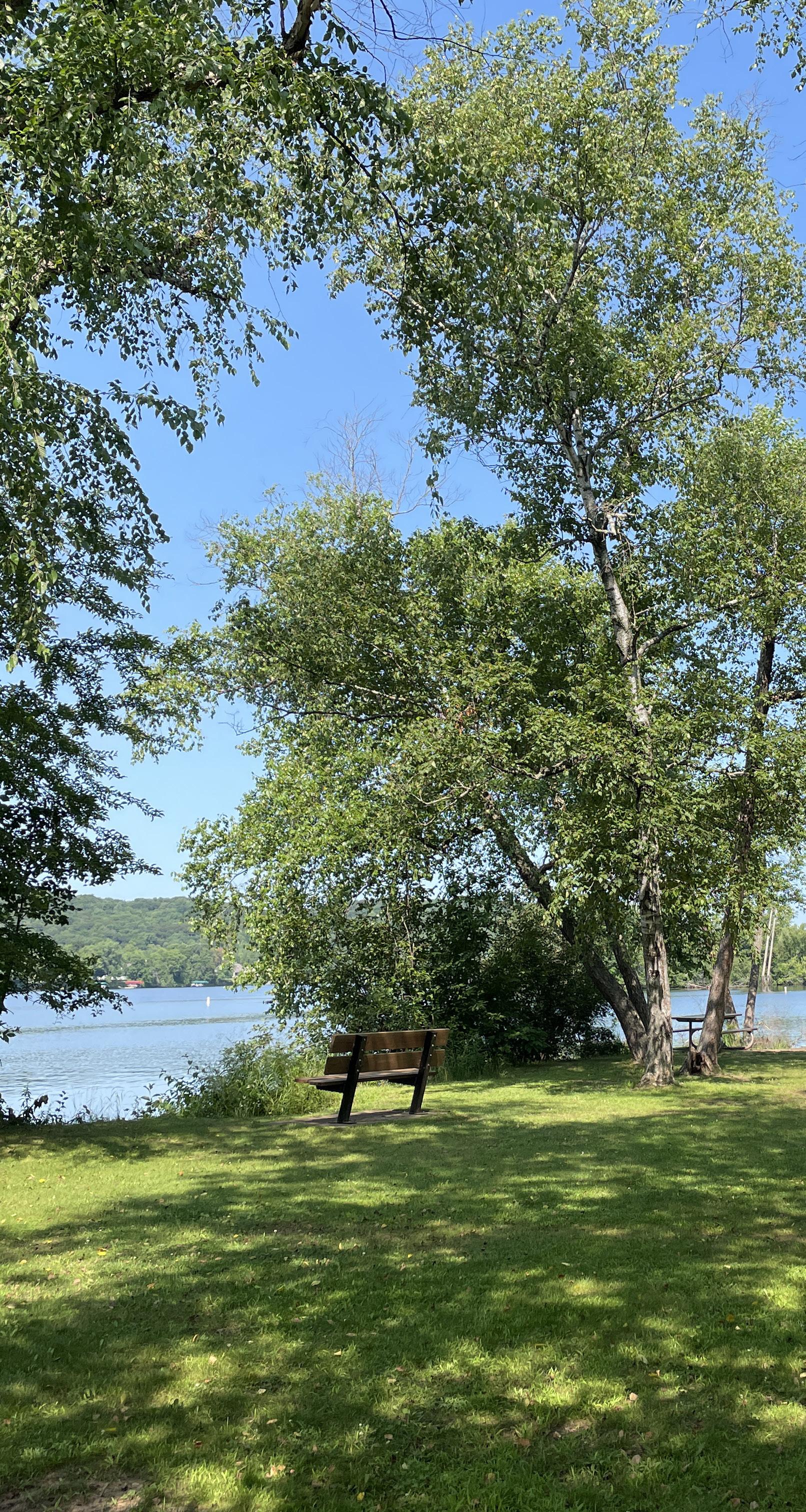
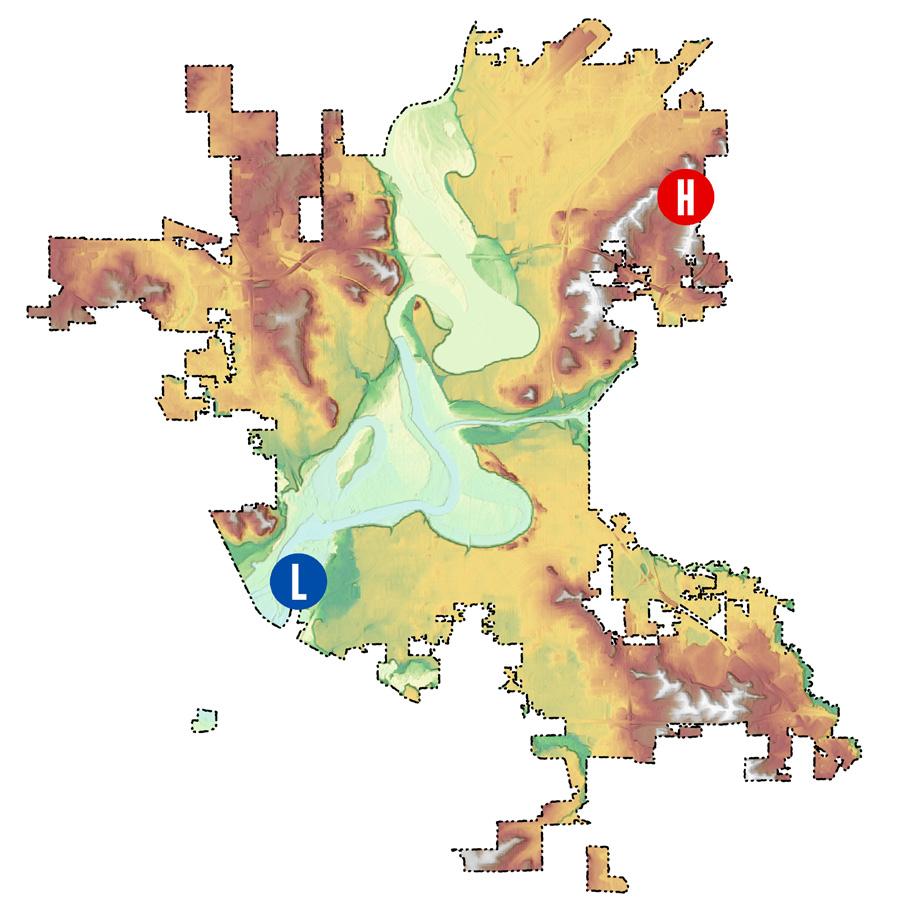
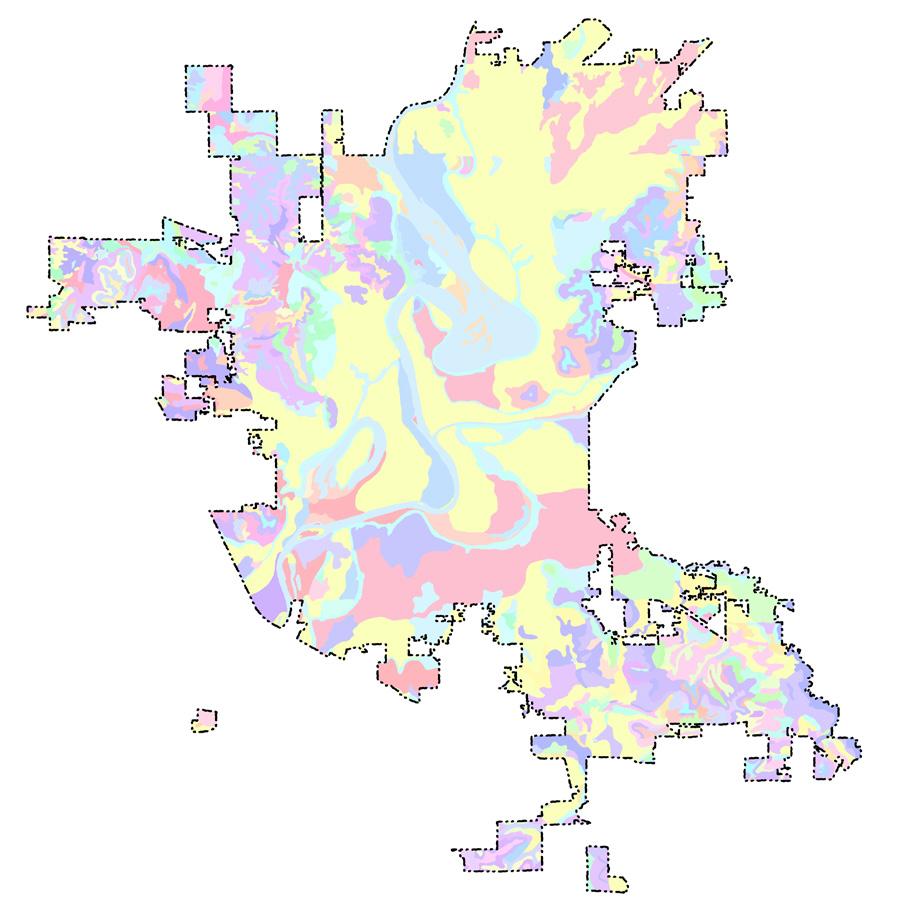
This map shows a color-coded elevation model of Eau Claire ranging from lower elevations in blue to the highest elevations in white.
The lowest elevation in the City is 757 feet above sea level on the City’s south side near the Chippewa River. The high elevation of 1,116 feet above sea level is found on the northeast side of the City near Pinehurst Park.
The most common soil type found in Eau Claire is Plainfield loamy sand, river valley, 1 to 6 percent slopes. This soil type is found on over 5,450 acres in the City, followed by Plainfield loamy sand, river valley, 0 to 3 percent slopes on 1,514 acres and Menahga loamy sand, 0 to 6 percent slopes found on approximately 1,433 acres. There are approximately 125 unique soil types within the City of Eau Claire.
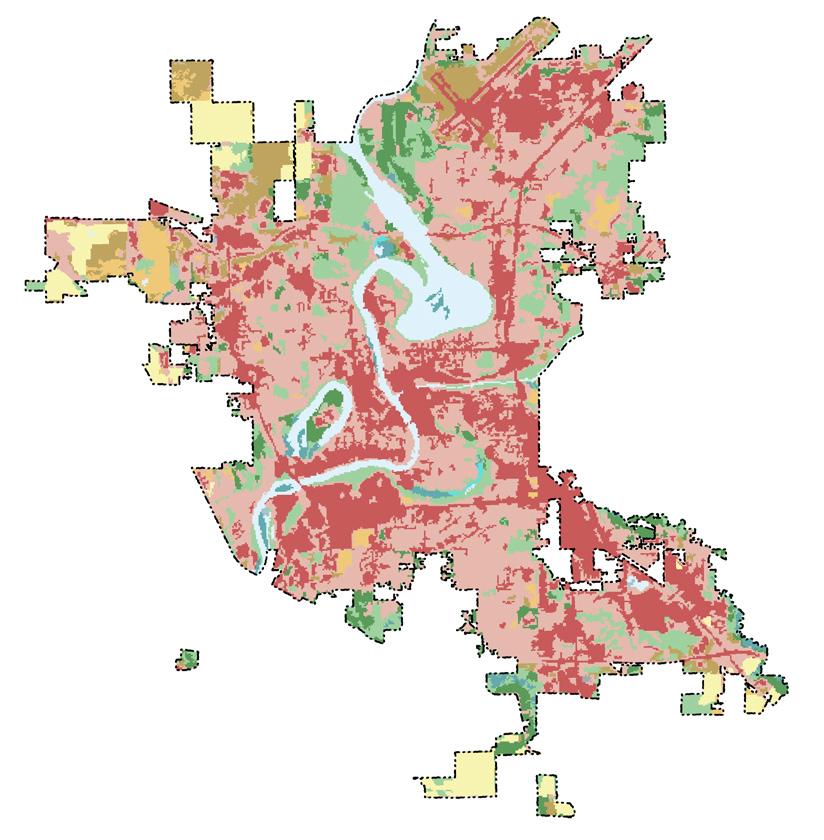
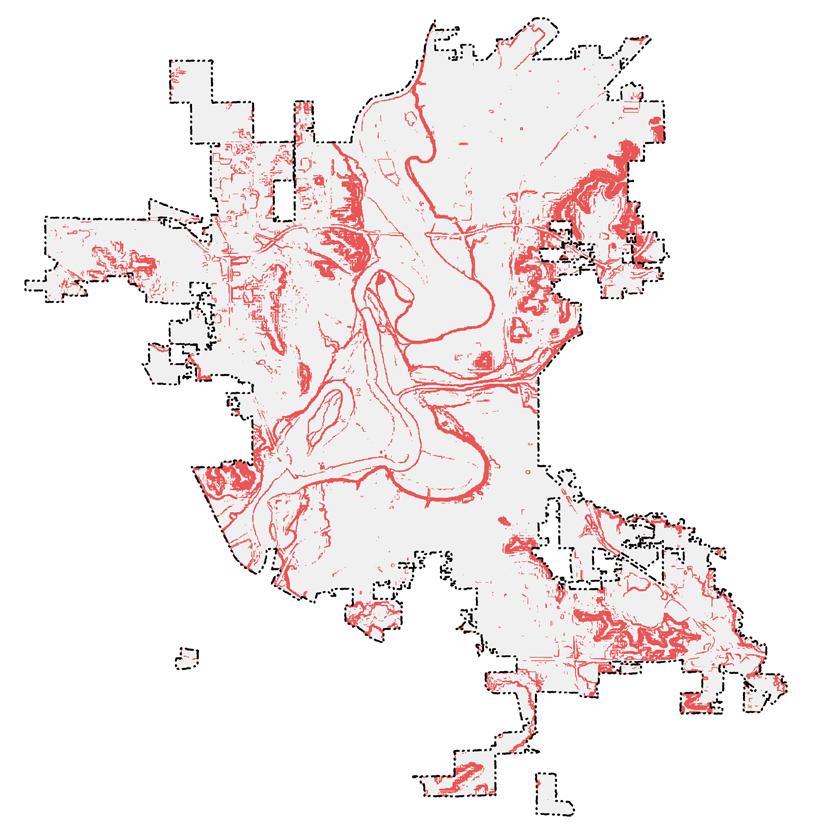
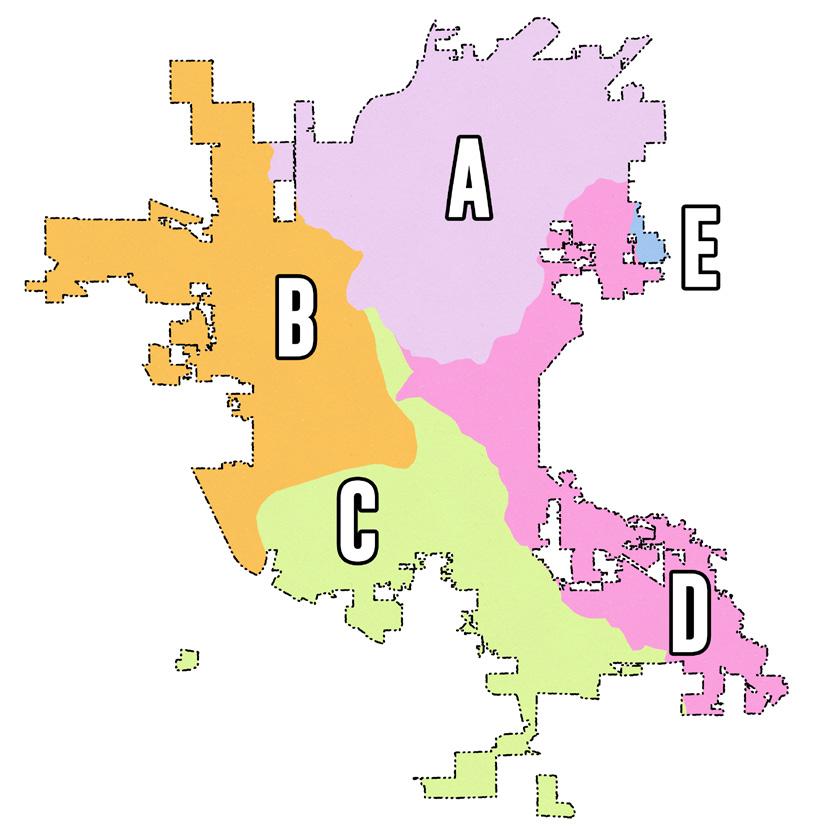
Approximately 64% of Eau Claire is classified as an “Urban/Developed” (represented by the reddish hues on the adjacent map), making it the most common land cover type in the City. “Forest” is the next most common land cover type at 16% coverage, followed by “Grassland” at 7% and “Open Water” at 6%.
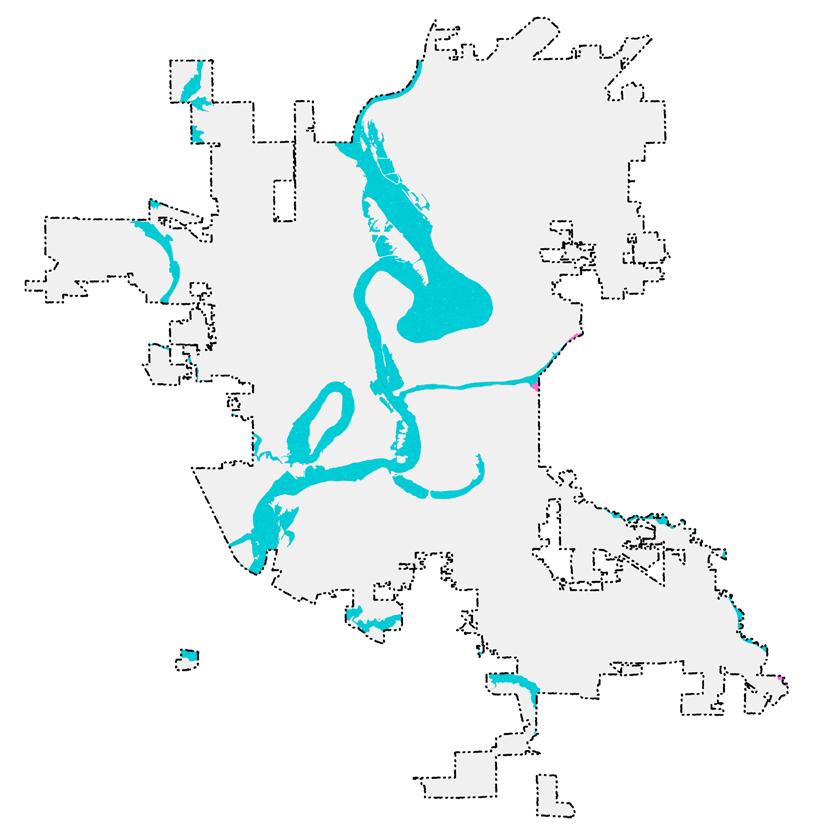
Red areas on the adjacent map represent areas with slopes greater than or equal to 12%. These areas represent approximately 3,300 acres or 14% of the City of Eau Claire.
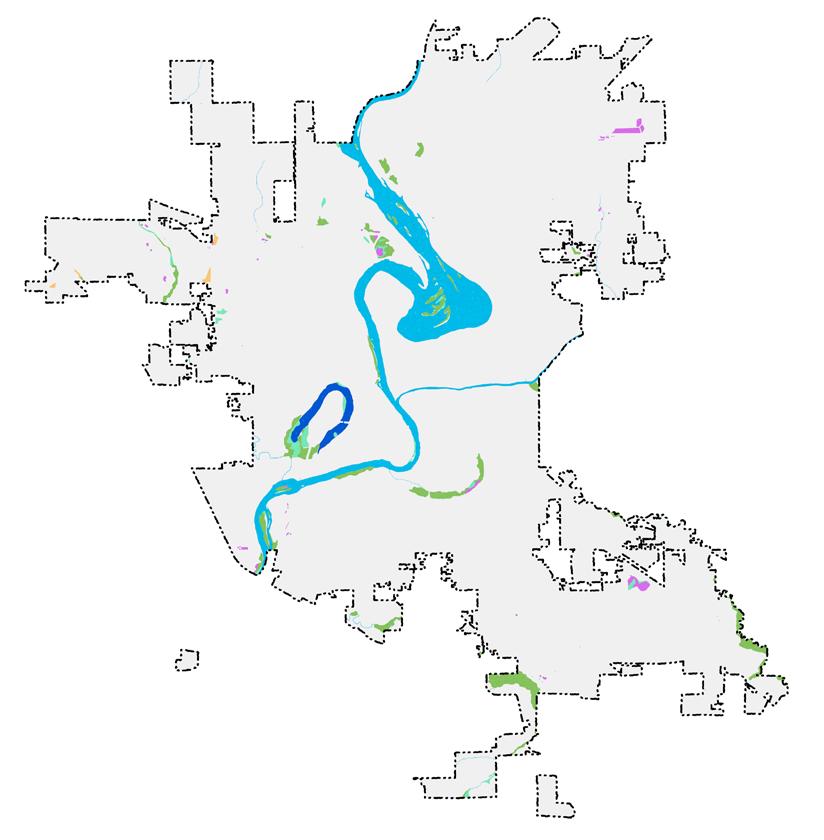
There are 2,530 acres within the City designated by FEMA as high risk flood zones as shown on the adjacent map. These are primarily areas surrounding the Chippewa and Eau Claire Rivers.
The areas shown as blue on the map are AE flood zones which represent the base floodplain. The pink areas, which can be found along the eastern City limits, are A flood zones with a 1% chance of annual flooding.
Wetlands as designated by the National Wetland Inventory are shown on the adjacent map. Wetland types are as shown below:
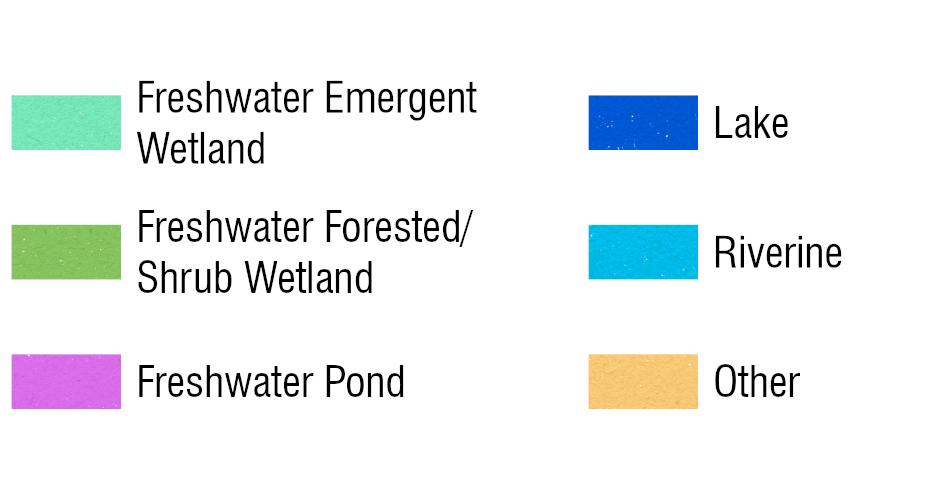
There are five watersheds within the City of Eau Claire. They include the Duncan Creek Watershed (A), which covers approximately 30% of the City. Other watersheds include the Muddy and Elk Creeks (B), Lowes and Rock Creeks (C), Otter Creek (D) and Lower Eau Claire River (E).
The City of Eau Claire features a diverse mix of land uses that shape its urban fabric and recreational opportunities. Predominantly, single-family residential neighborhoods make up a significant portion of the city, providing stable, wellestablished communities with access to local parks and green spaces. Mixed-use developments are increasingly present, particularly in areas near downtown and along key corridors, promoting walkability and a blend of residential, retail, and
office spaces. High-density multifamily housing continues to expand in strategic locations, supporting population growth and offering diverse living options close to employment centers and transit routes. Retail and commercial districts are concentrated along major roadways, such as Clairemont Avenue and Hastings Way, with downtown Eau Claire serving as a vibrant hub for businesses, restaurants, and cultural destinations.
Eau Claire is also home to significant institutional land uses, including the University of Wisconsin–Eau Claire, which plays a central role in the city’s economy, culture, and public space planning. Industrial areas remain an important component of the city’s land use, primarily located in business parks and near transportation infrastructure. As Eau Claire continues to grow, proposed land use changes emphasize infill development, enhanced connectivity between neighborhoods, and an expanded parks and open space network. These future land use considerations align with the city’s ongoing zoning code rewrite, which seeks to modernize regulations and guide development in a way that supports sustainability, accessibility, and recreational access.
The Eau Claire and Chippewa Valley region is rich in historical and archaeological resources that reflect the area’s deep cultural and industrial heritage. One of the region’s most significant historical resources is the Chippewa Valley Museum, which showcases exhibits on local history, including the region’s logging industry, Native American heritage, and early settlement patterns. The museum serves as an important resource for understanding the area’s past. The logging industry was central to the development of Eau Claire, which became known as the “City of Bridges” due to its strategic location on the Eau Claire and Chippewa Rivers. The city’s history is deeply tied to the lumber industry, with the rivers serving as crucial transportation routes for logs.
Dells Mill, located near Dells Pond, is a notable historical site that dates back to the 19th century and stands as a reminder of Eau Claire’s early industrial development. The mill, which was once used for grinding grain, is now a historical landmark. In addition to these resources, Banbury Place, a former industrial site, has been transformed into a hub for arts and business, preserving the history of Eau Claire’s manufacturing past while supporting modern-day creative endeavors. These sites, alongside the region’s riverways and historic architecture, underscore Eau Claire’s rich history and its continued connection to both its natural and industrial heritage.
The City of Eau Claire’s unique geography and topography contribute significantly to its environmental sensitivity areas, with a combination of rivers, hills, and valleys that create diverse habitats and ecologically rich landscapes. The Eau Claire and Chippewa Rivers provide essential riparian corridors, supporting water-based ecosystems critical for maintaining water quality and offering habitats for aquatic species like fish and waterfowl. These rivers’ floodplains and riparian zones play a key role in erosion control and maintaining biodiversity. Additionally, Half Moon Lake and other bodies of water in the Chippewa Valley, such as Dells Pond, are integral to the region’s natural infrastructure. These water bodies, along with their surrounding wetlands, contribute significantly to the habitat needs of various wildlife species, including birds, amphibians, and aquatic plants.
Eau Claire’s distinctive topography, including Plank Hill and other elevated areas, creates natural barriers for residential and commercial development due to their steep slopes and geographic challenges. These areas, while less suited for large-scale development, present an opportunity to protect significant ecological landscapes. The diverse habitats found in these highland areas support native flora and fauna, providing essential ecological services such as erosion control, carbon sequestration, and groundwater filtration. Large blocks of land such as Lowe’s Creek and Tower Ridge offer ecologically valuable forests, wetlands, and grasslands that contribute to the overall habitat diversity. The Wells Site, with its mixture of native habitats, further enhances this ecological network. As these sensitive areas are less prone to development, they represent critical regions that should be preserved and promoted for their biodiversity, erosion control, and overall ecological significance in the Chippewa Valley’s natural landscape. Protecting these areas will ensure that Eau Claire maintains a healthy balance between development and environmental conservation.
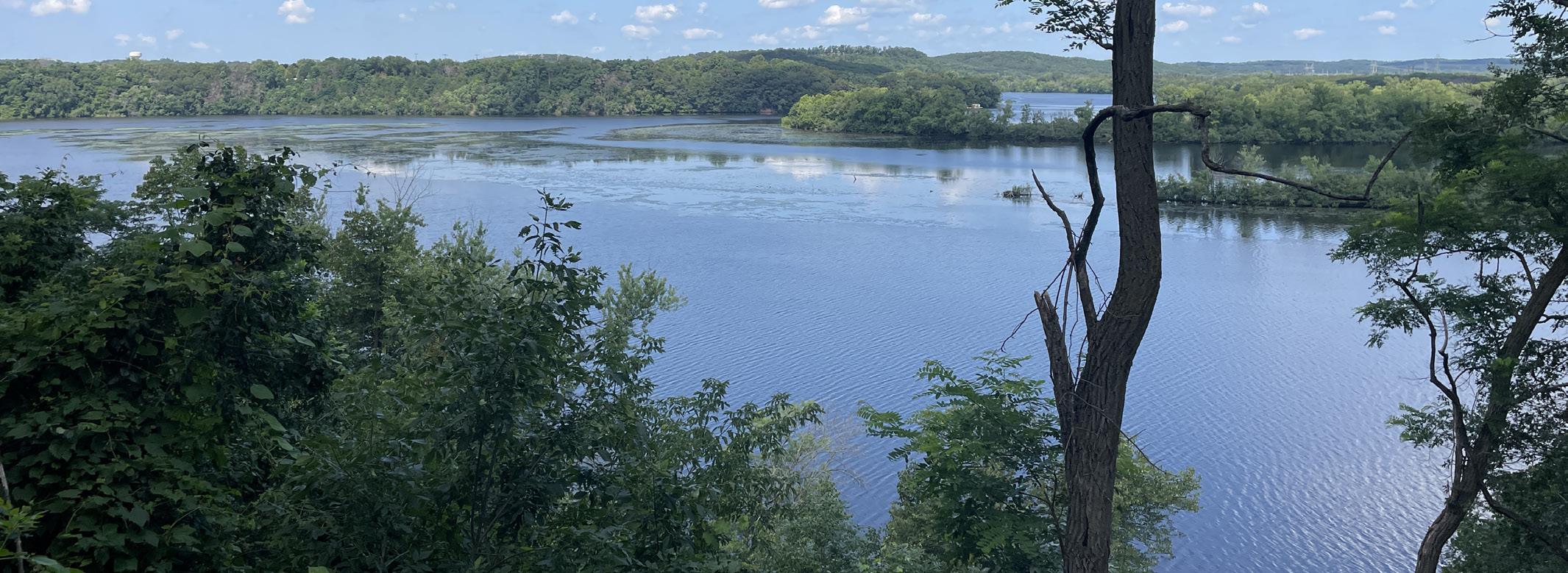
This section presents social factors that are important to understanding the community and its recreation needs. Particularly important to planning for the adequate provision of parks and open spaces are population trends/projections over the planning period (5-10 years) and the age characteristics of potential park users.
There is a direct relationship between population and the need for parks and recreational space. Predicting how the population might grow in the future provides important information about the amount of new parkland and recreational facilities that will be needed to serve the new populations.
The City of Eau Claire has had a stable increase in population over the last 50 years. Between 1970 and 2020, the population has increased by 24,802 people for a growth rate of 55.6%. The highest ten-year period of growth in that time frame was between the years of 1970 and 1980 when the population grew by 15.4%

The Wisconsin Department of Administration (DOA) projects that the City will experience growth in population over the next 20 years with a predicted population gain of 7%.

Source: Wisconsin Department of Administration Estimates and Projections
Population projection information for Eau Claire and comparable communities is provided in the table below. Current National Recreation and Park Association (NRPA) standards recommend a minimum of 10.5 acres of dedicated parkland per 1000 residents. Chapter 2 will discuss this standard as it applies to the current and future populations.
Source: Wisconsin Department of Administration Estimates and Projections
Age distribution in Eau Claire is shown in below. Age cohorts are an important consideration in park and recreation planning because different age groups utilize different recreational facilities. For example, in 2000 there were an estimated 3,379 residents between the ages of 65 and 74. That number had grown to 6,486 by 2022, a 92% increase in the population of that age group. The number of park facilities in the City designed for this age group should be reassessed as there are far more people in this group using park facilities than there were in 2000. Facilities such as hiking trails, boat launches, community gardens and pickleball courts are used by this age group and may be needed in higher quantities now than they had in the past.
Age Distribution (2000-2022)
Source: US Census Bureau
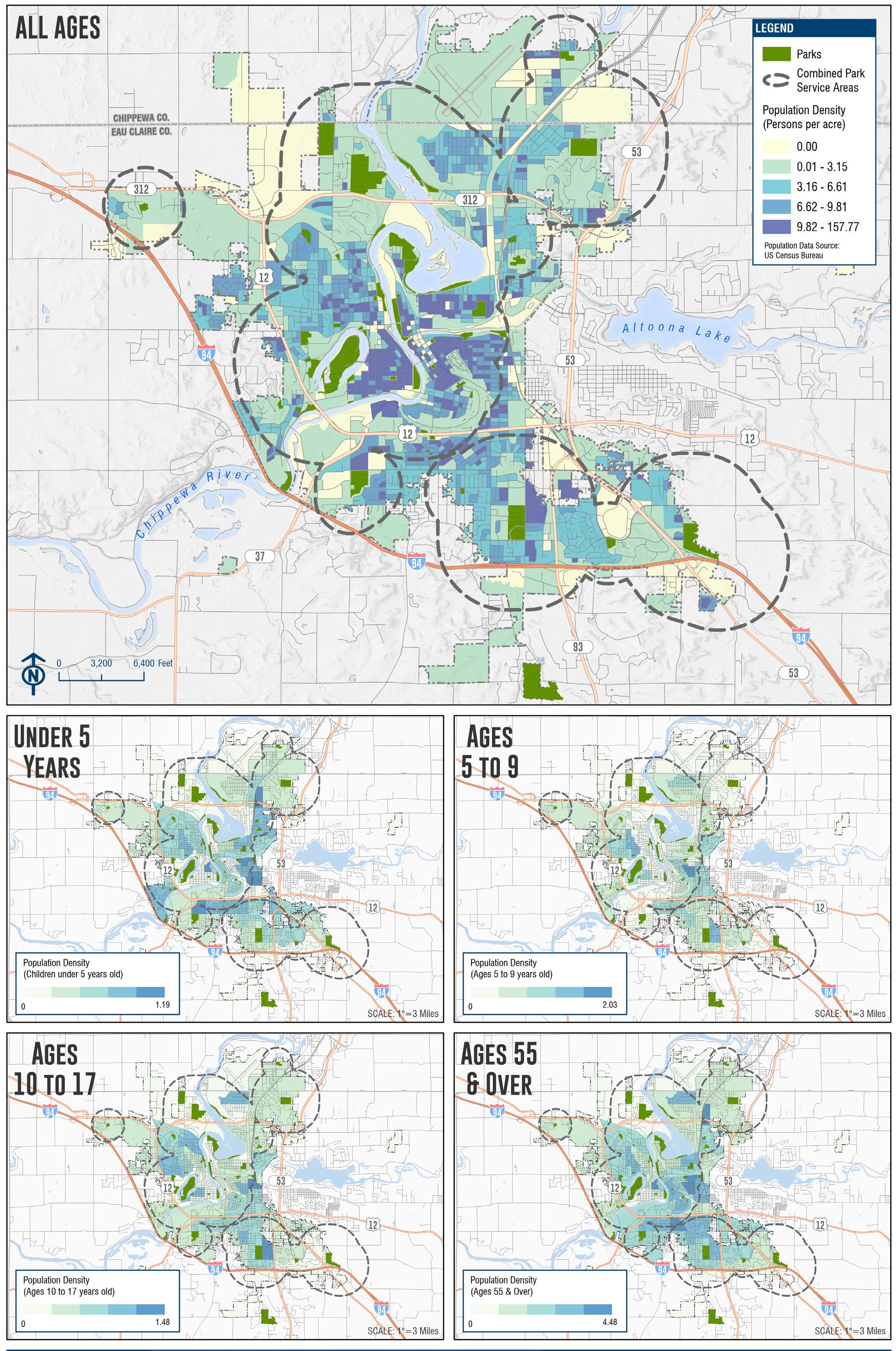
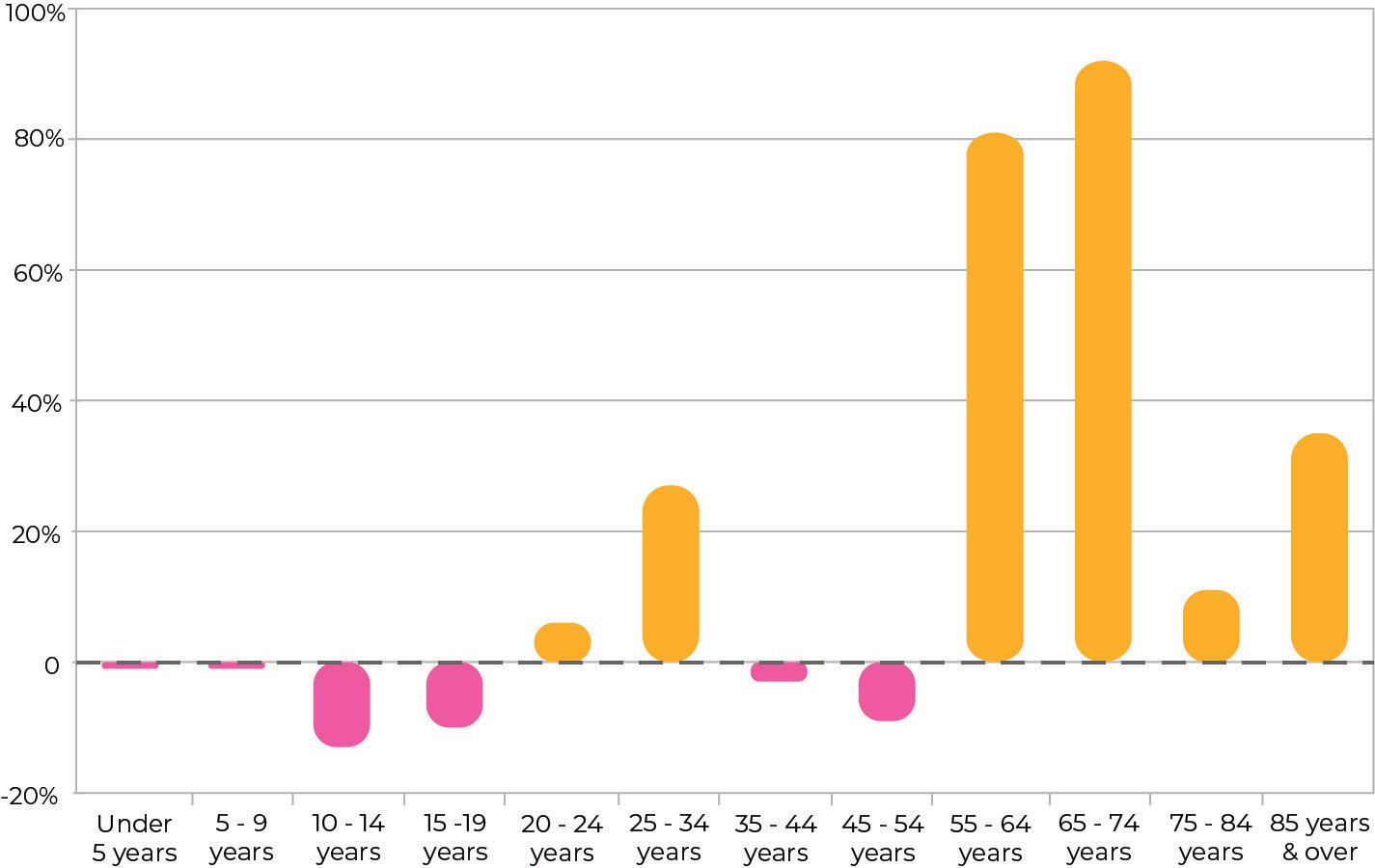
The 2022 American Community Survey 5-Year Estimates indicated the largest percentage of City residents (87.9%) were “White”. The second largest group was “Asian” (6.0%) followed by “Two or more races” (3.9%), “Black or African American” (1.4%), “Some other race” (0.4%) and “American Indian or Alaska Native” (0.5%).

The February 2024 Wisconsin Department of Workforce Development (LAUS) estimate of the unemployment rate in the City of Eau Claire was 2.7%. The statewide unemployment rate during the same time period was 3.3%.
According to the US Census Bureau, the City of Eau Claire falls below the statewide average for median household income. In 2023, the median household income was $65,369, while the statewide median was $75,670. The chart below explores the number of households that fall into each income bracket.
Household Income (2023 Inflation-Adjusted Dollars)
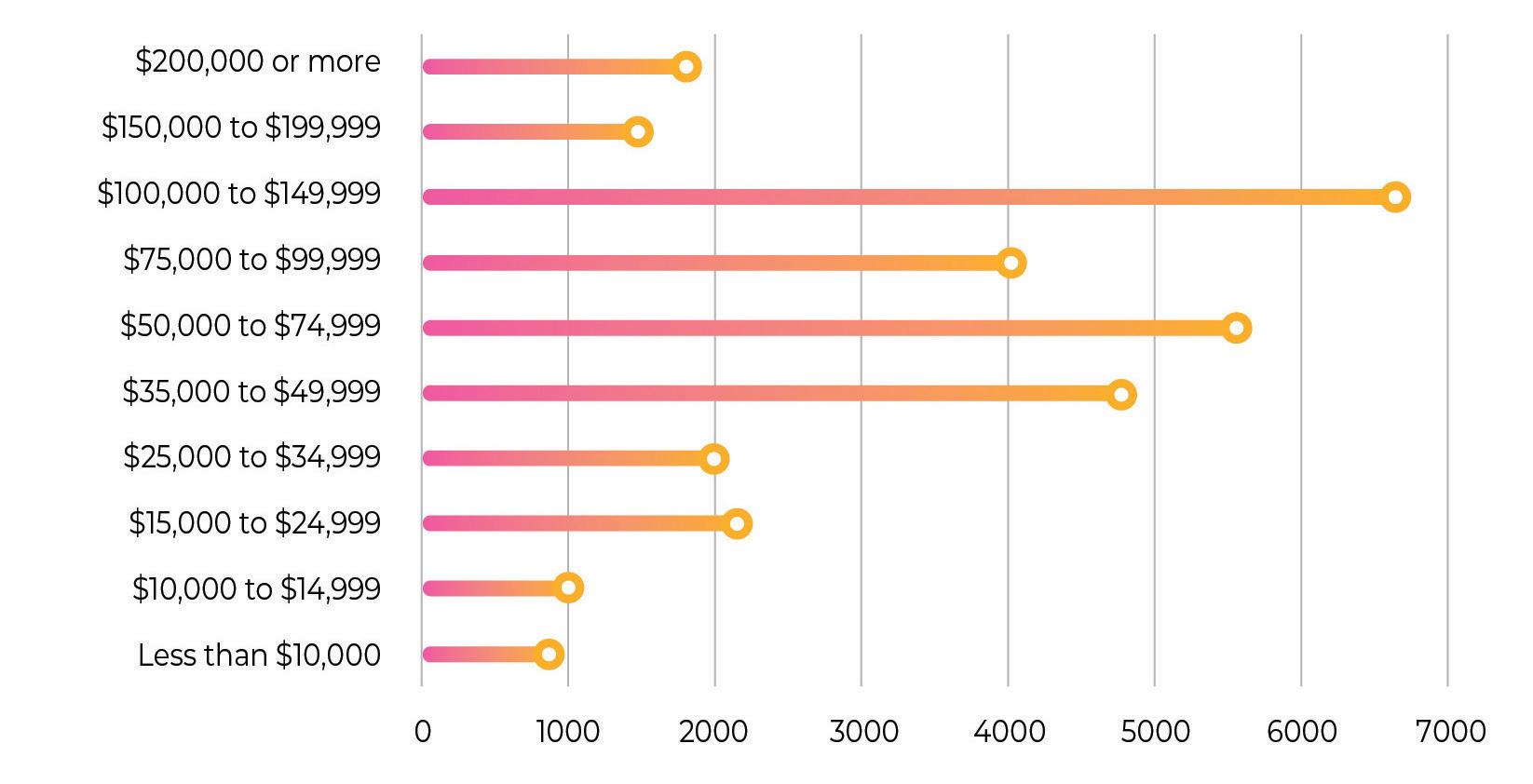
Source: US Census Bureau Selected Economic Characteristics
On average, the persons per household in the City of Eau Claire are 2.25. This is close to the statewide average of 2.35 (US Census Bureau).
The City of Eau Claire boasts a diverse and dynamic park and open space system that reflects the community’s values of recreation, environmental stewardship, and connectivity. Oversight of these parks is provided by the City’s Parks and Recreation Committees, which work in an advisory role to the City Council to preserve and enhance these community assets. Detailed profiles of each facility, along with recommendations for improvement, are provided later in this plan.
In order to better organize and analyze the City’s varied assets, parks and recreational facilities are categorized based on their size, function, and intended use as defined by the National Parks and Recreation Association. The key categories include:
• Mini Parks: The Neighborhood’s Hidden Gems
Mini-parks are the pocket-sized retreats woven into the fabric of dense urban areas and residential communities, offering a breath of fresh air just steps from home. Designed primarily for young children, seniors, and those seeking a quiet escape, these parks typically range from 2,500 square feet to 1 acre, serving residents within a ¼-mile radius. Whether it’s a shaded bench, a small play structure, or a community garden, mini-parks fill in the gaps where larger parks can’t, creating essential green spaces in the heart of neighborhoods.
• Neighborhood Park: The Everyday Escape
A staple of community life, neighborhood parks are where families gather, kids play, and neighbors connect. Spanning 5 to 10 acres and catering to residents within a ½-mile radius, these parks balance active and passive recreation, featuring playgrounds, open fields, picnic shelters, and multi-use pathways. Designed for walkable access, neighborhood parks are the heartbeat of suburban and urban life, providing spaces where daily routines meet outdoor adventure.
• Community Park: The Centerpiece of Recreation
Community parks are the go-to destinations for large gatherings, sports leagues, and diverse recreation experiences. Typically 20 to 50 acres in size, they serve multiple neighborhoods within a 2-mile radius and offer a variety of amenities, from athletic fields and swimming pools to performance spaces and nature trails. More than just recreation hubs, community parks are where weekend tournaments, family reunions, and summer festivals become lifelong memories.
• Linear Parks: The Threads That Connect Communities
Linear parks are the lifelines of a park system, transforming green corridors, riverfronts, and abandoned railways into vibrant public spaces. Stretching across cities and regions, these
parks prioritize connectivity, linking neighborhoods to schools, commercial centers, and natural areas through extensive trail networks. Designed for walking, biking, and passive recreation, they redefine how people move through and experience their environment, proving that parks aren’t just places—they’re pathways.
• Special Use Parks: One-of-a-Kind Destinations
Special use parks are where communities turn bold ideas into reality, offering unique recreation experiences tailored to local needs. Whether it’s an amphitheater, historic site, botanical garden, or sports complex, these parks defy traditional classifications. With size and service areas varying by use, they fill specific gaps in the park system, drawing visitors for specialized activities. More than just parks, they become landmarks—places that define a community’s identity and culture.
• Conservancies: Protecting Nature, Preserving Legacy
Conservancies are the guardians of natural heritage, preserving ecologically sensitive areas for future generations. Encompassing wetlands, forests, prairies, and watersheds, these lands prioritize conservation, wildlife habitat, and passive recreation over active use. With no fixed size requirements, they vary based on environmental significance, often spanning hundreds to thousands of acres. By offering nature trails, birdwatching areas, and environmental education, conservancies ensure that wild, untouched landscapes remain a vital part of the urban fabric.
In addition to these park categories, the concept of open space is fundamental to Eau Claire’s outdoor recreation system. Open spaces such as those located along Wilson Drive, Cedar Street, and Vestreheim Street are areas primarily preserved for their natural qualities. They provide opportunities for passive recreation, environmental education, and play a critical role in stormwater management, erosion control, and habitat preservation.
The City of Eau Claire’s comprehensive outdoor recreation network is enhanced by a variety of nearby facilities that support and extend the park system reach. A key component of this network is the Eau Claire School District, whose 20 schools are outfitted with outdoor amenities such as playgrounds, athletic fields, ice rinks, and courts. Many of these school facilities are accessible to the public, providing additional venues for recreation and community gatherings. Their proximity to residential areas ensures that local families and community members have ready access to safe and well-maintained recreational spaces, thereby reinforcing the overall connectivity of the park system.
In addition to the school facilities, several neighboring recreational areas play a significant role in supporting the outer perimeter residential neighborhoods. For example, Oakland County-owned portions of Lake Altoona County Park, along with areas like Tower Ridge and Lowes Creek, offer valuable water-based and outdoor recreational opportunities. These facilities, along with nearby parks in Altoona and Lake Hallie, help fill gaps where local park facilities may be limited. Together, these diverse assets not only broaden the scope of available recreation but also strengthen community ties by ensuring that a wide range of outdoor amenities is accessible throughout the region.
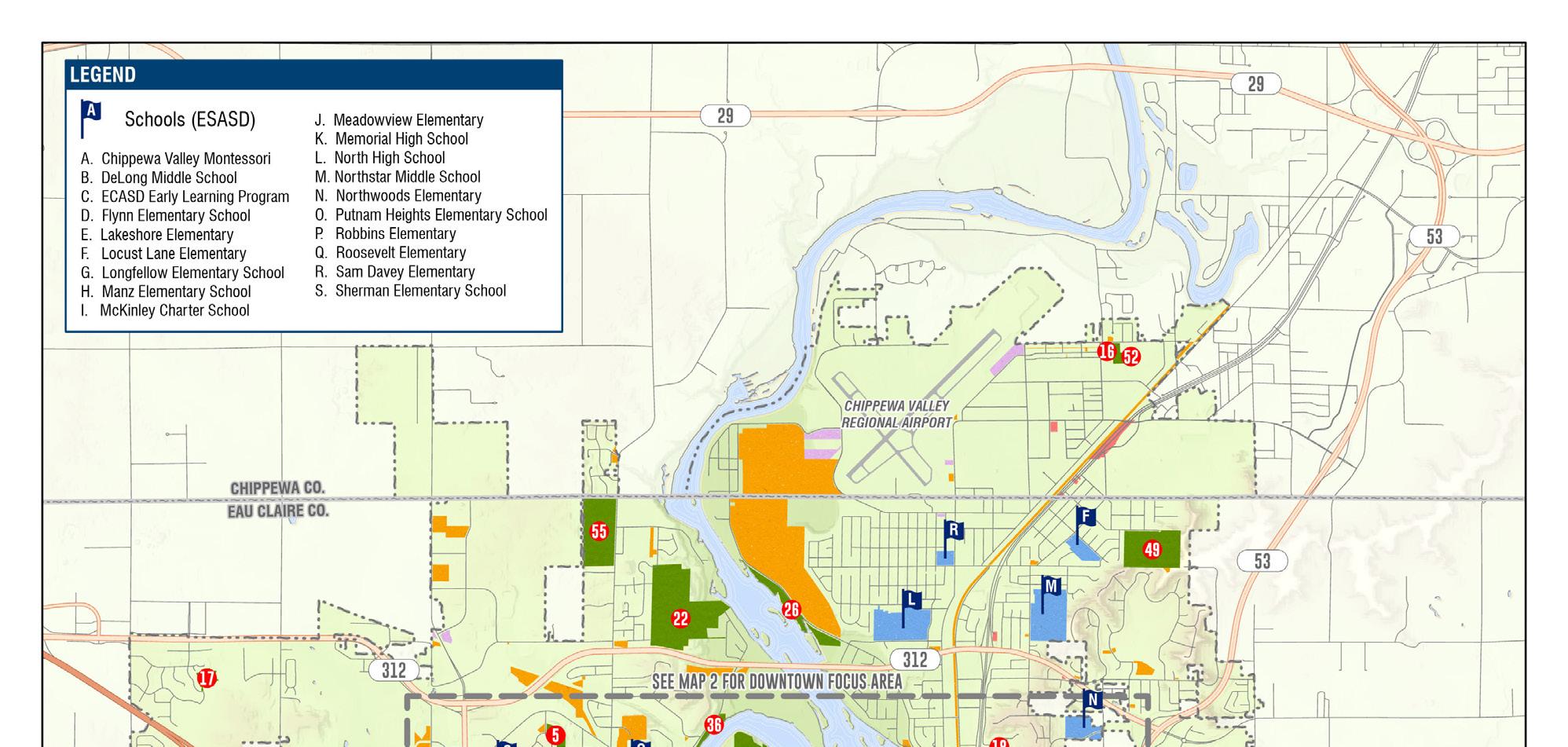
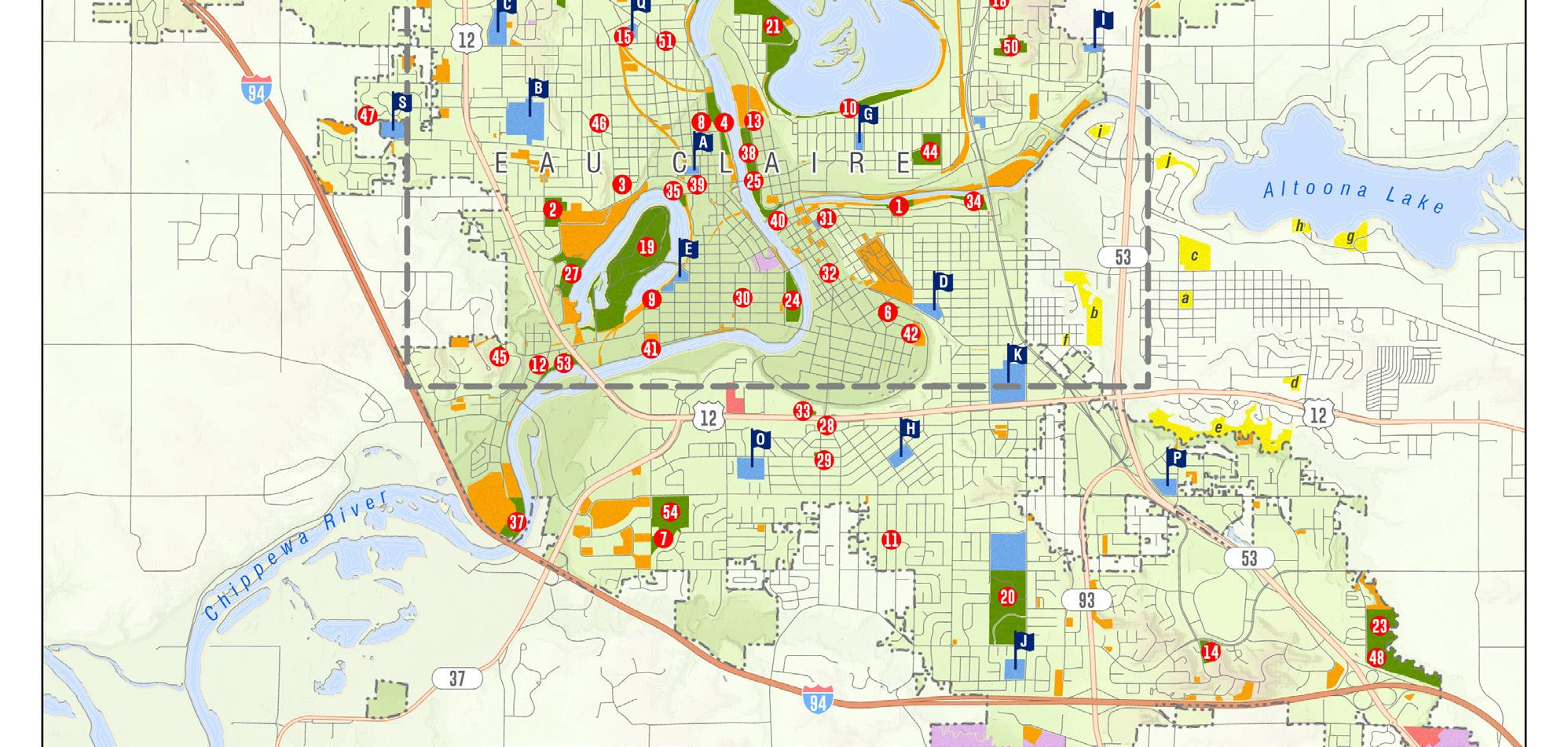
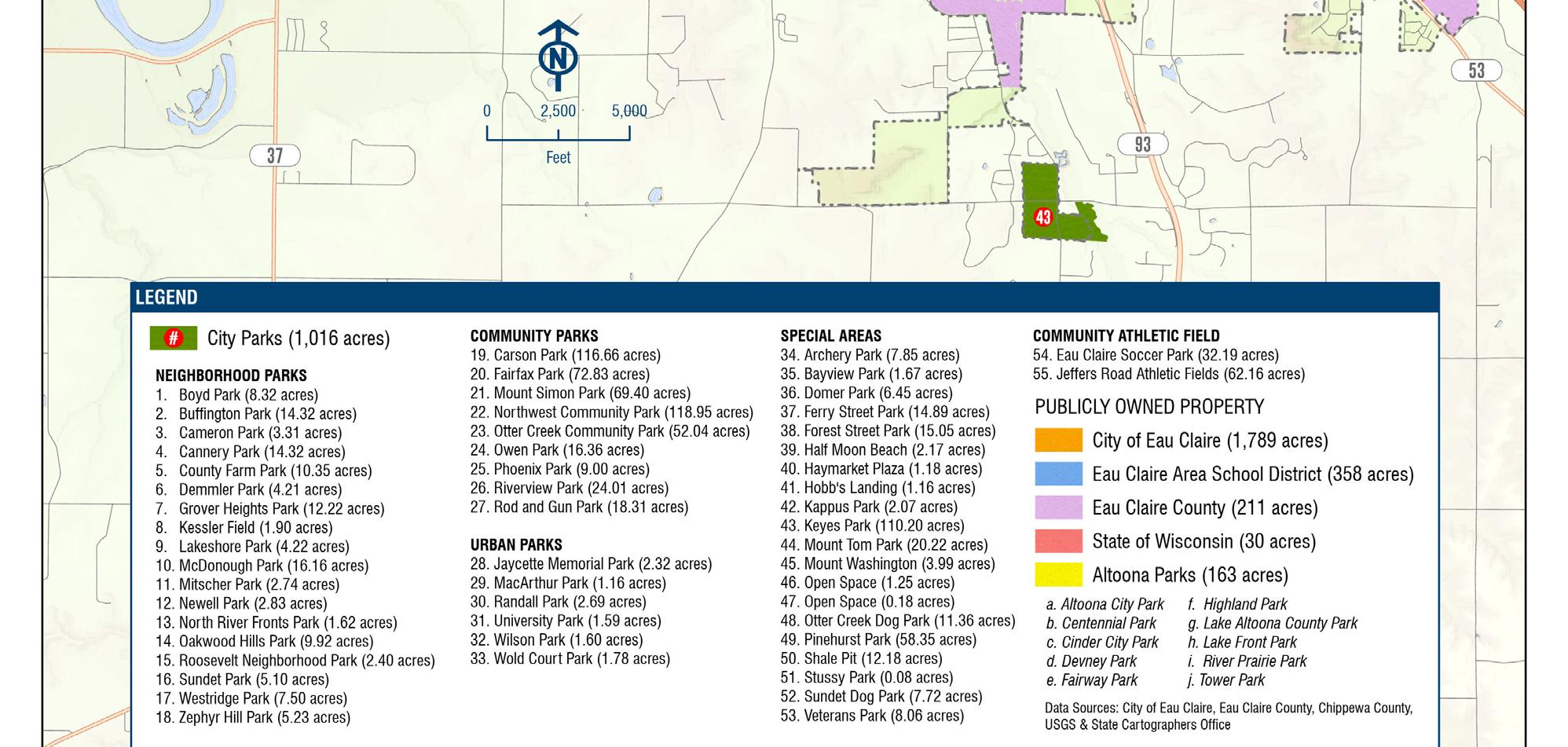
In addition to City of Eau Claire parks and recreational facilities, the Eau Claire Area School District has 20 schools with outdoor recreational amenities as outlined below. If interested in seeing the quarter-mile walkability to a school district school or city facility, please view the City of Eau Claire Walkability Map on page 35:
Early Learning
Prairie Ridge Early Learning School
• Play equipment
Chippewa Valley Montessori
• Play equipment
• Youth soccer field
Flynn Elementary School
• Play equipment
• Soccer fields
• Softball/youth baseball field
• Basketball courts
Lakeshore Elementary
• Play equipment
• Soccer field
Locust Lane Elementary
• Play equipment
• Basketball courts
• Soccer fields
• Asphalt play area
Longfellow Elementary School
• Play equipment
• Basketball court
• Asphalt play area
• Soccer fields
Manz Elementary School
• Play equipment
• Soccer fields
• Park Shelter
• Asphalt play area
• Basketball courts
Although not maintained by the City, school facilities offer community residents with additional outdoor recreation opportunities. This plan will not offer recommendations for improvements in these school parks, but they should be considered when analyzing facilities available to the community.
Meadowview Elementary
• Play equipment
• Asphalt play area
• Soccer fields
• Open space
Northwoods Elementary
• Play equipment
• Basketball courts
• Soccer fields
• Asphalt play area
• Sprint track
• Open space
Putnam Heights Elementary
• Play equipment
• Basketball courts
• Soccer fields
• Park Shelter / Warming House
• Ice skating & hockey rink
Meadowview Elementary
• Play equipment
• Asphalt play area
• Soccer fields
• Open space
Robbins Elementary
• Play equipment
• Basketball courts
• Asphalt play area
• Soccer fields
• Open space
Roosevelt Elementary
• Play equipment
• Basketball courts
• Asphalt play area
• Softball/youth baseball field
• Soccer fields
• Park shelter / warming House
• Ice skating & hockey rink
Sam Davey Elementary
• Play equipment
• Basketball courts
• Soccer fields
• Sandlot backstop
• Asphalt play area
Sherman Elementary School
• Play equipment
• Basketball courts
• Soccer fields
• Asphalt play area
DeLong Middle School
• Tennis courts
• Track
• Football field
• Soccer fields
• Softball/youth baseball fields
Memorial High School
• Tennis courts
• Track
• Football fields
• Soccer fields
• Baseball field
• Softball fields
McKinley Charter School
• 1/2 basketball courts
Northstar Middle School
• Tennis courts
• Softball/youth baseball fields
• Track
• Football field
• Soccer fields
• Multi-use path
North High School
• Tennis courts
• Track
• Football field
• Soccer fields
• Baseball field
• Baseball practice field
• Softball fields
South Middle School
• Tennis courts
• Track
• Football field
• Soccer fields
Eau Claire’s park system is generally accessible across multiple levels, including physical access, regional and public transportation connections, and compliance with the Americans with Disabilities Act (ADA). While there are gaps in accessibility such as missing sidewalk connections, non-compliant facilities, and wayfinding challenges the city has made substantial efforts to ensure that parks and recreational spaces are inclusive for all residents. Improvements in accessibility remain a priority, particularly in raising awareness about the park system and making it easier for users to locate amenities and navigate spaces effectively.
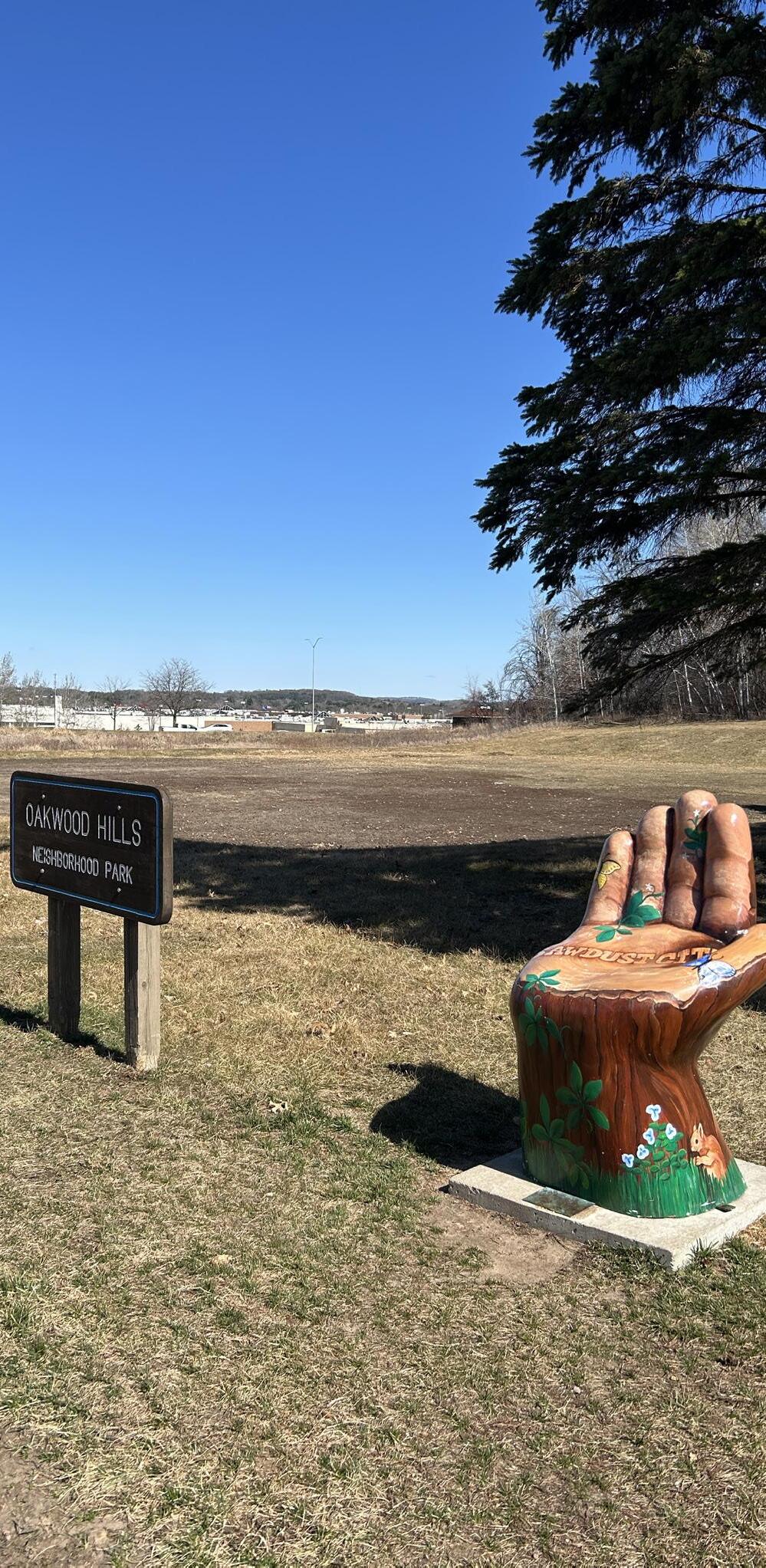
As described in the City of Eau Claire Comprehensive Plan, parks play a critical role as community gathering spaces and should be accessible to residents of all abilities. The Safe Routes to School Plan also highlights the importance of safe and accessible connections to parks, ensuring that children can travel safely to nearby recreational spaces. Additionally, previous Park Accessibility Plans have assessed barriers within the system and identified areas where improvements are needed to meet or exceed ADA standards. While ADA compliance establishes the legal baseline for accessibility, Eau Claire is committed to exceeding these requirements whenever possible by designing spaces that accommodate a range of abilities, regardless of protected class status.
Several parks and facilities in Eau Claire present significant accessibility challenges, either due to outdated infrastructure, steep grades, unpaved paths, or missing accessible amenities. The following parks have been identified as needing improvements: Pinehurst Park, Mount Simon Park, Cameron Park, Kessler Fields, Demmler Park, Buffington Park, Half Moon Beach, Zephyr Hill Park, Oakwood Hills Park, MacArthur Park, Mount Tom Park, The Shale Pit, Northwest Community Park, Archery Park, and Otter Creek Community Park. Many of these parks have trails, parking areas, or recreational facilities that do not fully comply with ADA standards, limiting access for individuals with mobility challenges.
Additionally, several park buildings within the system lack the necessary accommodations to meet current accessibility requirements. Facilities at Carson Park and other community park buildings require modifications to improve accessibility, such as upgraded parking, entrance ramps, and interior modifications. Pathways in certain parks remain unpaved or uneven, restricting access for wheelchair users and individuals with limited mobility. ADA standards require
pathways to be firm, stable, slip-resistant, and free of trip hazards, yet many existing trails within Eau Claire’s parks do not meet these criteria.
While Eau Claire has a strong foundation of accessibility, further improvements can enhance the inclusivity of its park system. Beyond physical upgrades, raising awareness about park amenities and improving wayfinding signage will make it easier for residents to locate accessible features within parks. Ensuring that trails, entrances, and facilities are clearly marked as accessible can significantly improve user experience.
The city can also prioritize strategic investments in sidewalk connectivity, ensuring that park access points are well-integrated into the broader transportation network. Enhancing the accessibility of public transit routes to key parks, as well as adding ADA-compliant parking and rest areas, will further support inclusivity. By incorporating the recommendations from the Comprehensive Plan, Safe Routes to School Plan, and previous Park Accessibility Plans, Eau Claire can continue making strides toward a fully accessible park system that serves residents of all abilities.
The City of Eau Claire has a well-developed trail system that provides excellent connectivity within the community and to regional destinations. The city’s Safe Routes to School Plan and Park Accessibility Plan have established key recommendations for improving pedestrian and bicycle access, and this report builds on those findings. Regular reference to these plans will ensure that ongoing improvements align with the broader vision for mobility and accessibility.
While Eau Claire’s trail network is robust, further enhancements to regional trail connections would strengthen access to Eau Claire County’s expanding park system. Improved connections to Altoona’s park system, including links to River Prairie Development and nearby neighborhood parks, would provide additional recreation and transportation options for Eau Claire residents. These connections would also enhance access to the county’s growing network of outdoor spaces, supporting a more integrated regional park and trail system.

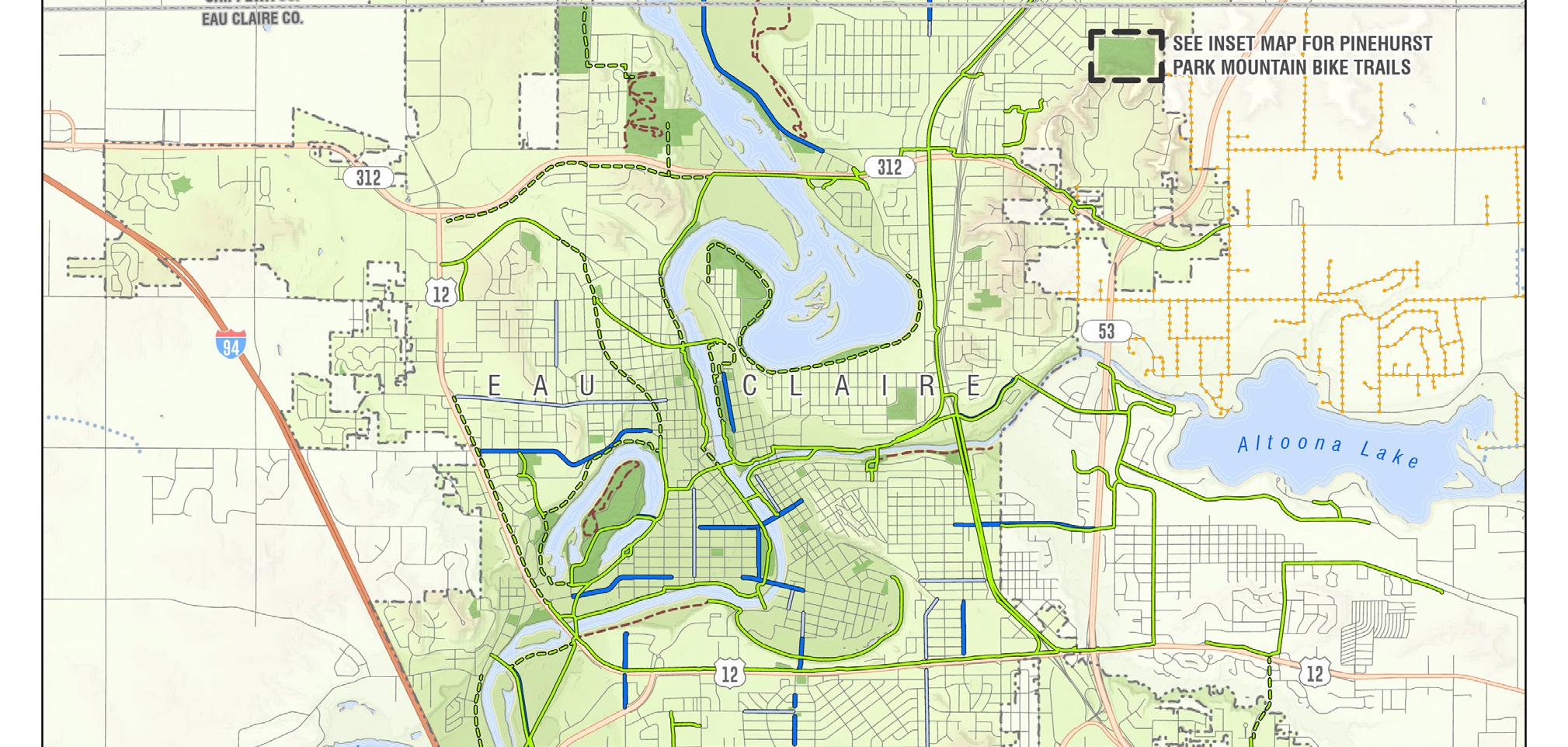
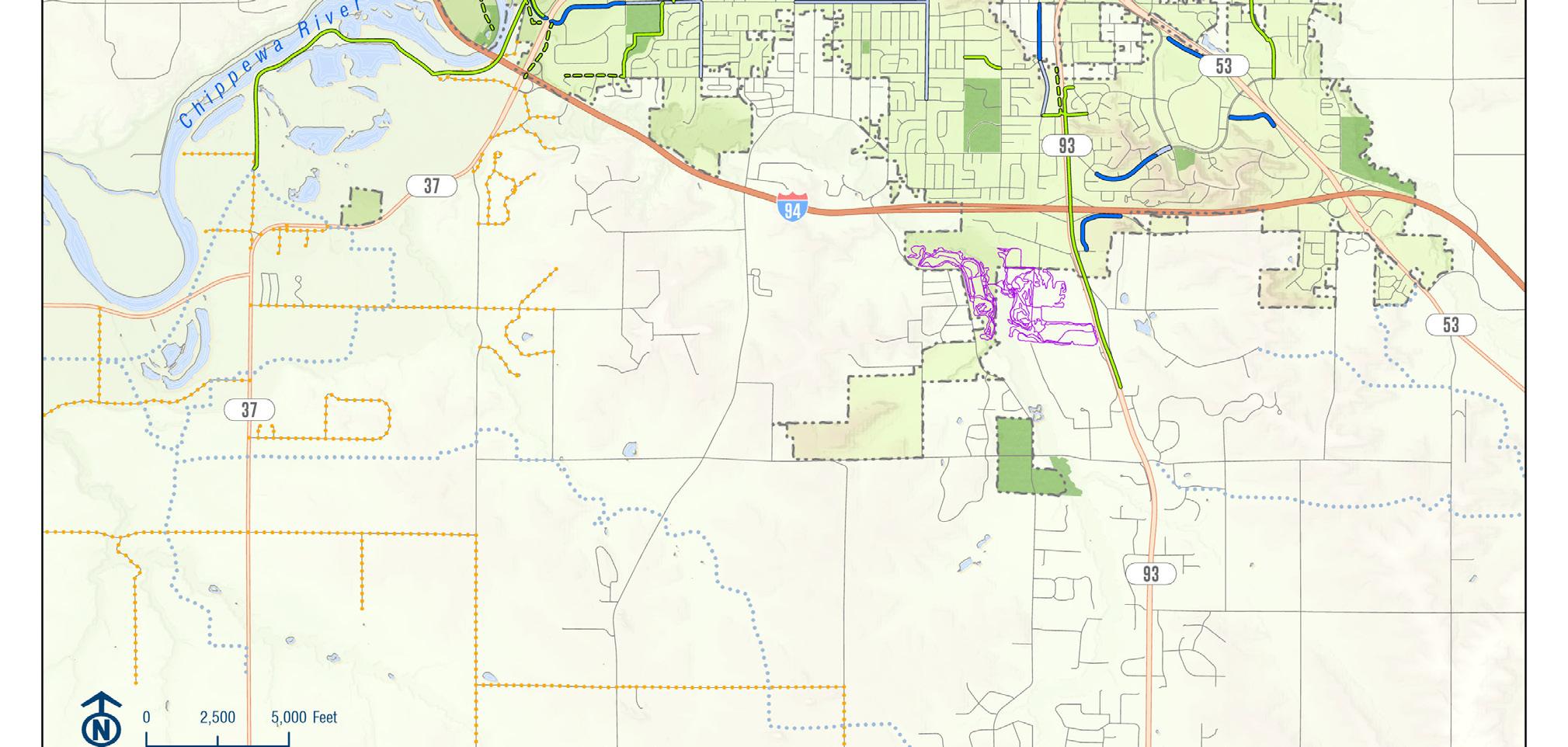
Community connectivity, as evaluated through the usability index developed as part of this project, is strong, likely bolstered by Eau Claire’s existing public transportation network. However, targeted improvements to specific parks could further support bicycle and pedestrian access, creating safer and more efficient connections. Parks that could benefit from enhanced pedestrian and bicycle infrastructure include:
• Ferry Street Park
• Grover Heights Park
• County Farm Park
• Cameron Park
• Mitcher Park
• Buffington Park
• MacArthur Park
• Mount Tom Park
These parks could see improvements such as safer crossings, better-defined bike lanes, sidewalk extensions, and accessible trail connections, making them more easily reachable for residents of all abilities.
Eau Claire’s regional trail network is well-established, with strong connections to surrounding communities. However, opportunities exist to further integrate local and regional systems. Strengthening north-south and east-west bike connections within Eau Claire could enhance access to parks and key destinations.
Future improvements should focus on:
• Expanding safe, low-stress routes for bicyclists and pedestrians, particularly where major roads or natural barriers limit connectivity.
• Improving trail surfaces and lighting to make paths more accessible year-round.
• Enhancing wayfinding and signage, ensuring residents and visitors can easily navigate the system.
• Strengthening links between Eau Claire’s trail network and neighborhood connectivity
Specific Projects to include
• A permanent trail connection along the Eau Claire River linking River Prairie Development with Downtown Eau Claire.
• A looped trail around Half Moon Lake linking different public spaces and surrounding residential.
• Completing the trail loop around Dells Pond.
By building on the recommendations from the Safe Routes to School Plan, Park Accessibility Plan, and other previous reports, Eau Claire can continue to develop a well-connected, accessible, and user-friendly bicycle and pedestrian network that supports both recreation and transportation.
Eau Claire and the broader Chippewa Valley are defined by their rich network of waterways, which provide both recreational and ecological value. The Chippewa River and Eau Claire River serve as the region’s primary water corridors, with Dells Pond and Half Moon Lake offering additional opportunities for water-based activities. Otter Creek also plays a role in the area’s watershed, contributing to the overall aquatic ecosystem. Other key waterways in the region include Lowes Creek and various tributaries that flow into the Chippewa River system, many of which present opportunities for passive recreation, fishing, and habitat preservation.
Eau Claire’s park system offers a variety of water access points, supporting different types of recreation. These include:
• Boat launches along the Chippewa River, Eau Claire River, and Dells Pond, providing access for motorized and non-motorized watercraft.
• Canoe and kayak launches, including accessible launch points for paddlers of all abilities.
• Vehicle access points, allowing boats to be trailered and launched at designated locations.
• Pedestrian access points, providing entry to the water for wading, tubing, shore fishing, and general recreation.
Among the best-developed areas for water access are Half Moon Lake and Carson Park, which feature multiple launch points and well-defined access areas. However, other sections of the Chippewa River and Eau Claire River have lesser-known or under utilized access points, limiting public awareness of available recreational opportunities.
While Eau Claire’s water access network is diverse and well-distributed, increased awareness and accessibility would enhance overall usability. To better connect the community to these resources, the following improvements are recommended:
1. Development of a Water Access Interface
• A public-facing digital and physical resource (such as an interactive map or signage system) to highlight boat launches, fishing spots, tubing put-ins, and other access points along Eau Claire’s waterways.
• Improved wayfinding signage at parks, trails, and roadways leading to water access points.
2. Enhancements to River and Lake Access Points
• Additional canoe/kayak launch points along the Chippewa River and Eau Claire River to support paddlers.
• Improved shoreline access for fishing and wading, particularly in areas with high public interest.
• Expanded ADA-compliant access points, ensuring equitable access for individuals of all abilities.
3. Strengthening the City’s Water Recreation Culture
• Eau Claire has a strong culture of water-based recreation, including:
– Boating, canoeing, kayaking, and paddleboarding
– Fishing and ice fishing
– Tubing and swimming
– Wildlife viewing and nature exploration
By expanding access and improving public information, the City can further support and enhance these activities, reinforcing Eau Claire’s identity as a water recreation destination in the Chippewa Valley.
By prioritizing these recommendations, the City of Eau Claire can ensure continued, high-quality public access to its waterways while fostering environmental stewardship and outdoor recreation for residents and visitors alike.
Community events are a cornerstone of Eau Claire’s vibrant social and cultural life, serving to unite residents, stimulate economic activity, and foster a strong sense of local pride. The City’s Parks and Recreation Department, working closely with key partners such as Volume 1 and Visit Eau Claire, plays an instrumental role in planning and executing these events. A robust network of volunteer groups and non-profit organizations further enriches the calendar, ensuring that programming is both diverse and inclusive. This collaborative approach not only enhances public spaces and outdoor amenities but also reinforces the over arching goals of the Eau Claire Comprehensive Outdoor Rec Plan.
Eau Claire hosts a variety of annual festivals that celebrate the city’s artistic, culinary, and musical heritage. These events are major attractions and contribute significantly to the region’s cultural identity:
• Eau Claire Jazz Festival: Hosted annually by UW–Eau Claire and the Eau Claire Jazz Festival, this multi-day event transforms downtown Eau Claire into a vibrant, music-filled celebration. It features performances from local, regional, and national jazz artists, drawing thousands to enjoy live music, educational clinics, and cultural activities.
• Eau Claire Marathon: The Eau Claire Marathon offers a full weekend of races for all ages and skill levels, including a marathon, half marathon, and 5K. The scenic course winds through city parks, trails, and neighborhoods, highlighting Eau Claire’s natural beauty and community spirit.
• Eau Claire Sculpture Tour: Each spring, the Eau Claire Sculpture Tour unveils a new rotating collection of public art installations throughout downtown. The season reveal invites residents and visitors to explore the city in a new way, celebrating creativity and public space.
• U.S. Kubb National Championship: Held in Eau Claire’s Boyd Park, the U.S. National Kubb Championship is the largest tournament of its kind in the country. Participants from across the nation gather to play the Swedish lawn game in a fun, community-focused competition.
• Chalkfest: Hosted at UW–Eau Claire’s campus, Chalkfest invites artists of all ages and skill levels to transform sidewalks into colorful, large-scale chalk artworks. The festival draws thousands of spectators and emphasizes public creativity and artistic expression.
• Downtown Eau Claire Fall Festival: This family-friendly festival brings together live music, seasonal food, children’s activities, and vendor booths in the heart of downtown. The Fall Festival celebrates the changing seasons and downtown Eau Claire’s dynamic local culture.
• Hmong New Year: The Eau Claire Hmong New Year is one of the largest cultural celebrations in the region, honoring heritage with traditional clothing, music, dance, and cuisine. The event brings the broader community together in celebration of diversity and tradition.
• Clearwater Winter Parade: As part of the Clearwater Winter Parade lights up the streets with decorated floats, music, and winter cheer. This signature event highlights the city’s embrace of outdoor celebration even in the coldest months.
• Chippewa Valley Blues Festival: Celebrating the deep musical roots of the region, this festival brings together renowned blues artists and local talent for a series of outdoor concerts. The event, held at prominent venues around Eau Claire, reinforces the city’s connection to its musical heritage.
• Eau Claire WinterFest: Designed to bring the community together during the colder months, WinterFest offers a variety of seasonal activities including ice skating, winter sports, and live entertainment. This festival emphasizes Eau Claire’s commitment to year-round engagement and outdoor recreation.
• Eau Claire Community Arts and Crafts Fair: This event supports local artisans by providing a platform for them to display and sell their work. With a focus on creative expression and community engagement, the fair is a testament to the city’s thriving arts scene and the collaborative spirit of local organizations like Volume 1.
Beyond the major annual festivals, Eau Claire offers a dynamic schedule of recurring events that keep the community engaged throughout the year:
• Eau Claire Farmers Market: Operating weekly during the warmer months, the Farmers Market is a bustling hub for local produce, artisanal goods, and community interaction. Its location in downtown Eau Claire and adjacent park areas makes it a natural extension of the city’s outdoor rec system.
• Phoenix Park Concert Series: Throughout the summer, Carson Park transforms into an open-air concert venue hosting weekly live music performances. These concerts, which often feature local bands and guest performers, provide a relaxed setting for community gatherings and cultural exchange.
• Food Truck Fridays: Hosted by Volume One, Food Truck Fridays bring a rotating lineup of local food vendors to downtown’s Phoenix Park each week in the summer. This popular event blends local flavor, music, and community gathering in a scenic outdoor setting.
• Owen Park Bandshell Concerts: The Eau Claire Municipal Band and Tuesday Night Blues group provide weekly concerts in the historic Sarge Boyd Bandshell within Owen Park during the summer months.
A range of dedicated volunteer groups and non-profit organizations support the Eau Claire Parks and Recreation system, as well as the broader Eau Claire Chippewa Valley region. Groups like Volume 1, Visit Eau Claire, and local neighborhood associations play a crucial role in event planning, community outreach, and the day-to-day management of programming. Their efforts help bridge gaps in resources, ensuring that both large-scale festivals and smaller, recurring events are well-attended and reflect the diverse interests of the community.
Regular coordination with existing plans such as the Safe Routes to School and Park Accessibility Plan ensures that event programming remains aligned with the City’s strategic goals. By continually engaging with these established frameworks, Eau Claire is able to refine its approach to community events, enhancing accessibility and inclusivity while reinforcing a shared commitment to outdoor recreation and community well-being.
Standards for open space, facility, and service areas can be used to assess the adequacy of local park systems. While standards can provide a helpful starting point, resident needs and interests must also be factored into facility evaluation.
The Eau Claire Comprehensive Outdoor Recreation Plan (CORP) aligns closely with the priorities and insights outlined in the Statewide Comprehensive Outdoor Recreation Plan (SCORP) 2025-2030, ensuring that local park planning supports broader state goals while addressing the unique needs of Eau Claire’s residents. SCORP highlights key trends shaping outdoor recreation, including increasing demand for trails, water-based activities, and flexible park spaces, as well as a strong emphasis on equity, accessibility, and environmental resilience. Eau Claire’s park system, anchored by the Chippewa River and an extensive trail network, is well-positioned to enhance connectivity, expand water access, and introduce innovative recreational amenities that respond to these statewide trends. Additionally, SCORP’s focus on sustainability and climate resilience reinforces the need for Eau Claire to integrate native plantings, flood mitigation strategies, and green infrastructure into future park improvements, ensuring long-term environmental and community benefits.
By aligning Eau Claire’s CORP with SCORP’s strategic priorities, the city can leverage state and federal funding opportunities, strengthen public-private partnerships, and create more inclusive recreational experiences. Expanding pedestrian and bike connections, increasing riverfront access, and developing multi-use, adaptable park spaces will enhance quality of life while addressing demographic shifts and changing recreation preferences. Moreover, ensuring that all residents—especially those in under served neighborhoods—have equitable access to parks and green spaces is a shared goal of both SCORP and Eau Claire’s CORP, reinforcing the city’s commitment to fostering a healthier, more connected, and more resilient community. Through this alignment, Eau Claire can proactively shape its park system to meet both immediate and long-term needs, ensuring outdoor recreation remains a vital part of the city’s identity and future growth.
Parkland Classification
Assessing Eau Claire’s parks and recreation facilities using national standards provides a useful benchmark for evaluating the effectiveness and equity of the system. The National Recreation and Park Association (NRPA) recommends a level of service standard of at least 10.5 acres of parkland per 1,000 residents, ensuring a balanced distribution of parks across different size categories. These standards help guide future planning efforts, ensuring that Eau Claire’s growing population has access to a variety of recreational opportunities. While the city already boasts an extensive and diverse park network, there are opportunities to refine distribution, enhance accessibility, and ensure that key areas—especially those along the Eau Claire and Chippewa Rivers—are adequately connected to the broader system.
Eau Claire’s park system includes a mix of neighborhood parks, community parks, mini parks, special-use parks, and linear parks. The city’s parks and open spaces are categorized as follows:
• Sixteen Special Use Parks totaling 220.2 acres, with an average size of 13.76 acres. According to the National Recreation and Park Association (NRPA), special use parks typically vary in size depending on their function, but they often range from 10 to 50 acres or more, depending on the specific use.
• Eighteen Neighborhood Parks totaling 137.04 acres, with an average size of 7.41 acres. According to NRPA, neighborhood parks should typically range from 5 to 10 acres to effectively serve local residents.
• Four Community Parks totaling 267.89 acres, with an average size of 66.97 acres. NRPA recommends that community parks generally range between 30 and 100 acres, offering amenities that serve a broader population.
• Fifteen Conservancy Parks totaling 360.67 acres, with an average size of 24.04 acres. NRPA suggests that conservancy or natural resource parks typically range from 20 to 200 acres or more, depending on the ecological features being preserved.
Eau Claire’s commitment to providing a well-rounded park system is evident in its diverse offerings, but ongoing assessment will ensure that future growth and community needs are met with strategic enhancements and equitable park access.
The Eau Claire park system is home to a diverse range of facilities, from large regional parks and nature reserves to neighbourhood playgrounds and sports fields. These parks not only provide spaces for recreation but also protect important natural resources such as forests, rivers, and wetlands. Major parks such as Carson Park serve as hubs for community activities, while smaller parks and open spaces are critical to providing accessible green spaces throughout the city.
55 PARKS 1,013 ACRES OF PARK LAND 345 AVERAGE USABILITY SCORE
Once a community’s existing parks have been classified, a comparison can be made between the national standard for each park type and existing park acreage. While there is no formally established method to determine the level of service provided by the existing facilities, the following parameters should be considered.
Table 2.1: National Recreation and Park Association Parkland Classification System
A. Local/Close-to-Home Space
Mini Park Specialized facilities that serve a concentrated or limited population or specific group such as tots or senior citizens.
Neighborhood Park Areas for intense recreational activities, such as field games, court games, crafts, play equipment area, skating, picnicking, wading pools, etc.
Community Park Areas of diverse recreational activity. May include areas suited for facilities such as athletic complexes and large aquatic facilities. May have areas of natural quality for outdoor recreation, such as walking, viewing, sitting, picnicking.
B. Regional Space
Regional/Metropolitan Park Areas of natural or ornamental quality for outdoor recreation, such as picnicking, boating, fishing, swimming, camping, and trail uses; may include play areas.
neighborhoods. 1 to 2-mile
communities.1hour driving time
C. Space that may be Local or Regional and is Unique to Each Community
Linear Park Area developed for one or more varying modes of recreational travel, such as hiking, biking, snowmobiling, horseback riding, cross-country skiing, canoeing and pleasure driving. May include active play areas.
Special Use (Special Areas)
Areas for specialized or single purpose recreational activities, such as golf courses, nature centers, skateparks, marinas, zoos, conservatories, arboreta, display gardens, arenas, or areas that preserve, maintain, and interpret buildings, sites, and objects of archaeological significance. Also, plazas or squares.
No applicable standard Sufficient width to protect the resource and provide maximum use Variable
No applicable standard Variable Variable
Conservancy Protection and management of the natural/cultural environment with recreational use as a secondary objective.
No applicable standard Sufficient to protect the resource Variable
Acreage/Miles Population standards (Acres/1000 population)
Benchmarking
Facilities, Activities, Capacity Population standards
Demographic Analysis
Neighborhood area activities
Supply/Demand
Access
Walking/Bicycling/Driving, Transit
Parks/Facilities
Quality Evaluation
Programs
Mapping/Distribution
Relevancy, quality, and variety
Scheduling
The National Recreation and Park Association (NRPA) recommends a widely accepted standard of 10.5 acres of parkland per 1,000 residents, distributed across different park types.
Table 2.2: NRPA Recommended Park Standards
Urban Parks (Mini Parks)
0.5 acres/1,000 population
Neighborhood Parks 2 acres/1,000 population
Community Parks 8 acres/1,000 population
Total 10.5 acres/1,000 population
Chart 2.1 compares Eau Claire’s existing park acreage to these NRPA standards. Based on the city’s current population of 70,895, the NRPA standards (represented by the blue bars in Chart 2.1) indicate the city should have a specific distribution of parkland. Eau Claire falls below the national standard for both urban (mini) parks and neighborhood parks but exceeds the standard when all park types are combined. To meet the recommended acreage for each classification, the city would need to add 23.3 acres of urban (mini) parkland and 14.85 acres of neighborhood parkland, while community parkland currently exceeds the standard by 98.15 acres. These calculations only include city-owned, active-use parks and exclude special areas, community athletic fields, county parks, and school parks. However, because some school properties function as neighborhood parks, the city’s neighborhood park acreage may be considered sufficient despite falling below the NRPA standard.
Looking ahead, Chart 2.2 projects parkland needs based on Eau Claire’s estimated 2040 population of 73,770 (Wisconsin Department of Administration). While a larger population would slightly increase the parkland required, Eau Claire would still have a surplus of 29.9 acres of active-use parkland across the three park types to meet NRPA standards.
It is important to recognize that NRPA acreage standards are just one method of evaluating a community’s park system. Factors such as the number and type of
amenities, park accessibility, and the city’s age demographics also play a role in determining overall park service levels. Additionally, enhancing special areas or community athletic fields could reclassify some parks and further align Eau Claire with NRPA standards.
Chart 2.1 – Existing City of Eau Claire active-use park acreage compared to the recommended national standard
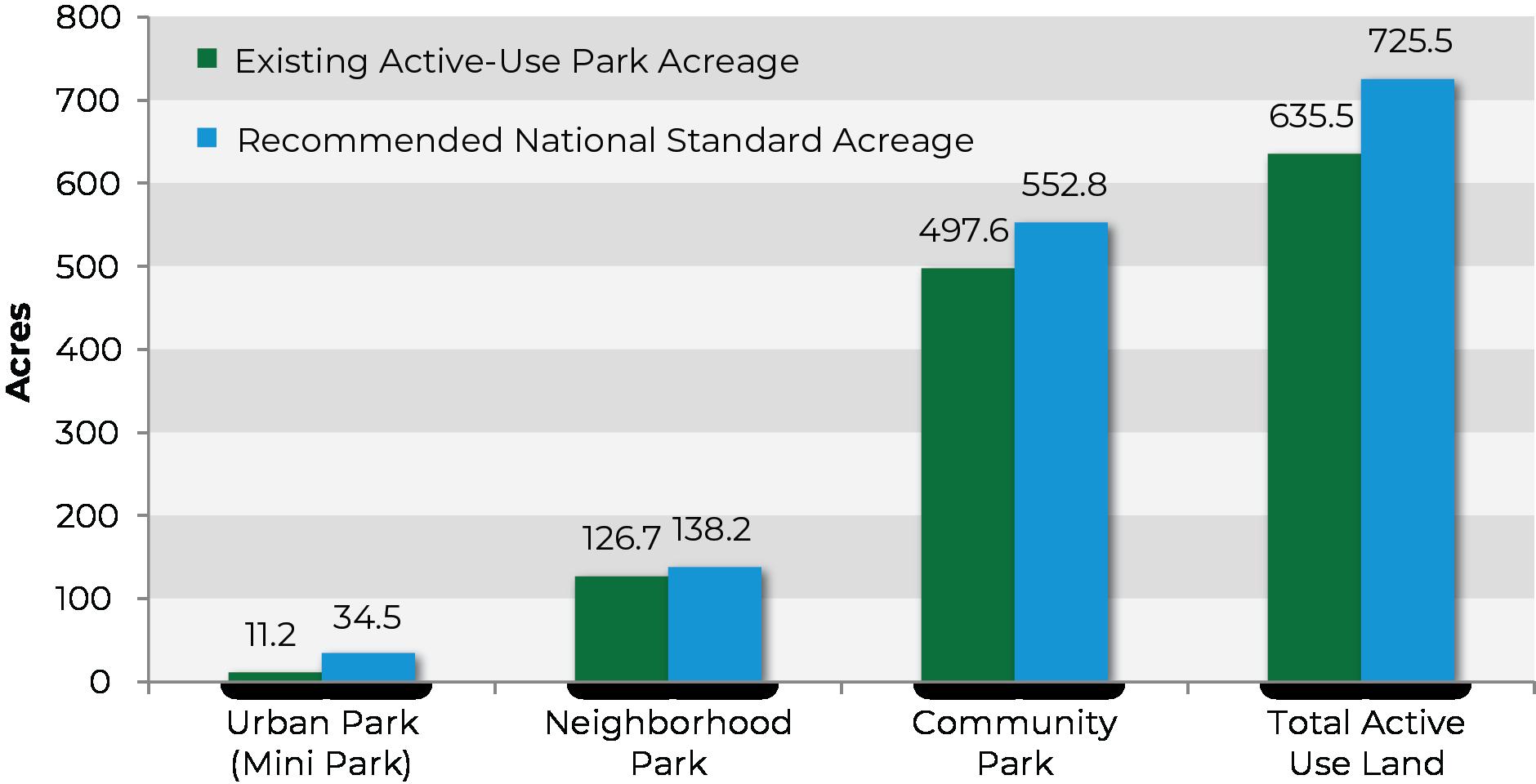
Chart 2.2 – Eau Claire active-use park acreage compared to the 2040 population projection recommended park acreage
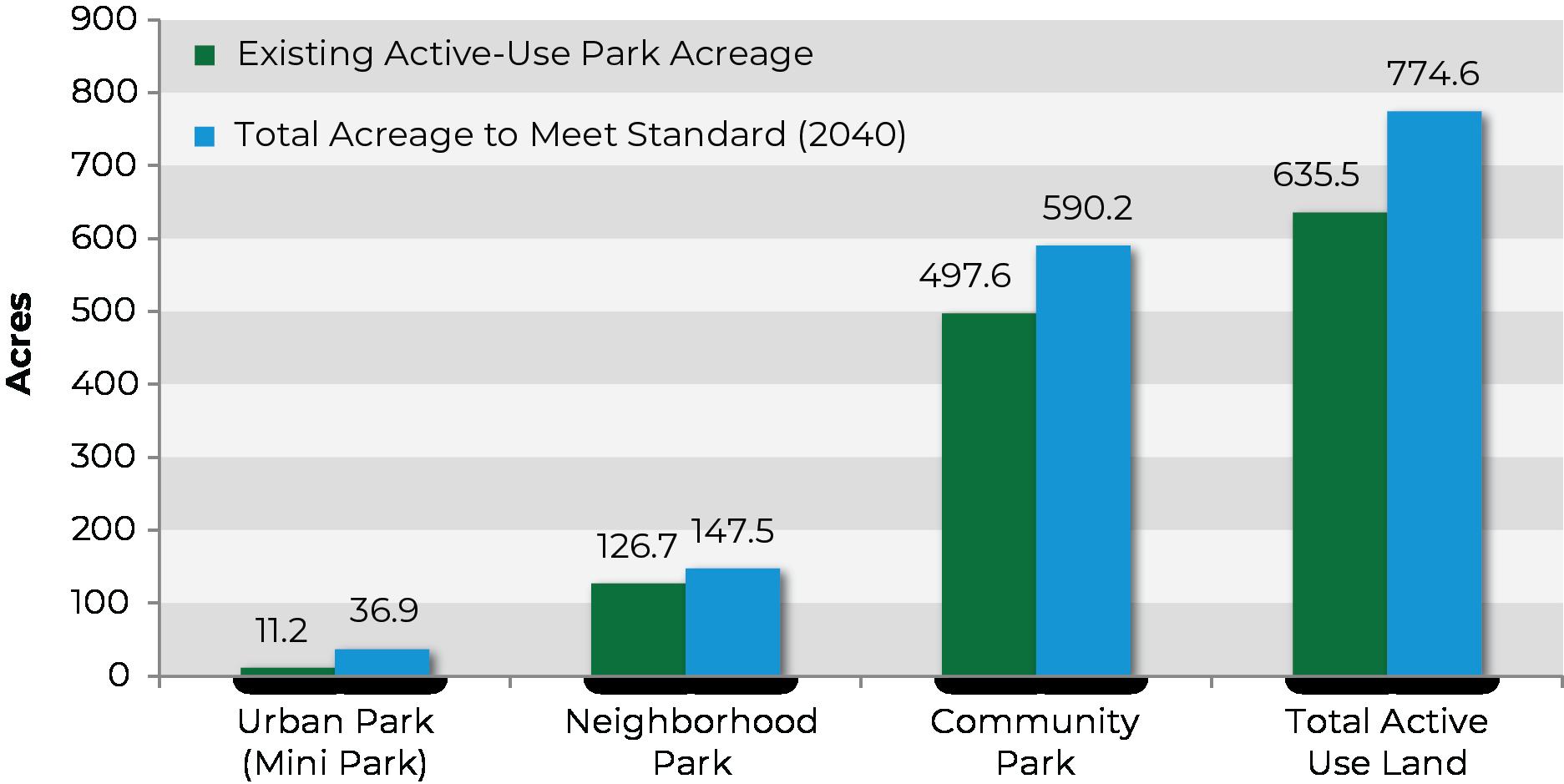
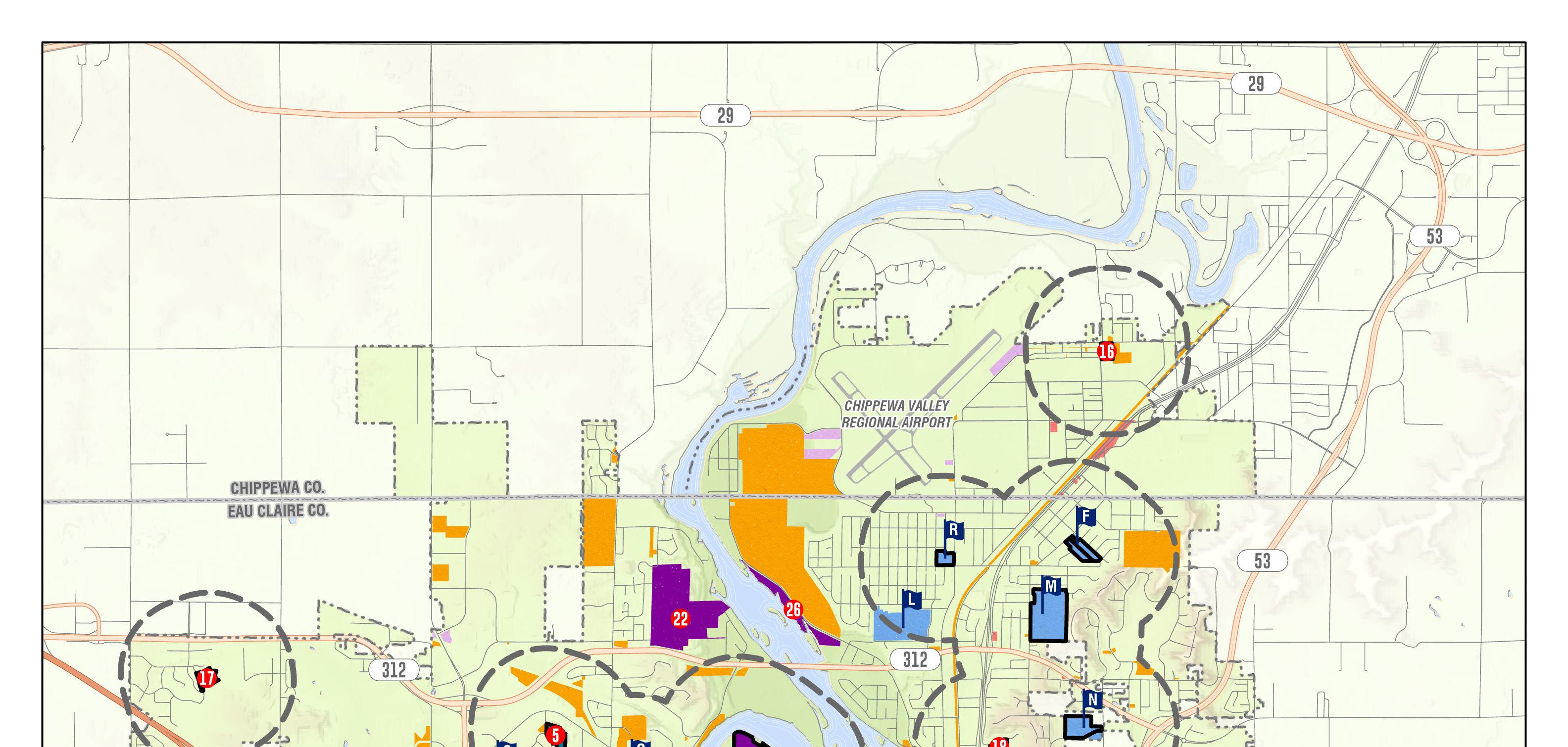
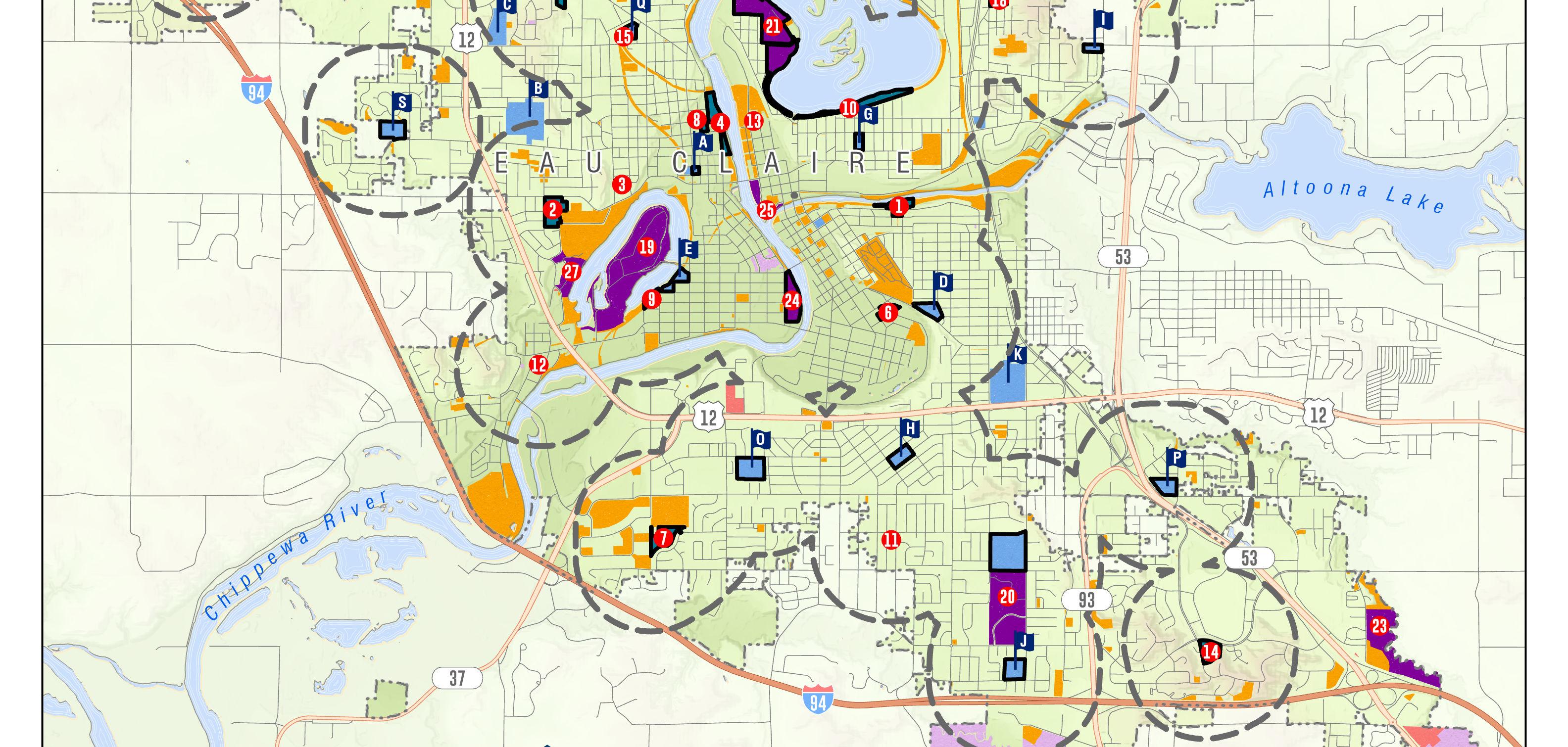
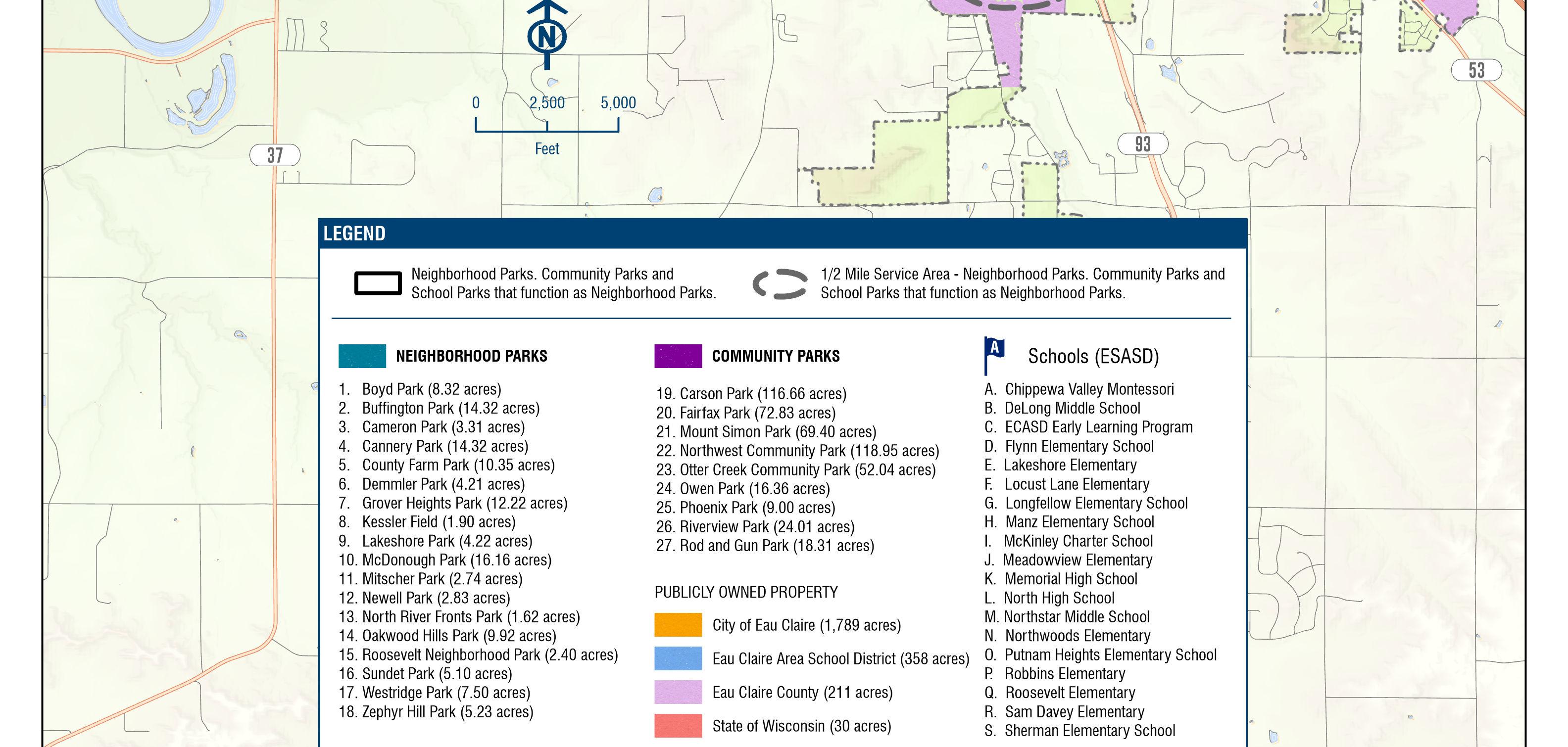
Eau Claire’s residents per park metric, based on the National Recreation and Park Association (NRPA) benchmarks for cities with populations between 50,000 and 100,000, is 1,312 residents per park. This places the city below the NRPA’s lower quartile of 1,489 residents per park, with the median at 2,346 and the upper quartile at 4,048. This indicates that Eau Claire has a higher number of parks relative to its population compared to most peer communities. This data can inform decisionmaking by helping the city assess whether resources should be allocated toward maintaining existing parks, upgrading facilities, or evaluating the need for additional parks based on growth patterns and community demand.
2.3 – Acres of park land per 1000 Residents
For acres of parkland per 1,000 residents, Eau Claire reports 14.3 acres, placing it above the NRPA median of 10.2 acres for cities within the 50,000 to 100,000 population range. The lower quartile is 4.8 acres, and the upper quartile is 17.4 acres. This data suggests that Eau Claire has a larger amount of parkland relative to its population than many comparable cities. When planning for future park development, the city can use this benchmark to determine whether to prioritize acquiring additional parkland, improving the distribution and accessibility of existing parks, or enhancing park programming and amenities to maximize use of available space.
Service area benchmarks provide a broad overview of Eau Claire’s park accessibility by estimating how many residents live within a reasonable walking distance of a public park. Mini parks serve a 0.25-mile radius, equating to a 5- to 10-minute walk, while neighborhood and community parks generally serve a 0.5-mile radius, or a 10- to 20-minute walk. These standard service areas help evaluate whether Eau Claire’s parks are effectively meeting the recreational needs of residents and highlight areas where access may be lacking.
To assess parkland distribution and adequacy of service, park service areas were mapped using NRPA service radius criteria for mini, neighborhood, and community parks. This mapping process identifies coverage gaps, particularly in the far south and west portions of the city, where park access is more limited. While the city’s most densely populated areas generally have good park coverage, these under served areas should be considered for future park development as Eau Claire grows. Notably, school parks were excluded from this analysis, though they may provide additional recreational opportunities in some of the identified service area gaps.
A combined service area map, found in Appendix B, Map 3, presents a citywide view of park coverage. To better understand and visualize under served areas, GIS overlay analysis can be used in conjunction with other planning tools. Moving forward, this data can help guide strategic decisions regarding park expansion, land acquisition, and park improvements to ensure more equitable park access for Eau Claire residents.
While Eau Claire has a well-established park system, gaps in access and aging infrastructure exist in certain areas. The region south of Highway 12 and north of Interstate 94 has deficiencies in neighborhood parks and associated amenities. There are gaps in service areas, aging infrastructure, and a need for additional investment to improve existing parks and add new neighborhood park facilities. Additionally, community park space is lacking in this area, and expanding or developing new community park facilities should be a priority.
East of Highway 53 and south of Highway 12, a growing residential neighborhood lacks a neighborhood park. As the community continues to develop, adding a park in this area would help support residents and ensure equitable access to recreation opportunities. While there are gaps in neighborhood parks throughout Eau Claire, school playgrounds and open spaces provide supplemental recreational opportunities in many areas, helping to mitigate deficiencies. This is particularly true in northwest and south-central Eau Claire, where only minor gaps remain after accounting for school-based facilities.
Compared to other parts of the city, downtown Eau Claire has a robust and diverse park system. Parks such as Owen Park and Carson Park, along with a variety of neighborhood
and community parks, provide ample recreation opportunities for residents and visitors. The downtown park network supports a range of recreational experiences, from active sports fields to passive green spaces, trails, and water access. These parks align with state-level comprehensive outdoor recreation goals by connecting people to water, offering extensive trail access, and serving multi-generational needs.
Although some areas outside of the downtown core experience minor service gaps and aging infrastructure, the downtown park system has an abundance of public green space relative to other areas of Eau Claire.
While Eau Claire has a strong park system, certain areas lack connectivity to recreational spaces. The south-central and southeastern portions of the city have limited pedestrian and trail connections to the broader park network, often requiring residents to drive to access parks. Improved trail infrastructure, pedestrian-friendly corridors, and enhanced access to downtown parks would significantly benefit residents in these areas.
By addressing aging infrastructure, filling service gaps, and improving connectivity, Eau Claire can continue to develop a park system that is accessible, equitable, and well-suited to the needs of all residents.
Age cohort analysis was developed to help prioritize improvements based on the distribution of residents by age and the availability of recreation facilities by geographic location. The methodology includes the layering of population density of a particular age group with facility locations that age group would be expected to use (See Map 7 in Appendix B). The map is used to identify areas where facilities containing certain amenities are not located in neighborhoods containing user groups best suited for those amenities. For example, if an area contains a high percentage of toddlers (age 2-5) but does not contain nearby toddleraged play equipment, it would be worth considering adding equipment for that age group in a park in that area.
The Park Usability Score provides a data-driven approach to assessing the value, functionality, and accessibility of Eau Claire’s park system. This scoring system enables the city to prioritize investments, improve existing parks, and strategically enhance amenities where they are most needed. By correlating the usability score with GIS data, the city can visualize gaps in service, highlight high-impact improvement opportunities, and develop a roadmap for future enhancements.
Parks Needing Immediate Attention:
• Boyd Park: High usability but limited benches and shaded seating.
• Rod & Gun Park: Needs additional seating along the trails and near the water.
• Kessler Park: Playground and green space need more picnic tables.
• Half Moon Beach Park: Very popular, but picnic seating is outdated and limited.
• Phoenix Park: Very popular for summer concerts, farmers markets and food trucks.
General Recommendations:
• Install shaded seating areas in high-traffic parks like Owen Park and Phoenix Park.
• Add additional benches along trail networks, particularly in Carson Park and along the Chippewa River Trail.
Parks Needing Immediate Attention:
• Demmler Park: Existing playground is aging and lacks inclusive play elements.
• Pinehurst Park: Could benefit from updated equipment and nature-based play features.
• McDonough Park: Playground is outdated and does not provide accessible options.
• Demmler Park: Needs a playground upgrade to better serve surrounding residents.
General Recommendations:
• Upgrade aging playgrounds at McDonough Park and Pinehurst Park.
• Introduce inclusive and nature-based play features in Pinehurst, Boyd, and Rod & Gun Parks.
Parks Needing Immediate Attention:
• Mt. Simon Park: Trails lack clear connectivity to the downtown and residential areas.
• Oakwood Hills Park: Isolated by major roads, limiting safe access.
• Cameron Park: Lacks clear pedestrian crossings and safe bike access.
General Recommendations:
• Enhance trail connectivity between Half Moon Lake trails and the downtown core.
• Improve sidewalk networks to increase access to Forest Street Park and Oakwood Hills Park.
• Develop safer road crossings and bike infrastructure leading into high-use parks.
Parks Needing Immediate Attention:
• Rod and Gun Park: Trails are not accessible, with steep grades and unpaved sections.
• Sundet Park: Limited accessible seating and play areas.
• Half Moon Beach Park: Beach access lacks proper accommodations for mobility-impaired visitors.
General Recommendations:
• Upgrade trails in Riverview and Putnam Parks to meet accessibility standards.
• Improve ADA seating and amenities in Carson, Half Moon, and McDonough Parks.
• Increase the number of accessible parking spaces and pathways in high-traffic parks.
Parks Needing Immediate Attention:
• Demmler Park: No permanent restroom facilities, despite serving hikers and nature visitors.
• Forest Street Park: No restroom facilities despite increasing use.
• Pinehurst Park: Heavily used in winter for sledding and in summer for biking but lacks permanent restrooms.
General Recommendations:
• Expand restroom facilities in high-use parks, particularly Phoenix Park and Carson Park.
• Install seasonal or portable restrooms in parks with summer event traffic, such as Forest Street Park.
• Ensure permanent restroom access at parks with frequent sports or recreation events, like Pinehurst and Demmler Parks.
While many parks provide essential recreation opportunities, some rank low in usability and may not be meeting community needs effectively. These parks should be evaluated for repurposing, reinvestment, or alternative programming.
Parks with the Lowest Usability Scores:
• Forest Street Park: Lacks amenities, poor connectivity, and no restrooms or seating.
• Cameron Park: Minimal features beyond open space; lacks playgrounds, seating, and drinking fountains.
• Demmler Park: Aging infrastructure, underused location, and minimal programming.
• University Park: Highly trafficked area, but lacks investment in seating, water fountains, and accessibility.
• Oakwood Hills Park: Poor pedestrian access, low visitor counts, and minimal amenities.
As of the 2020 census, the City of Eau Claire had a population of 69,421, reflecting a growth from 65,883 in 2010. This indicates a steady increase in residents over the past decade. Eau Claire County, encompassing the city, reported a population of 105,710 in 2020, up from 93,142 in 2000, demonstrating consistent growth over two decades.
The city’s age distribution is notable, with 19.3% under 18, 22.3% between 18 and 24, 25.2% from 25 to 44, 21.7% from 45 to 64, and 11.7% aged 65 and older, as per the 2020 census. This diverse age range underscores the need for a multifaceted park system catering to varied recreational preferences.
FULL SIZE MAP 8 IN APPENDIX B
The analysis was used for four populations*:
1. Under 5 years of age: toddlers are best served by play equipment such as sandboxes, toddler swings, tot slides, spring riders, and tilt cups.
2. Ages 5 to 9 this group can be expected to use play equipment such as swings, climbing structures, teeter totters, merry-go-rounds and monkey bars.
3. Ages 10 to 17 years of age: this group can be served by a variety of park facilities. Amenities evaluated for this population include facilities related to baseball, softball, soccer, basketball, skateboarding and ice skating.
4. Age 55+: service to this group included facilities such as hiking trails, outdoor fitness stations, boat launches, pickle ball and tennis.
* The four age groups shown represent groups with specific recreational needs separate from the overall population. They were chosen to see if there is a lack in recreational amenities for those specific groups outside of the need for amenities for the overall population.
Park Accessibility and Service Areas
Eau Claire’s park system generally provides adequate access across different age groups. Youth populations benefit from proximity to parks, though certain neighborhoods experience gaps in service. School playgrounds and open spaces often supplement recreational needs, particularly in the northwest and south-central regions, mitigating some access issues.
Adequacy
Several areas poised for residential growth currently have sufficient park infrastructure:
• West of Fairfax Park: Located south of Highway 12 and north of Interstate 94, this area is well-served by existing parks, supporting potential residential development.
• Northwest of Town: Bounded by Highway 12 to the east, Interstate 94 to the south, and Highway 312 to the north, this region’s existing parks can accommodate future growth.
• North of Town on the West Side of the Chippewa River: This area offers ample park space, ensuring that new residential developments would have adequate recreational facilities.
Downtown Density and Park Utilization
The downtown core, along with historic neighborhoods like East Hill and Third Ward, exhibits higher population densities. The abundant park spaces in these areas are vital, providing essential recreational opportunities and green spaces to residents. Parks such as Owen Park and Carson Park offer diverse amenities, catering to various recreational needs.
Suburban Areas and Park Infrastructure
In contrast, suburban regions surrounding Eau Claire are somewhat under served regarding park amenities. As these areas experience growth, enhancing park infrastructure becomes crucial to meet the recreational needs of expanding communities.
Strategic Park Assets for Community Support
As Eau Claire’s neighborhoods evolve, certain parks emerge as pivotal community assets:
• Fairfax Pool: A key recreational facility serving both local residents and visitors.
• East Hill Neighborhood Parks: Spaces like Boyd Park provide essential recreational opportunities to this historic area.
• Cannery Park: Offers unique amenities that cater to diverse community interests.
Carson Park serves as a regional destination with limited neighborhood draw but does have surrounding neighborhood community park draw associated with it.
By focusing on these strategic areas and addressing identified gaps, Eau Claire can continue to develop a park system that meets the diverse needs of its growing population.
The Eau Claire park system is currently underfunded and understaffed, making it difficult to keep up with regular maintenance needs. The system operates with 17.5 FTE, significantly below the national standard for park maintenance staffing, which has led to deferred maintenance and increased long-term costs. Key areas of concern include routine landscaping, equipment repairs, and facility upkeep.
Without additional staff, the existing team is forced to prioritize urgent repairs over preventative maintenance, leading to a cycle of deterioration that impacts the quality and safety of the parks. This lack of resources also limits the ability to respond to community requests for improvements, such as upgrading restrooms, adding lighting, or expanding recreational facilities.
For example, while Eau Claire allocates $81.68 per Capita to its parks, neighbouring cities like La Crosse allocate $91.61 per Capita, enabling them to maintain facilities more effectively and respond more quickly to community needs. Similarly, Eau Claire’s ratio of park maintenance staff to acreage is significantly lower than that of surrounding communities, making it difficult to keep pace with required upkeep.
The Eau Claire park system is currently underfunded and understaffed, making it difficult to keep up with regular maintenance needs. The system operates with 17.5 FTE, significantly below the national standard for park maintenance staffing, which has led to deferred maintenance and increased long-term costs. Key areas of concern include routine landscaping, equipment repairs, and facility upkeep.



This ratio essentially represents the dollars spent per unit of available parkland per employee. A higher CIR indicates that, relative to the parkland and staffing available to serve each resident, more funds are being allocated potentially flagging areas where overspending might be occurring. This metric can be benchmarked against historical data or industry standards to assess whether current spending levels are efficient or warrant further review.
A= Total Parkland (in acres) / Population (acres per resident)
E=Number of Full Time Employees / Population (Employees per resident)
D=Dollars per Capita (budget allocated per resident)
In this formulation, a higher efficiency percentage would indicate that more parkland is available per resident relative to the staffing and financial resources devoted to parks and recreation. Adjustments or normalization may be needed depending on the context or benchmark values, but this formula provides a starting point for quantifying operational efficiency as a percentage.
A= Total Parkland (in acres) / Population (acres per resident)
E=Number of Full Time Employees / Population (Employee’s per resident)
D=Dollars per Capita (budget allocated per resident)
The Eau Claire Parks and Recreation Department stands out as an exemplar of cost-effective management and operational efficiency. Using our internally developed metrics, Eau Claire achieves a cost-effective ratio of 89 compared to the national average of 327, and an operational efficiency index of 112 percent versus the national average of 31 percent. These figures underscore the department’s ability to maximize value; for instance, Eau Claire provides 16 acres of parkland per resident compared to the national average of 11 acres, all while operating with a leaner workforce 17.5 full-time employees rather than the national average of 38.
Furthermore, the department spends only $81.68 per capita on parks and recreation compared to $94.77 nationally, demonstrating an impressive level of fiscal prudence without compromising service quality. This combination of abundant parkland, efficient staffing, and lower per capita spending illustrates how Eau Claire is not only meeting but exceeding the benchmarks set by its peers. The result is a highly efficient operation that delivers superior recreational services, proving that smart management and strategic resource allocation can drive exceptional outcomes even under constrained budgets.
The recommended strategy for improving the Parks and Recreation operational effectiveness in Eau Claire includes a realignment of existing resources through two alternative scenarios. Both scenarios are designed to enhance service efficiency and maintain a high standard of park maintenance while delivering consistent performance metrics. Key performance indicators include a Cost Inefficiency Ratio (CIR) and an Operational Efficiency Index (OEI), both targeted to reach 102 and 98 respectively, representing significant improvements over current figures.
In Scenario One, the proposal is to make a modest adjustment by reducing the parkland available per resident from 16 acres to 15 acres, while simultaneously adding one full-time employee. This targeted reduction in acreage allows for a more concentrated management focus and improved maintenance of the existing park infrastructure. The additional staffing ensures that the workload is more evenly distributed, leading to an increased per capita spending and operational budget. As a result, the metrics reflect a CIR of 102 and an OEI of 98, demonstrating a more efficient use of both financial and human resources.
Scenario Two takes a more aggressive approach to resource reallocation by reducing the parkland per resident more significantly from 16 acres down to 14 acres while maintaining the current staffing level at 17.5 full-time employees and keeping per capita spending constant. Despite the larger decrease in acreage, the streamlined focus on a smaller, more manageable area produces the same positive outcome and budget neutral, with the CIR and OEI both aligning at 102 and 98, respectively. This scenario underscores that a focused, concentrated park system can yield comparable efficiency gains even without additional staffing.
Both scenarios offer clear benefits for the Eau Claire Parks and Recreation Department by sharpening the focus of maintenance efforts and optimizing resource allocation. Whether through a modest adjustment with increased staffing or a more pronounced reduction in acreage while maintaining current staffing levels, the resulting improvements in CIR and OEI illustrate a robust path forward for achieving a more cost-effective and operationally efficient park system.
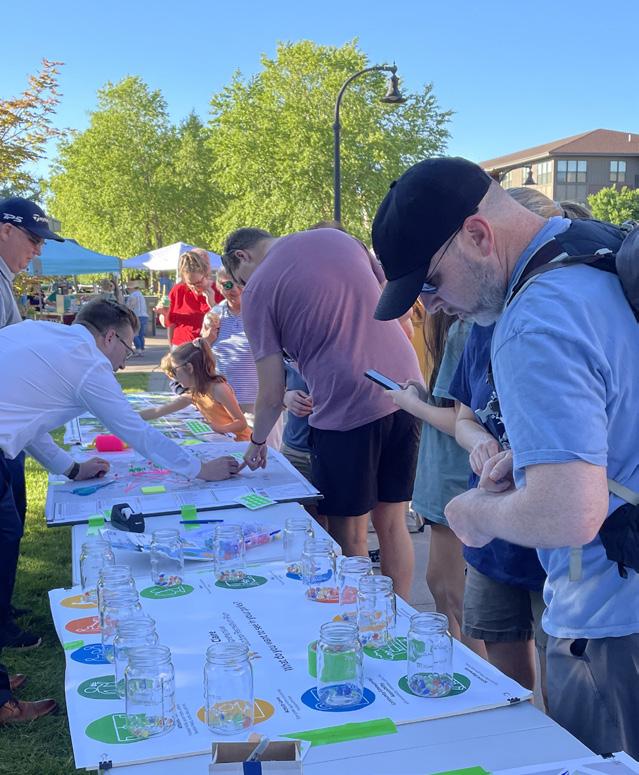


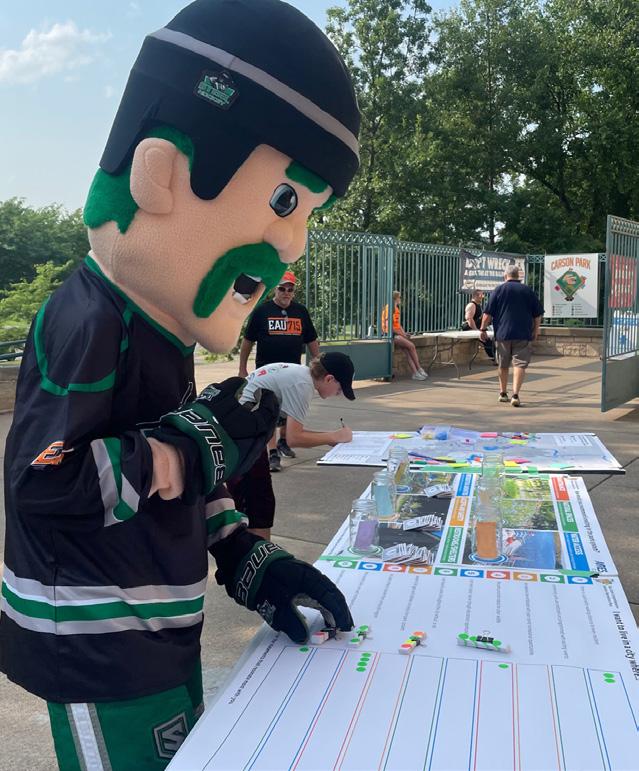
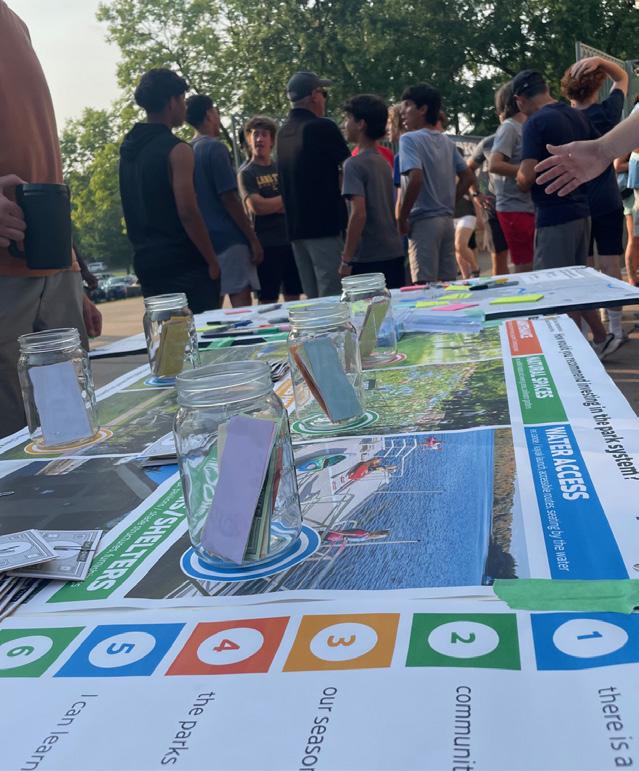
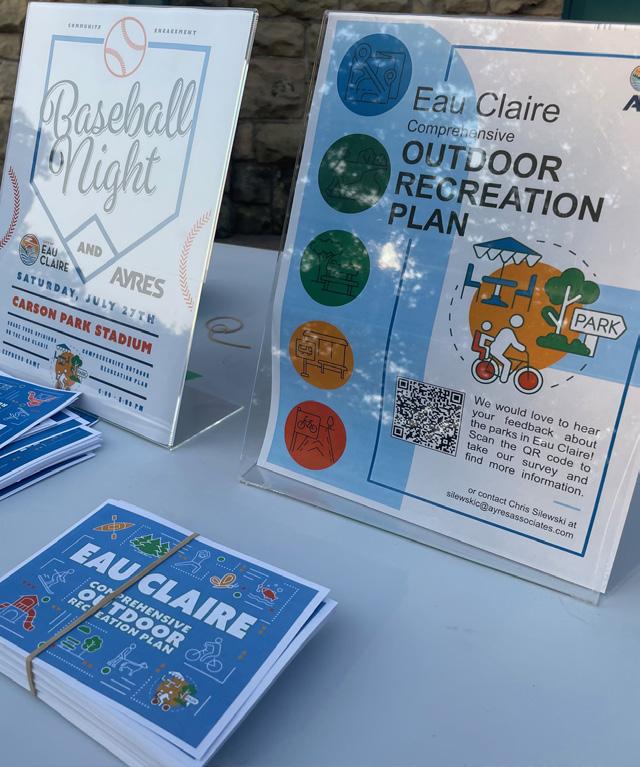
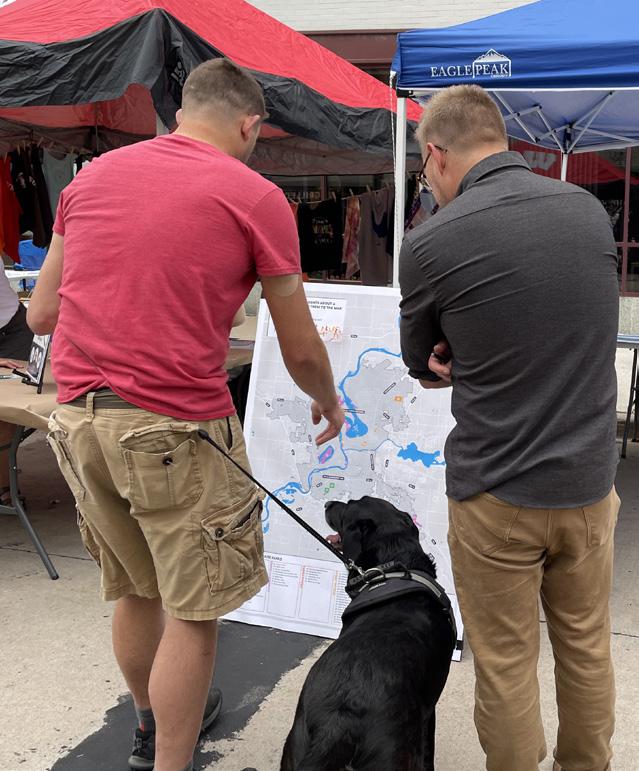
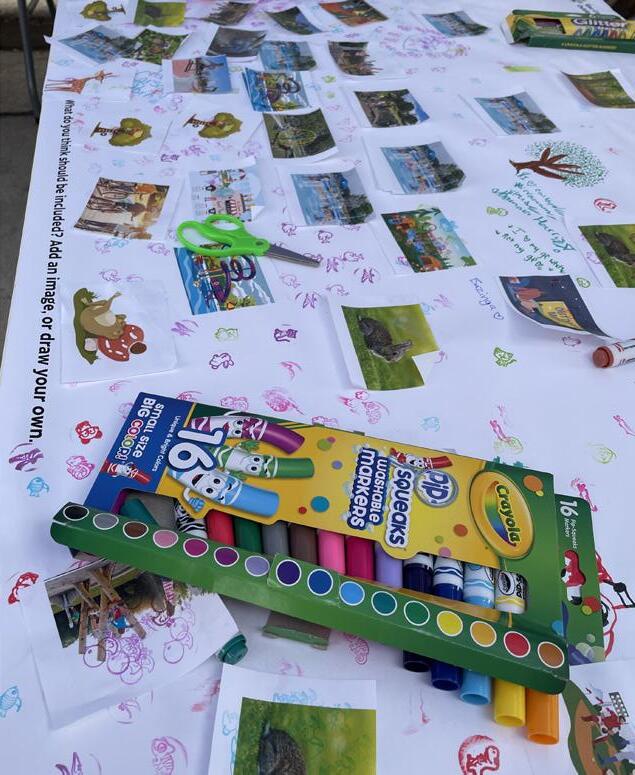
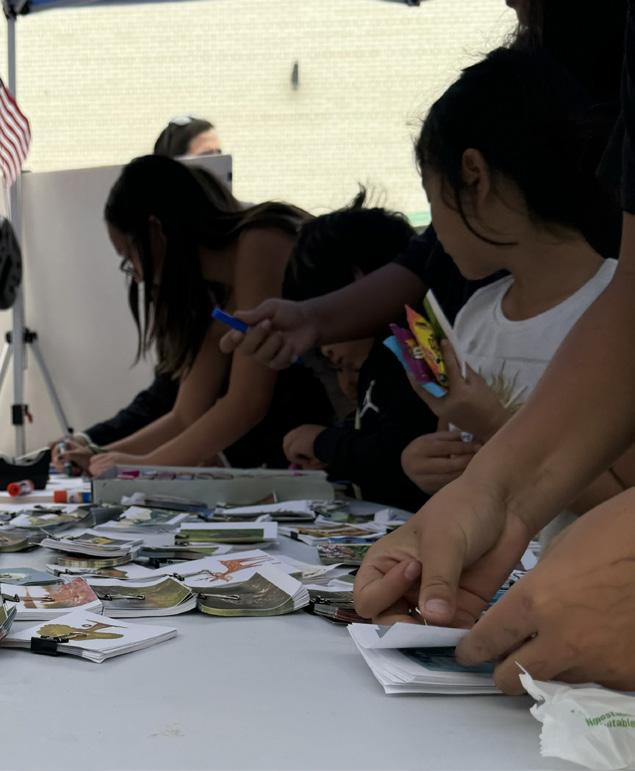
The online survey covered a range of topics, from basic demographics (age, race, neighborhood) to park preferences, accessibility concerns, the condition of key amenities, and recreational programming.
While analyzing park service areas and population growth provides valuable insight into the Eau Claire park system, it is equally important to gather input on community preferences and experiences. The public survey for the City of Eau Claire’s Comprehensive Outdoor Recreation Plan collected feedback from 507 respondents.
Survey responses highlighted a range of ideas and opportunities for facility, amenity, and programming improvements. While individual responses varied, several key themes emerged, helping to shape the overall direction for recommended improvements.
What new recreational programming would you like to see offered in the future?
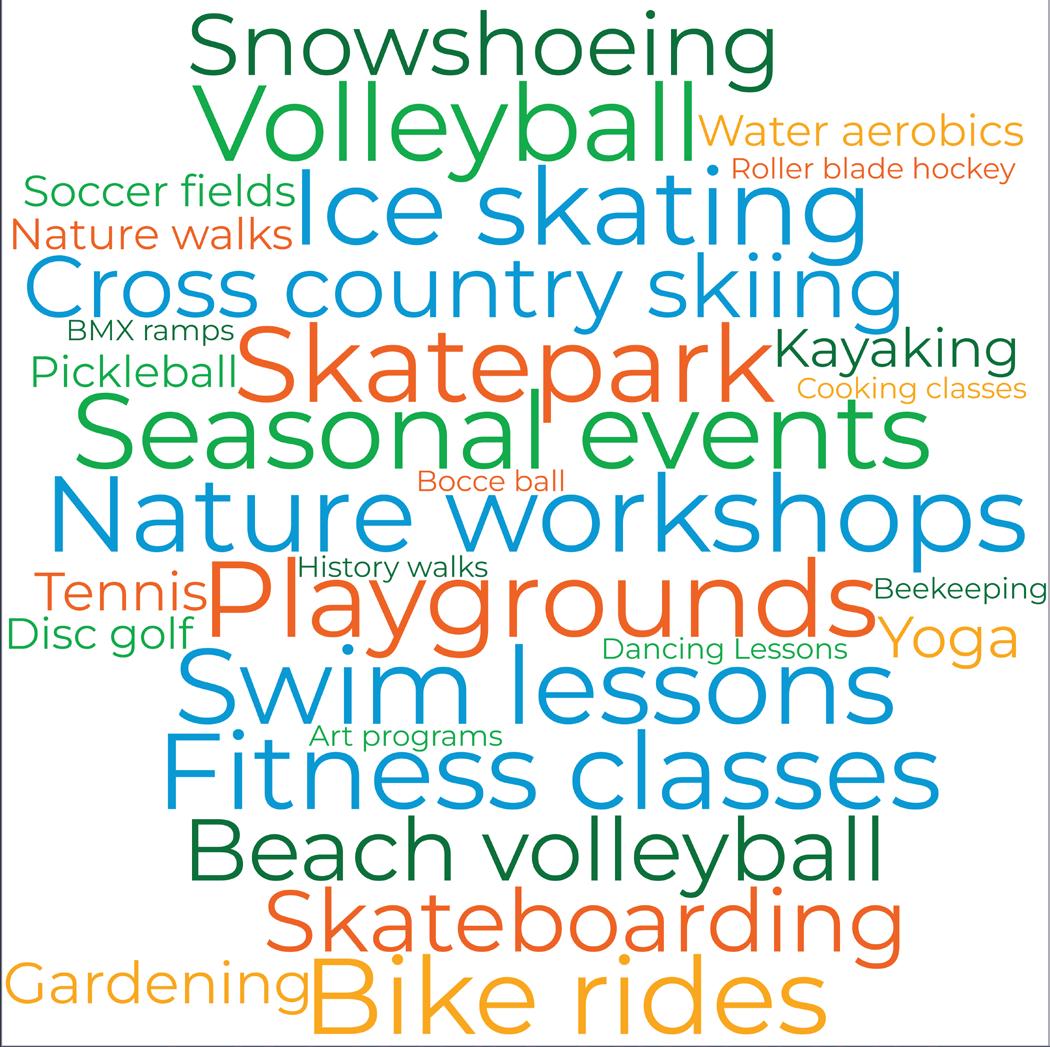
Play areas for children
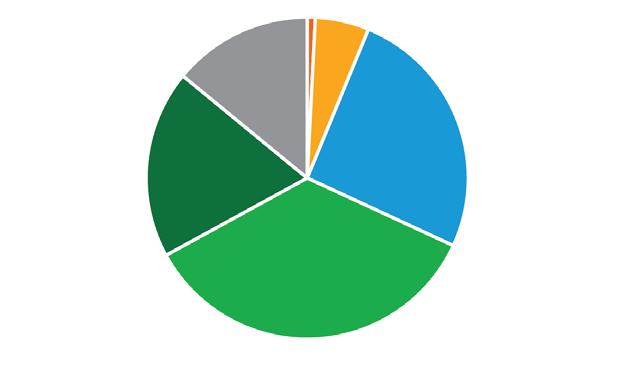
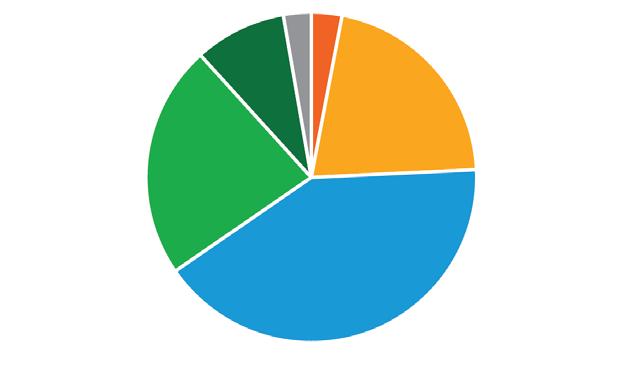

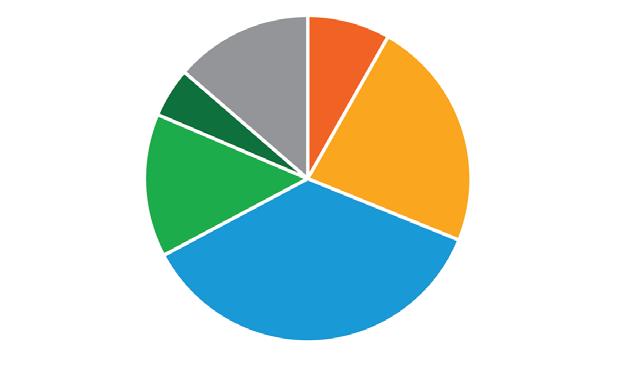

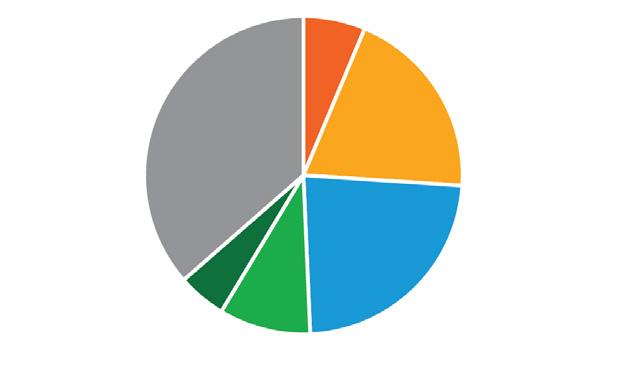
Please rate the following statements.

What do you like to do at the park?

What amenities would you like to see in the park system?
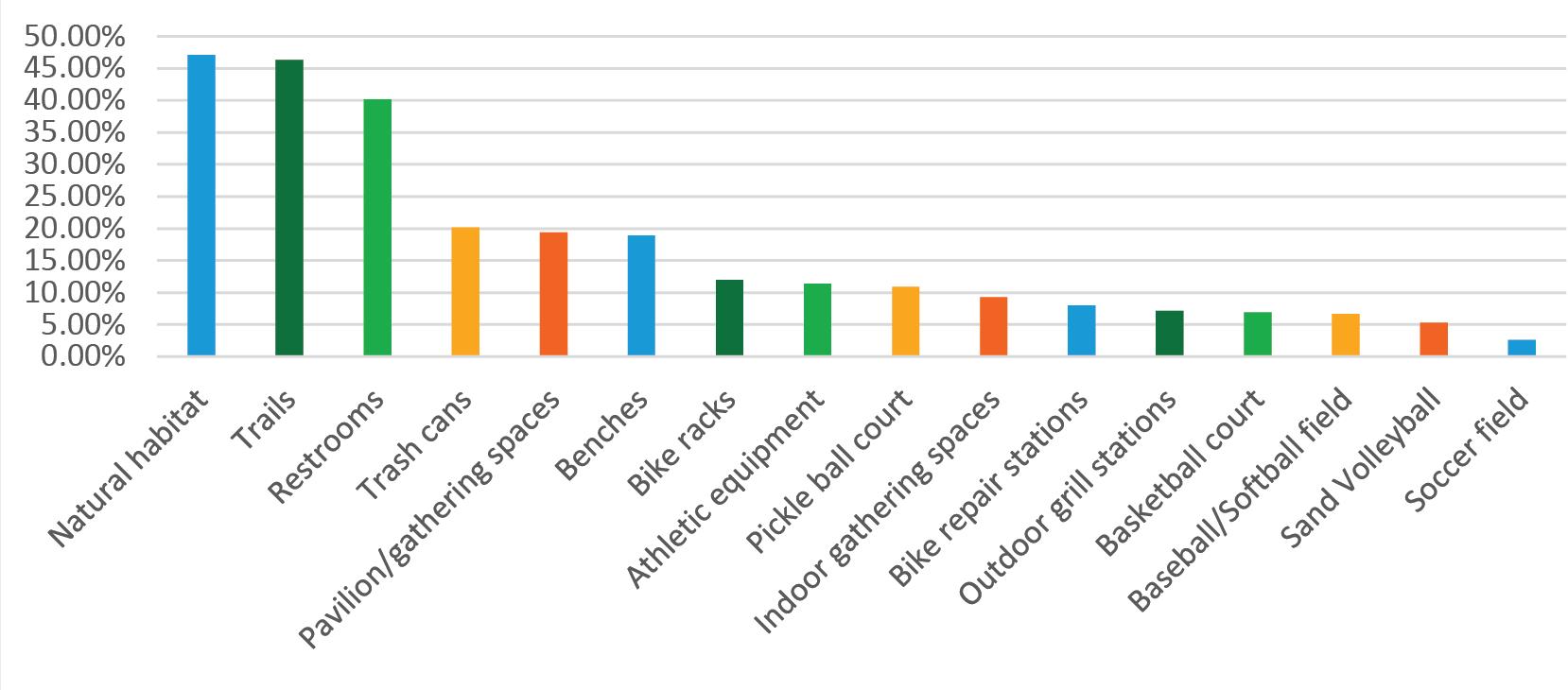
Three community engagement sessions were held to gather, filter and prioritize public recommendations. Discussions took place at popular community events which yielded impactful feedback. In conjunction with the online survey, public feedback was a crucial part of the Comprehensive Outdoor Recreation Plan process.
Community Parks are popular destinations for residents, such as Carson Park, Rod and Gun Park and Phoenix Park.
The Eau Claire community loves biking and paddling and would like to see those facilities be enhanced.
Respondents also identified opportunities for enhancing the park system with the following improvements:
• Improved accessibility within and between park facilities
• Additional seating options, including accessible benches, tables, and chairs
• More trash receptacles throughout the park system
• Increased and upgraded drinking fountains
• Updated restrooms and additional restroom facilities in key parks
• More shaded areas in parks
• Enhanced dog-friendly amenities within existing parks
• More flexible open lawn space in community parks
• Upgraded and modernized playground equipment
People want to live in a City where the current parks are well maintained and invested in.
Recreation amenities are a top priority for investment. People want engaging and safe places to play.
Survey respondents shared several aspects of Eau Claire’s park system that they appreciate, including:
• Walking trails and paths as a highly valued community asset
• Community events and programming opportunities
• Picnic areas that encourage social connections and time in nature
• Birdwatching as a unique way to engage with the park system
• Accessible, reservable community spaces for public events and private gatherings
• Clean and well-maintained parks
• Sustainability practices incorporated into park and recreation facilities
• Increased public lake access and water-related recreational opportunities
As part of the Eau Claire Comprehensive Outdoor Recreation Plan (CORP) update, members of the City Council and the Waterways and Parks Commission participated in a facilitated workshop and stakeholder survey. The intent was to evaluate alignment on park priorities, funding strategies, and system-wide evaluation metrics. During the in-person workshop, participants were intentionally mixed across roles and divided into three groups. Each group worked through one of three real-world park system scenarios: the Deferred Maintenance Dilemma, Reinvest vs. Strategic Repurpose, and Staffing and Operations Constraints. These scenario exercises encouraged cross-perspective dialogue and collaborative problem-solving, surfacing how different approaches might impact level of service, equity, and long-term sustainability.
This structure was important because it moved beyond abstract policy questions and grounded the conversation in practical trade-offs. The group discussions brought nuance to complex topics especially the idea of repurposing parkland. While there were minor differences in individual perspectives, the workshop outcomes largely mirrored the themes that emerged from the stakeholder surveys: a shared desire to improve usability, ensure community-wide benefit, and make smart, equitable investments in the system. Participants generally agreed that a thoughtful repurposing of parkland could be considered provided it demonstrably supports community needs, preserves or enhances equity, and ensures there is no net loss in the level of service across the system. In other words, any repurposed parkland should not create or worsen park access gaps. Rather, such changes must strengthen the system overall and avoid contributing to “park deserts.”
Where the groups align:
• Broad support for improving existing parks over expanding the system.
• Recognition of parks as essential for physical, social, and emotional well-being.
• Openness to new funding mechanisms such as grants, developer impact fees and repurposed park land for community betterment .
• Cautious, case-by-case approach to repurposing underused parkland.
Where the groups differ:
• City Council members are more fiscally cautious, while WWPC members are more willing to increase spending or explore unconventional funding.
• Council members prioritize safety, equity, and usability system-wide; WWPC leans more toward environmental features and on-site park amenities.
• WWPC shows more concern for cultural inclusion and ecological diversity, while Council voices more concern for equitable neighborhood-level investment and housing pressures.
As projects progress, improvements are made, council and board members change alignment between the two groups should be continuously revisited to make efforts more streamlined and avoid potential disagreements in the future.
Based on service area and population analyses, input from the Parks and Recreation Department, and public survey results, City Council and Waterways and Parks the primary recreational needs for the City of Eau Claire include:
• Improved trail wayfinding and signage – Enhancing navigational signage to improve access and connectivity across the trail network.
• Expanded and improved public water access – Increasing access to the Chippewa River, Half Moon Lake, and other water bodies, including improved launch areas, fishing access, and non-motorized recreation opportunities.
• Upgraded trails and nature-based recreation areas – Expanding and improving multi-use trails, incorporating accessible trail surfacing, and preserving natural areas for passive recreation.
• ADA accessibility improvements – Ensuring that key park features, trails, and facilities are accessible to all users, including those with mobility challenges.
• Targeted programming for underserved groups – Expanding recreation programs for middle and high school students, seniors, and adults without children to better serve the diverse community.
• Modernized playground equipment – Upgrading and replacing aging playgrounds to meet current safety standards and provide engaging, inclusive play opportunities.
• Reinvestment in historic parks and aging infrastructure – Addressing maintenance and structural needs at long-standing parks to ensure their longevity and functionality.
• Enhanced park amenities – Increasing the availability of seating, trash receptacles, and drinking fountains throughout the park system.
• Upgraded and additional restrooms – Expanding restroom facilities and improving existing ones to better serve high-use parks.
• Flexible open lawn space in community parks – Creating multi-use lawn areas for unstructured recreation, events, and social gatherings.
• Dog-friendly amenities – Introducing or improving dog-friendly areas, such as designated off-leash spaces and pet waste stations.
• Improved opportunities for socialization and community building – Enhancing gathering spaces and programming that foster community connections.
• Ecological restoration and environmental sustainability – Strengthening conservation efforts, increasing native plantings, and improving habitat diversity within parks.
• Consistent park branding and interpretation – Standardizing park signage, incorporating wayfinding elements, and highlighting the history and significance of Eau Claire’s park system.
• Expanded stormwater management initiatives – Integrating green infrastructure strategies into park design to improve water quality and mitigate flooding impacts.
These priorities reflect the community’s input and align with best practices in outdoor recreation planning, ensuring that Eau Claire’s parks continue to serve residents and visitors effectively.
The following general requirements outline the necessary evaluations of existing infrastructure, plans that need completion, and operational reviews that should be conducted on a system-wide basis.
Develop a wayfinding and signage master plan that identifies standards for construction and detailing and preferred locations at key parks and public spaces.
Hire a parks and recreation specialist to review existing operations and facilities to streamline operations and increase efficiency.
Date: 2025
Priority: Medium
TOTAL:$55,000
Date: 2025
Priority High
TOTAL:$45,000
Sports and Athletics
Develop a sports and athletics plan for the Chippewa Valley that assesses existing facilities and gives recommendations for improvements and structure.
Date: 2026
Priority: High
SUBTOTAL:$45,000
Seating Replacement
Establish a revolving fund to help replace existing wood / metal picnic tables with lower maintenance tables and chairs.
Land and Water Access
Hire a consultant to create a webbased GIS tool aimed at building awareness and accessibility of park amenities and waterway access.
Impact Fees
Work directly with city colleagues to establish continuous impact fees to support park maintenance and upkeep.
Regional Trail / Network
Hire a trail planning consultant to analyze the existing trail system throughout the Chippewa Valley and make recommendations for improvements.
Building Improvement Fund
Establish a park building improvement fund that is updated annually to improve and add to the existing park facilities.
Date: Cont. Date: 2026 Date: 2025 Date: 2027 Date: 2029
A comprehensive assessment of all 55 parks was conducted using a combination of on-site evaluations and available GIS data. Each park was rigorously analyzed through a 24-point ranking system that measured various aspects of park usability and its overall value to the community. Key criteria included accessibility, play opportunities, and available programming, providing a detailed understanding of what each park offers. These categories were then weighted based on extensive community input, gathered through online surveys, user group meetings, and interactive community engagement events. The feedback from these efforts ensured that the priorities of local residents were central to the evaluation process. Specific recommendations for improvements at each park are detailed in the following section, which also includes strategic approaches for implementing these enhancements in alignment with community needs and desires.
Grover
McDonough
Mitscher
Newall
Oakwood
Sundet
Westridge
Zephyr
Carson Park
Eau Claire Soccer Park
Fairfax Park
Forest Street Park
Jeffers Road Athletic Fields
Mount Simon Park
Northwest Community Park
Otter Creek Community Park
Owen Park
Phoenix Park
Pinehurst Park
Riverview Park
Rod and Gun Park
Jaycette Memorial Park
MacArthur Park
Randall Park
University Park
Wilson Park
Wold Court Park
Haymarket Plaza
Archery Park
Bayview Park
Domer Park
Hobb’s Landing
Kappus Park
Kyes Park
Mount Tom Park
Mount Washington Open Space Wilson
Vestreheim
Park
Park
Park
Park
Park
Park
Park
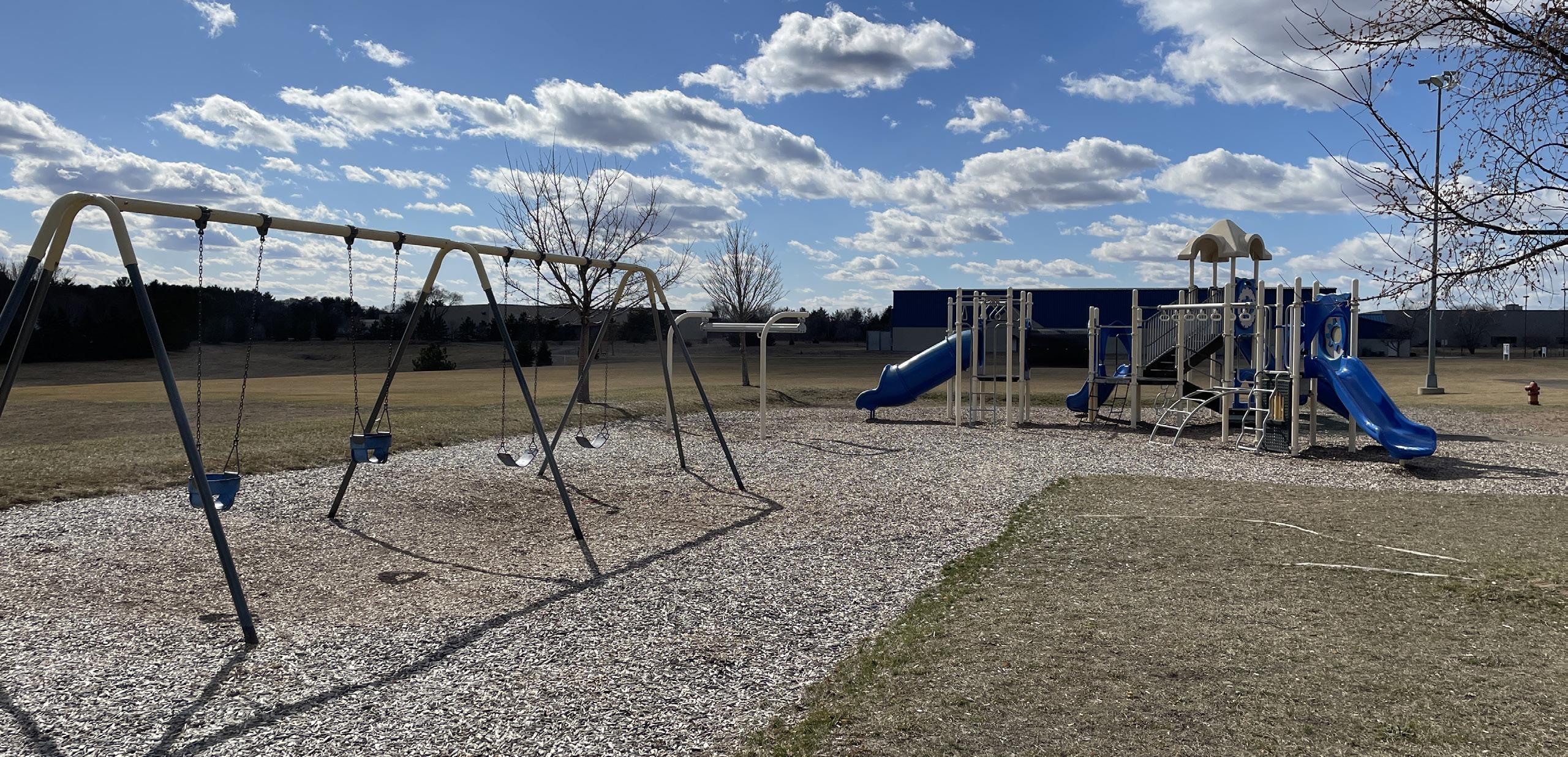
Neighborhood parks are vibrant spaces designed for a variety of recreational activities, often catering to more intensive uses. These parks typically feature amenities such as athletic fields, sports courts, playgrounds, skate parks, trails, picnic areas, and splash pads. Unlike passive urban parks, neighborhood parks are classified as active-use facilities, serving residents within a half-mile radius. The primary goal is to ensure that all nearby neighbors have convenient access to a high quality, well-equipped park.
Neighborhood Parks Include:
• Boyd Park
• Buffington Park
• Cameron Park
• Cannery Park
• County Farm Park
• Demmler Park
• Grover Heights Park
• Half Moon Beach
• Lakeshore Park
• McDonough Park
• Mitscher Park
• Newell Park
• North River Fronts Park
• Oakwood Hills Park
• Roosevelt Neighborhood Park
• Sundet Park
• Westridge Park
• Zephyr Hill Park
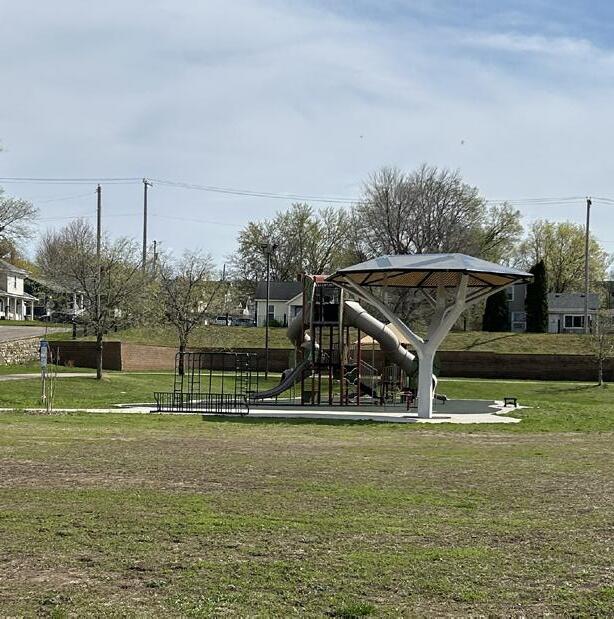
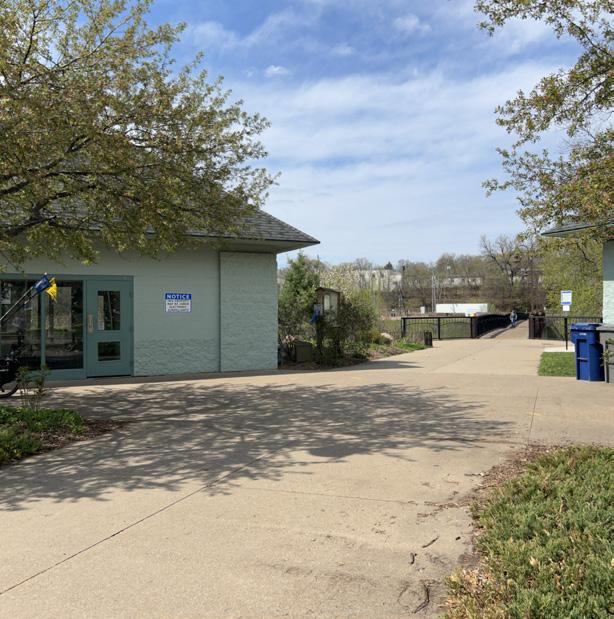
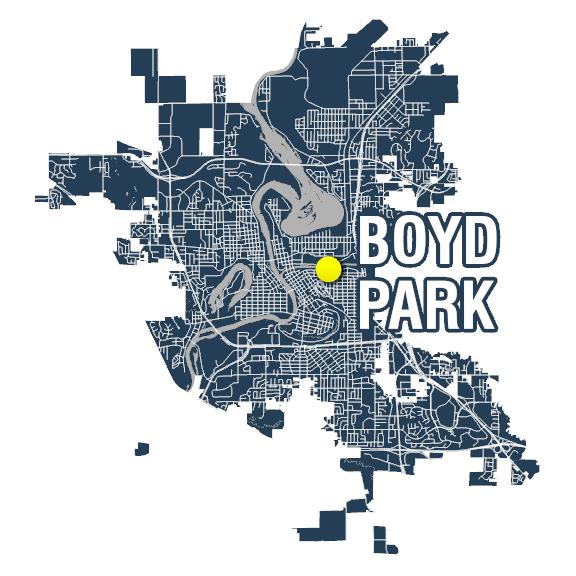
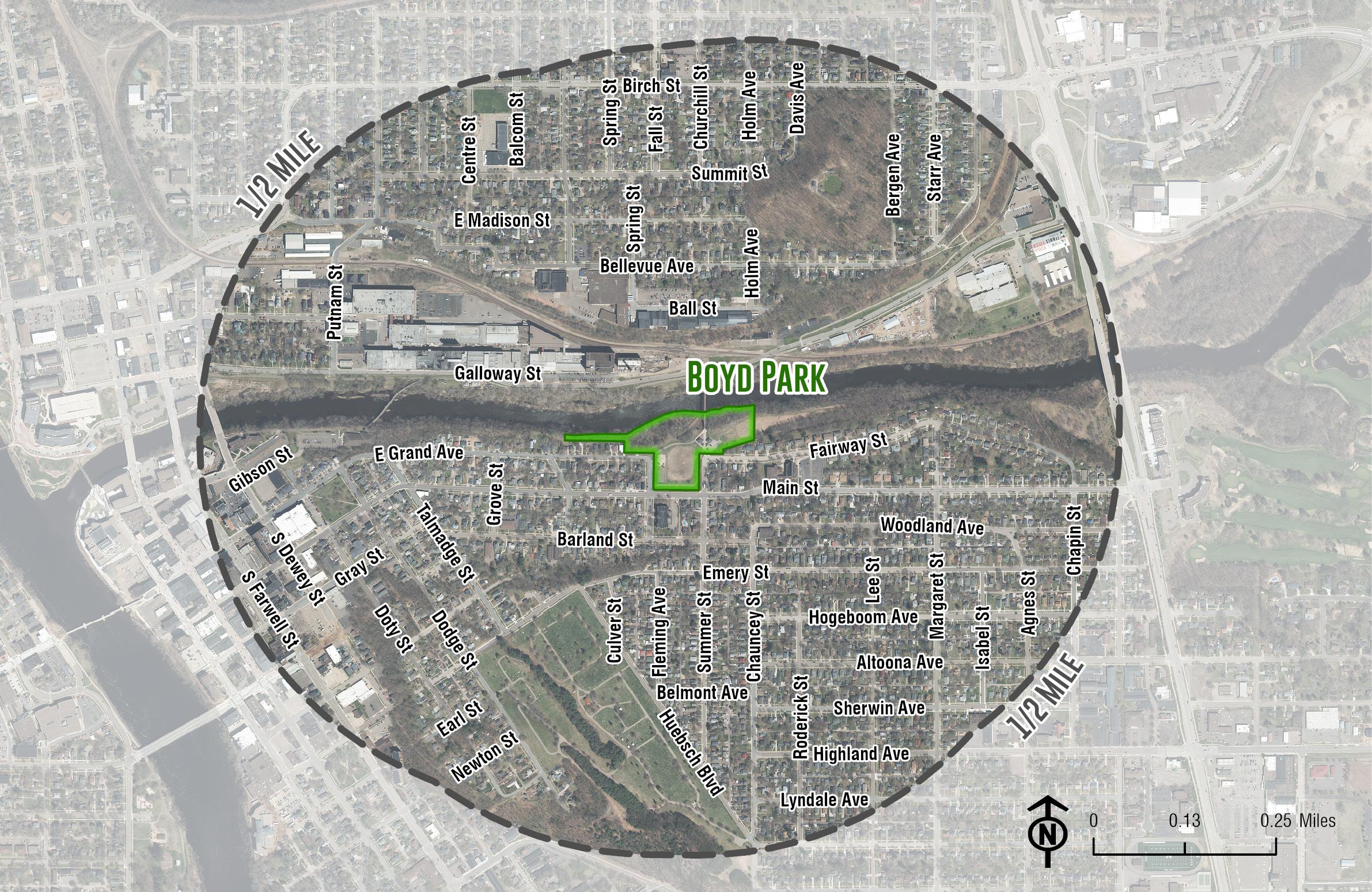
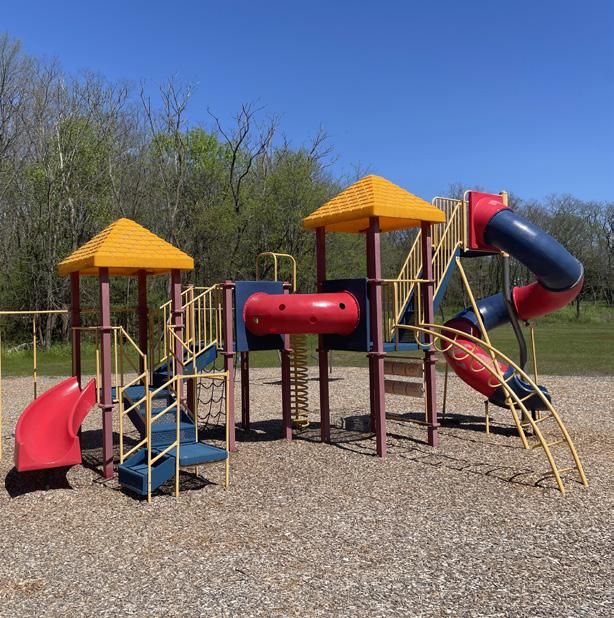

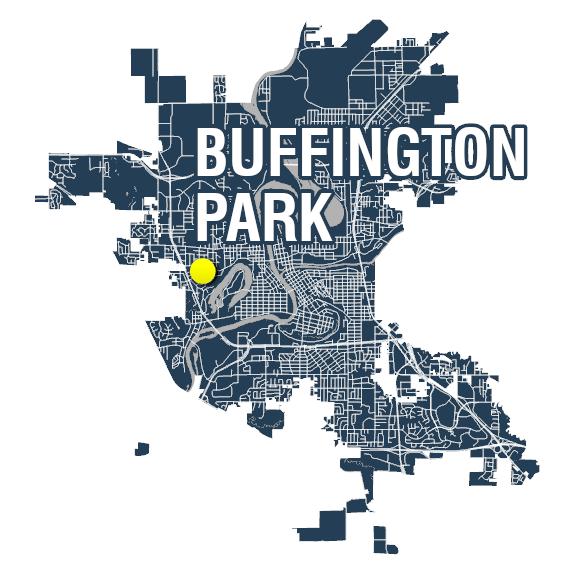
The existing playground and critical trail connections provide a great opportunity to connect the neighborhood.
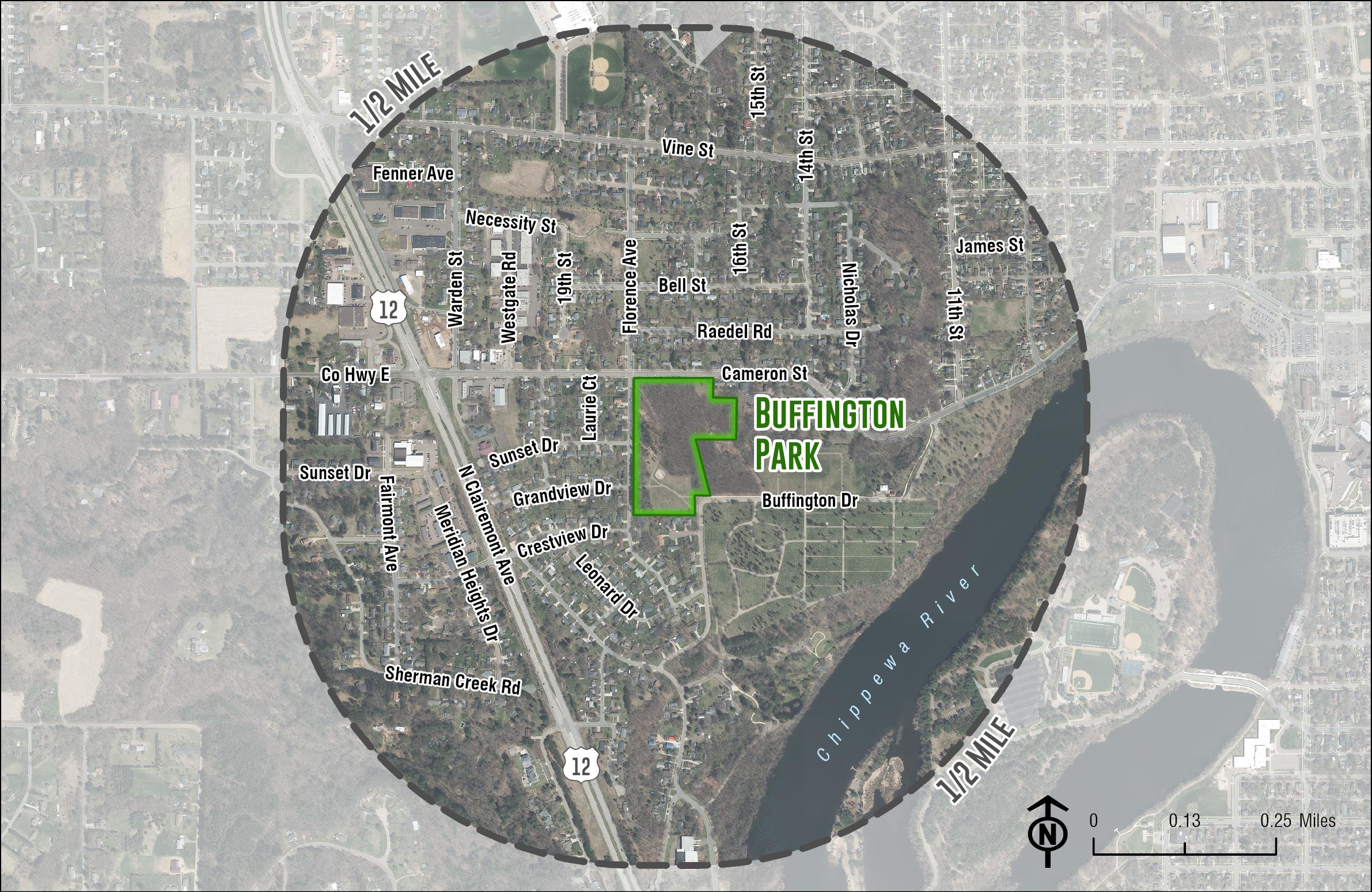
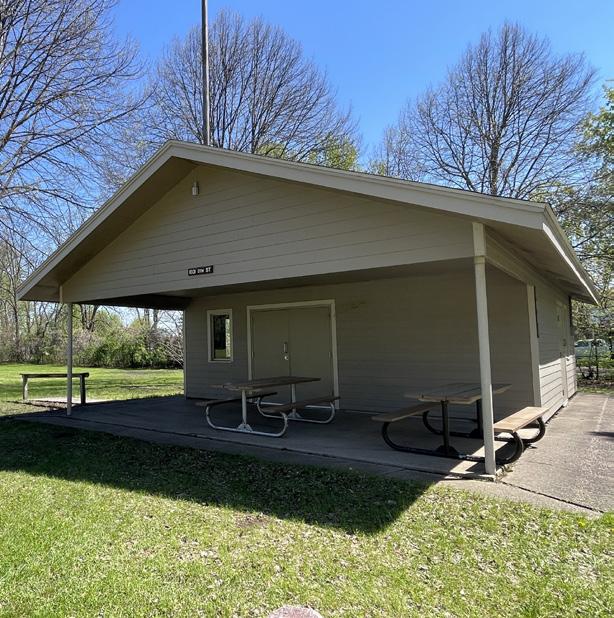
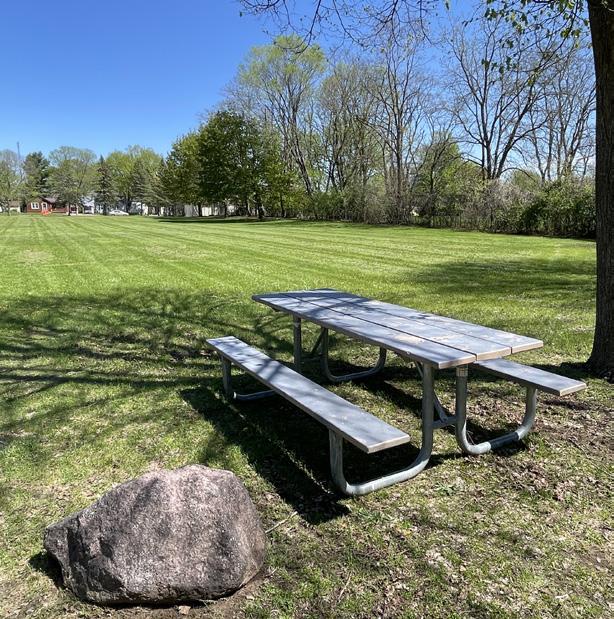
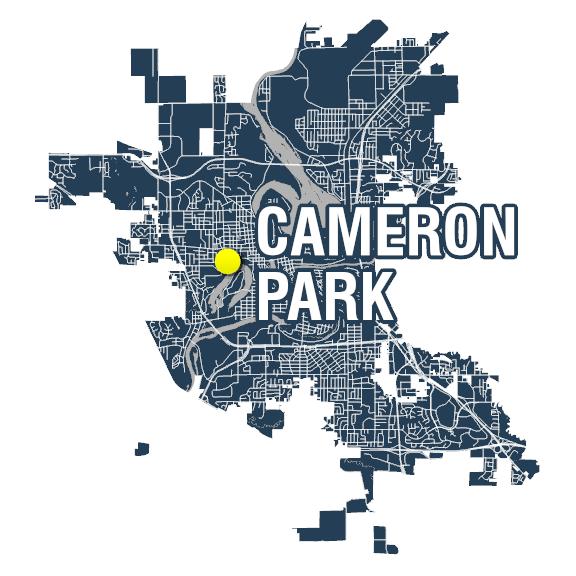
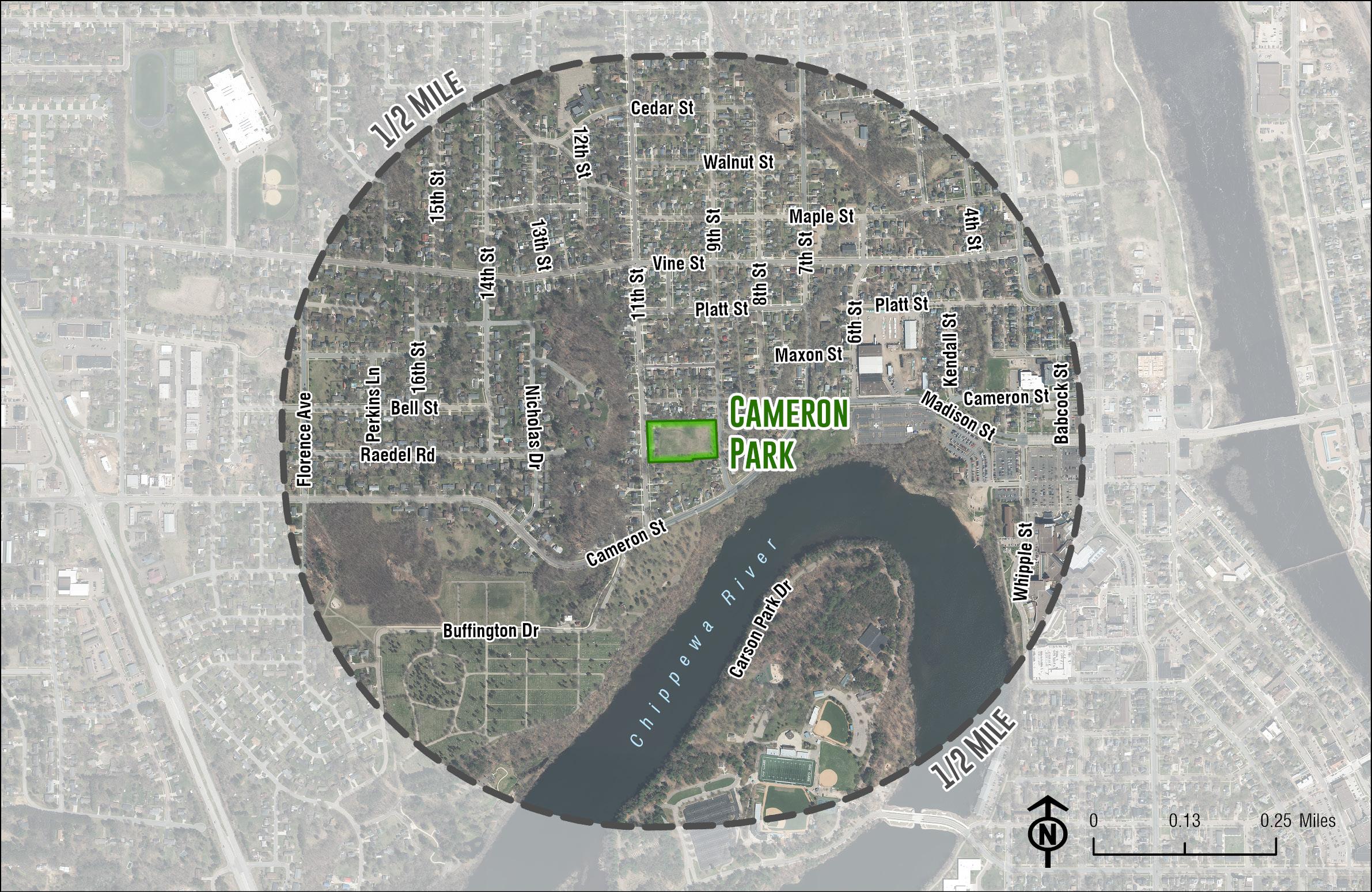
Eau Claire Upper Westside Neighbourhood
The existing building is located in close proximity to key elements like the playground and basketball court, which makes for an excellent space. With plenty of space the main opportunity lies in flexibility for future programming, while the primary constraint is providing clear and concise circulation.
between Half Moon Lake and Buffington Park, Cameron Park is another neighborhood park within an established neighborhood.
Cannery Park is a 14.3-acre neighborhood park north of West Madison Avenue and adjacent to the Chippewa River. The park is currently under construction, with upgrades including facilities such as a skatepark, multi-use trails, a playground and a sledding hill.
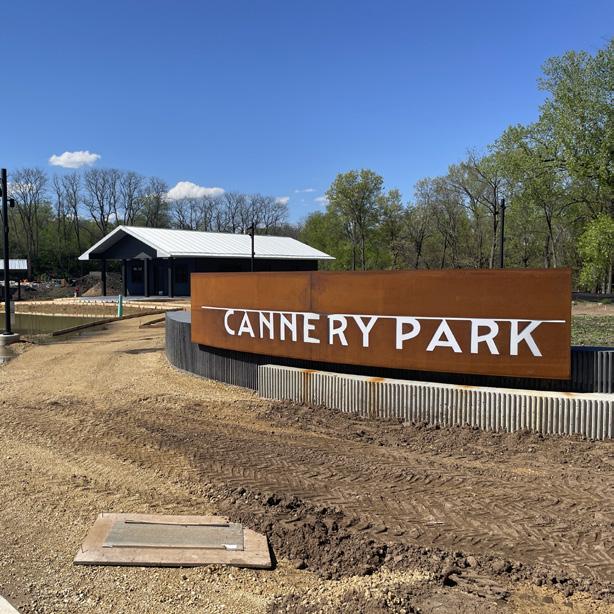
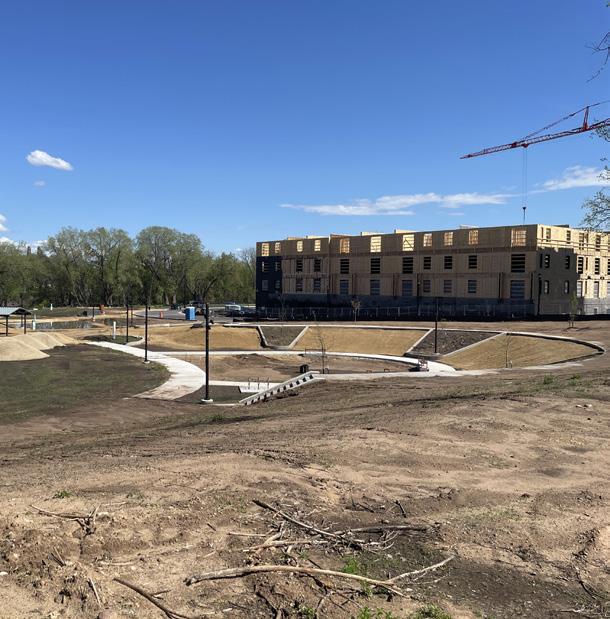

Key Features Opp. and Constraints
See planning and construction documents. A multi purpose park with great amenities and booming location. Located in the heart of the Cannery District, this neighborhood park is essential for serving the west side residents.

4 out of 55 parks West Riverside Neighborhood Usability Rank Neighborhood Association
Recommended Improvements
1/2 Mile Population = 4,999 (3,204 people per square mile) Population Breakdown
Events and Programming: to be determined. Accessibility and Connectivity
7 out of 55 parks
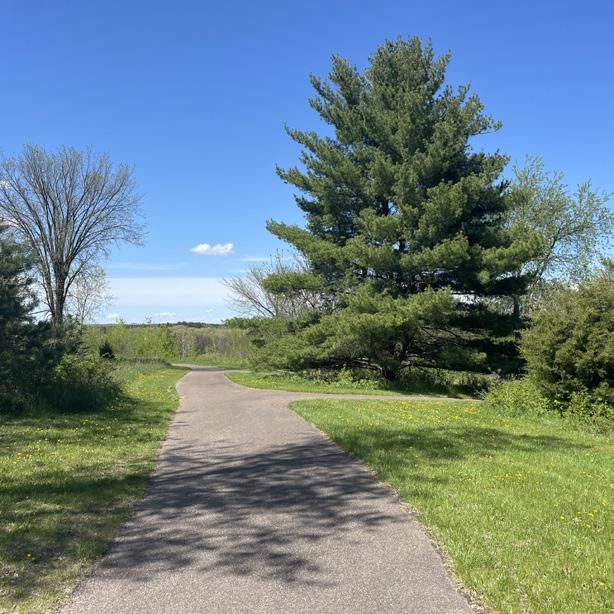
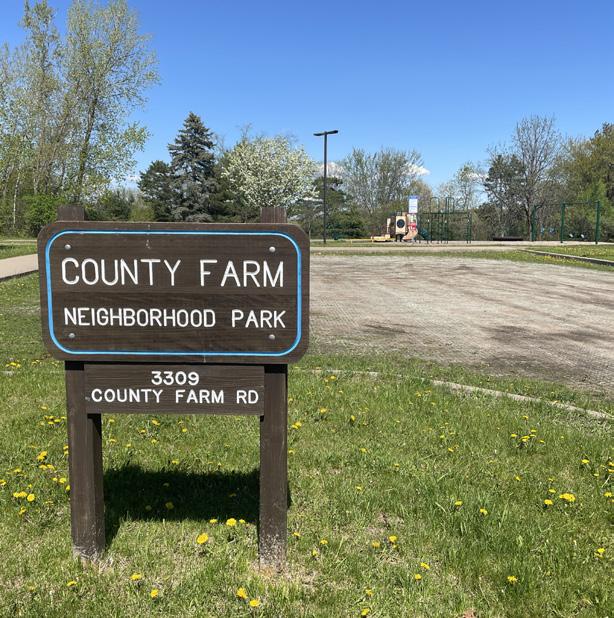

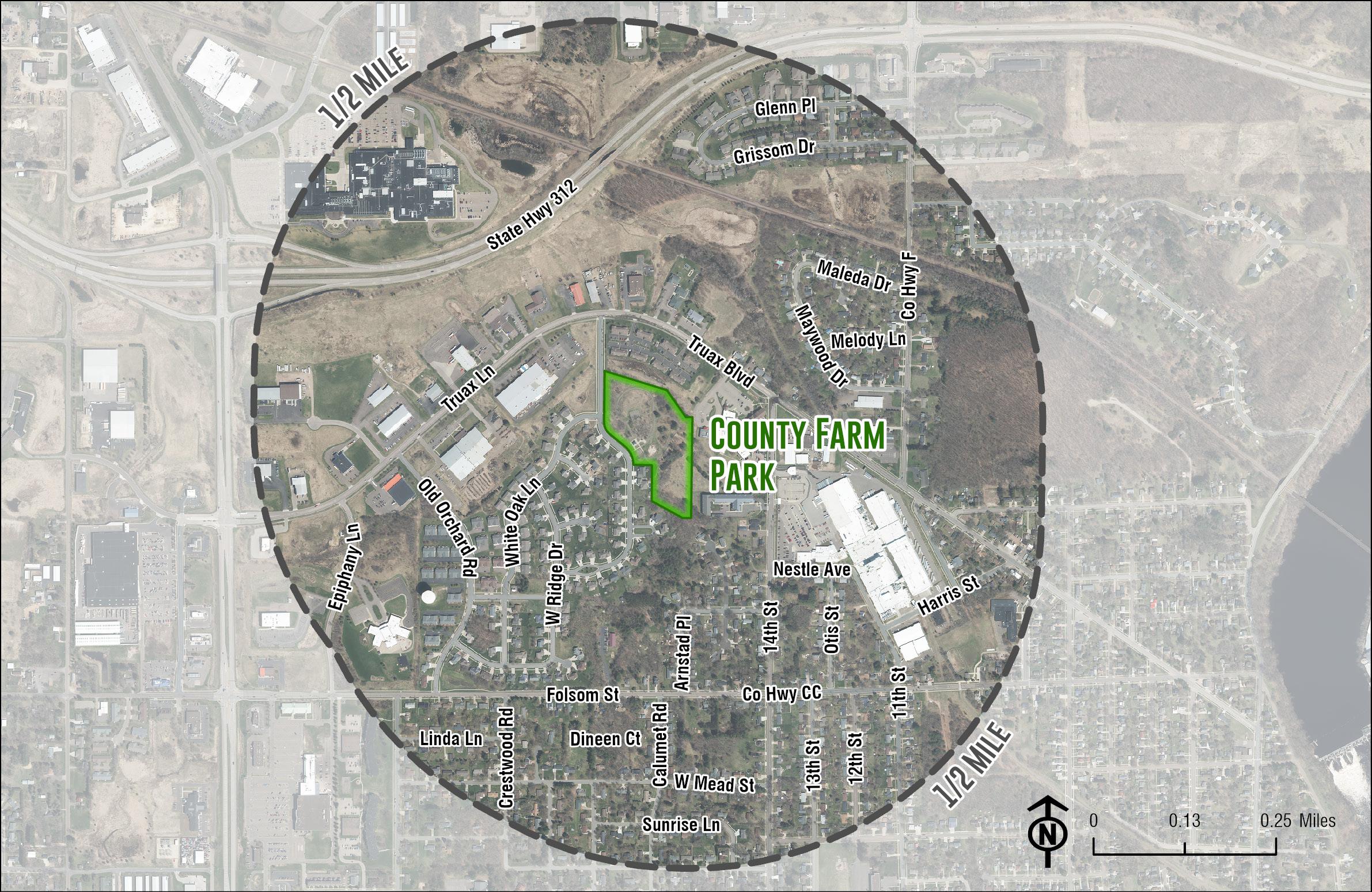
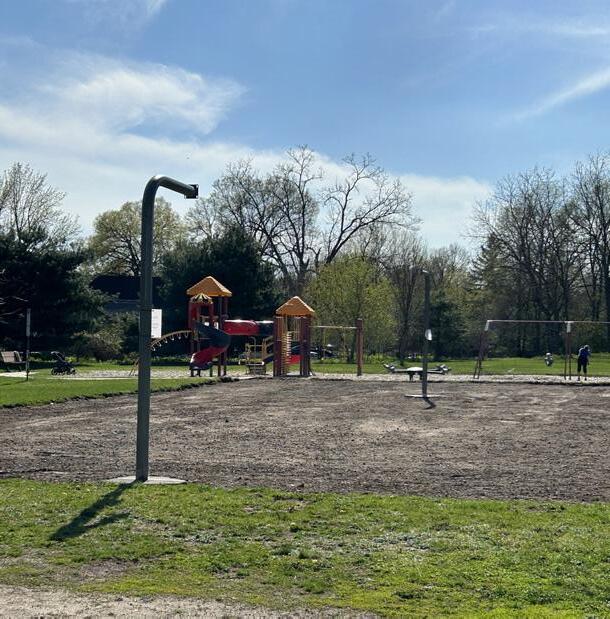
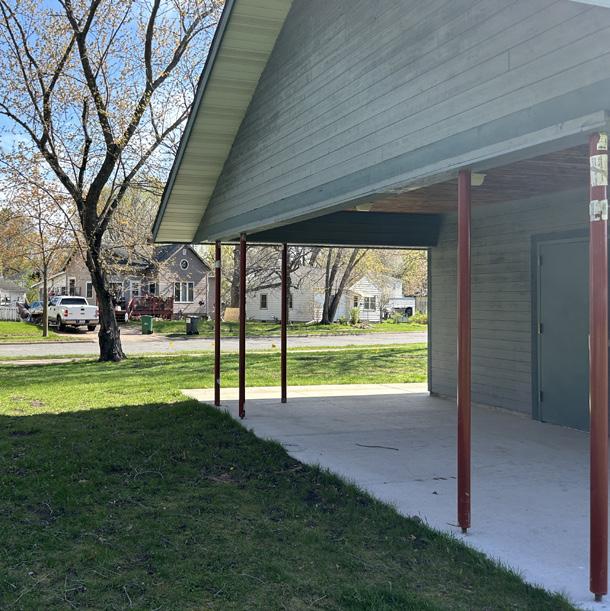

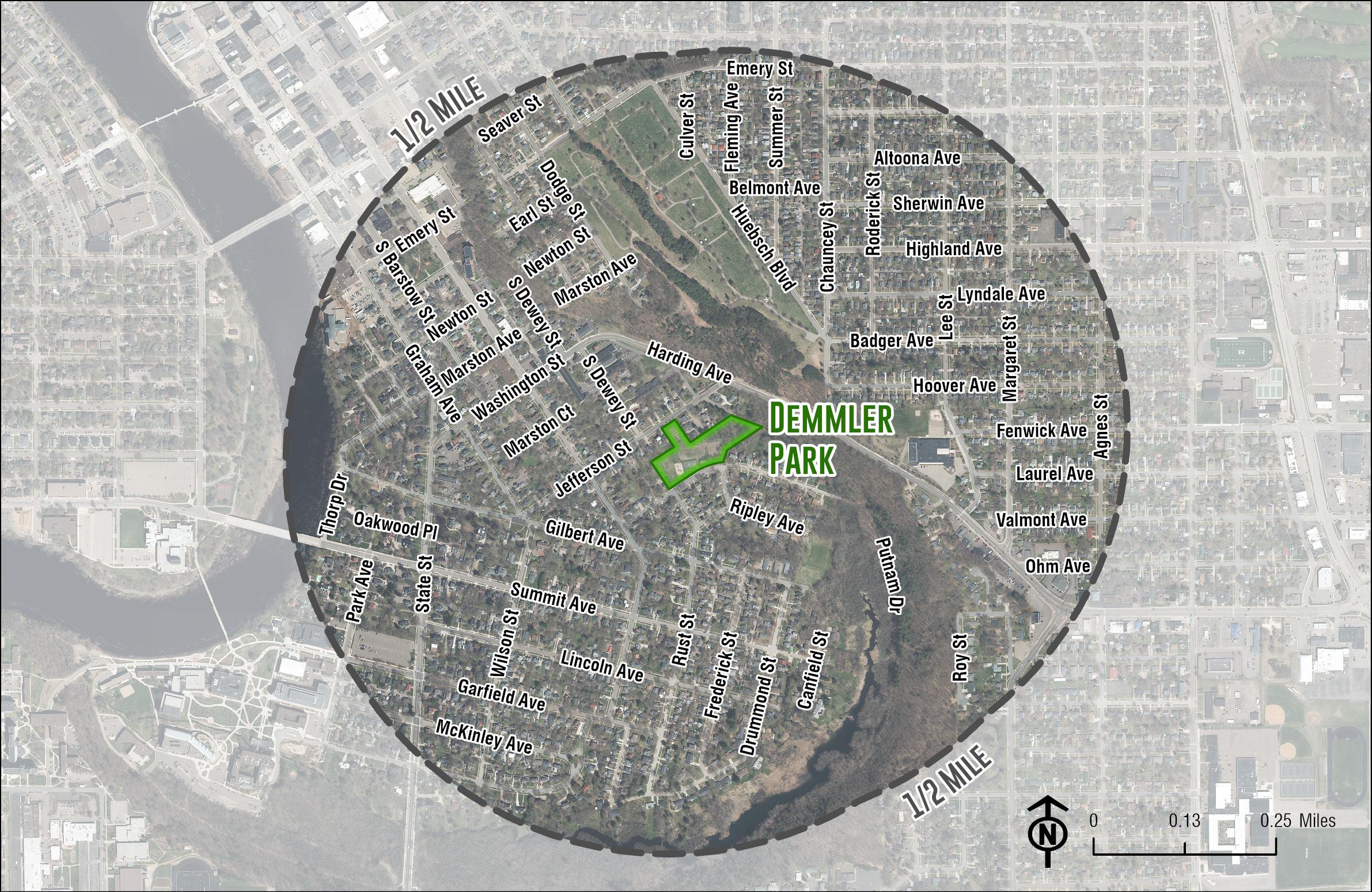
Grover Heights Park is a 12.3-acre, neighborhood park adjacent to Eau Claire Soccer Park. Facilities include a park shelter, a basketball court and play equipment.
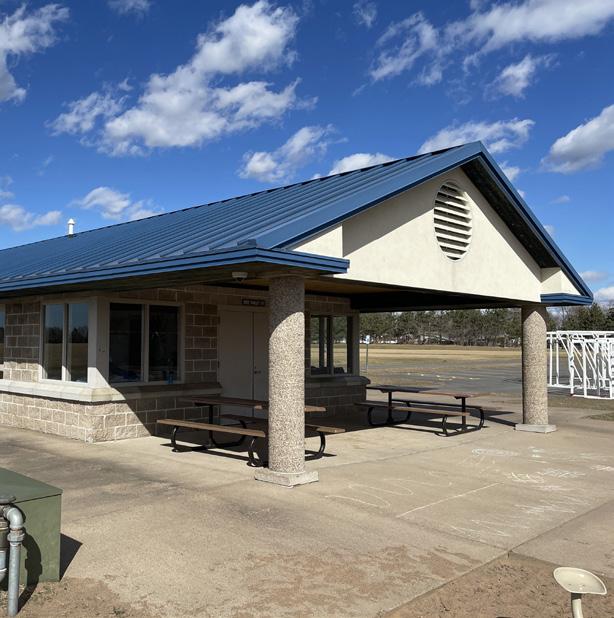

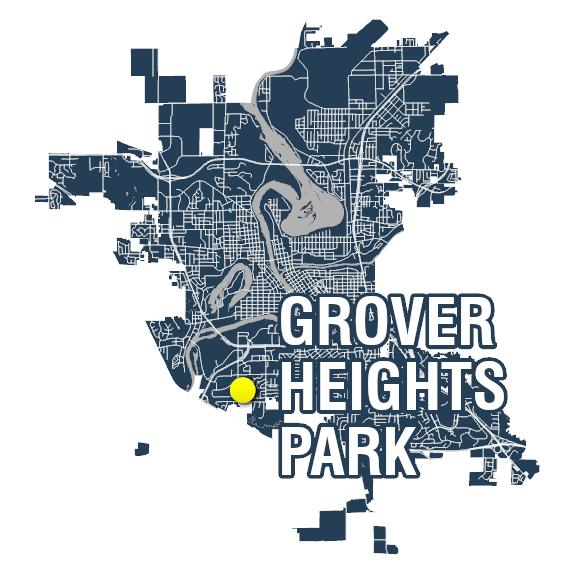
Features Opp. and Constraints
The existing public shelter, playground and surrounding connectivity to all essential elements. Utilizing the southern land for more ecological enhancements presents a great opportunity, though limited parking access is a constraint.
Located adjacent to the Eau Claire Soccer Park, this park is uniquely situated to serve residents of the area while also attracting visitors from the soccer complex.
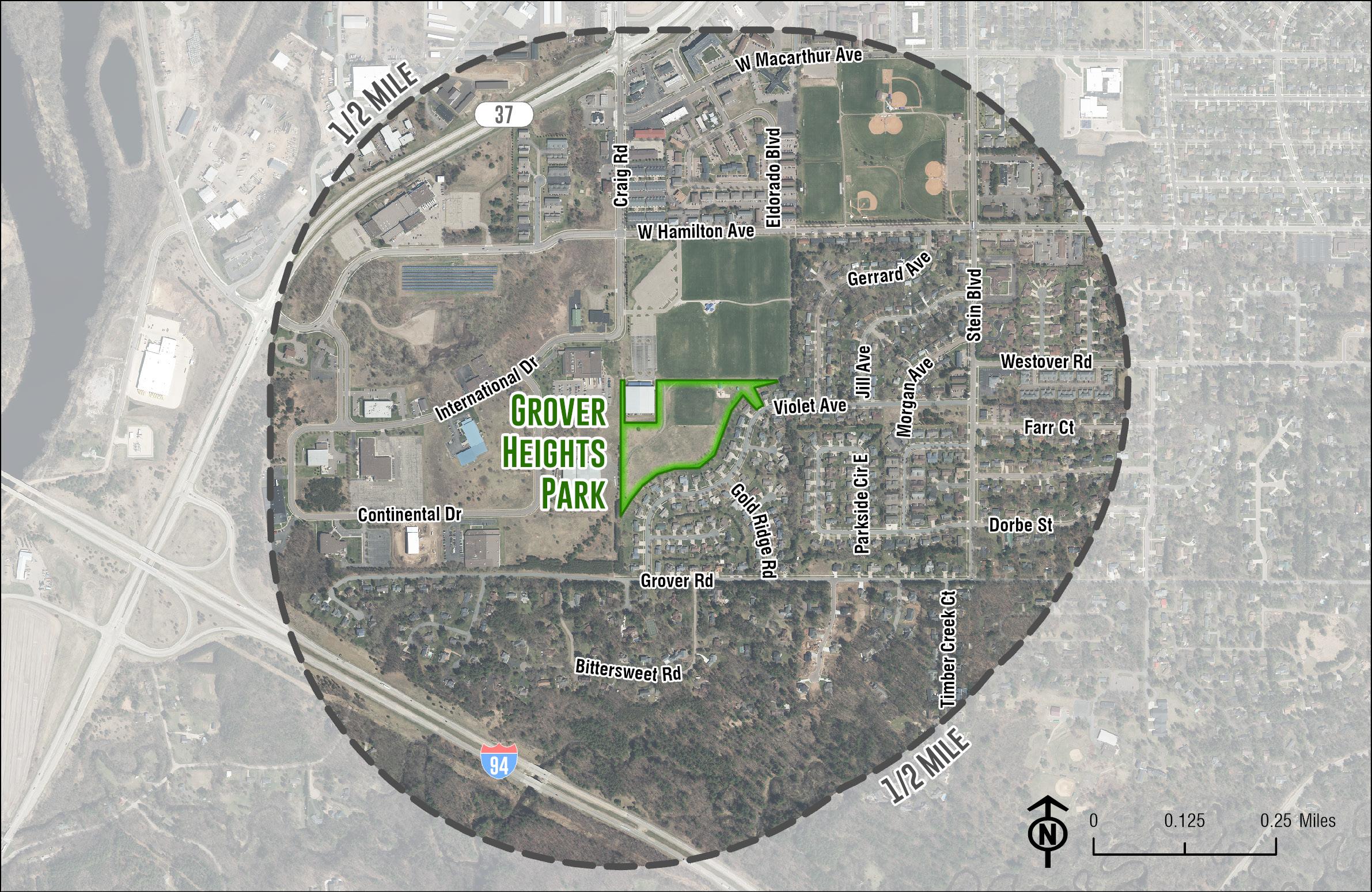
Add seating amenities, 2-4 benches and 2-4 tables with chairs Wheel elements added to play area Improve
2-5 and 5-12,
24 out of 55 parks 42 out of 55 parks
Association 1/2 Mile Population = 3,554 (2,115 people per square mile)
Events and Programming: Public Shelter Reservations.
Half Moon Beach is a 2.2-acre special area located at the western terminus of Randall Street and adjacent to the Chippewa River. Facilities include a public beach, boat launch and restroom building.
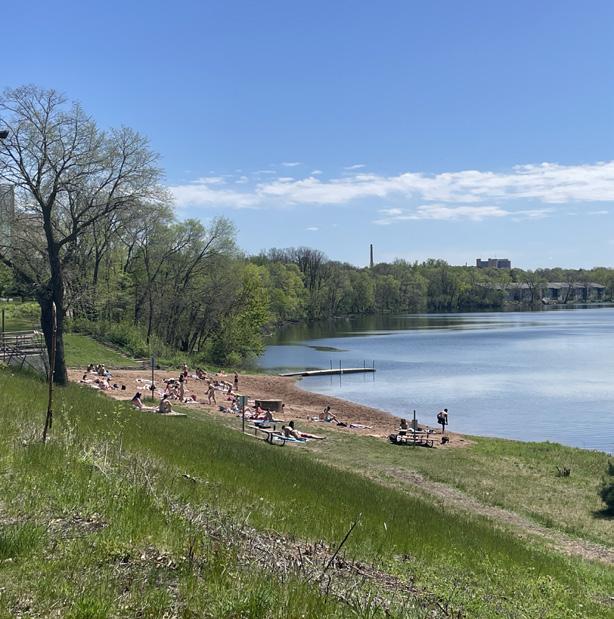
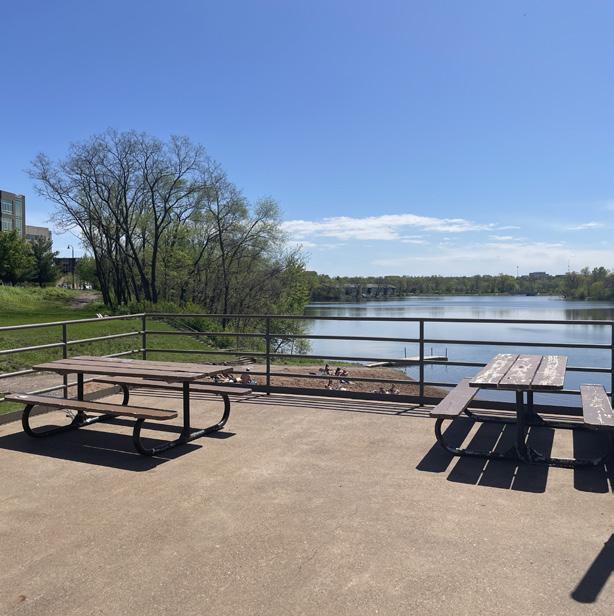
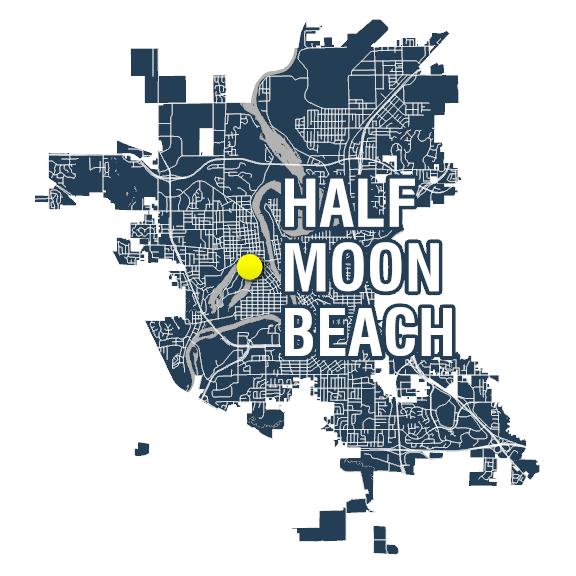

Half Moon Lake, the beach and already established programming are key features to build upon. Water access and a beach are the greatest opportunities for this park. The challenge will be working with existing infrastructure and topography. Located along the north side of Half Moon Lake and right near an up and coming residential neighborhood.
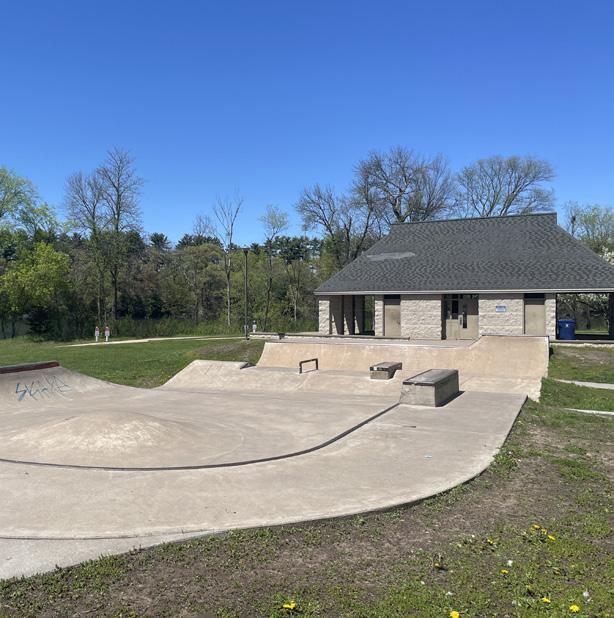
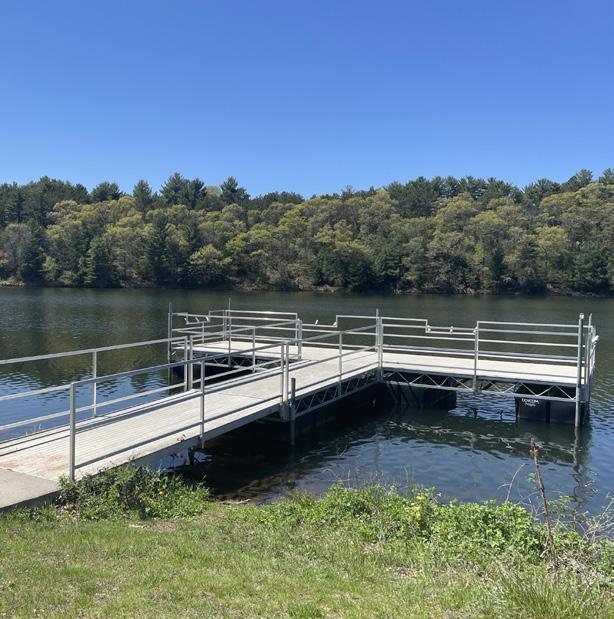

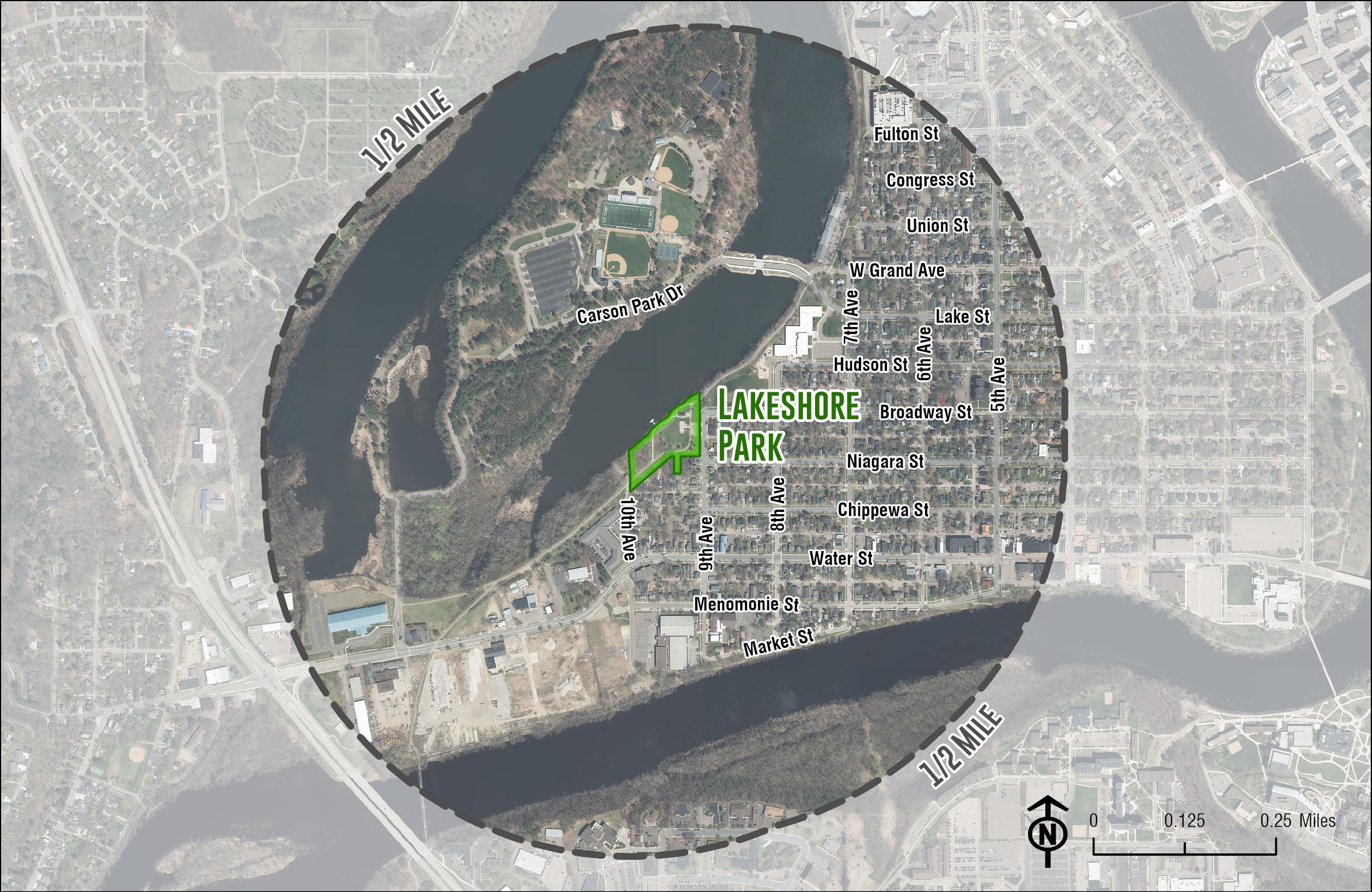
McDonough Park is a 16.2-acre neighborhood park on Centre Street adjacent to Dells Pond Recent improvements to the park include pickleball courts, bocce ball courts and play equipment.
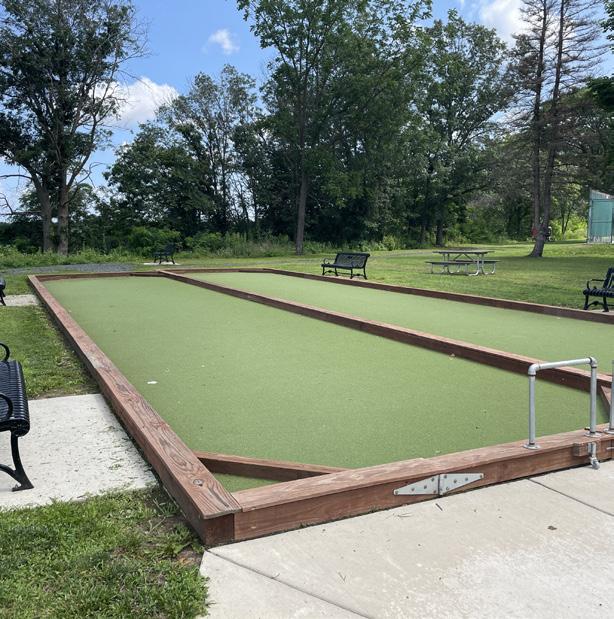
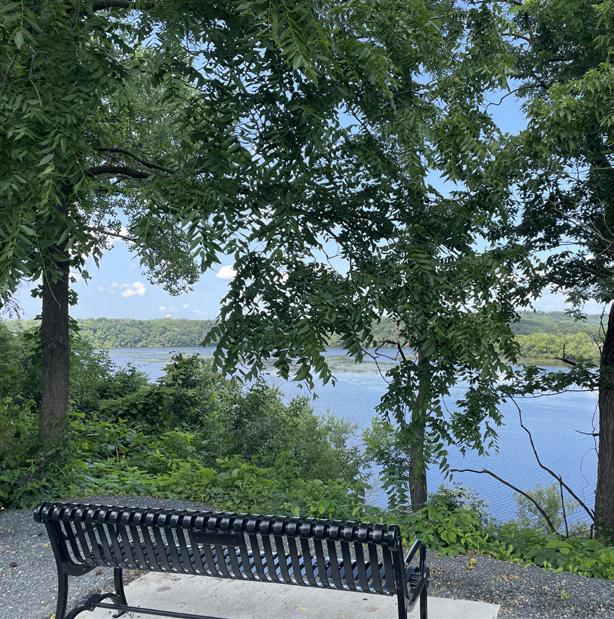
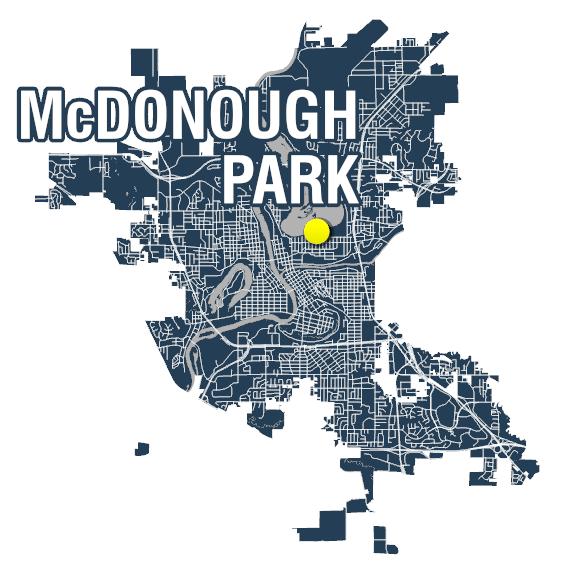
With a multitude of recent park upgrades there are a variety of amenities in this space that encourage visitors to stay longer. The linear nature of this park, situated between an existing body of water and railroad tracks, presents both opportunities and constraints. Located on the south side of Dells Pond, McDonough Park serves a variety of community members and provides access to great programming.

Usability Rank Neighborhood Association
2 out of 55 parks 9 out of
Population
Breakdown
1/2 Mile Population = 4,613 (2,307 people per square mile)
North Side Hill Neighborhood
Events and Programming: Chippewa Valley Pickleball Club events, ECPRF activities, public shelter reservations.

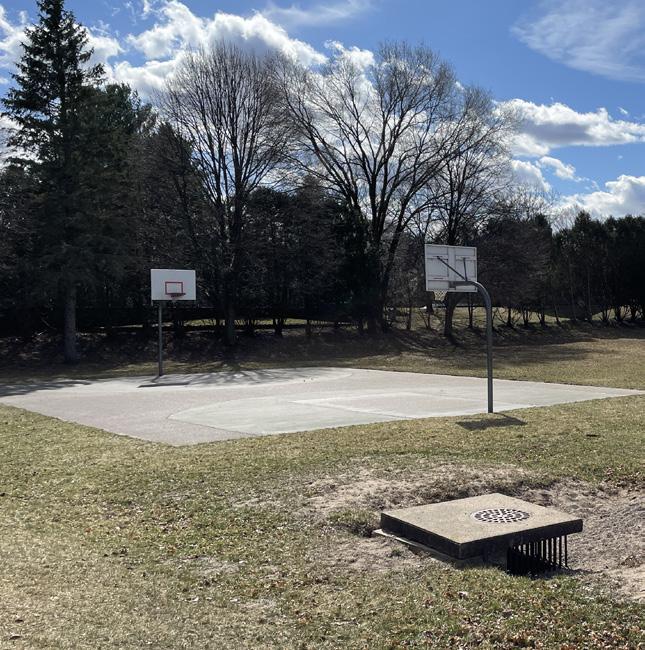

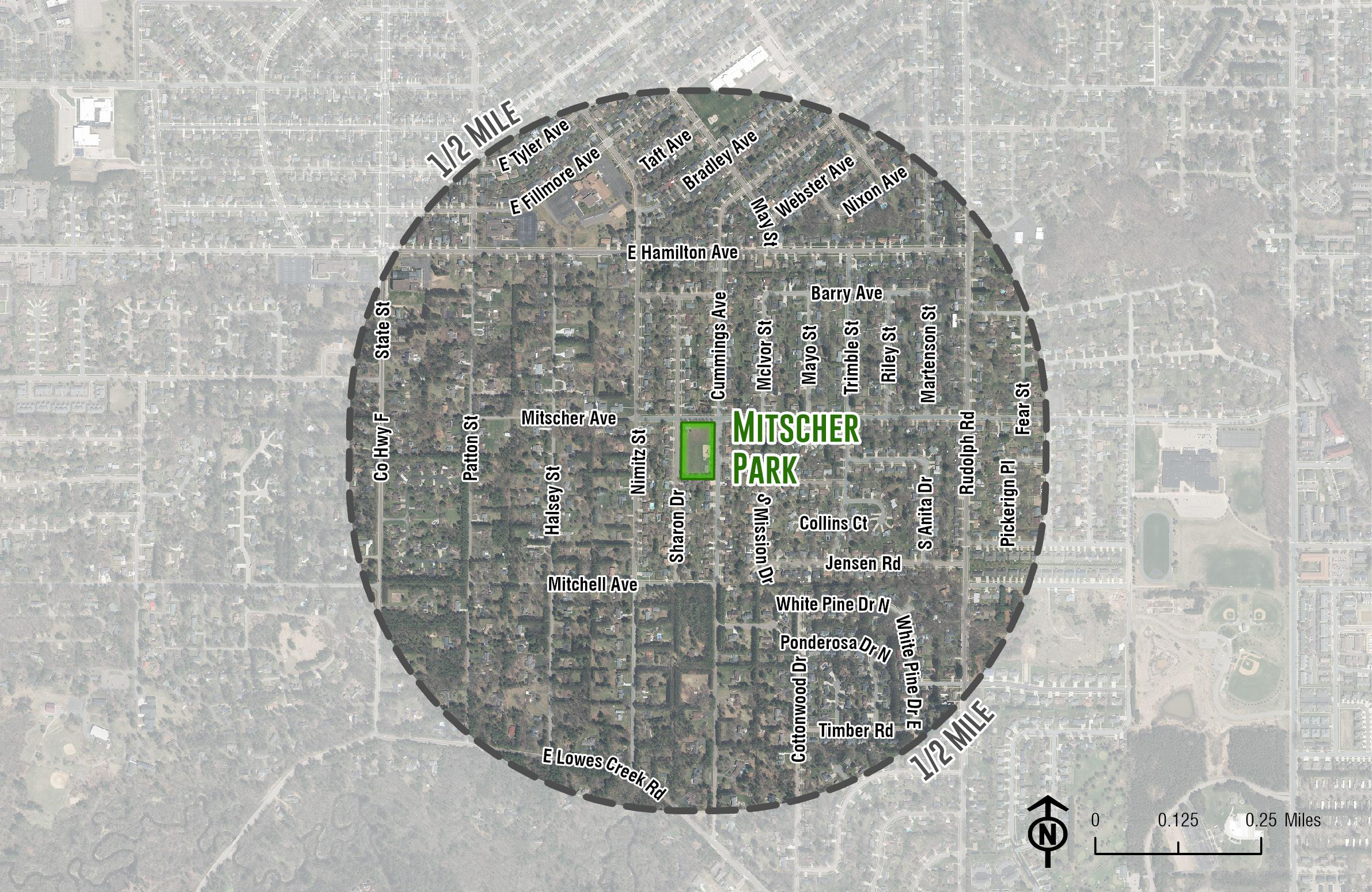
Newell Park is a 2.8-acre neighborhood park at the intersection of Ferry Street and 1st Reserve. Facilities include a basketball court, a softball field and a recently constructed playground.
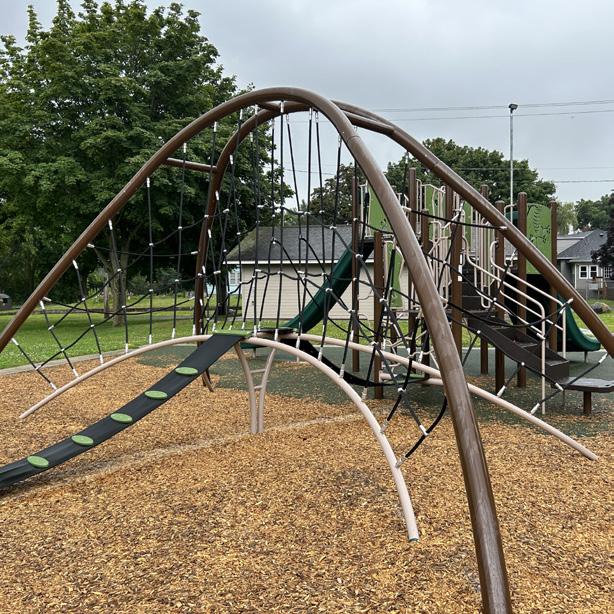
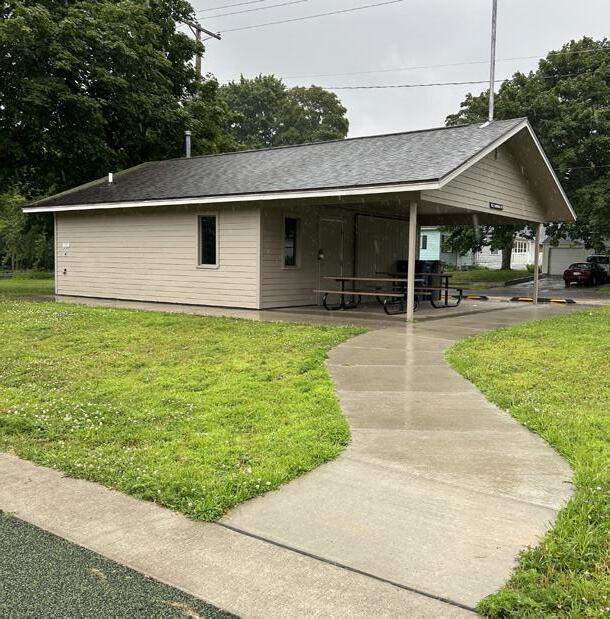

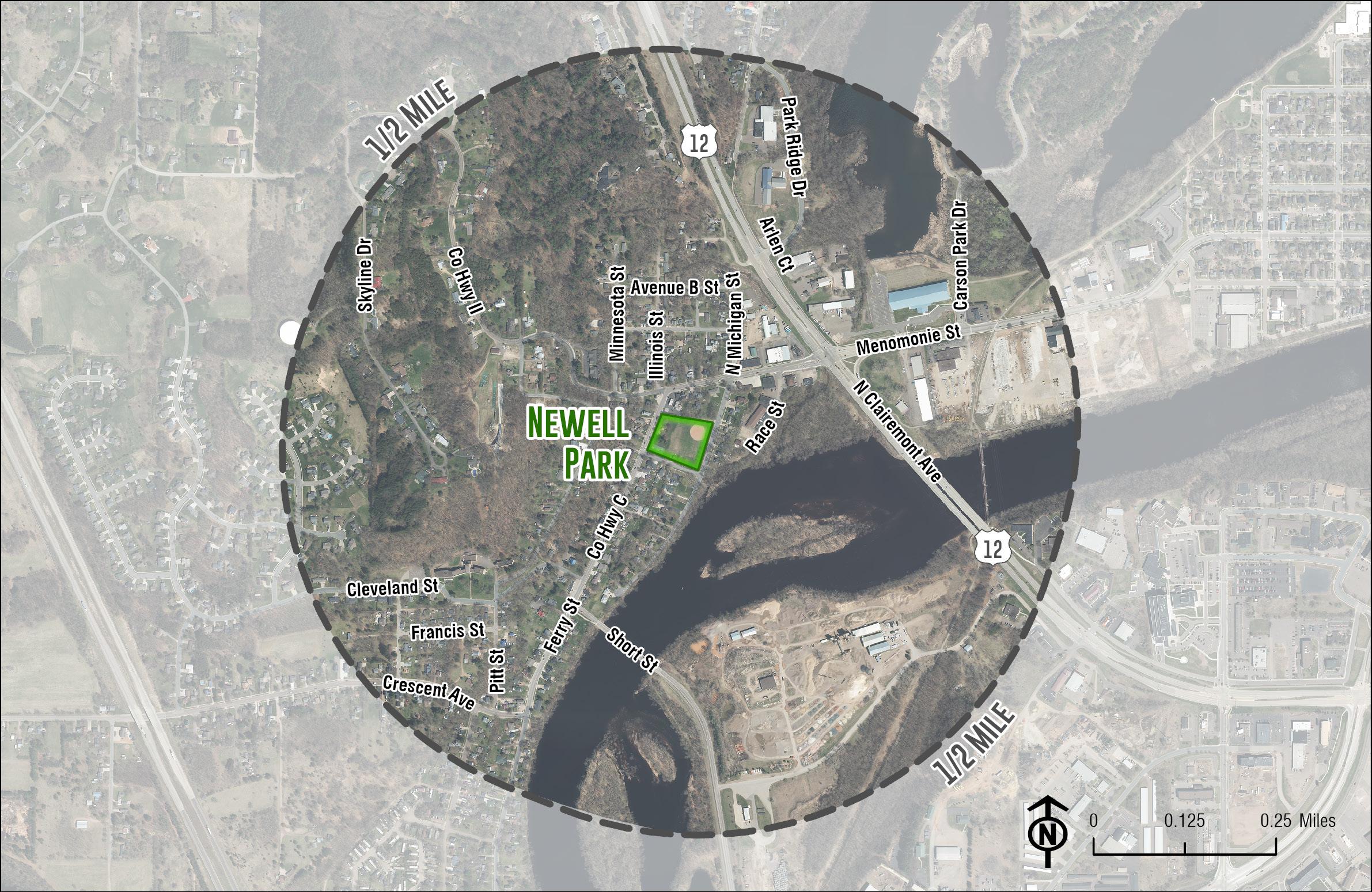
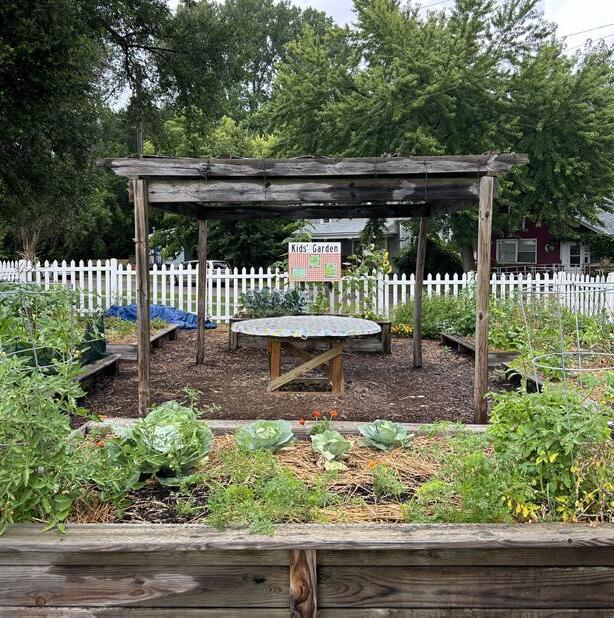


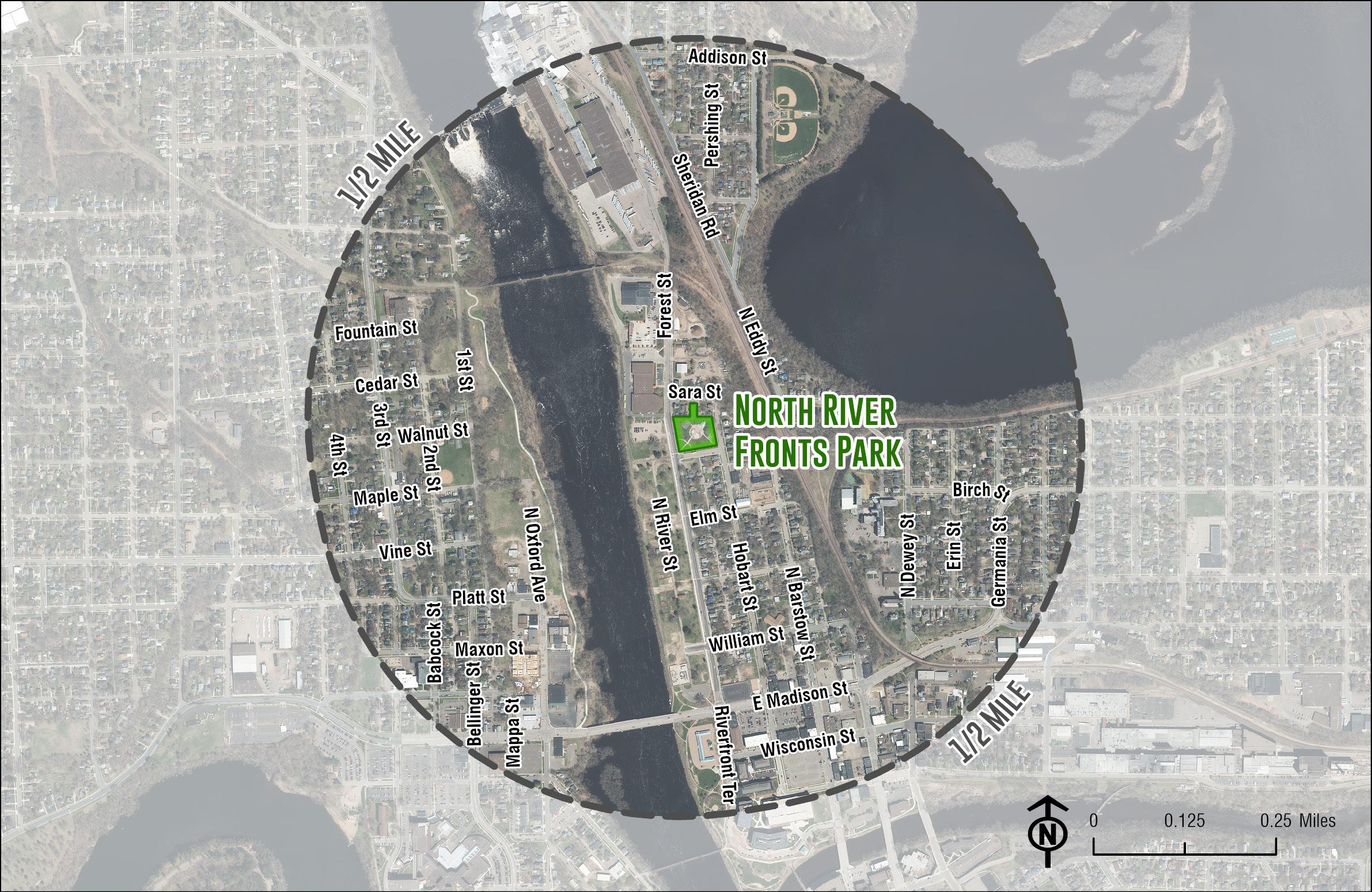
and
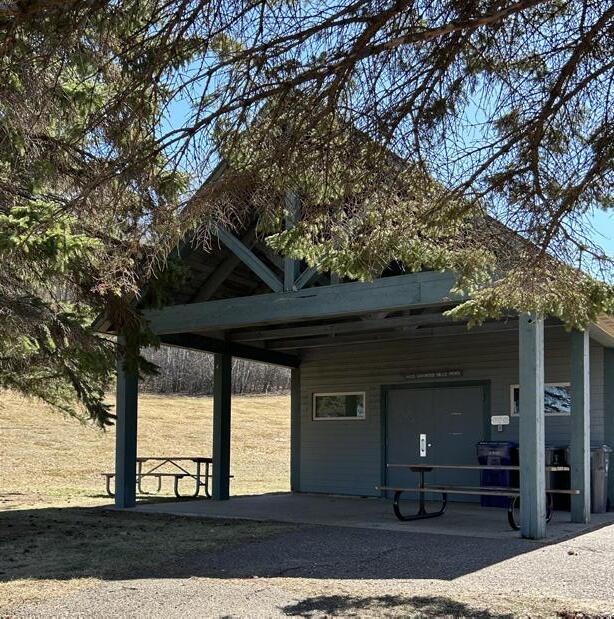



Roosevelt Neighborhood Park is a 2.4-acre neighborhood park on Folsom Street adjacent to Roosevelt Elementary School. Park amenities include a soccer field, an ice skating rink, a hockey rink and a warming house.
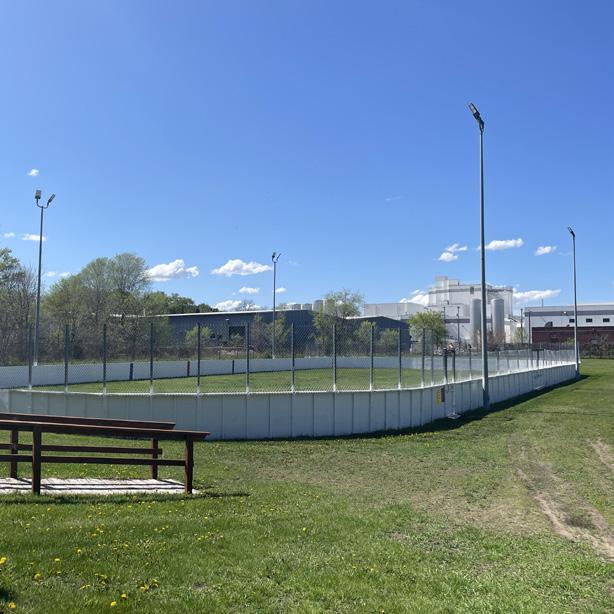

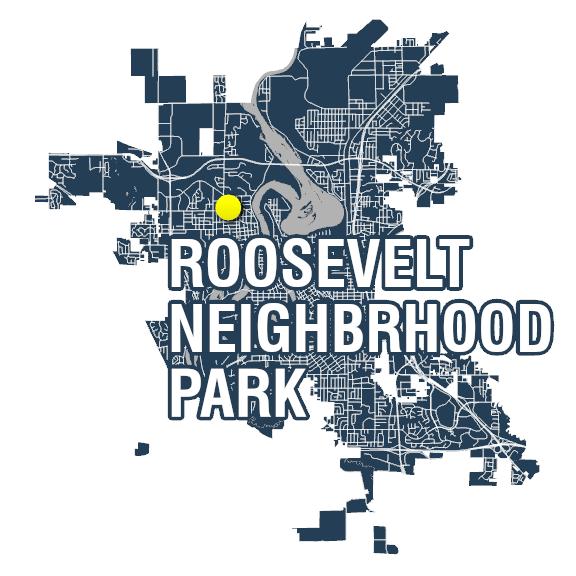
The ice rink and existing warming house are key features of this park. The sports lighting allows for winter activities to extend during critical time periods. Being located next to the school with a new playground and lots of programming is a great benefit to this park. Located on the north side of Eau Claire, this park provides essential access to a large portion of residents who would otherwise be without park space.
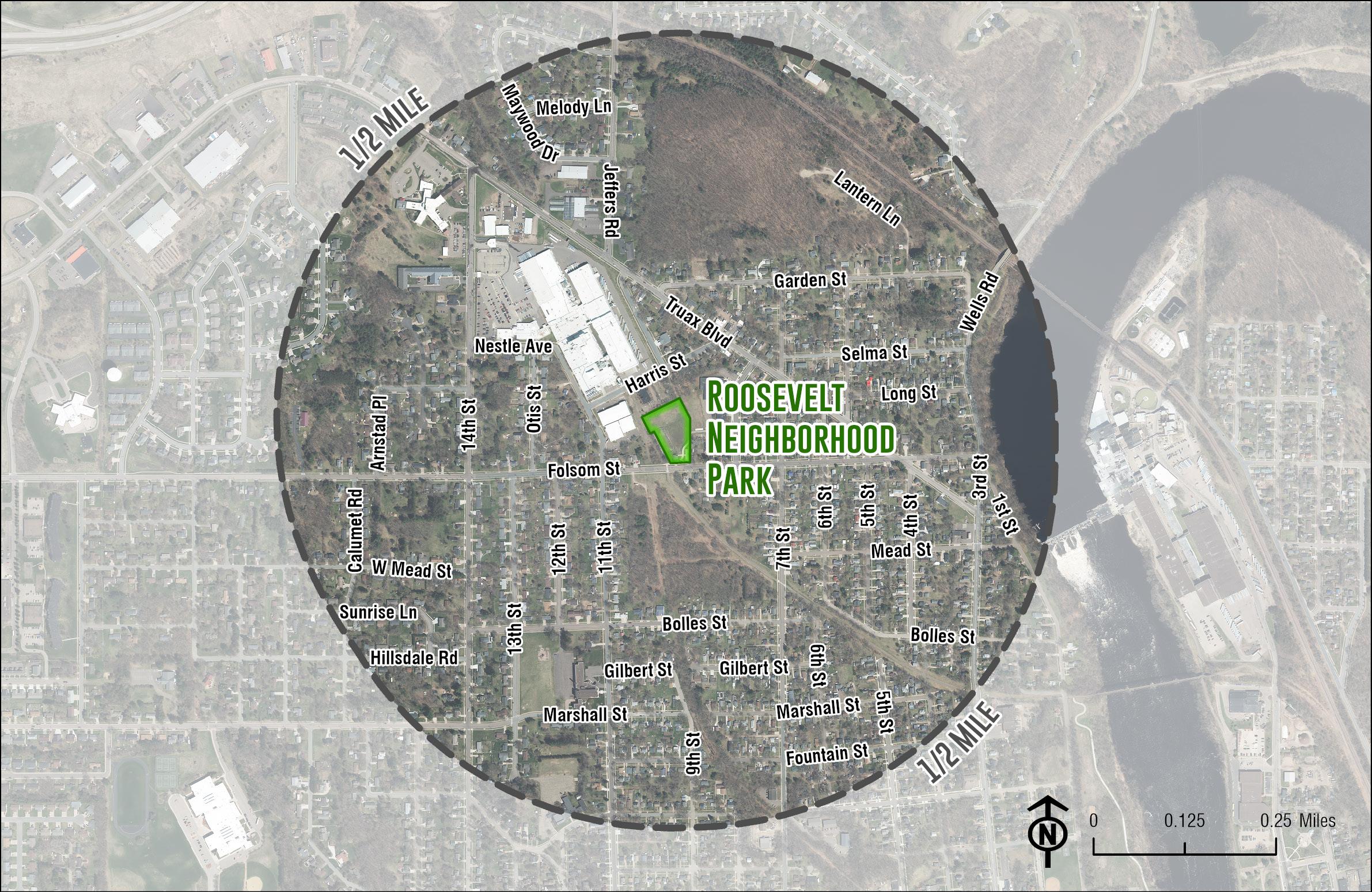
Eau Claire Upper Westside Neighborhood
Events and Programming: public shelter reservations, supervised warming house for
Sundet Park is a 5.1-acre neighborhood park near the intersection of Sundet Road and Robin Road. Park amenities include a playground, a basketball court and a
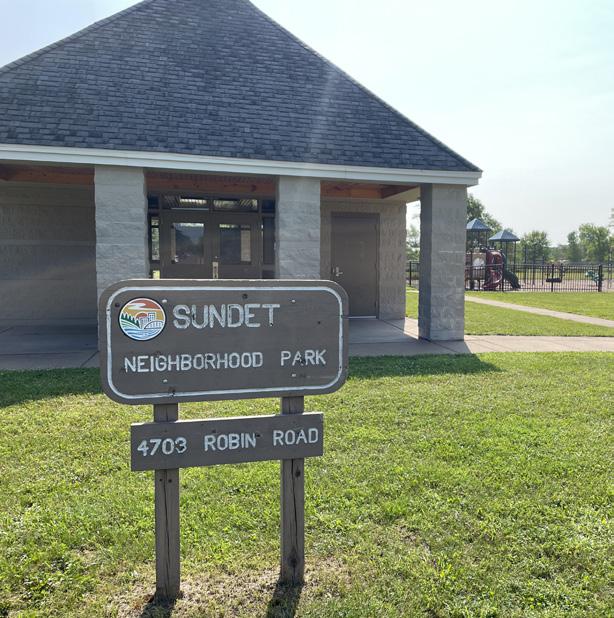
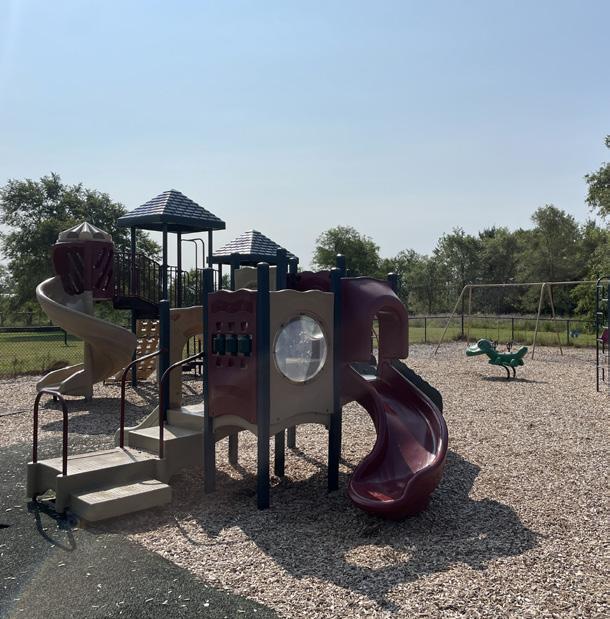
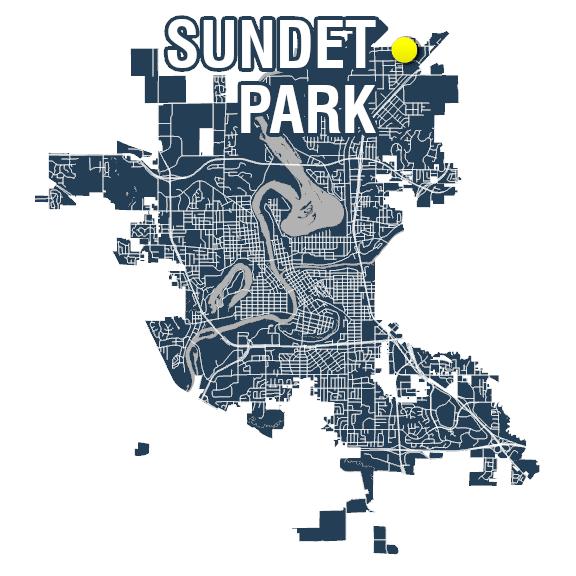
The existing structure, dog park and base amenities. The existing park layout presents a great opportunity, but the location being limited to the north side and near the airport is a constraint. While the location is near the border of the city on the north side, this park provides neighboring residents and community members with a dog park.
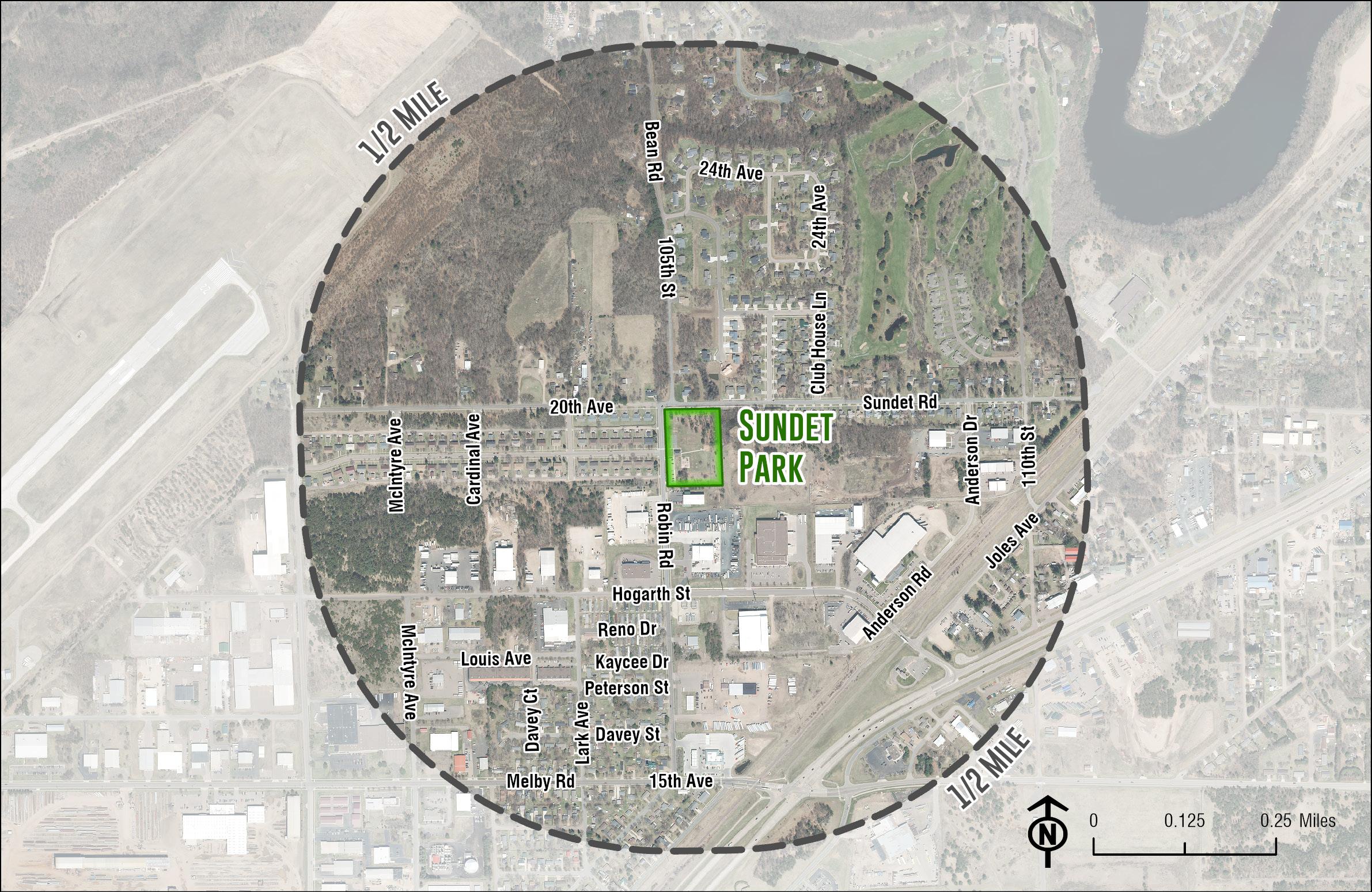
Westridge Park is a 7.5-acre neighborhood park on the City’s west side near the intersection of Renee Drive and Mill Run Road. Park amenities include a multi-use trail, a basketball court and play equipment.
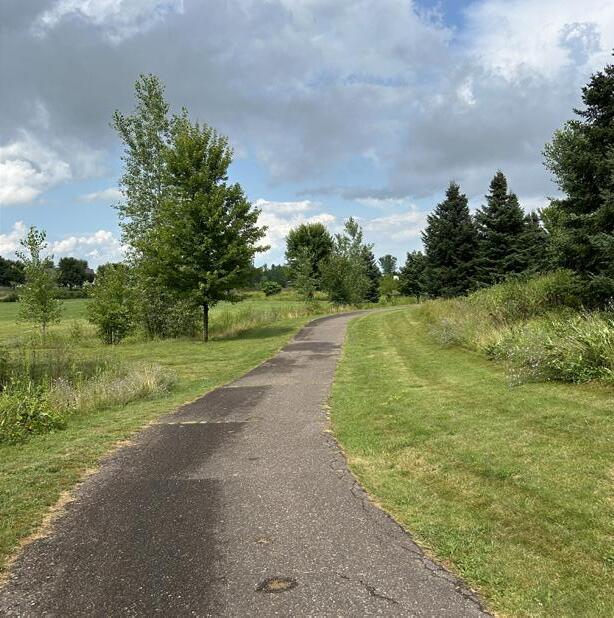
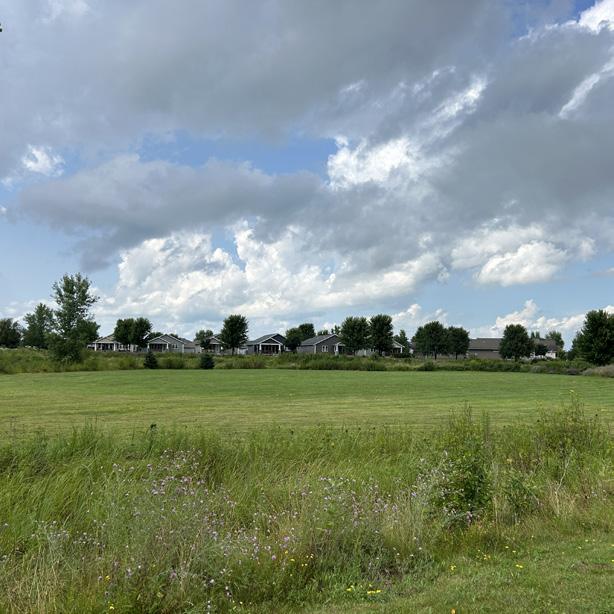

The existing trail and natural setting so close to residential neighborhoods. The land and location. Situated on the outer edges of Eau Claire’s boundary, this neighborhood park plays a crucial role in supporting the limited parks in this region.
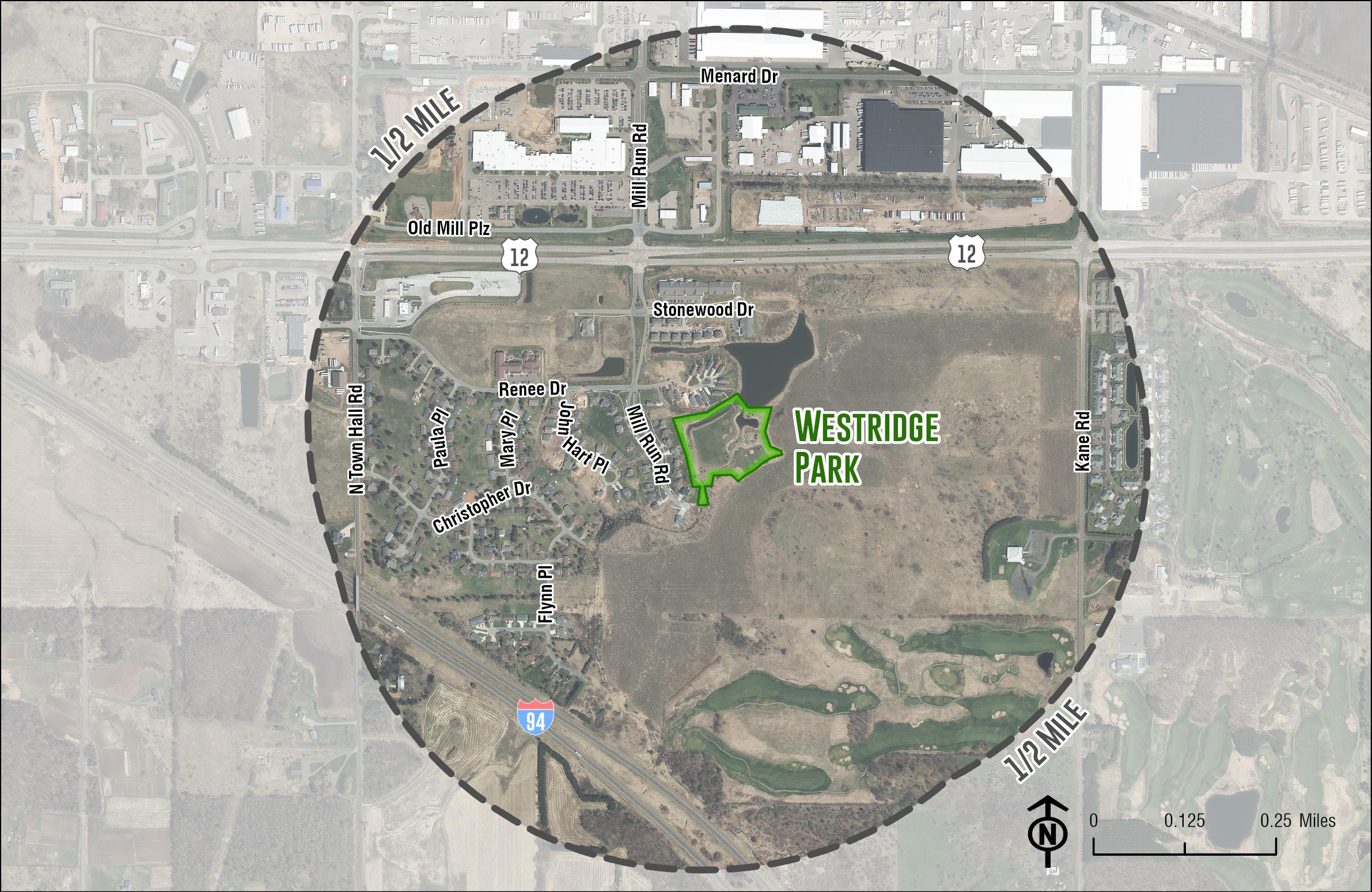
1/2 Mile Population = 733 (692 people per square mile)
29 out of 55 parks 26 out of 55 parks Events and Programming: not available.


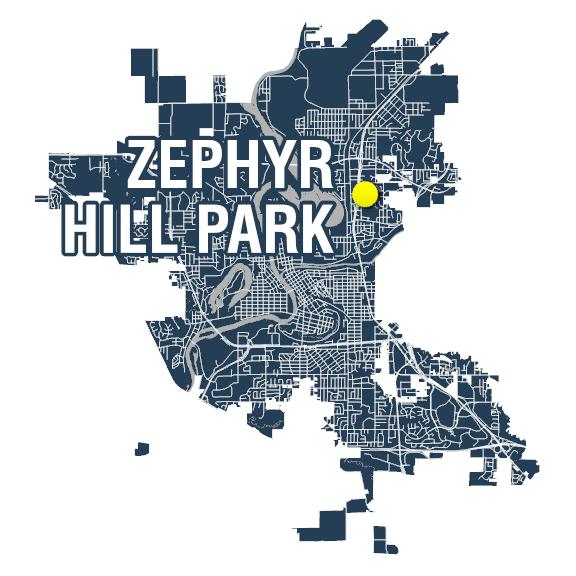
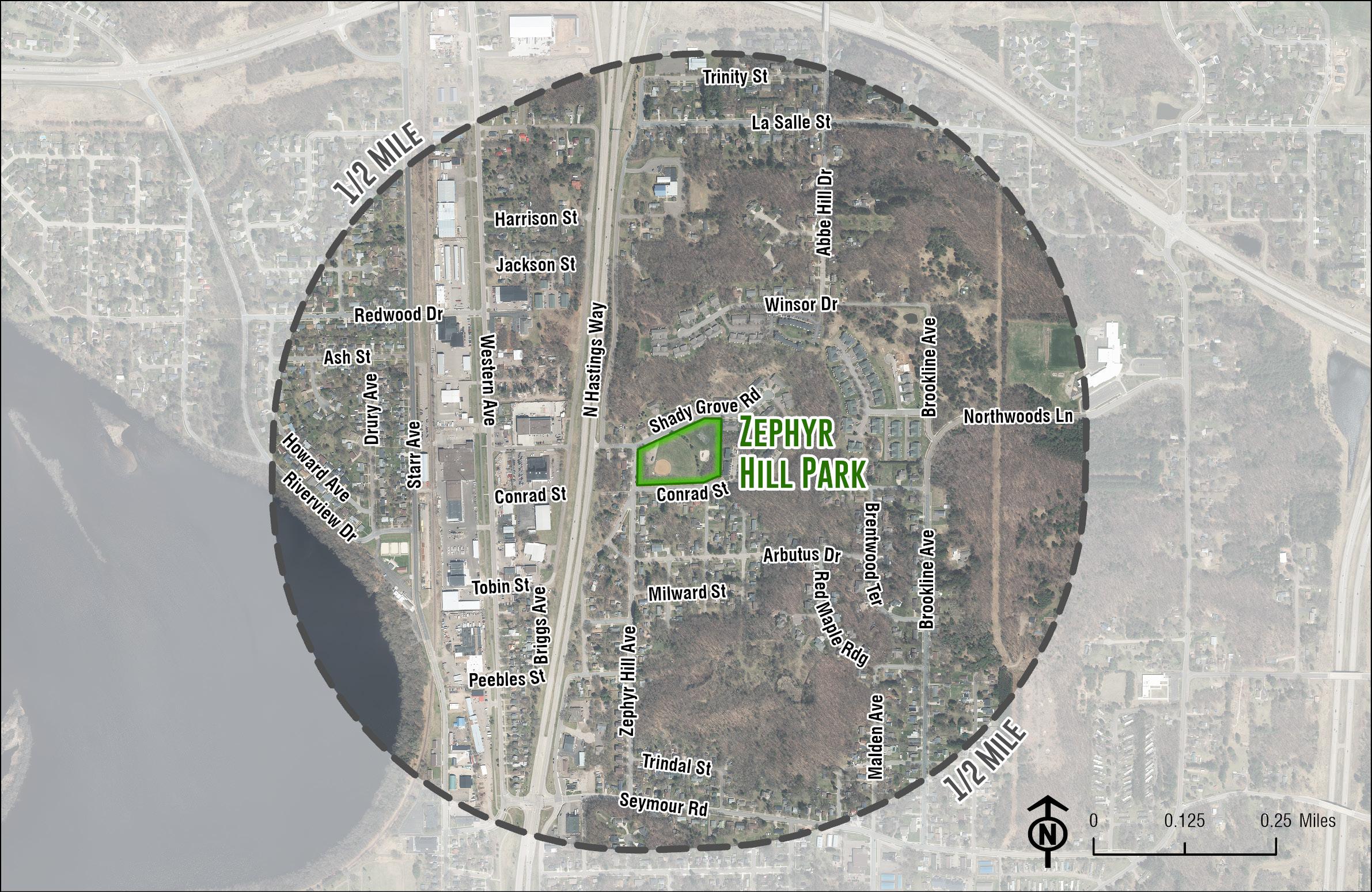
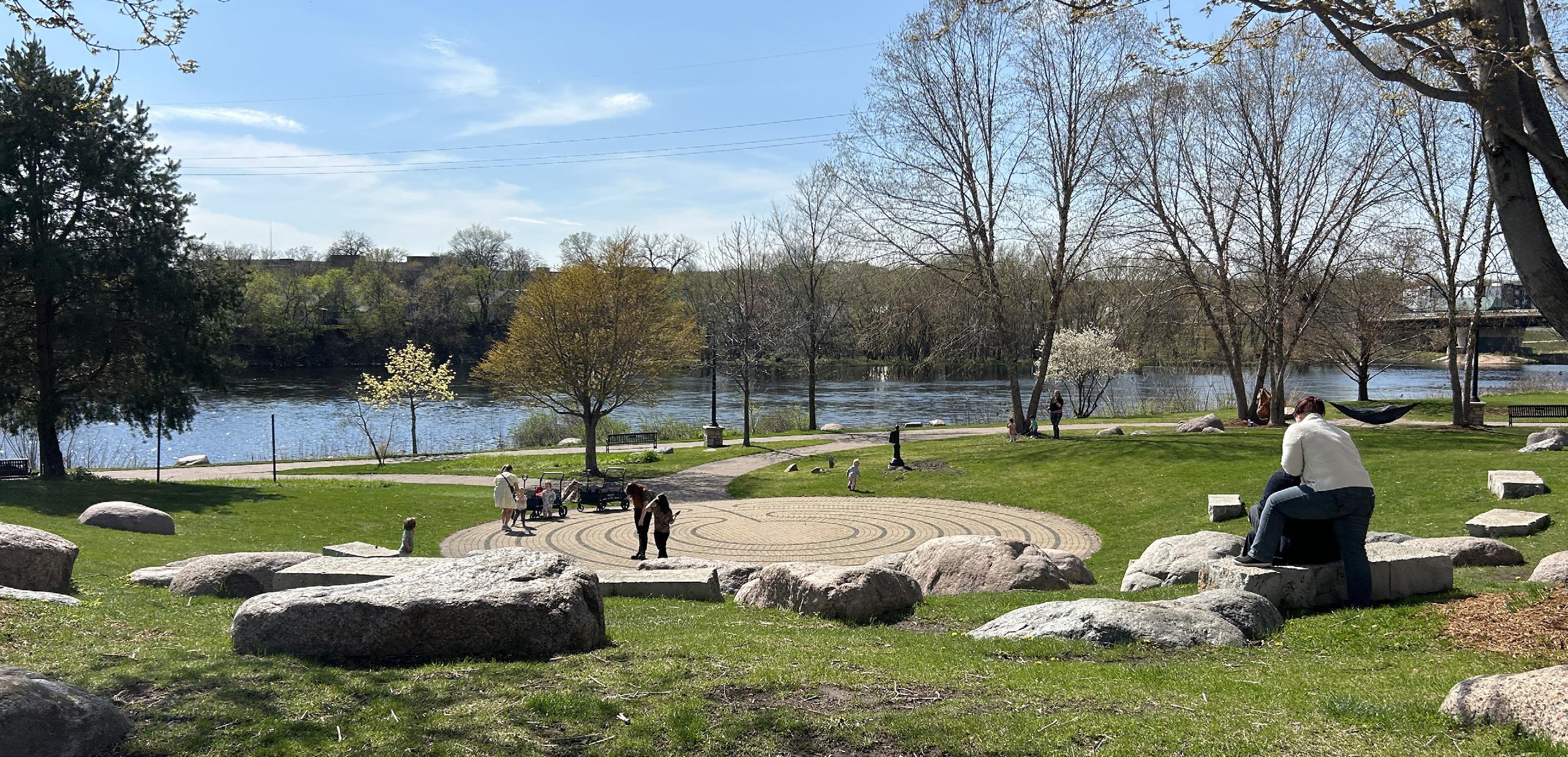
Community parks are designed to offer a wide range of recreational activities, catering to the diverse needs of the community. These parks often feature amenities such as athletic complexes, extensive trail networks, and large swimming pools, making them hubs for both organized sports and casual outdoor enjoyment. Typically spanning 10 acres or more, the size of a community park may vary depending on the specific facilities it offers, ensuring it meets the needs of the surrounding area.
Ideally, community parks provide a balance of both active and passive recreational opportunities. This means they may host sports leagues and large-scale events while also offering quiet spaces for relaxation, nature walks, or family gatherings. The service area for a community park generally extends a mile or more, making them accessible to a broader portion of the population. In certain instances, community parks may also function as neighborhood parks for specific areas, providing essential amenities for local residents. However, any improvements or maintenance undertaken for these parks should always be approached with a community-wide perspective, ensuring that the entire population benefits from the upgrades and enhancements.
• Carson Park
• Eau Claire Soccer Park
• Fairfax Park
• Forest Street Park
• Jeffers Road Athletic Fields
• Mount Simon Park
• Northwest Community Park
• Otter Creek Community Park
• Owen Park
• Phoenix Park
• Pinehurst Park
• Riverview Park
• Rod and Gun Park
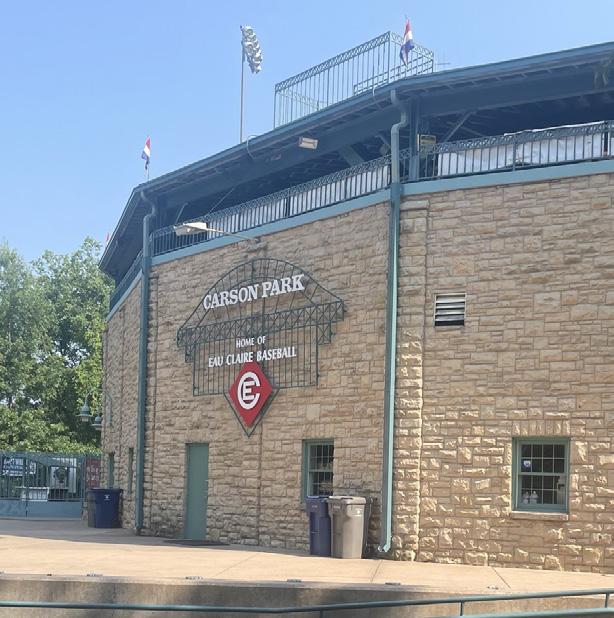
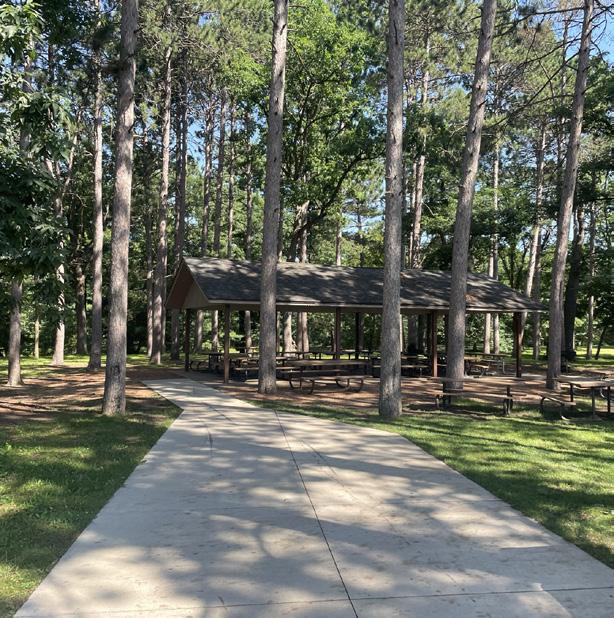
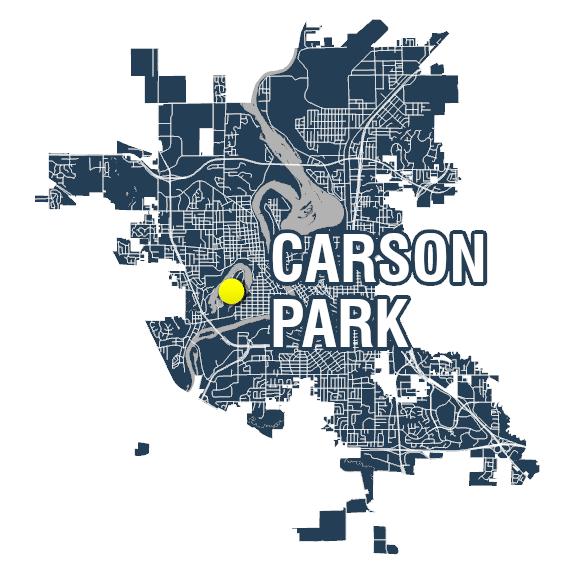

https://www.randallparkec.org/
Eau Claire Soccer Park is a 32.2-acre, community athletic field at the intersection of West Hamilton Avenue and Craig Road. Facilities include multiple soccer fields and a
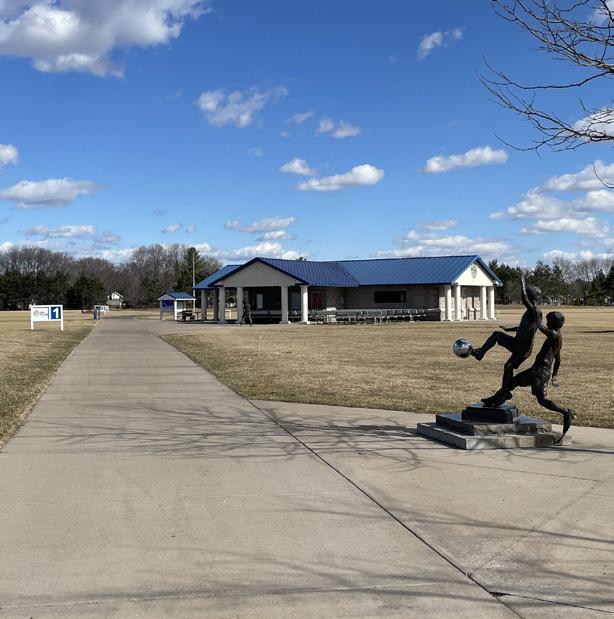
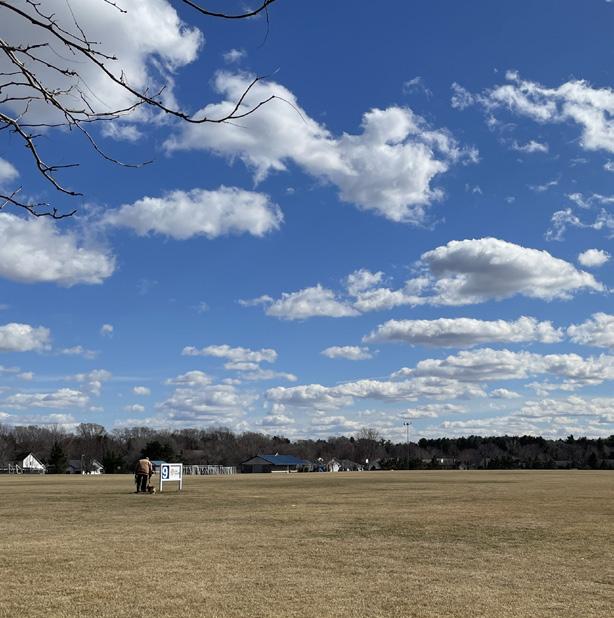
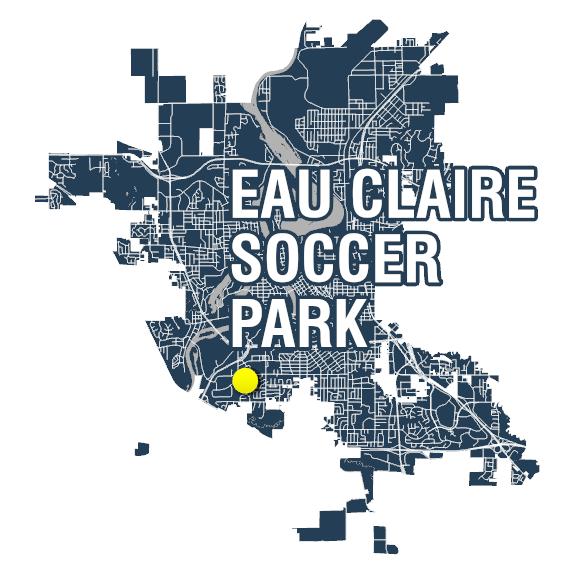
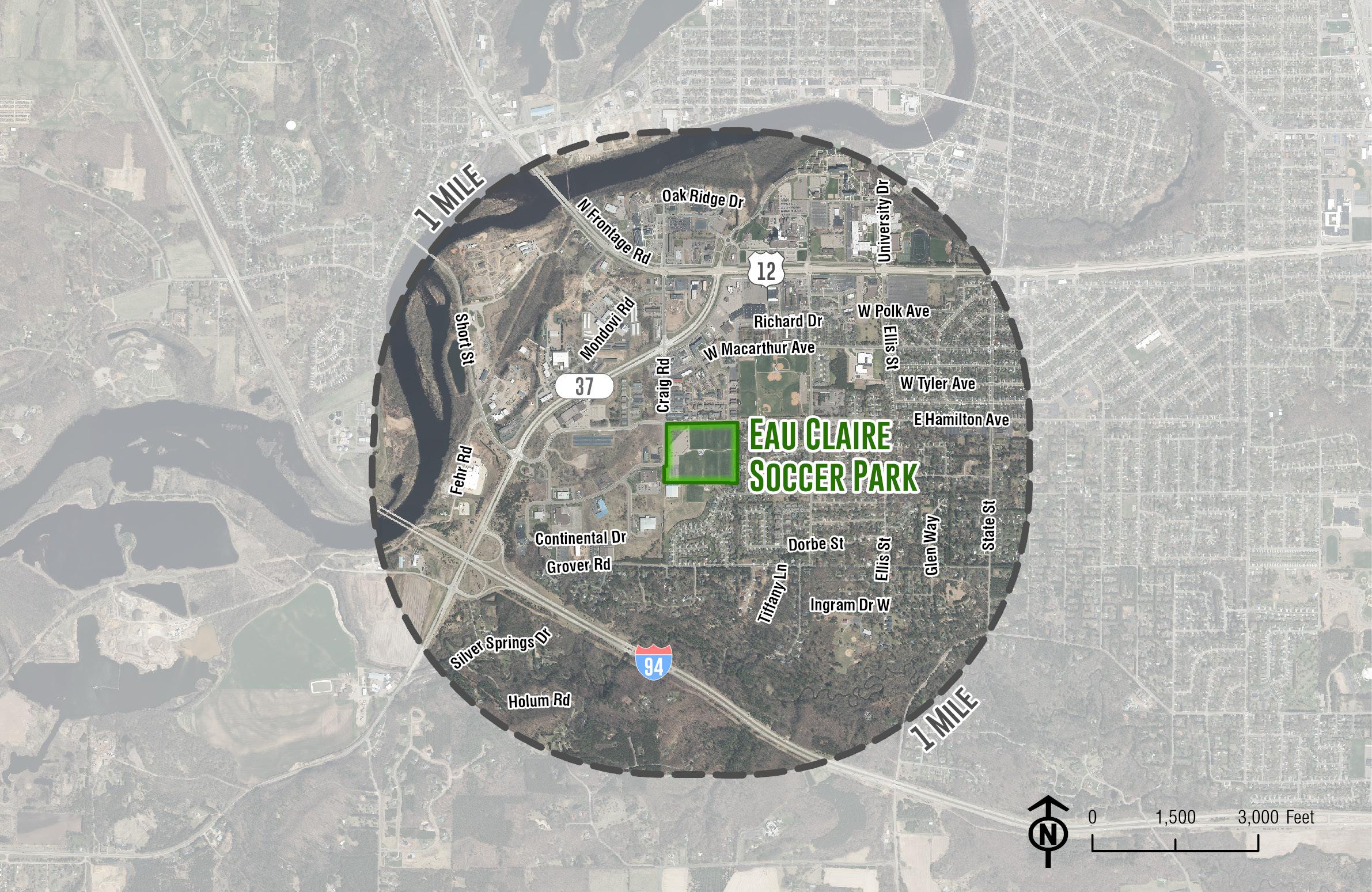




Forest Street Park is a 15.1-acre special area north of East Madison Street
between Forest Street and the Chippewa River. Amenities include a large community garden, picnic areas and a canoe/kayak launch.
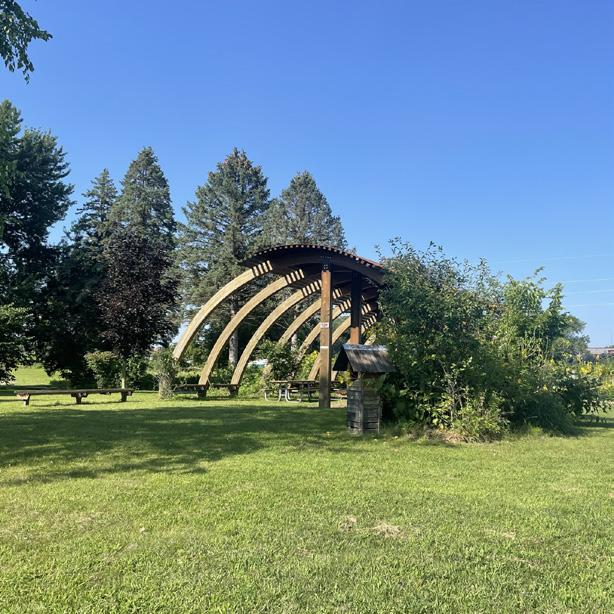


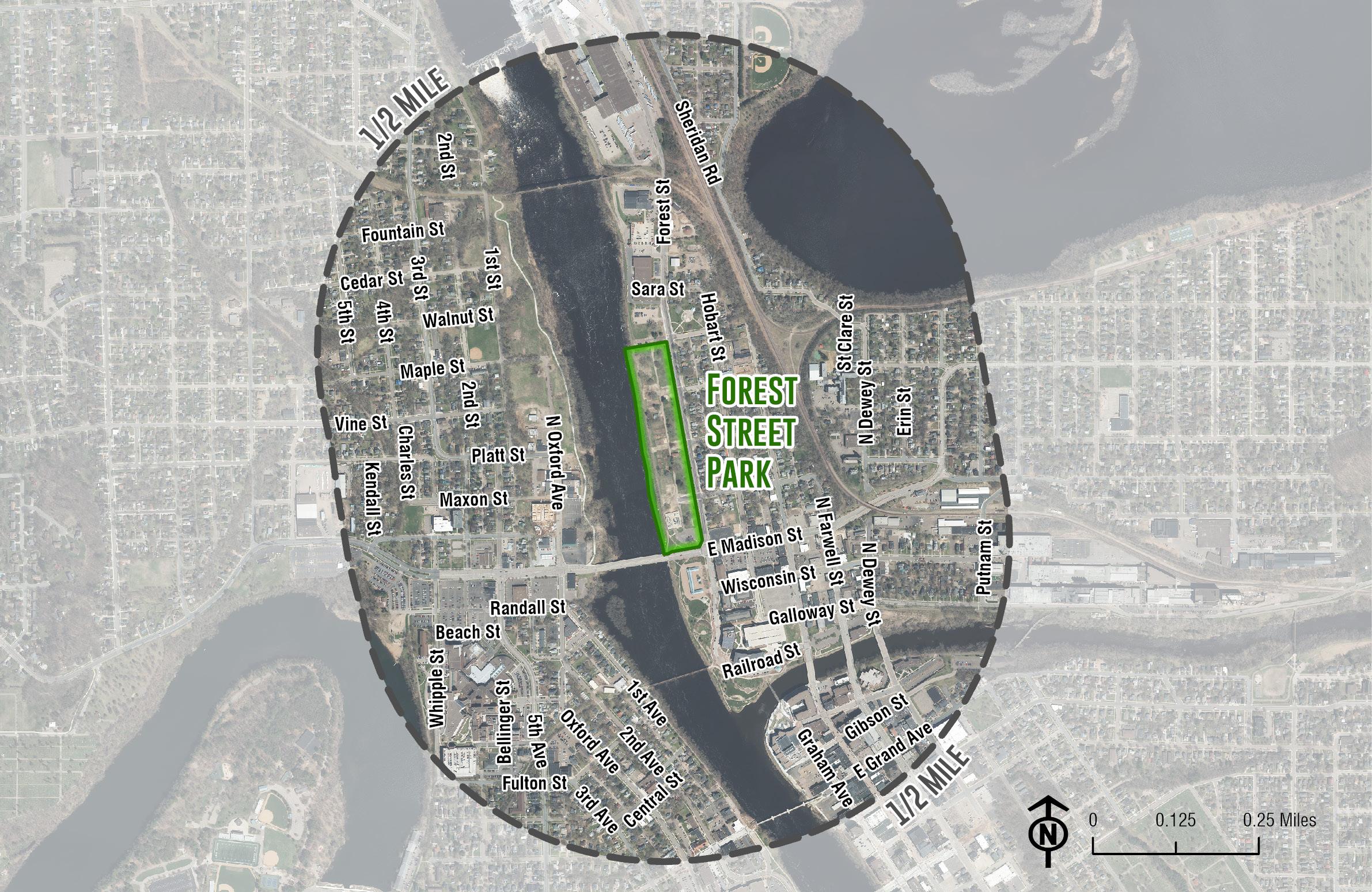
20 out of 55 parks
North River Fronts Neighborhood Usability Rank Neighborhood Association
The community gardens and unique shade structure are key features that continue to bring people to the park.
The large land mass in downtown Eau Claire is the greatest opportunity for this park. Available parking is the greatest constraint.
Located just to the north of Phoenix Park and across the river from the new Cannery Park, this park serves a small neighborhood in downtown Eau Claire.
1/2 Mile Population = 4,534 (3,627 people per square mile) Population Breakdown
Events and Programming: None
15 out of 55 parks Accessibility and Connectivity
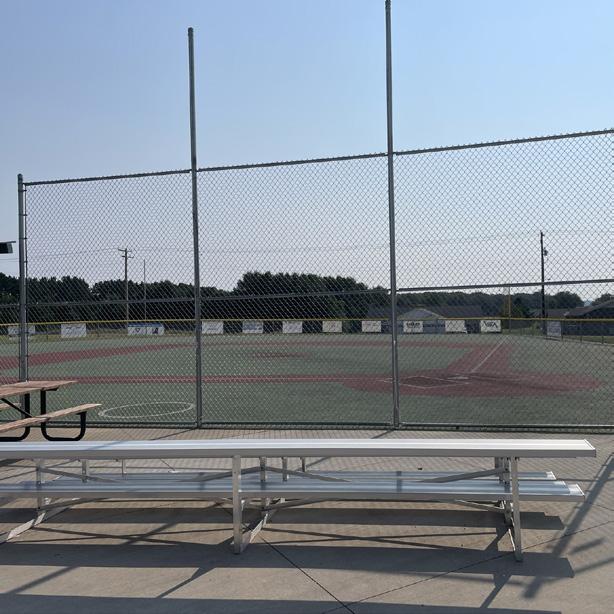
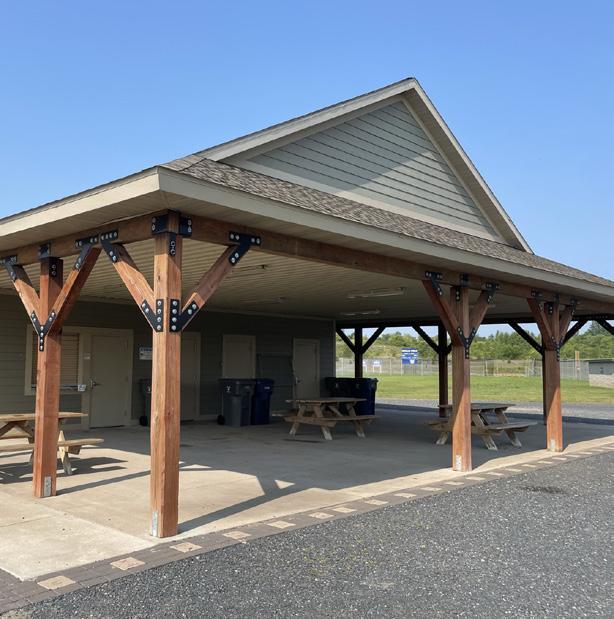
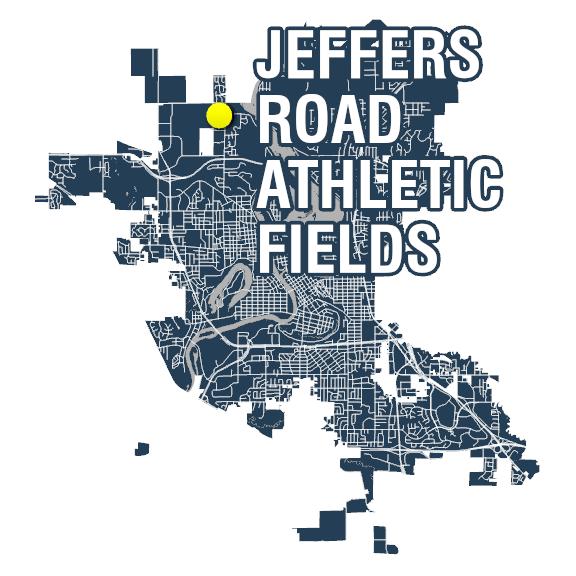

Mount Simon Park is a 69.4-acre community park located at 1100 Addison Street, adjacent to the Chippewas River. Park facilities include baseball fields, park shelters, a 9-hole disc golf course and nature trails.
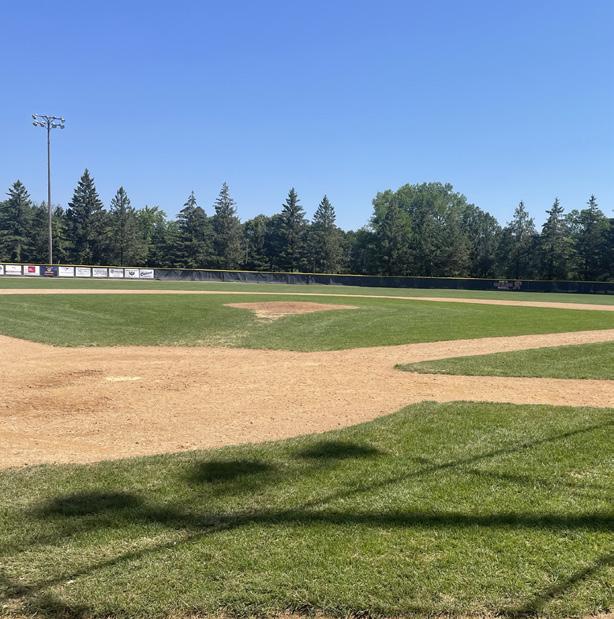
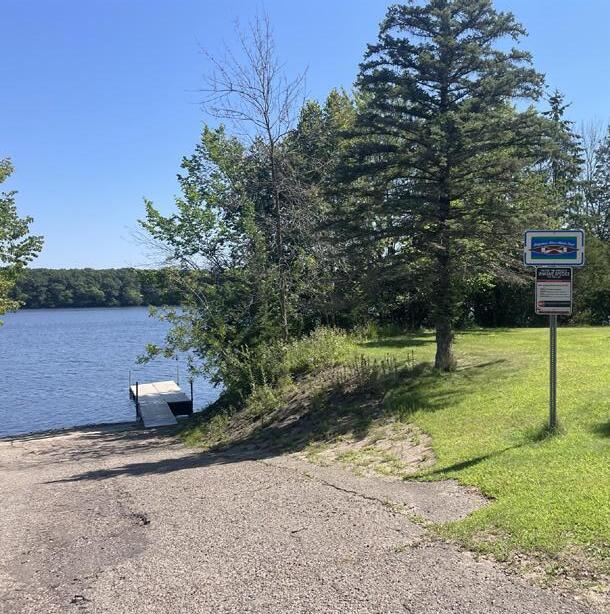
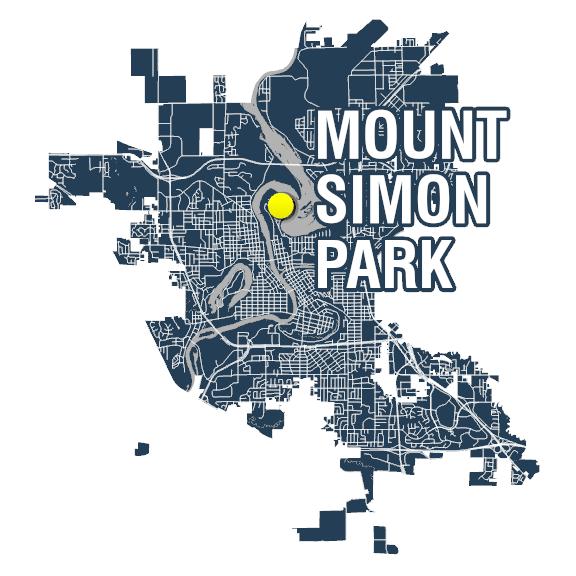

Amazing ball fields and unique topography with disc golf, playgrounds and water access.
Topography is the main constraint of this park, limiting access for residents by foot or boat. Improvements to circulation should be a focus.
Playground 2-5 and 5-2
Wayfinding and signage
Lighting and Elec. for Upper Park
Boat ramp and accessible small craft launch
Repave parking, concrete walks throughout the park and
Located in the north-central part of Eau Claire, the park is limited by surrounding industrial areas. However, the lower level makes for an iconic park.
Events and Programming: organized athletics, public shelter reservations.
Northwest Community Park is a 119-acre community park located at 650 Van Es Parkway. The park is a natural area with nine miles of hiking, biking and cross country ski trails.

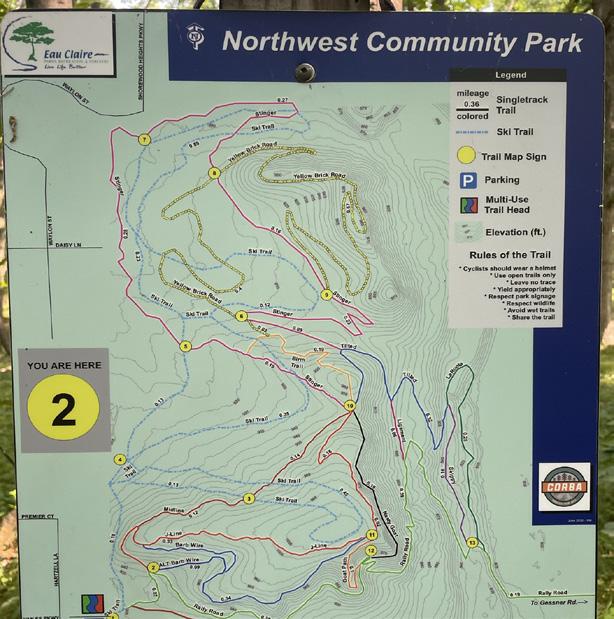

The variety of trails are well signed and feature a diverse habitat with varied topography. The constraints of this park are also its strengths. Topography and limited access make it a unique destination on the north side of Eau Claire. Located on the north side near
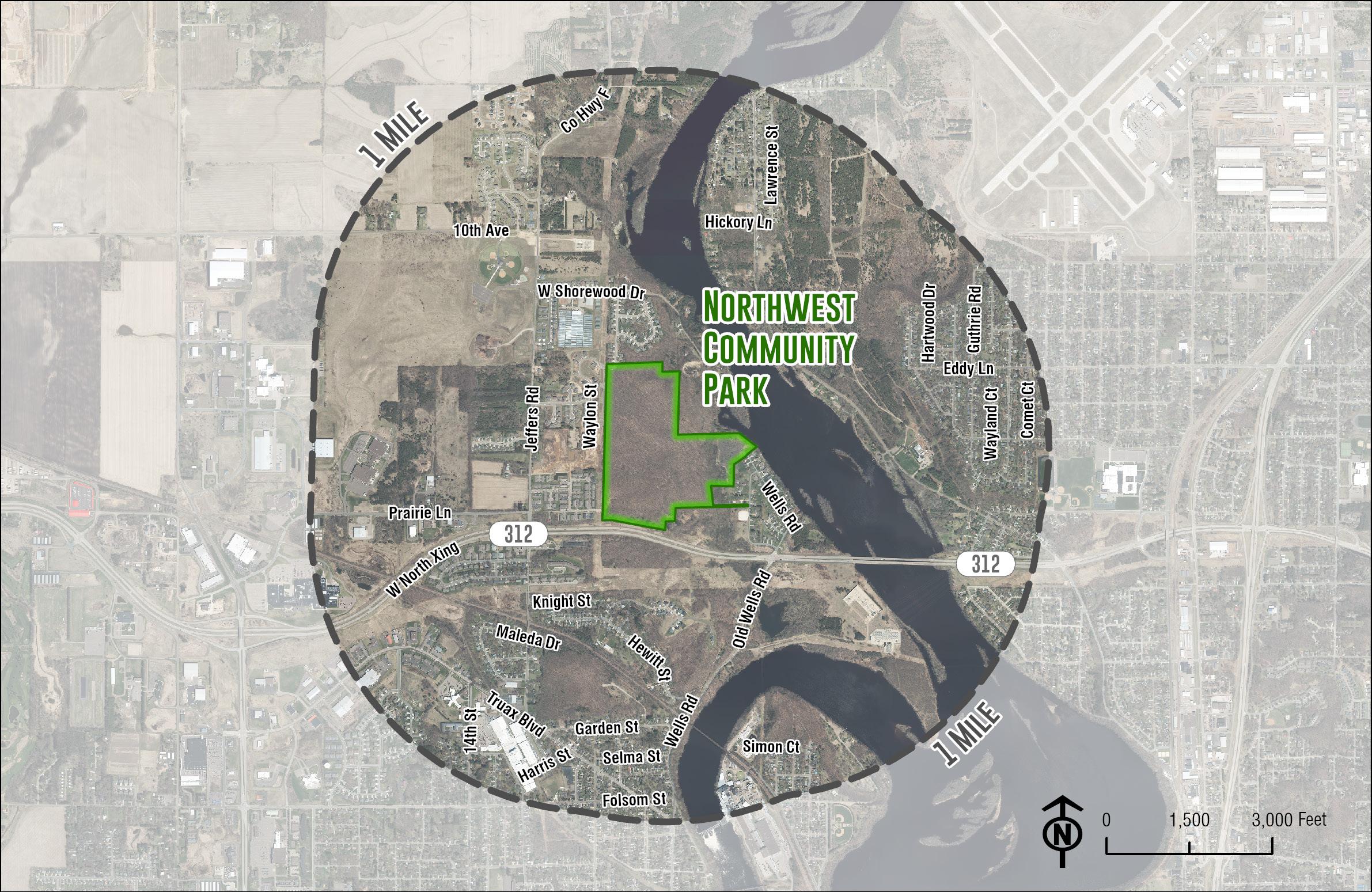
Otter Creek Community Park is a 52-acre community park located on House Road near the I-94/US Highway 53 interchange. The park is a natural area with no recreational improvements.
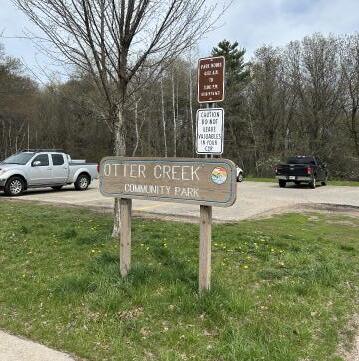


Paved parking and nature based outdoor space. The expansive nature along Otter Creek is the main opportunity, while the topography is the primary constraint. Located on the far south east side of Eau Claire, this park has limited community support based on the surrounding residential areas.
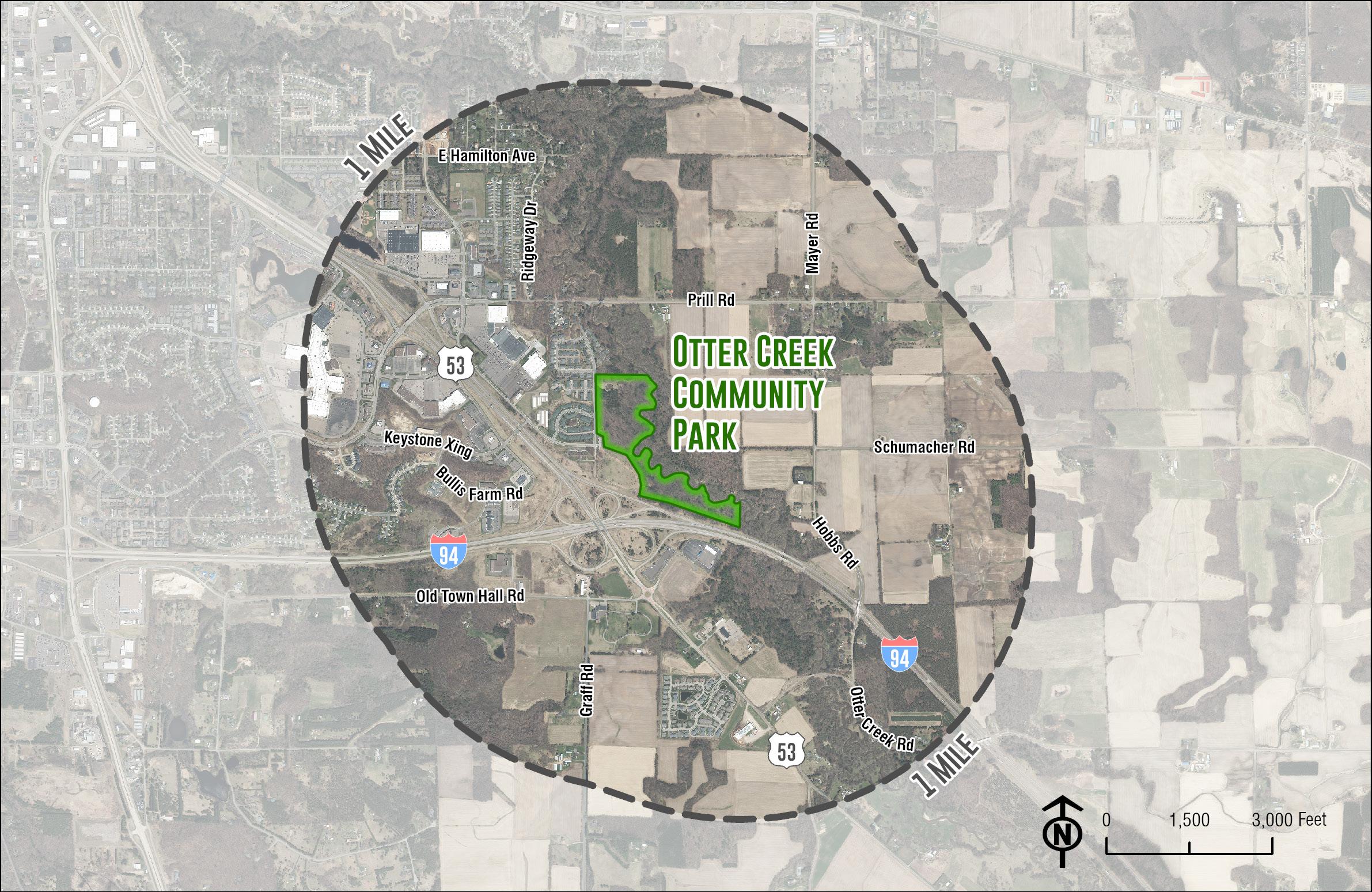
46 out of 55 parks 45 out of 55 parks
1 Mile Population = 3,506 (557 people per square mile) Population Breakdown
and Connectivity Events and Programming: not available.
Owen Park is a 16.4-acre community park on the Chippewa River at the intersection of Water Street and First Avenue. Facilities include an outdoor amphitheater, multi-use trails, tennis courts and a playground.
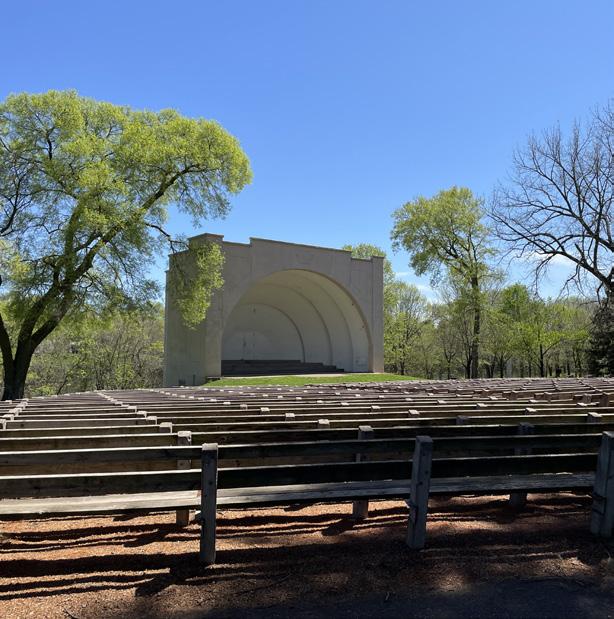
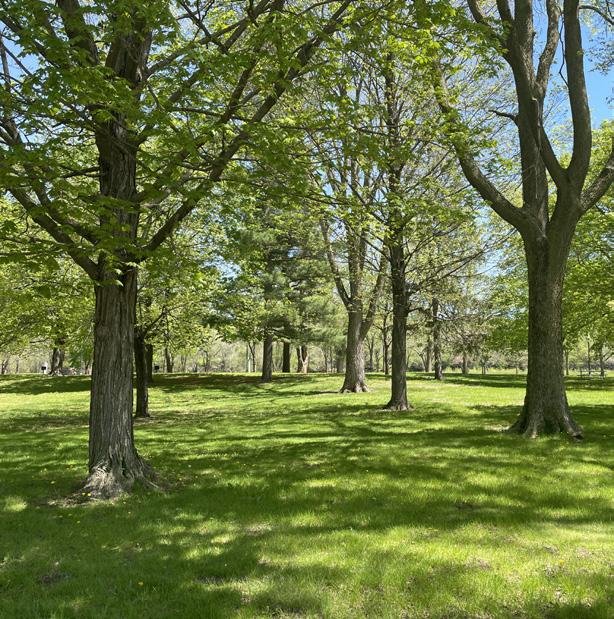

Key
Constraints
Location The existing playground, river access and bandshell. The existing trees and the history of this park are the greatest opportunities. The constraint of this park is working with the existing amenities.
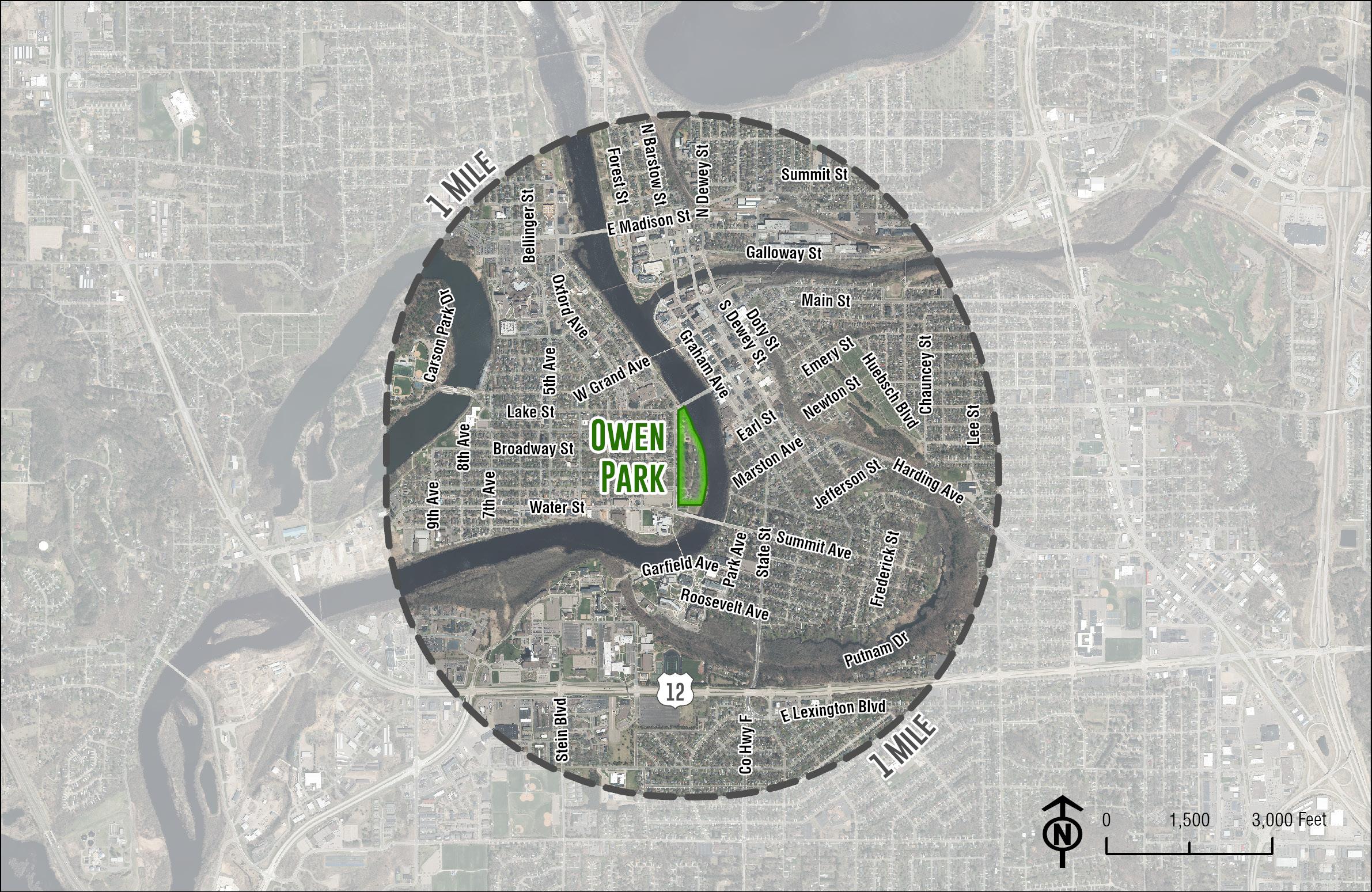
Phoenix Park is a 9-acre community park located on Riverfront Terrace at the confluence of the Eau Claire and Chippewa Rivers. Amenities include a large open-air pavilion, performance space, trails and public art.
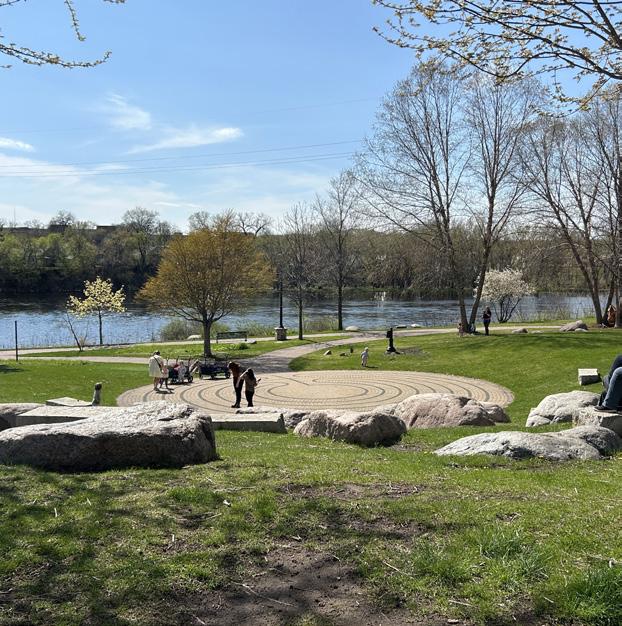


Programming, the farmers market pavilion and the performance area. The constraint of this park involves working within the existing design, while the opportunity lies in building on the existing programming. Located along the Chippewa River in downtown Eau Claire, Phoenix Park is at the heart of the city.
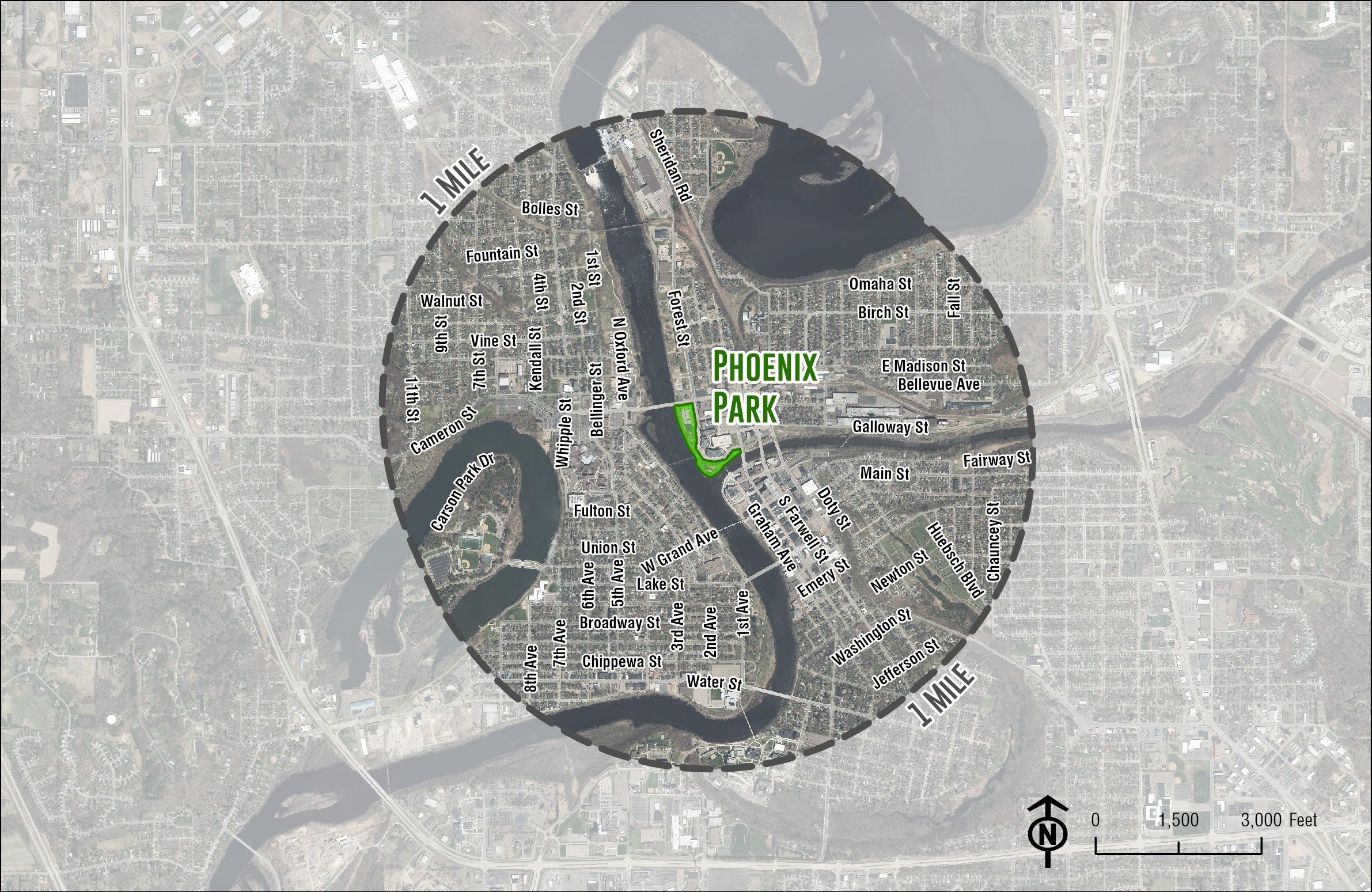
7 out of 55 parks
1 Mile Population = 18,718 (4,799 people per square mile) Population Breakdown
13 out of 44 parks Accessibility and Connectivity
Events and Programming: community events.
Pinehurst Park is a 58.4-acre special area located at the intersection of Delbert Road and Oakland Street. Facilities include mountain bike trails, a sledding hill, cross country ski trails and ice skating rinks.

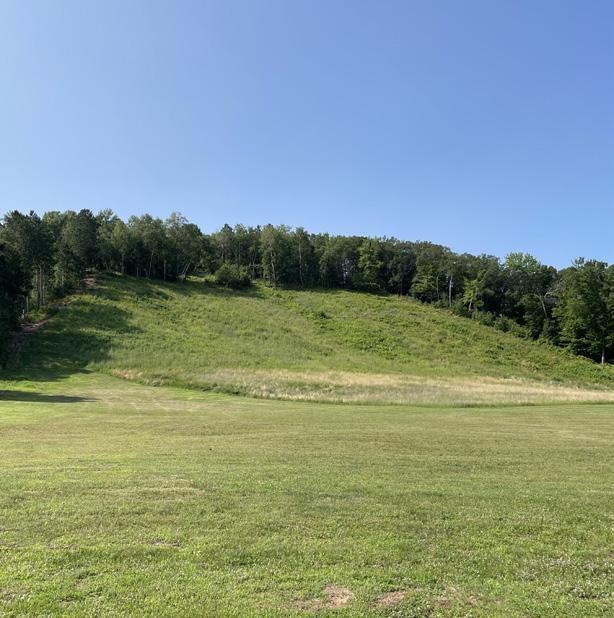
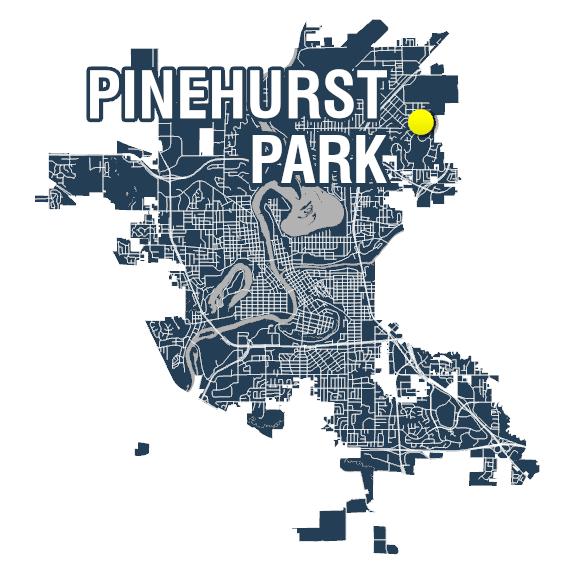
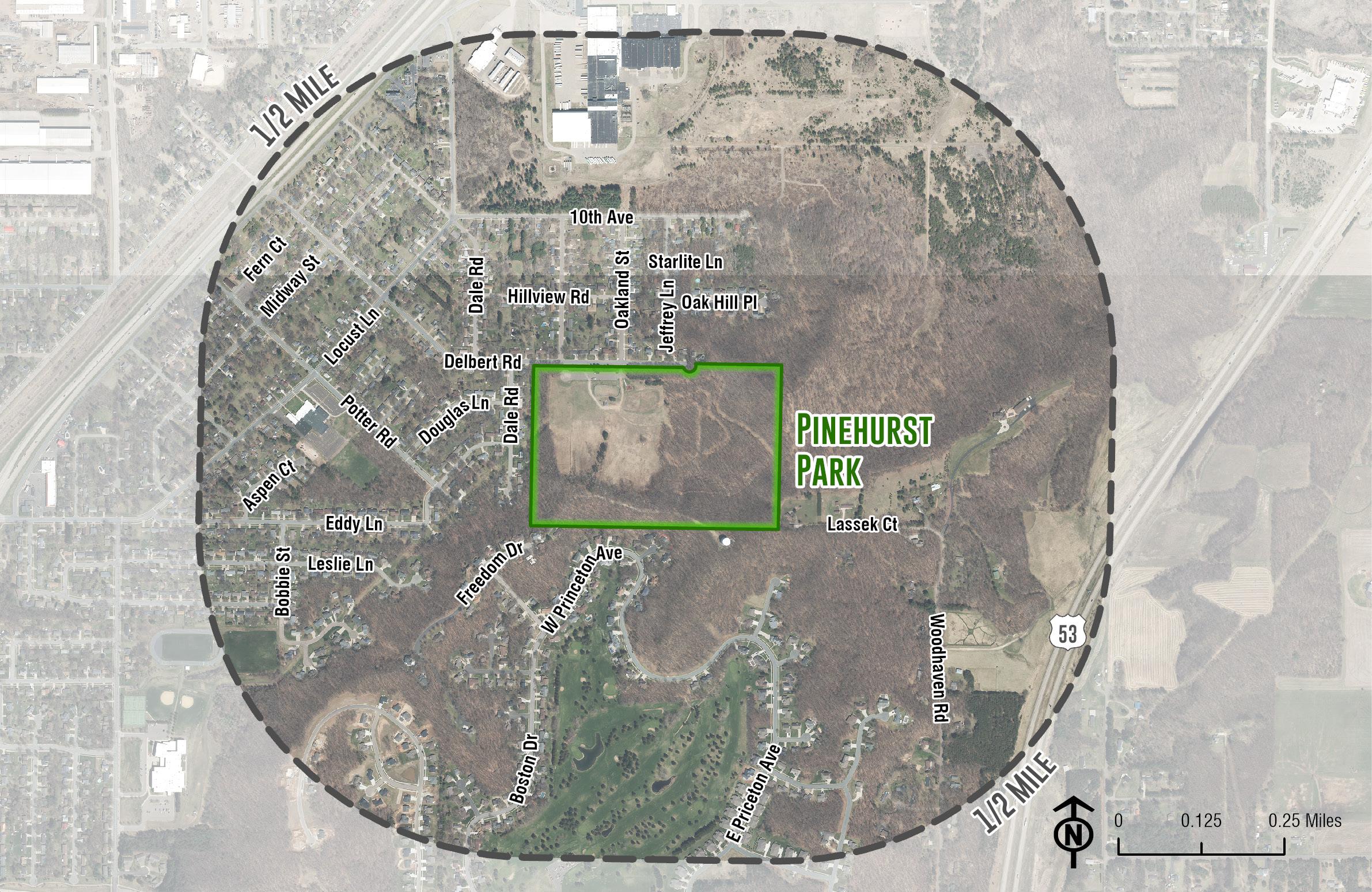
The sled hill, ice rink and winter activities are the key features during the colder season while the pump track and bike trails attract users during the warmer months. Improving and expanding the existing park program are the main opportunities for this park. The challenge will be working to maximize the proximity of park amenities.
Recommended Improvements
on
8 out out of 55 parks
Population Breakdown
1/2 Mile Population = 2,429 (1,104 people per square mile)
29 out of 55 parks Accessibility and Connectivity
Events and Programming: ECPRF activities, public shelter reservations, supervised warming house for skating and hill use.
Riverview Park is a 24-acre community park adjacent to the Chippewa River on Riverview Drive. Facilities include a boat launch, park shelters, a sand volleyball court and a playground.


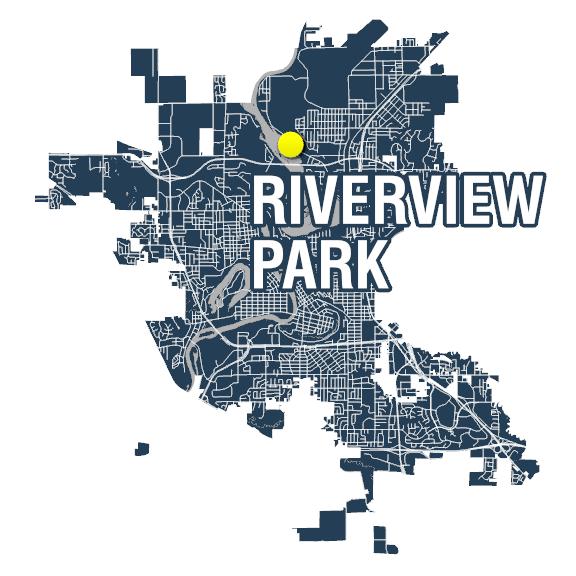

Water access, beach, pavilions and shaded outdoor space. The opportunities for this park include a strong community connection with the water. The constraints are the limitations imposed by the flood plain and floodway.
hidden park that is under utilized along Dells Pond. This community park serves the surrounding neighborhood but has the potential to become a destination.



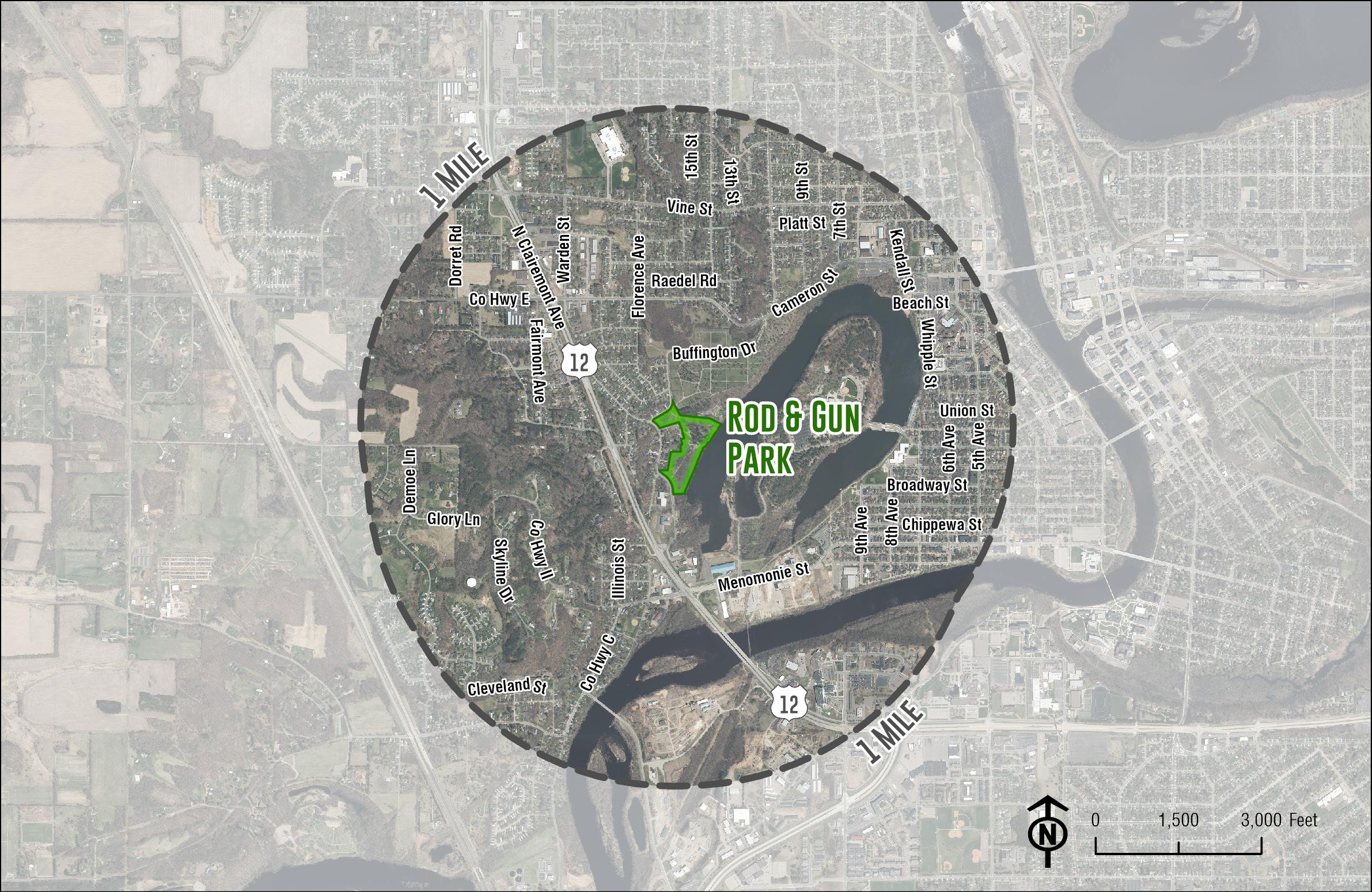
The existing playground,
stream and new boardwalk trail. The topography and limited connection to the surrounding area are the biggest constraints. The greatest opportunity is the history and well-established nature.
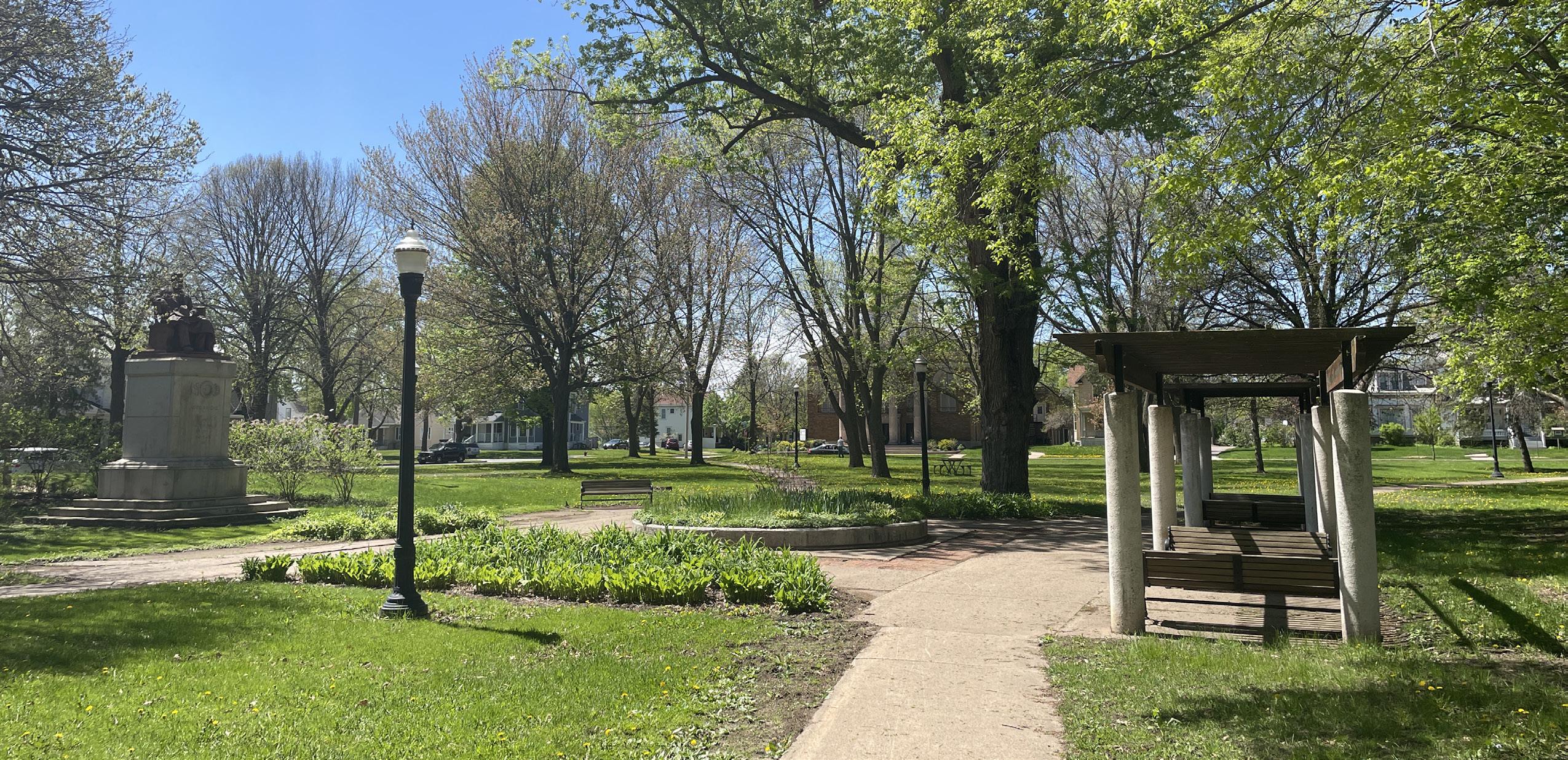
Mini parks are the pocket-sized retreats woven into the fabric of dense urban areas and residential communities, offering a breath of fresh air just steps from home. Designed primarily for young children, seniors, and those seeking a quiet escape, these parks typically range from 2,500 square feet to 1 acre, serving residents within a ¼-mile radius. Whether it’s a shaded bench, a small play structure, or a community garden, mini-parks fill in the gaps where larger parks can’t, creating essential green spaces in the heart of neighborhoods.
• Jaycette Memorial Park
• Haymarket Plaza
• MacArthur Park
• Randall Park
• University Park
• Wilson Park
• Wold Court Park
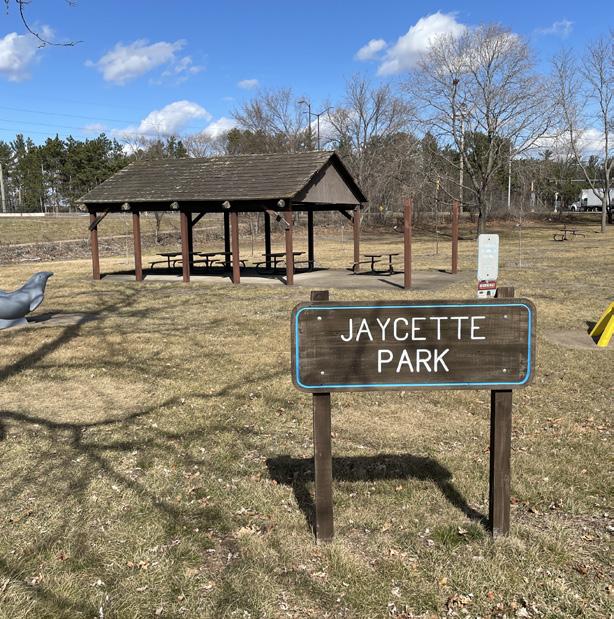
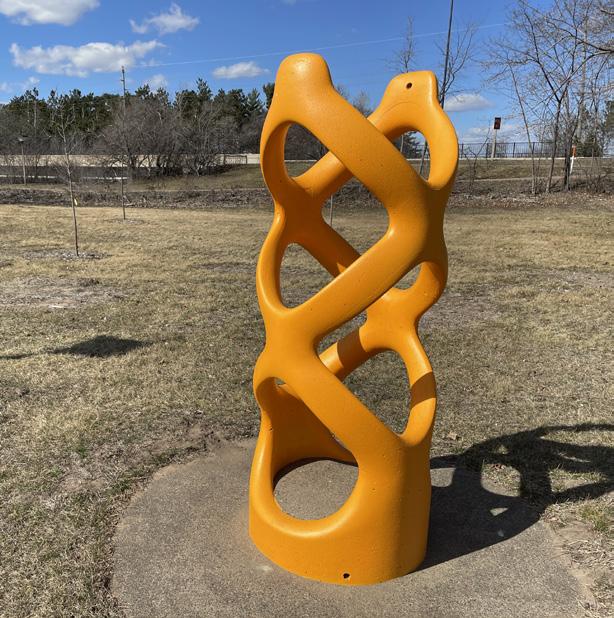
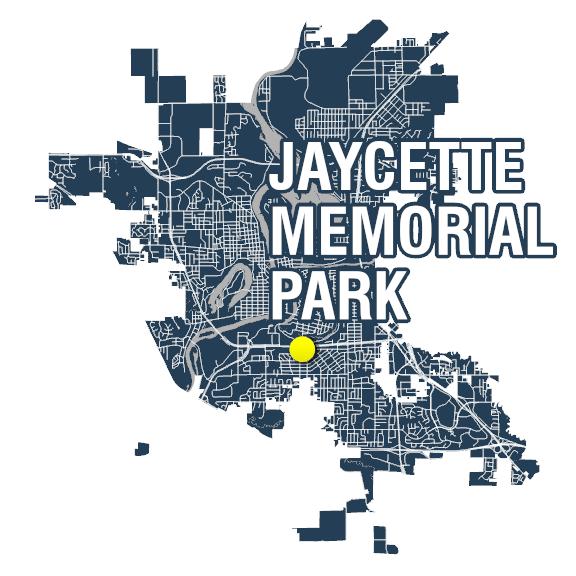
Populated with multiple art sculptures, pavilion and signage there are limited amenities in this park. Circulation and access to
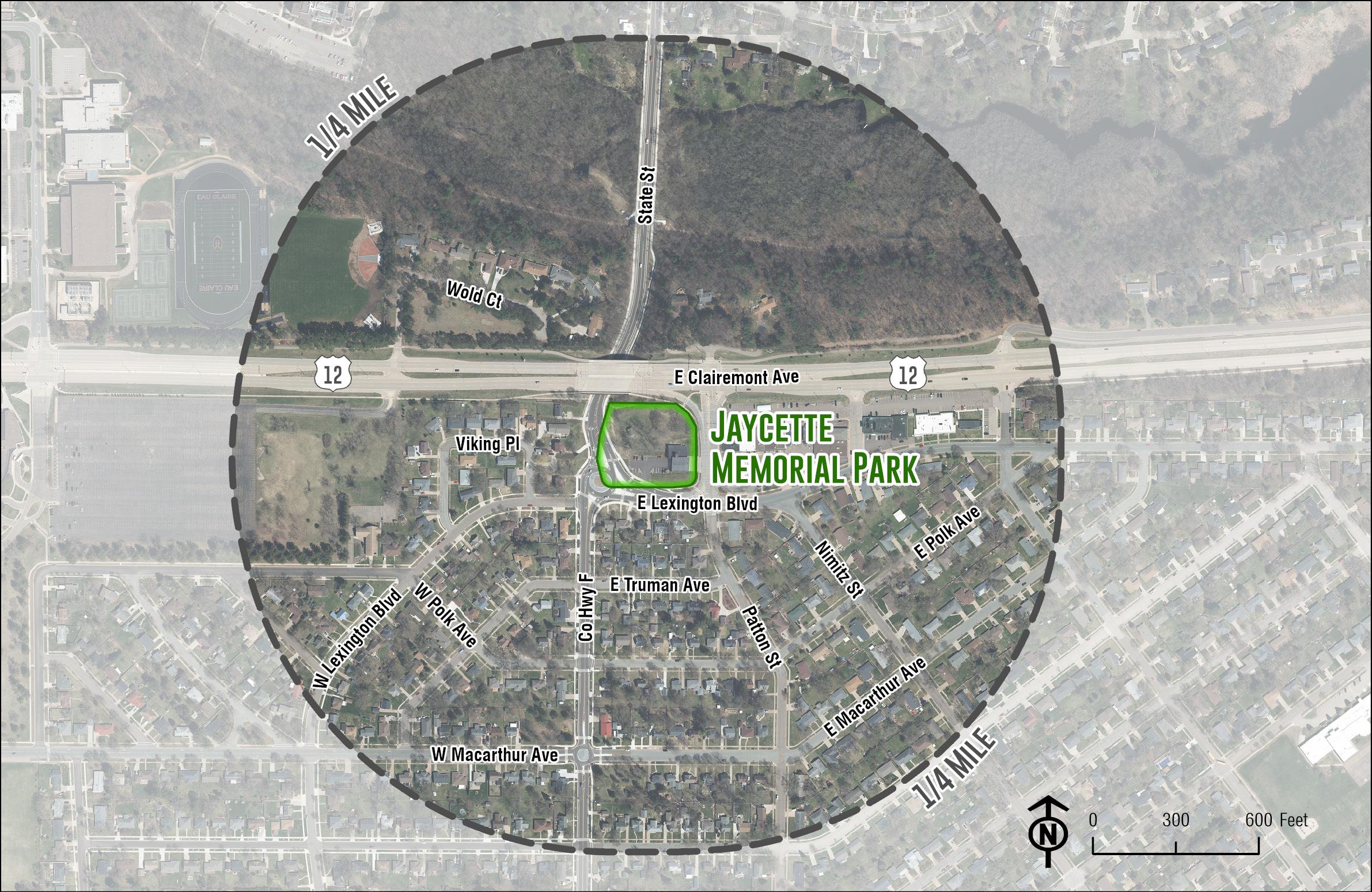
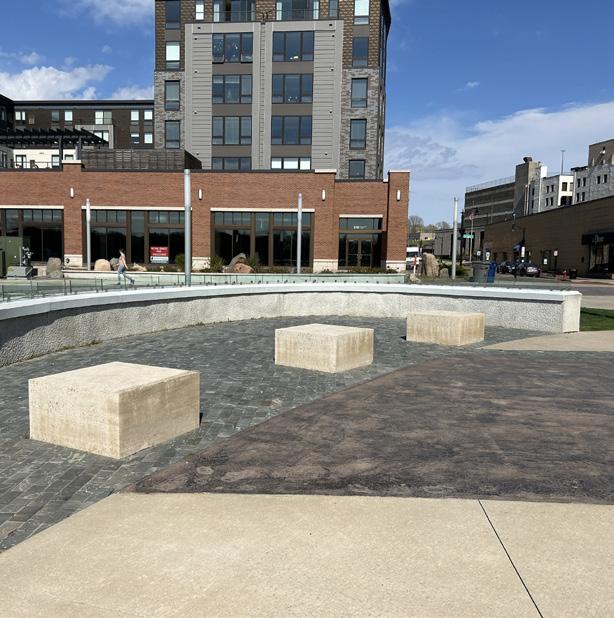
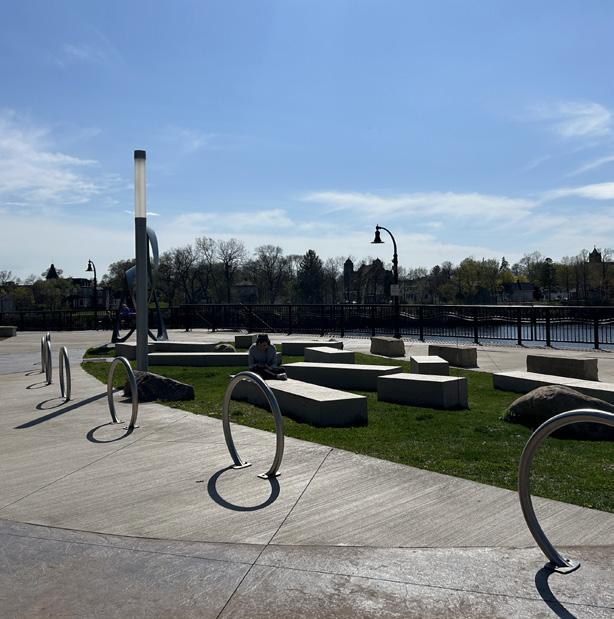


MacArthur Park is a 1.2-acre urban park occupying the northwest and southeast corners of the East MacArthur Avenue and State Street intersection. The site is open space and contains no recreational facilities.
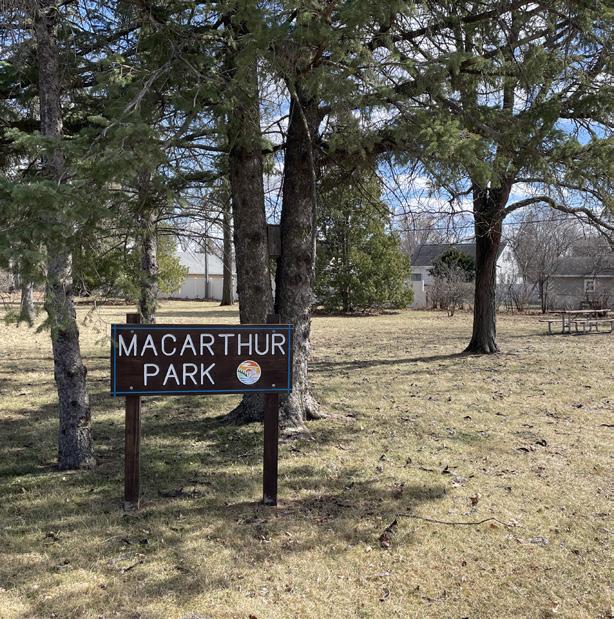
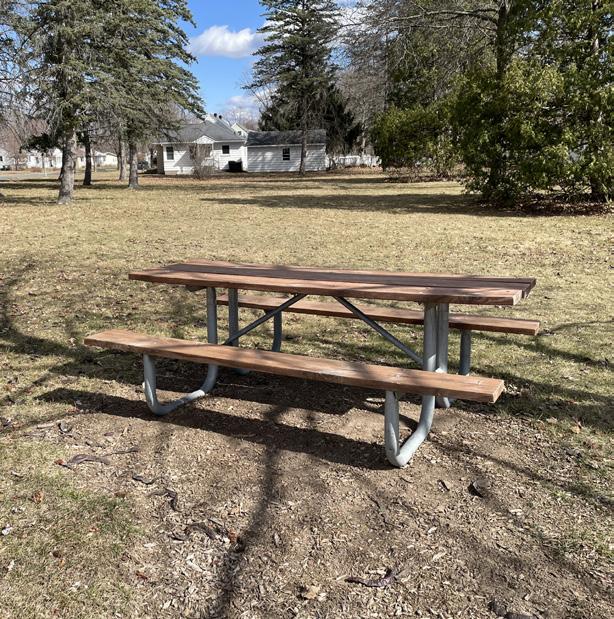
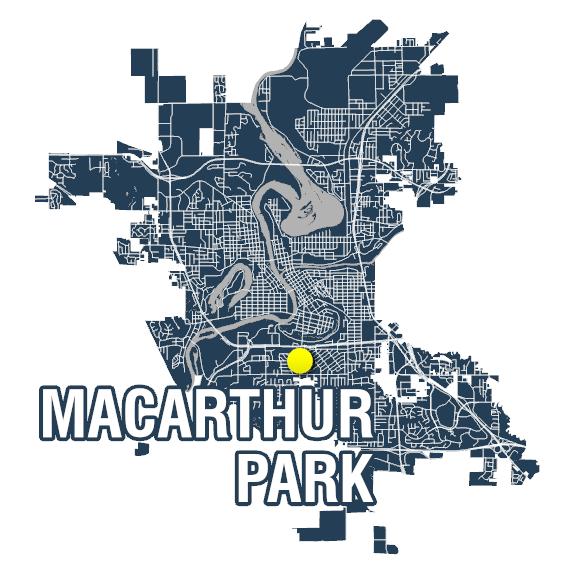
Signage along with established trees and a few picnic tables offer basic park amenities.
A passive park with wellestablished vegetation in a great neighborhood location offers the greatest opportunity. Access and limited space constrain its future potential. Located along State Street, this unique park is divided into two different areas, bisected by a roadway.
Recommended Improvements

Usability Rank Neighborhood Association
40 out of 55 parks
East Hamilton Avenue Area
Neighborhood
Inactive
Population
Breakdown
1/4 Mile Population = 1,453
(3,764 people per square mile)
Events and Programming: not available.
43 out of 55 parks Accessibility and Connectivity
Randall Park is a 2.7-acre urban park at the intersection of Broadway Street and 4th Avenue Park amenities include a central plaza, tot swings and picnic areas.


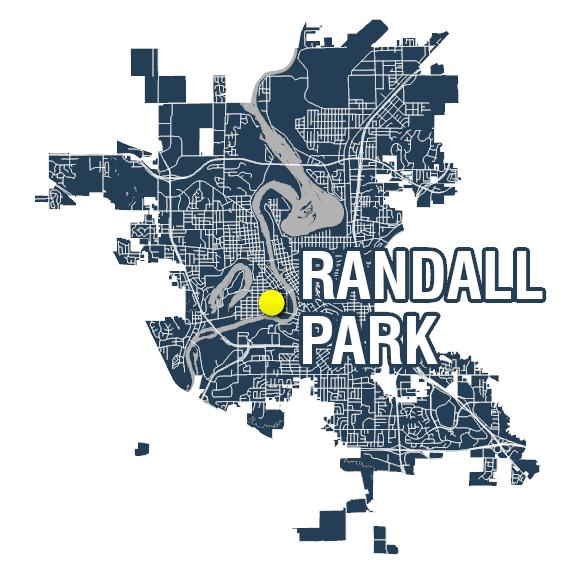
With well-established access and vegetation, this historic park is an iconic shared-use location for one of Eau Claire’s historic neighborhoods. The greatest opportunity is the park’s location in the center of the neighborhood, mixed with well-established trees. Located along Broad Street and 4th Avenue this park is central to the Randall Park Neighborhood.
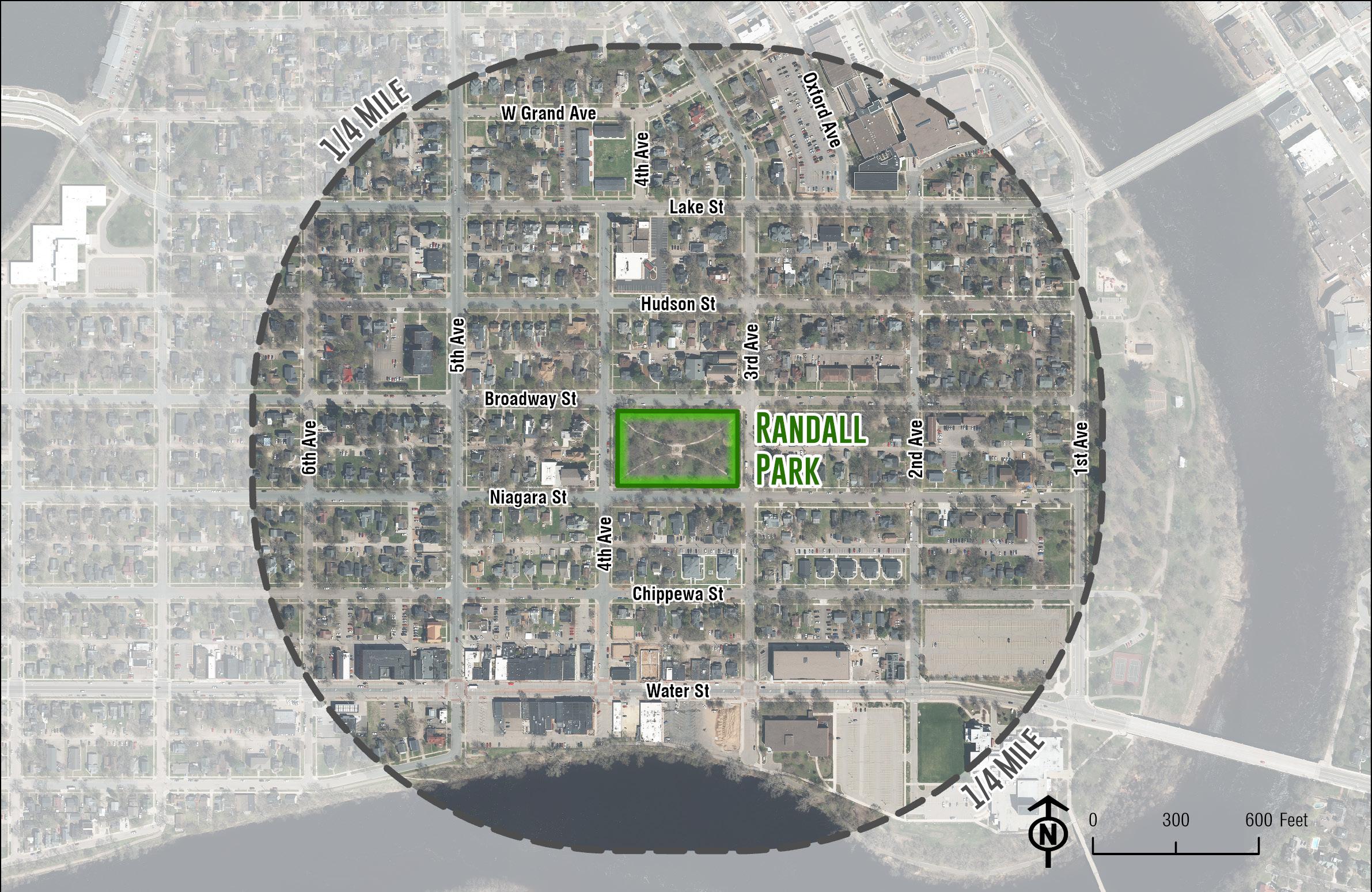
Historic Randall Park Neighborhood randallparkassociation@gmail.com https://www.randallparkec.org/
University Park is a 1.6-acre urban park at the intersection of Main Street and Doty
Street. The park is primarily green space bisected by a concrete path. Picnic tables and benches are also available.
Features
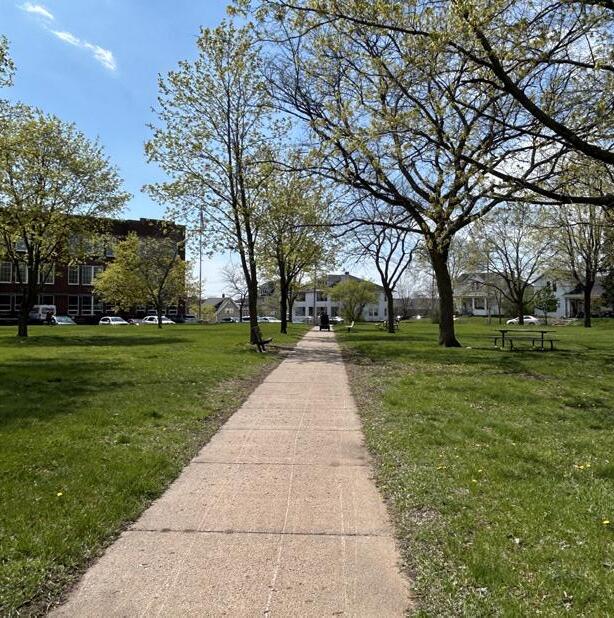
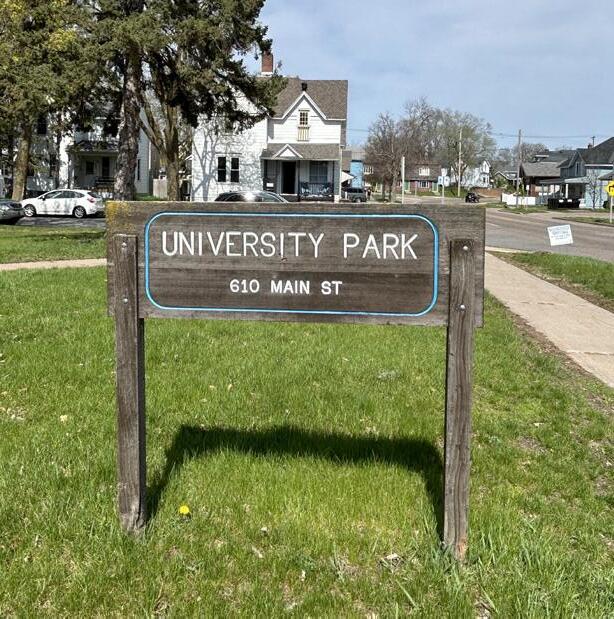
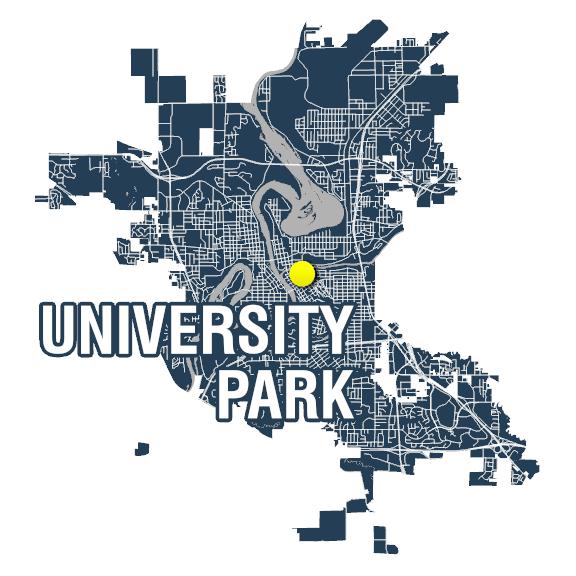
A few trees , flexible lawn space and flat terrain. The greatest opportunity for University Park is the location being close to downtown and on the edge of the East Hill Neighborhood. Located along Main Street and directly adjacent to a historic Eau Claire School, this park is a great location for redevelopment downtown.
Recommended Improvements

Usability Rank Neighborhood Association
Eastside Hill Neighborhood
35 out of 55 parks
Population
Breakdown
1/4 Mile Population = 1,526
(4,239 people per square mile)
Events and Programming: not available.
Accessibility and Connectivity
27 out of 55 parks
Wilson Park is a 1.6-acre, urban park at the intersection of South Farwell Street and Earl Street. The park contains walking trails, seating and a central plaza.

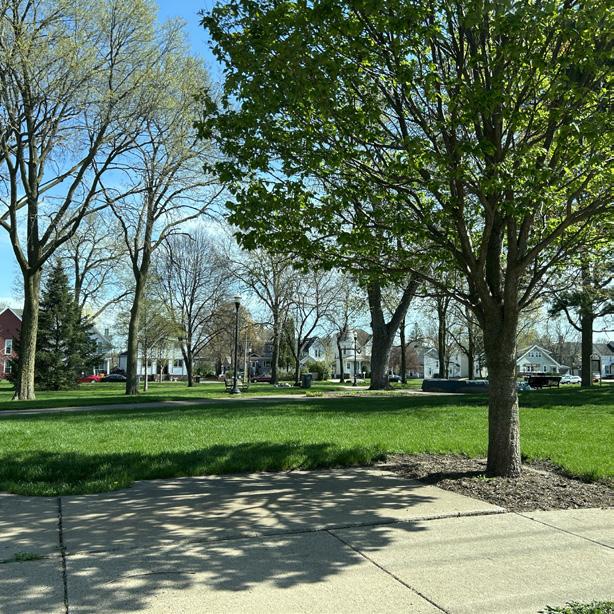
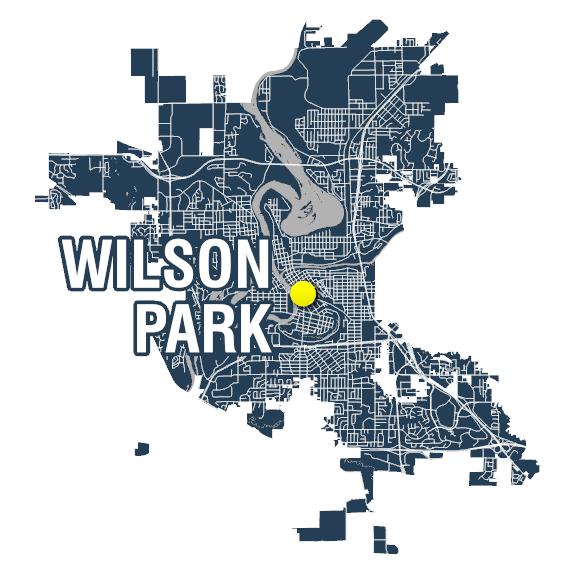
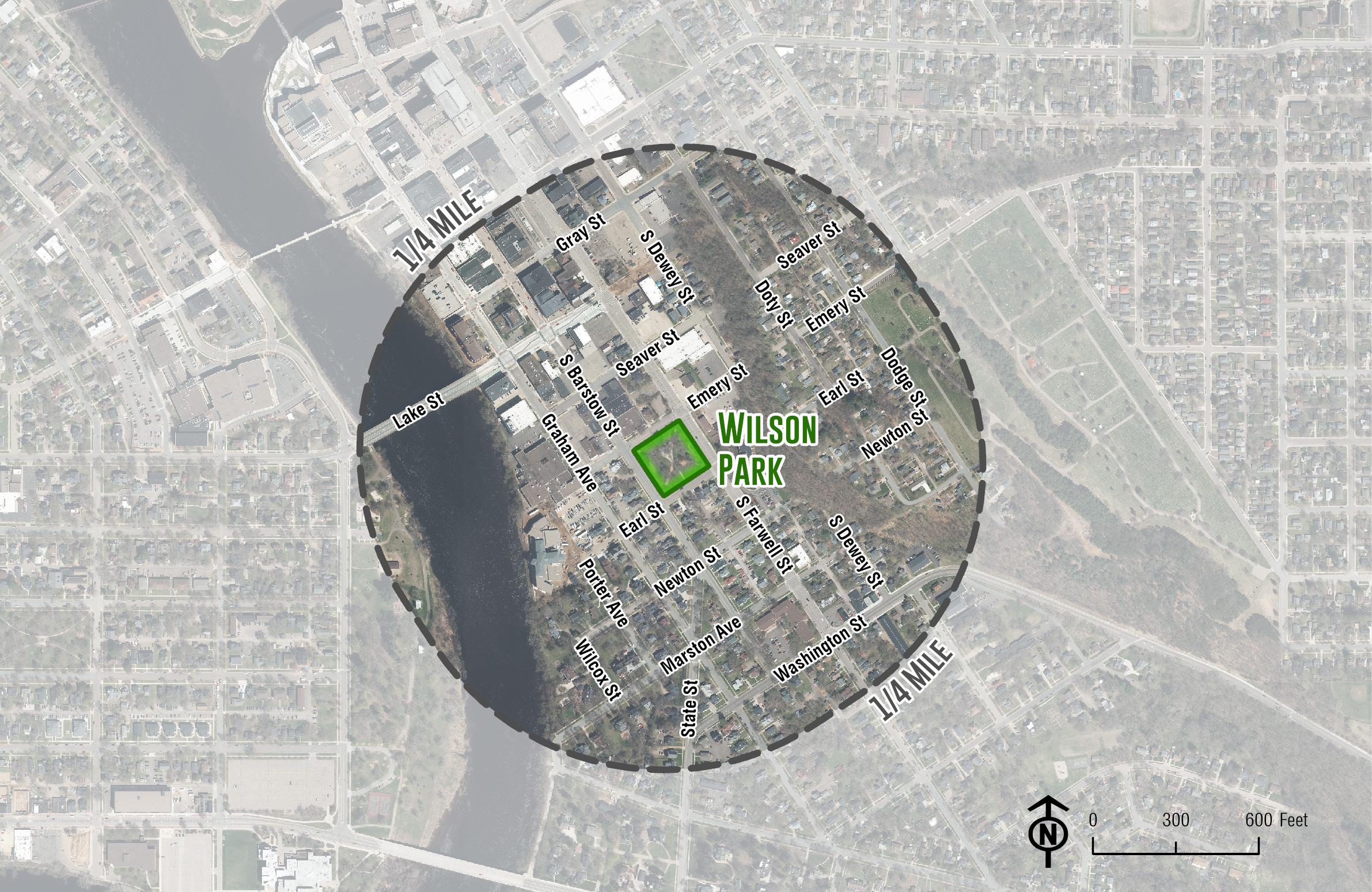
Usability Rank Neighborhood Association
Third Ward Neighborhood
An existing fountain, seating, lighting and planting beds make this urban park a place to sit and relax. Well established trees, mixed with basic passive recreation give a great foundation for future park improvements.
1/4 Mile Population = 1,642 (6,846 people per square mile) Population Breakdown 43 out of 55 parks 1 out of 55 parks
Wold Court Park is a 1.8-acre, urban park north of East Clairemont Avenue and encircled by Wold Court. The park contains plantings and a small community garden.


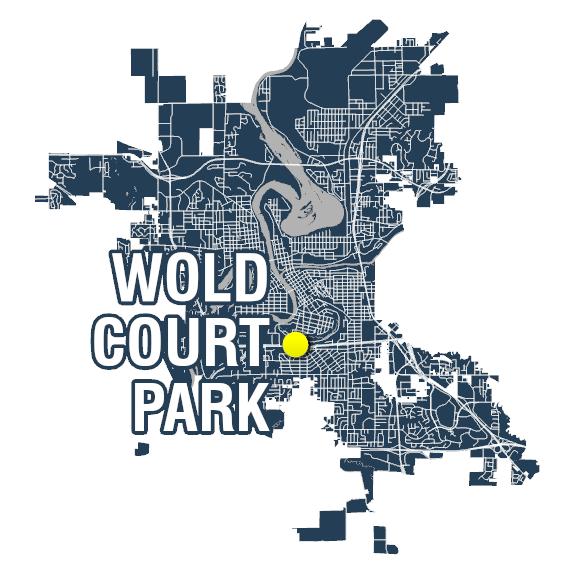
Community gardens and well established trees. The greatest constraint for this park is the limited circulation and access while the greatest opportunity is flexible open space for nearby residents. Located near the UW-Eau Claire campus and just north of Clairemont Avenue, this park, while difficult to access is in a great location for residents in the surrounding neighborhood.
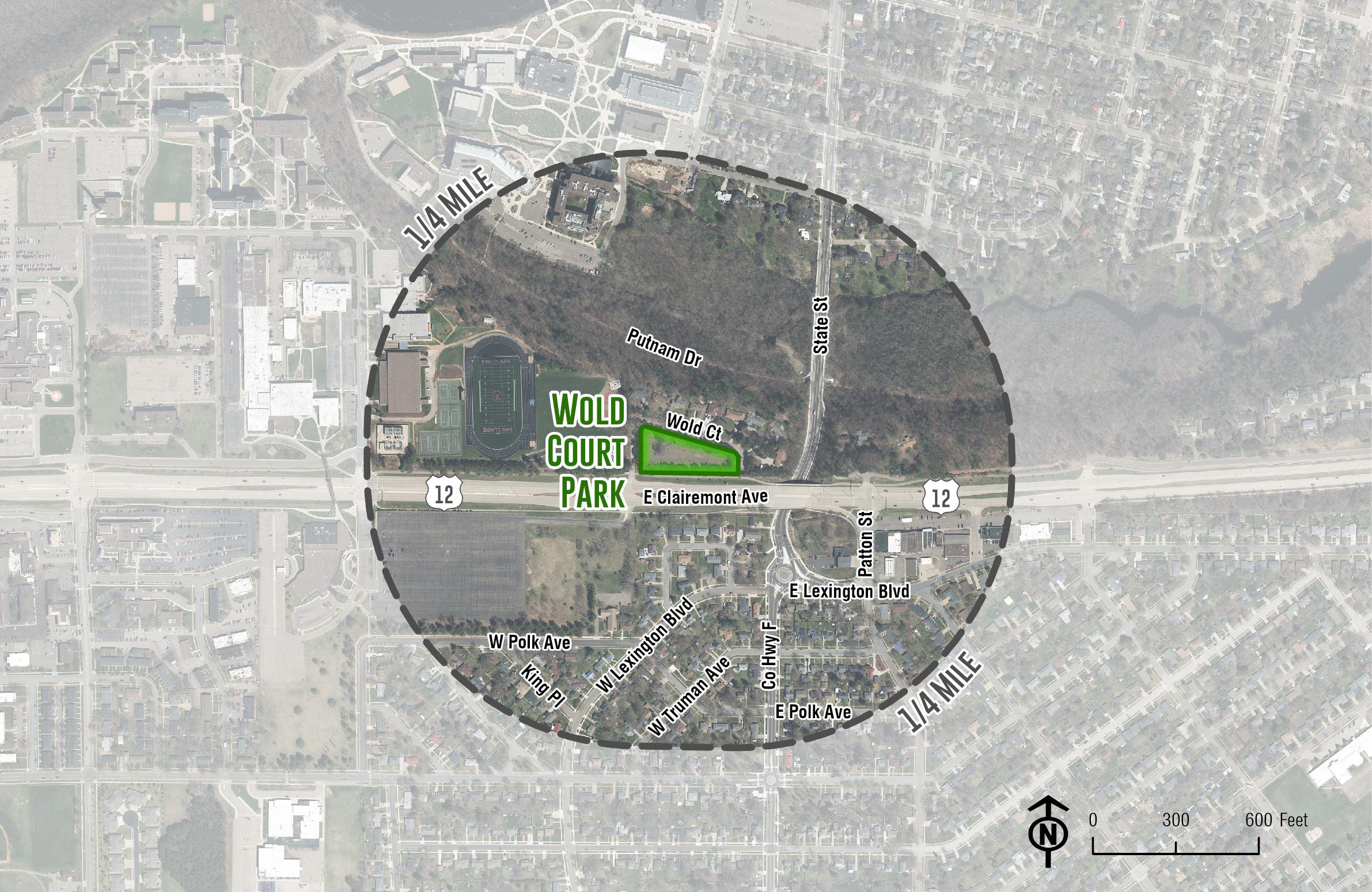
Neighborhood Association
42 out of 55 parks
Population Breakdown
1/4 Mile Population = 1,111 (3,086 people per square mile)
Events and Programming: not available.
Accessibility and Connectivity
46 out of 55 parks
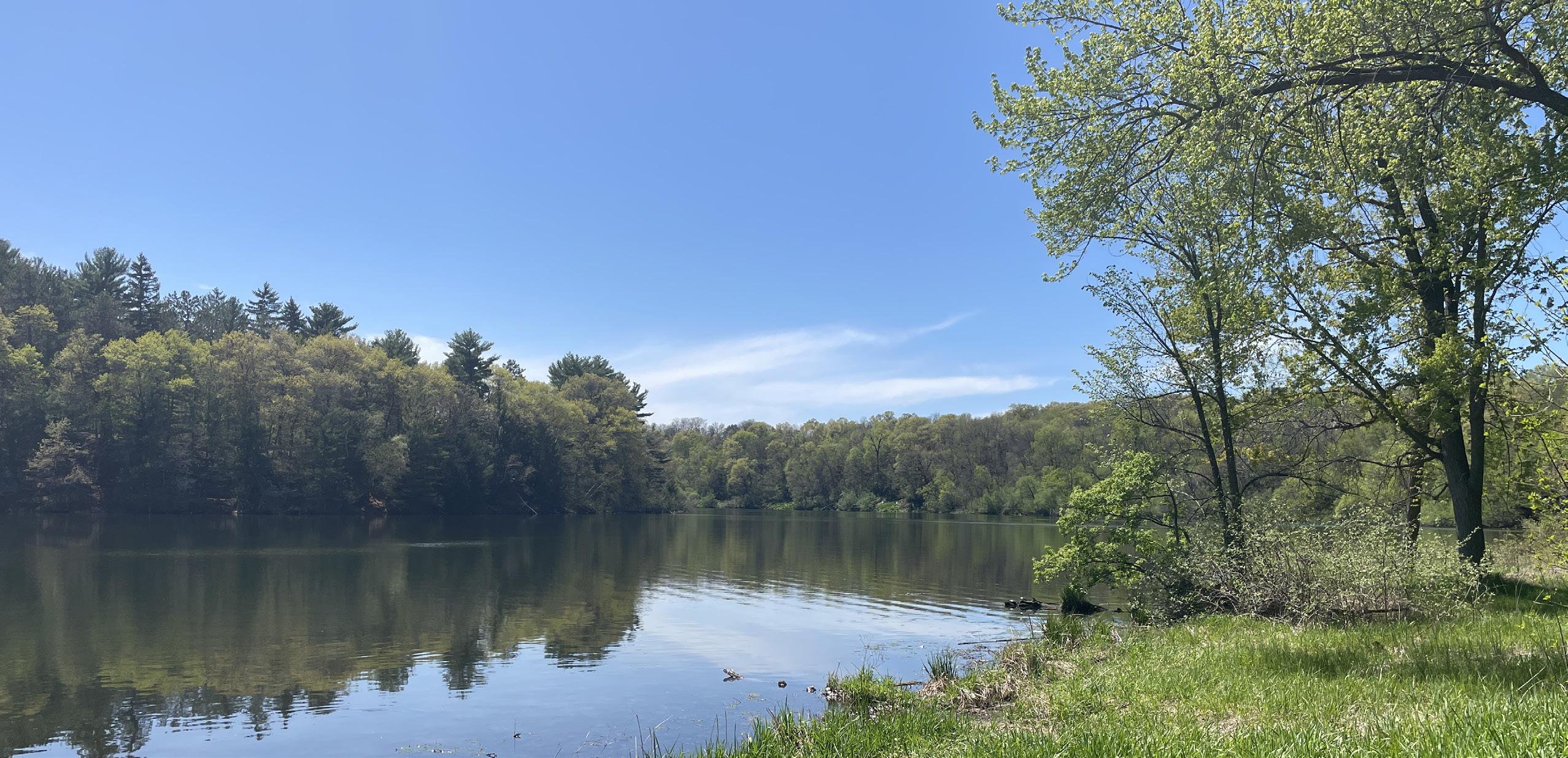
Special use parks, as defined by the National Parks and Recreation Association, are unique recreational spaces designed to serve specific purposes or activities that fall outside the scope of traditional neighborhood or community parks. These parks typically focus on a single type of recreational facility or attraction, such as botanical gardens, golf courses, skate parks, sports stadiums, or historic landmarks. Because they are tailored to a particular function, they often require specialized maintenance, management, and planning. The primary distinction of special use parks is their dedication to a particular activity, which sets them apart from multi-use parks that offer a range of recreational opportunities.
Communities should understand that special use parks are categorized based on their singular purpose and the unique experiences they provide. Unlike general parks that aim to serve a broad population with various activities, special use parks typically attract users who are specifically interested in the unique offering of the space, whether it’s a large amphitheater for concerts or a nature reserve for birdwatching. These parks are vital to the community because they enrich local culture, offer specialized recreation, and may even serve as regional or tourist destinations. As such, it’s important for the community to recognize their distinct role in the overall parks system, as they enhance the diversity of recreational options available to residents.
• Archery Park
• Bayview Park
• Domer Park
• Hobbs Landing
• Kappus Park
• Kyes Park
• Mount Tom Park
• Mount Washington
• Open Space
• Open Space
• Otter Creek Dog Park
• Shale Pit
• Southwest Park
• Stussy Park
• Sundet Dog Park
• Veterans Park
Archery Park is a 7.6-acre special area adjacent to the Eau Claire River and north of the intersection of Main Street and Chapin Street. The park is primarily a natural area with natural surface hiking trails.
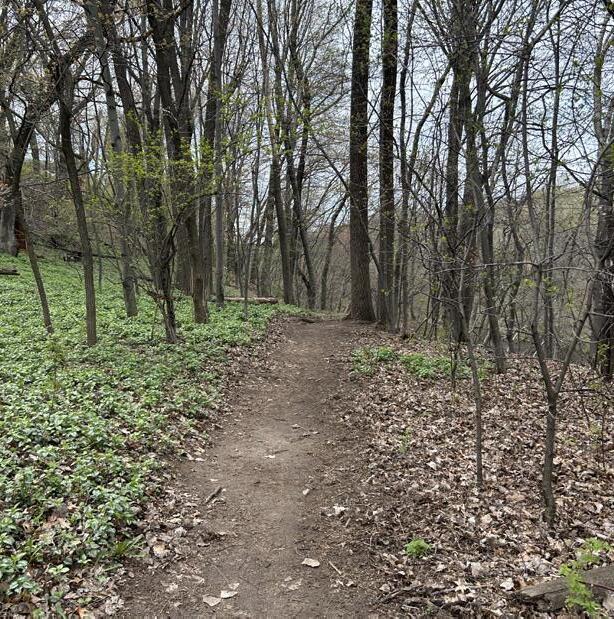

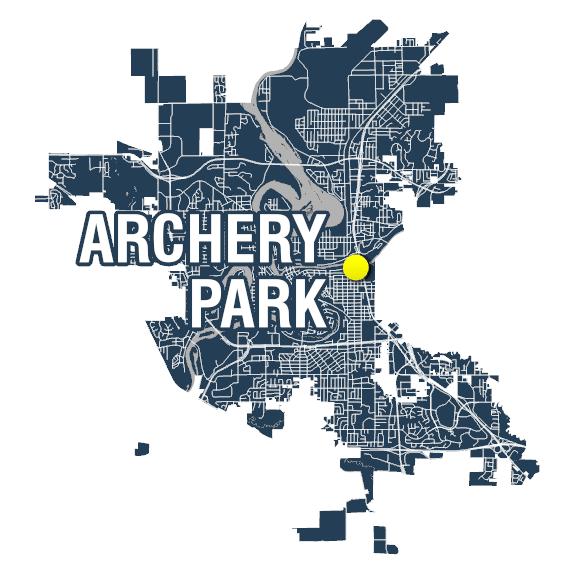
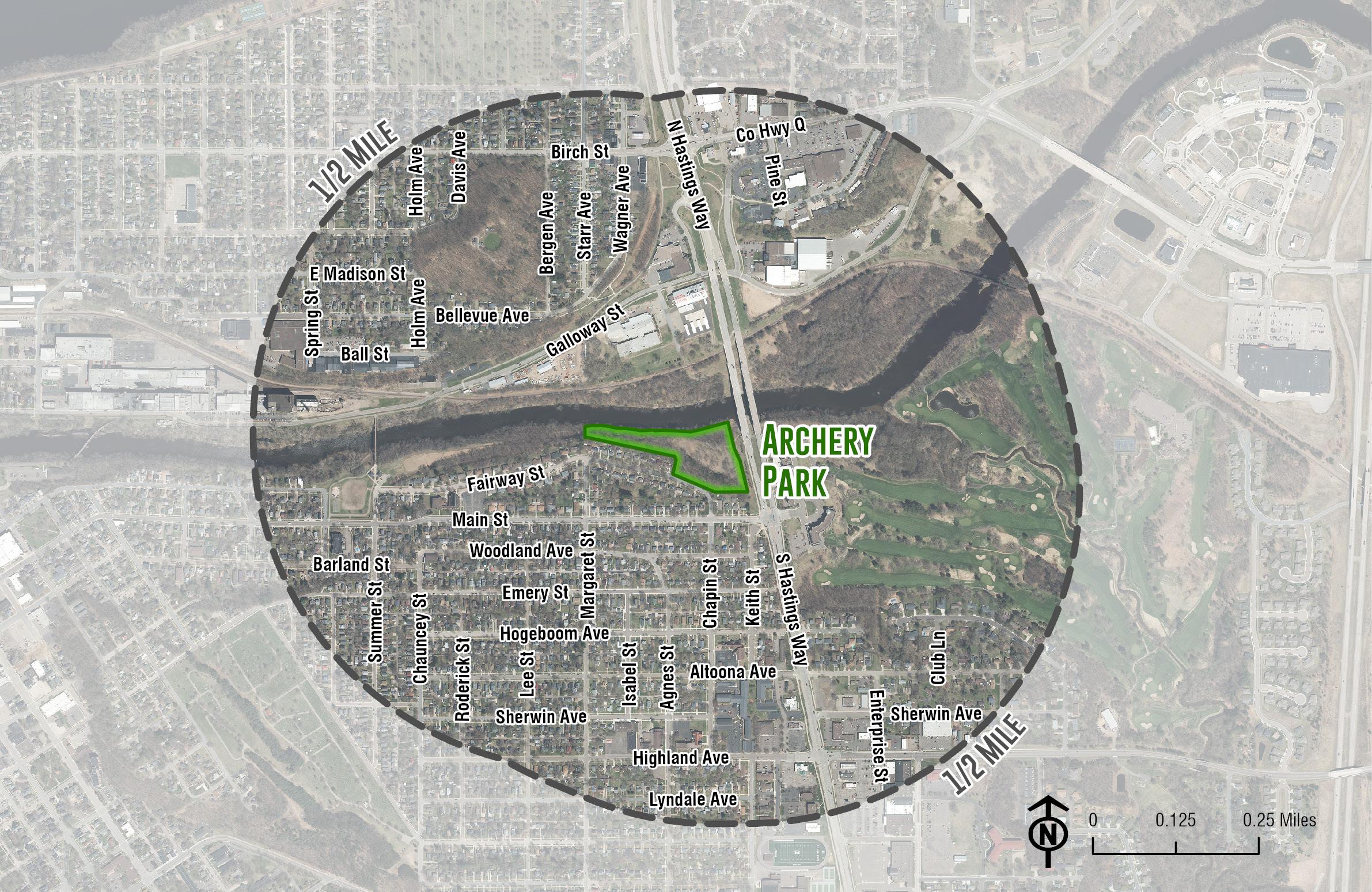
access to rustic trails that run along the Eau Claire River and connect Boyd Park and Altoona, WI. Natural area located in the heart of a residential neighborhood.

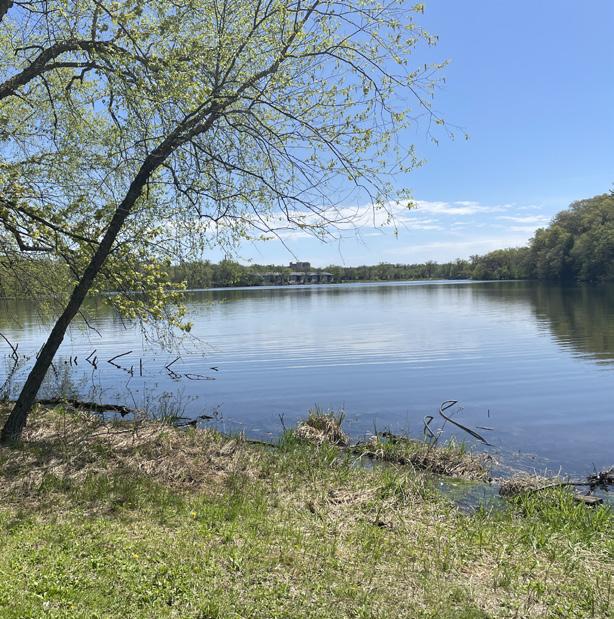

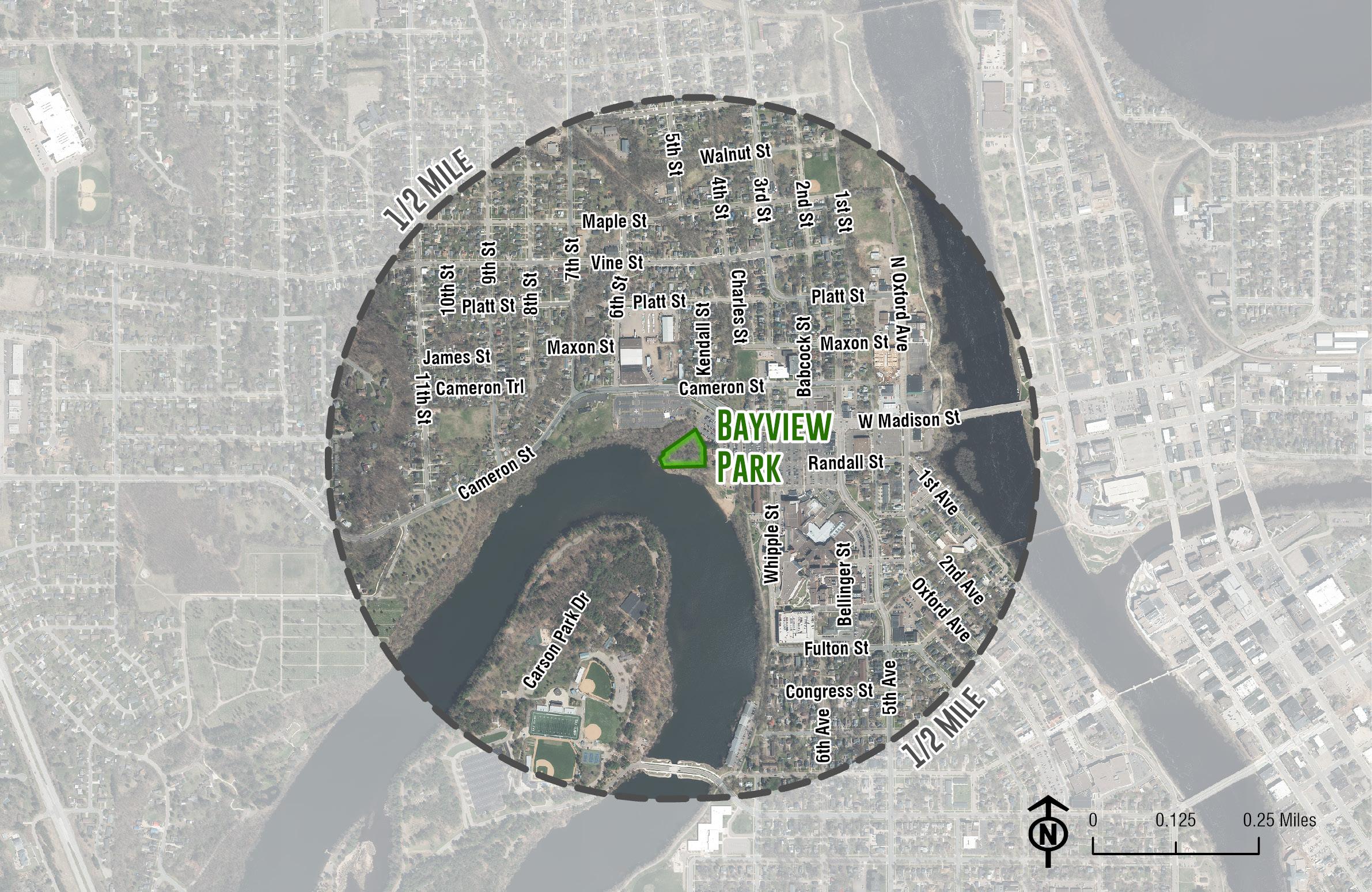
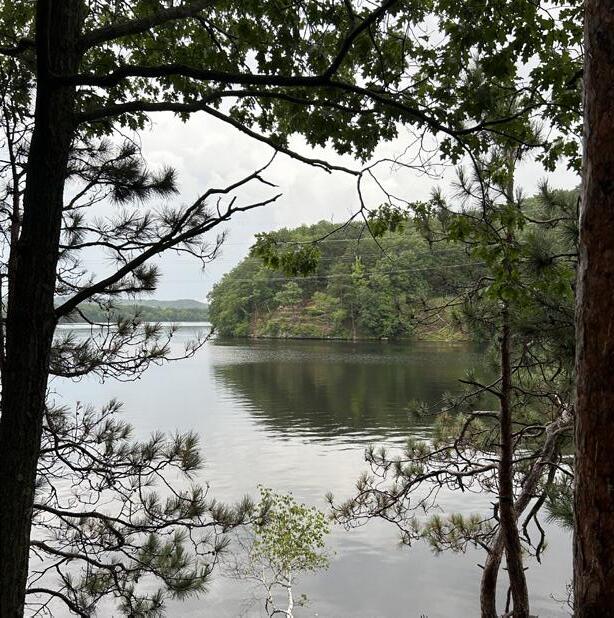


and Constraints
Existing seating, trails, an unpaved parking lot and access to the Chippewa River.
The challenging topography and working along the Chippewa River limit the amount of available land to utilize. The scenic natural space is the greatest opportunity. Located on the north side of Eau Claire, this natural area is a great respite and separation from the natural areas nearby.
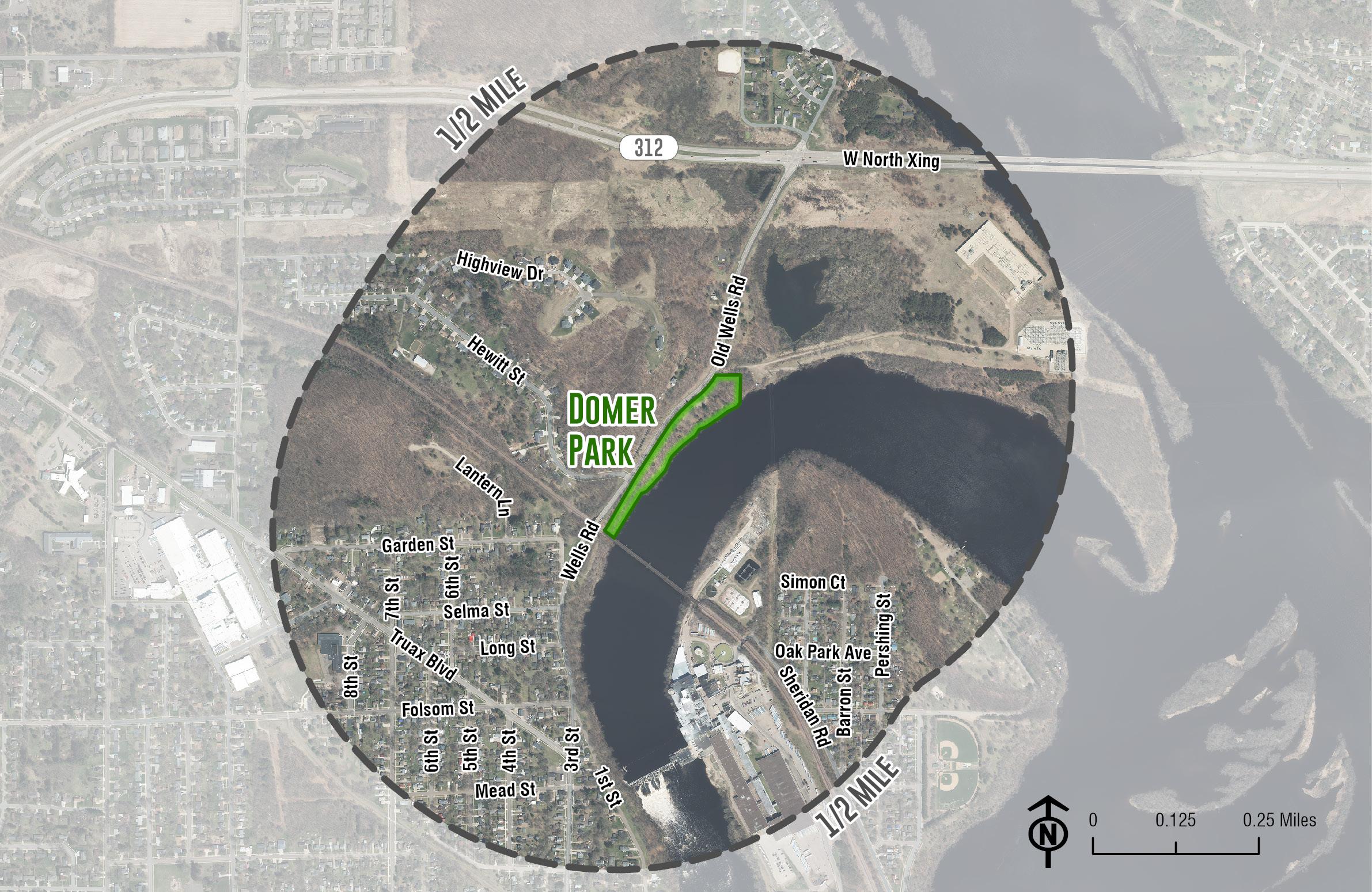
47 out of 55 None Usability Rank Neighborhood Association
1/2 Mile Population = 1,695 (1,413 people per square mile) Population Breakdown
48 out of 55 parks Accessibility and Connectivity
Hobbs Landing is a 1.2-acre special area located on the Chippewa River near the intersection of Market Street and 9th Avenue. Amenities include a boat launch, picnic area and access to the Chippewa River State Trail.
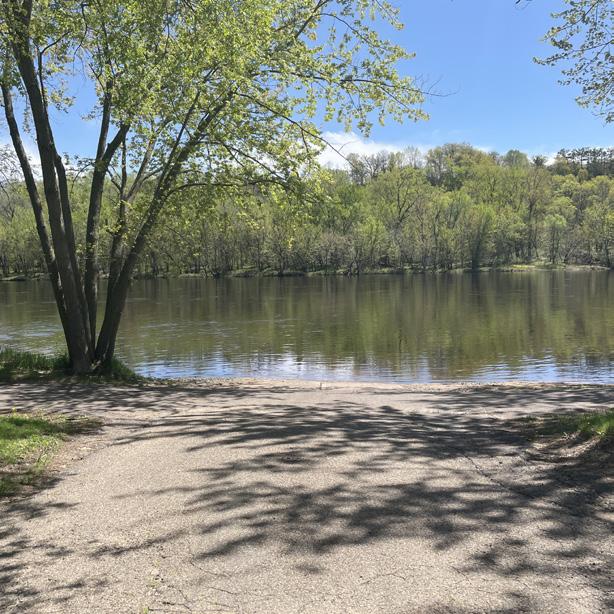
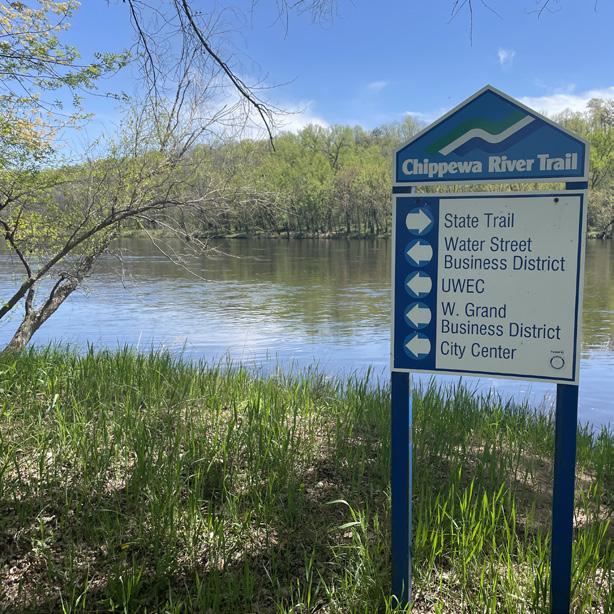
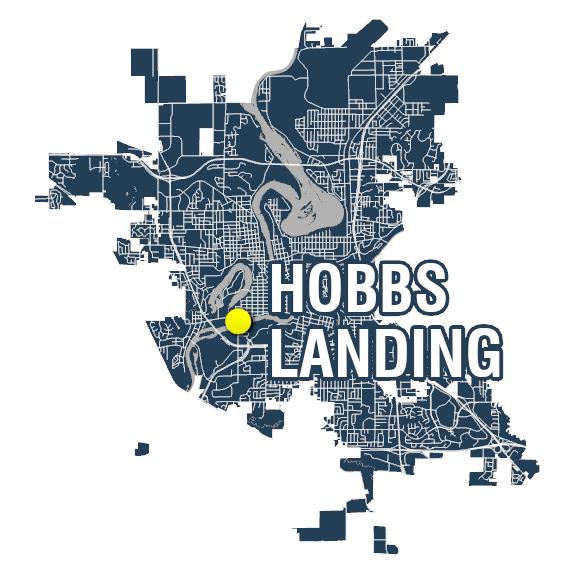
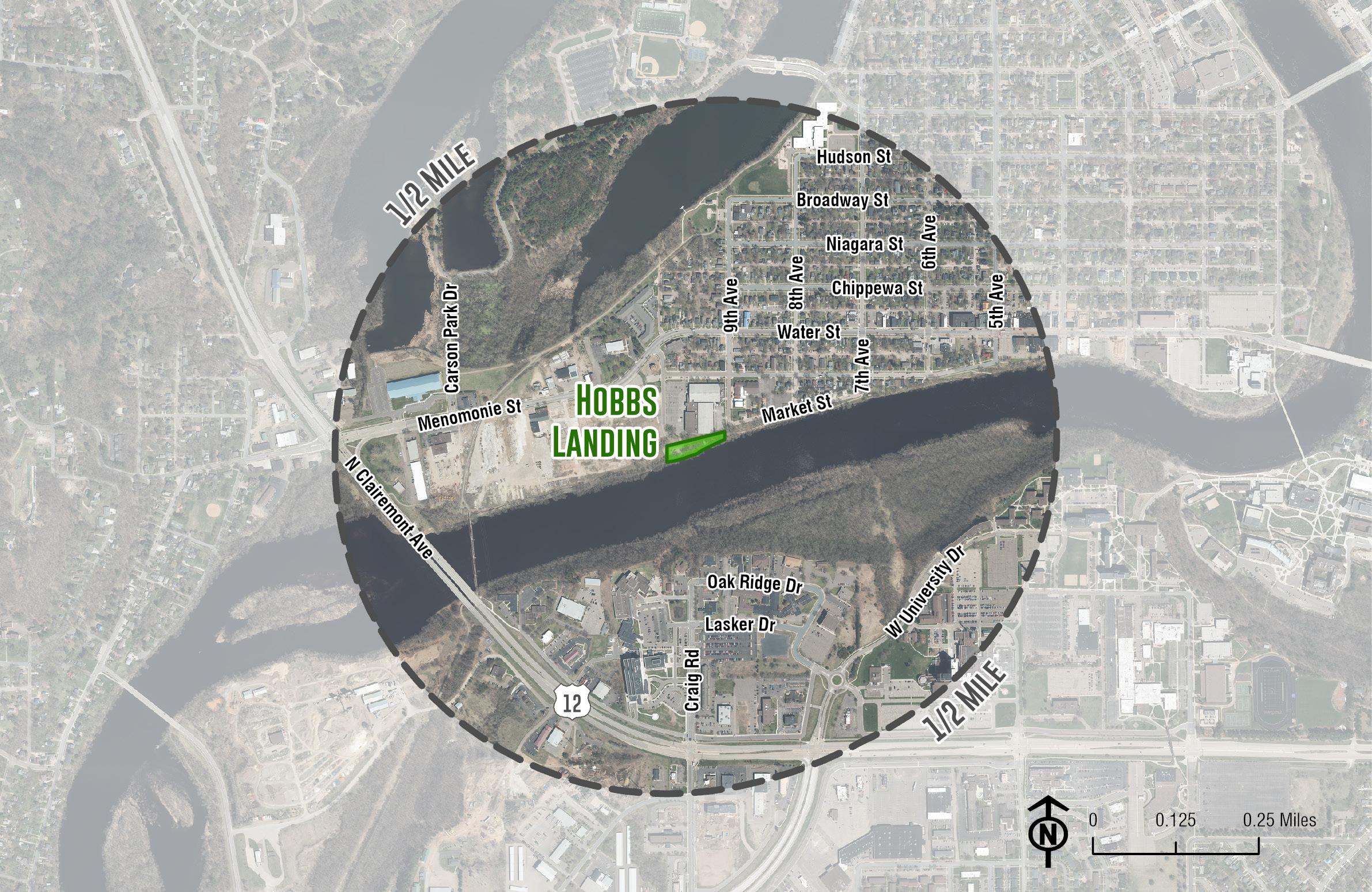
Association
The boat launch is a key take out location along the Chippewa River in Eau Claire. Water access and trail connectivity are the greatest opportunities but the floodplain and topography are the largest challenge. Located right below the new Sonnentag Center and just south of Water Street, this is a great location with water access to downtown.
Historic Randall Park Neighborhood randallparkassociation@gmail.com https://www.randallparkec.org/
Kappus Park is a 2.1-acre special area located at the intersection of Gilbert Avenue and Drummond Street. The site is an open space and natural area with no recreational improvements.
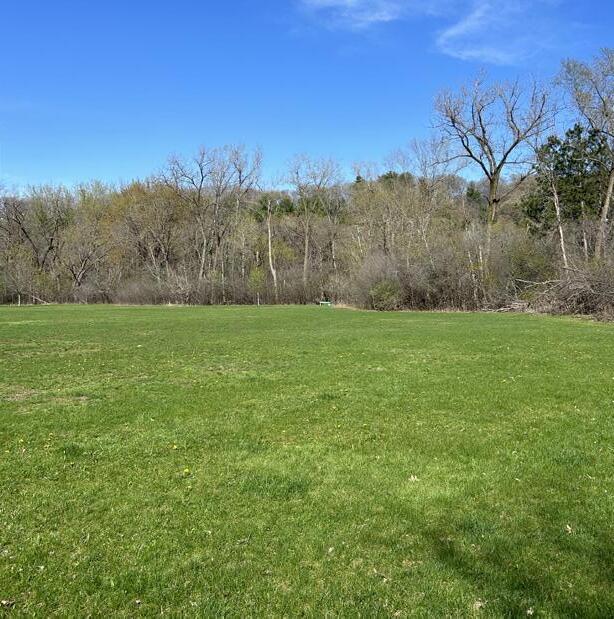

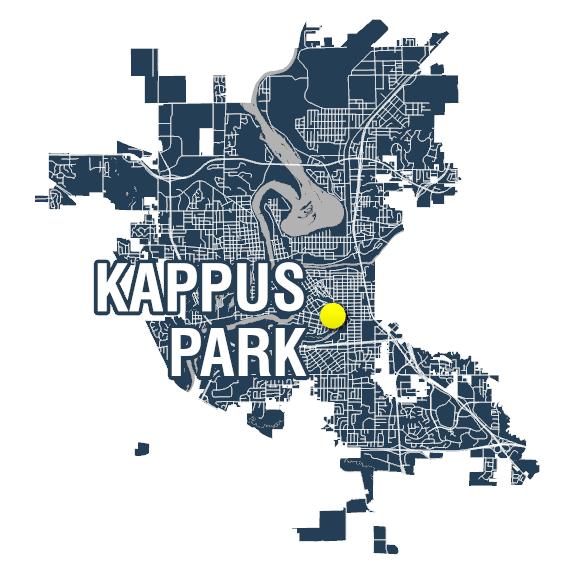
The mowed lawn and natural elements are the key features of this smaller park.
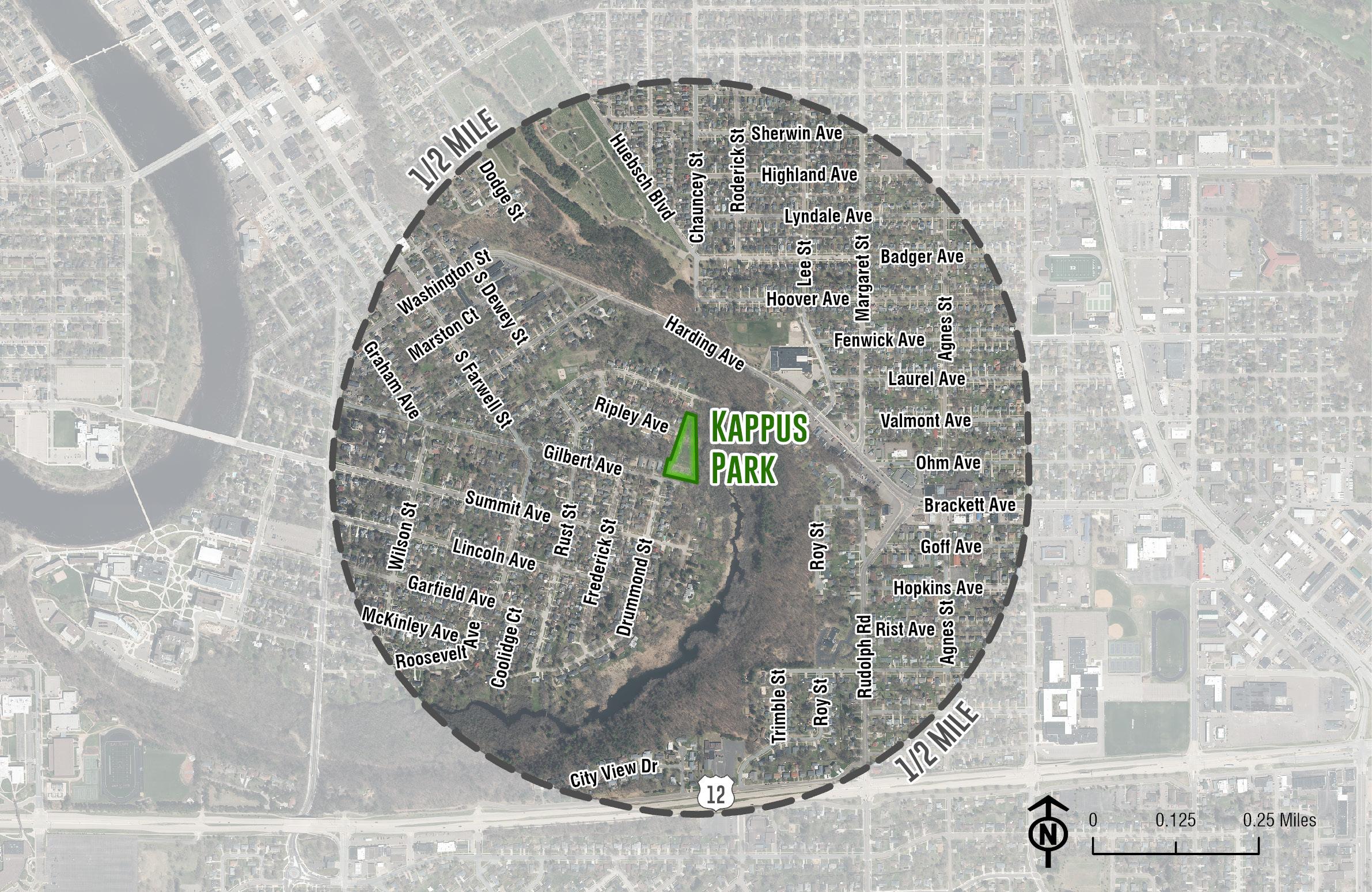
Usability Rank Neighborhood Association
Third Ward Neighborhood
1/2 Mile Population = 4,413 (4,163 people per square mile) Population Breakdown Events and Programming: None
Kyes Park is a 110.2-acre special area located at the intersection of South Lowes Creek Road and Deerfield Road. This large land mass is largely undeveloped.
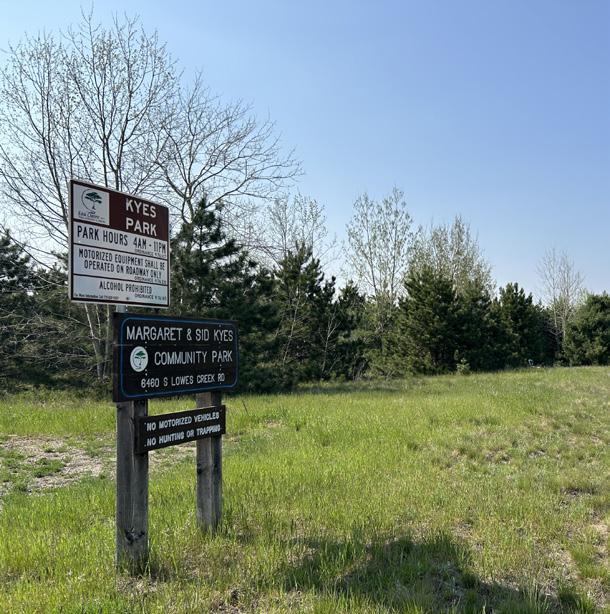
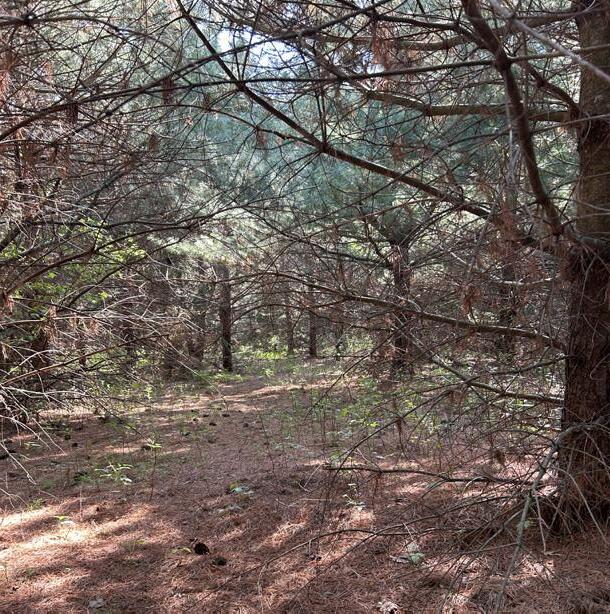
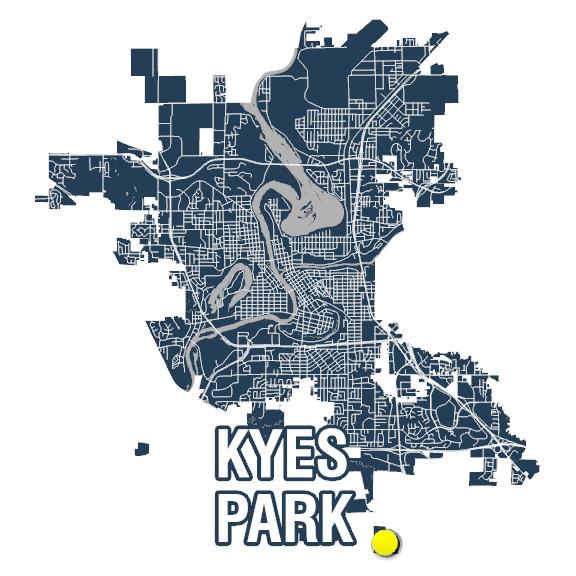

With 110 acres of natural space, this largely undeveloped natural area is home to a significant amount of biodiversity. As development continues to the south, the greatest opportunity lies in the future. Topography will be a challenge for developing future accessibility.


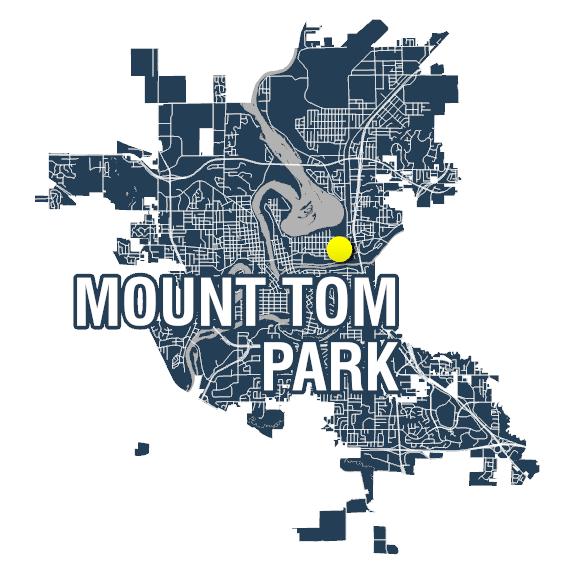
An established natural forest along with the limited development surrounding this area makes for a great natural area near residential neighborhoods. The greatest opportunity is the established urban natural area however access is very limited due to the topography of this site. The north side of this park has the most manageable topography, and the neighborhood itself doesn’t lack any park amenities.

Mount Washington Park is a special-use park located at the top of Mount Washington. This park is leased to the Ski Team and they have full control over improvements.
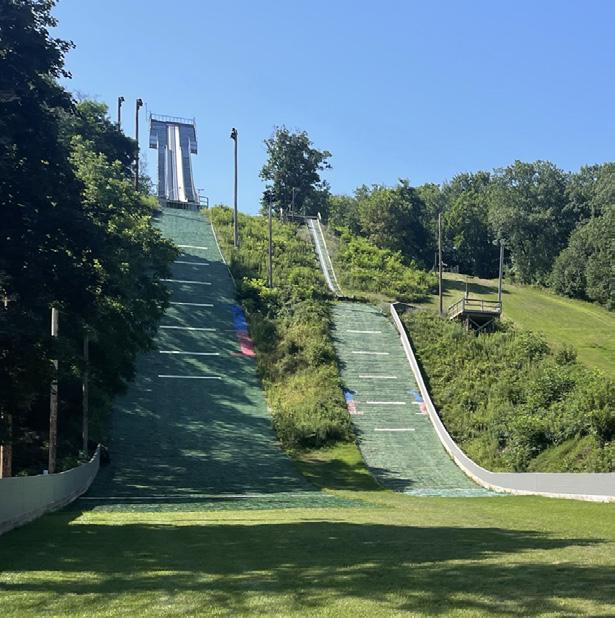
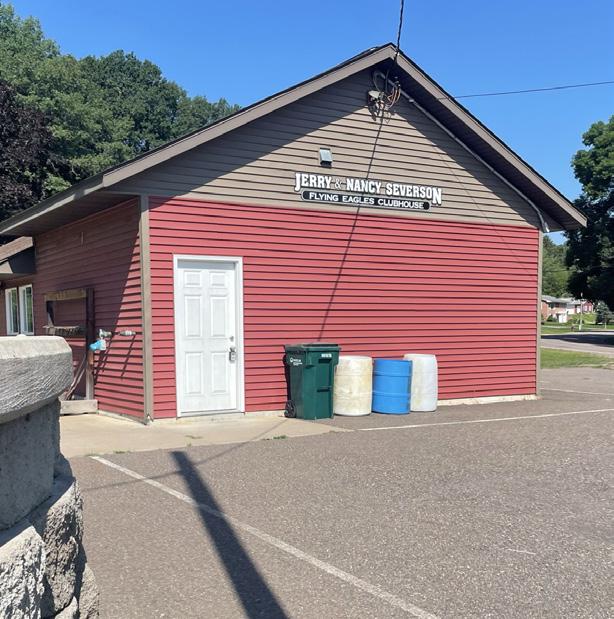
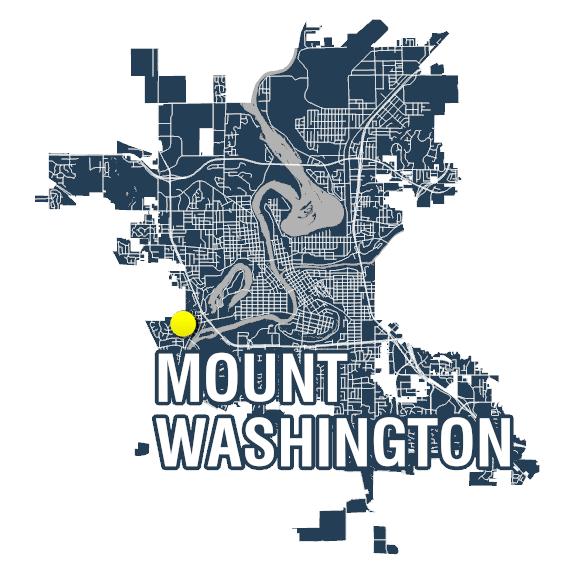
Multiple ski jumps, existing buildings with restrooms, concessions and a paved parking lot. The ski teams activity at the park is a great use of this space, with topography being both an asset and a challenge. Located along Mount Washington Avenue, this park is situated at one of the highest points within the City of Eau Claire. None at this time
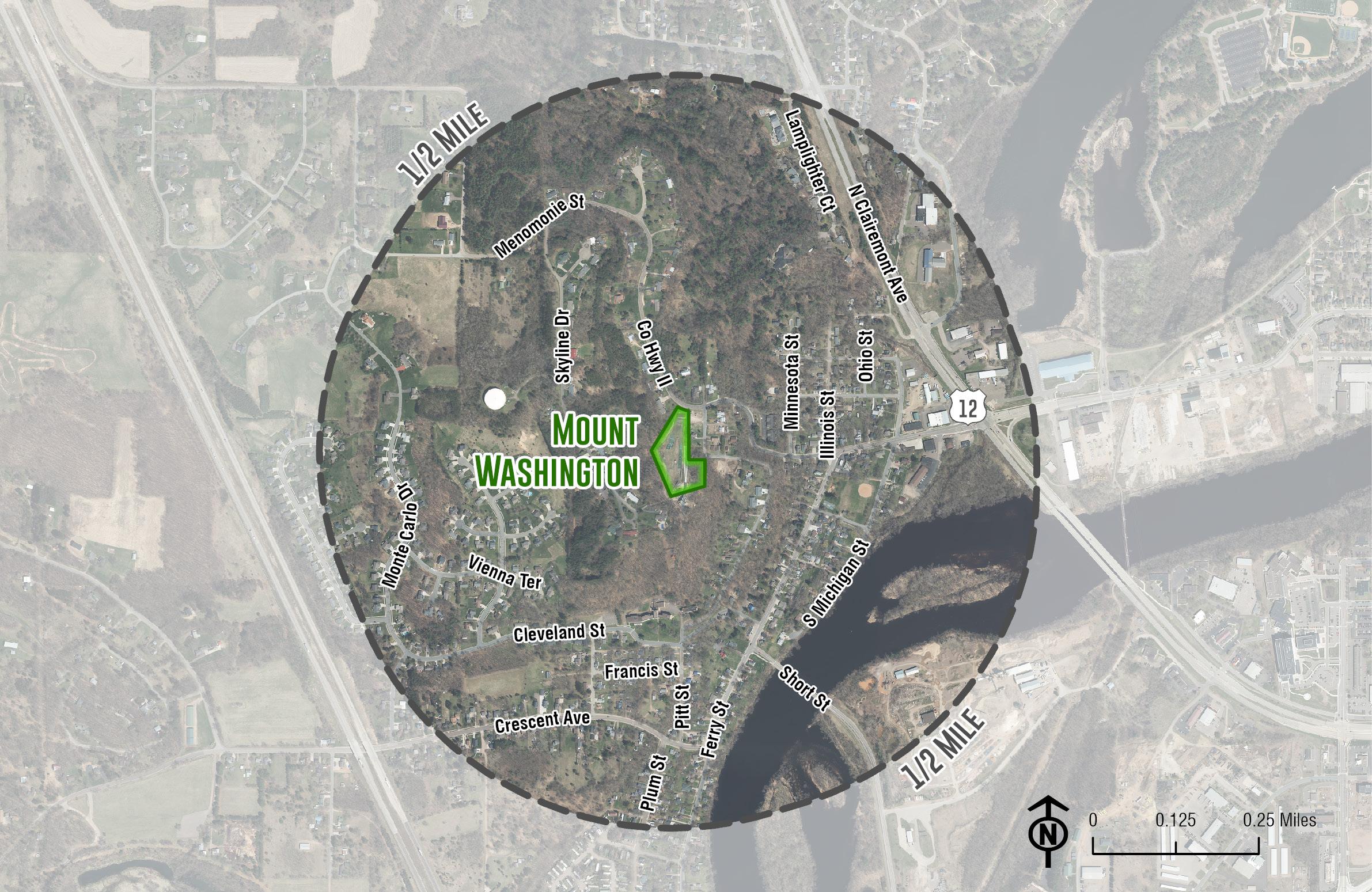
30 out of 55 parks
Mt. Washington Neighborhood Usability Rank Neighborhood Association
1/2 Mile Population = 1,858 (1,191 people per square mile) Population Breakdown
Events and Programming: None
Accessibility and Connectivity
35 out of 55 parks
1.25 acres of unnamed open space is located on the City’s west side near the intersection of Vesterheim Street and Maren Court. There are currently no improvements on the site.
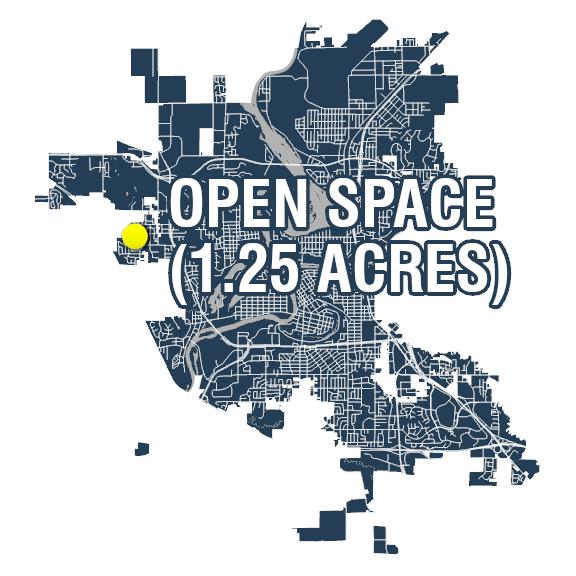

out of 55 parks
1/2 Mile Population = 1,721 (1,687 people per square mile)
Breakdown Events and Programming: None
out of 55 parks
0.18 acres of unnamed open space is located at the intersection of Wilson Drive and Cedar Street. A bench is the only improvement on the site.
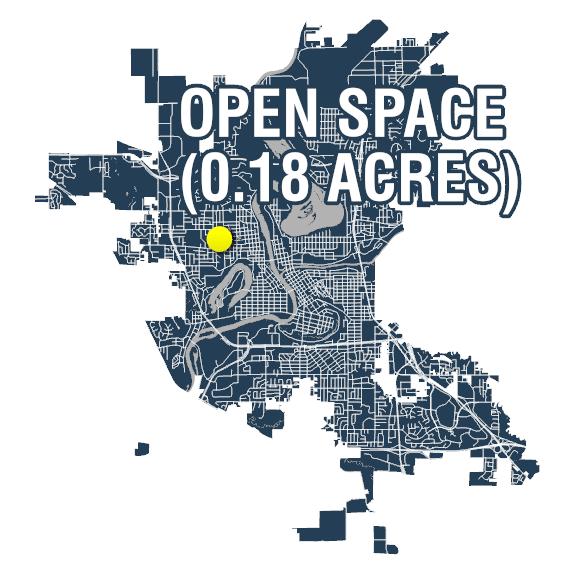
Well established existing trees. There are no significant opportunities for this space, but the constraints include its location and being surrounded by roadways. Currently located in the center of a residential neighborhood this small natural area is a good use of space with limited maintenance requirements.
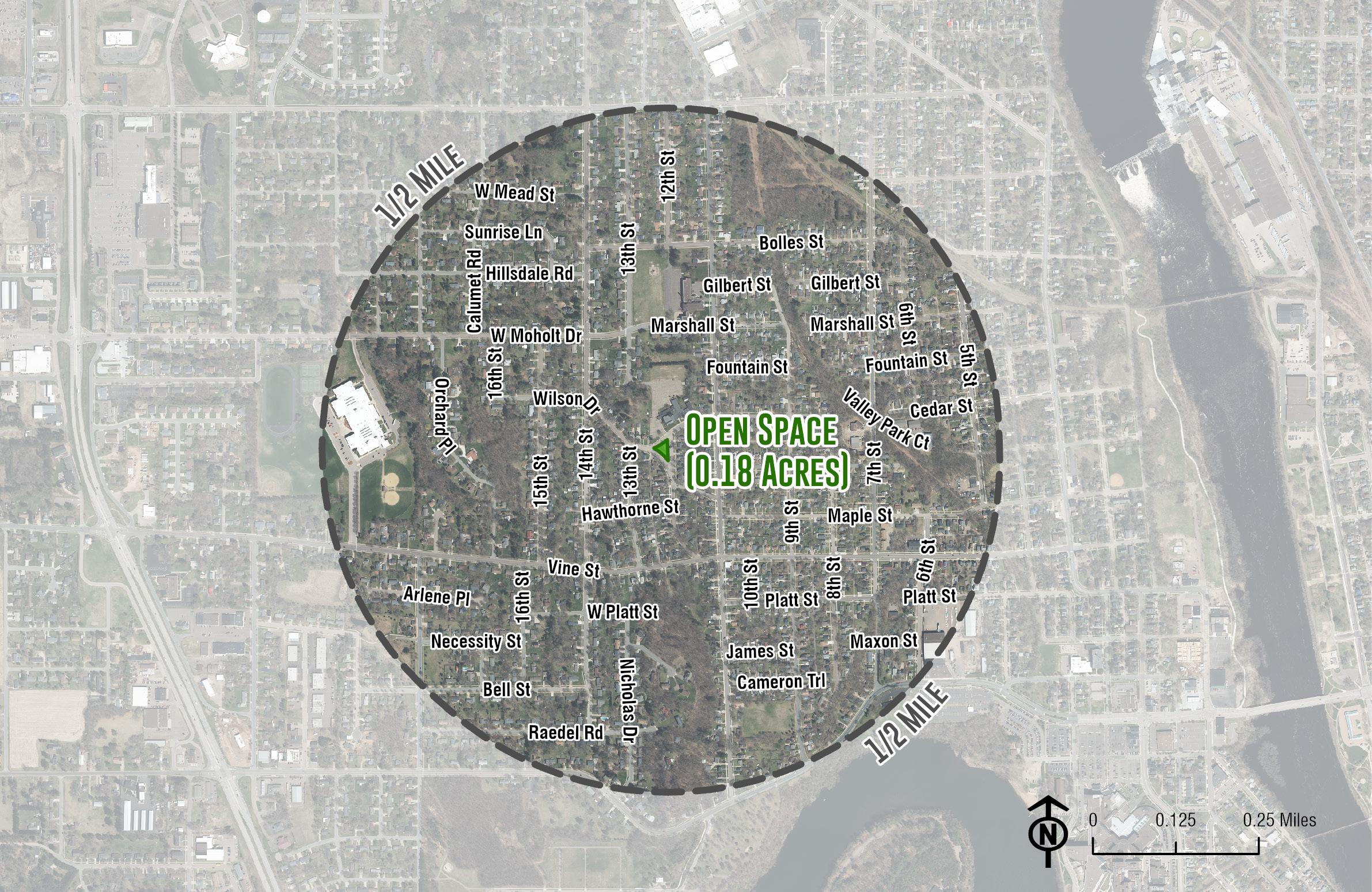
Usability Rank Neighborhood Association
Eau Claire Upper Westside Neighborhood Amanda Babb
1/2 Mile Population = 3,512 (3,990 people per square mile)
Population Breakdown Events and Programming: None 51 out of 55 parks 51 out of 55 parks Accessibility and Connectivity
The Otter Creek Dog Park is an 11.4-acre, special area on the City’s southeast side near the intersection of I-94 and US Highway 53. The park includes separated and fenced areas for small and large dogs.


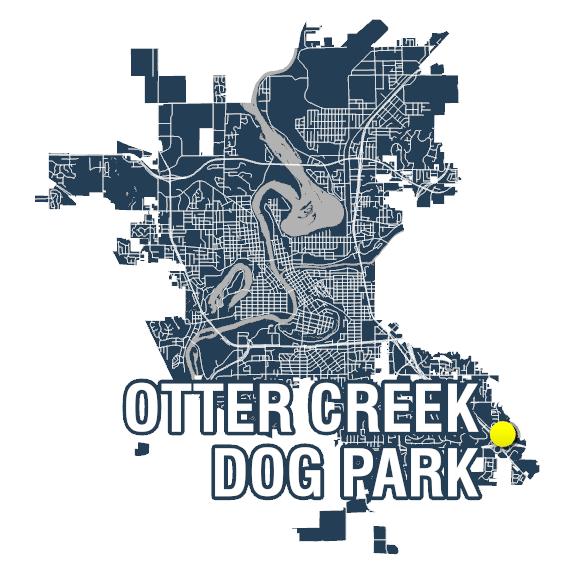
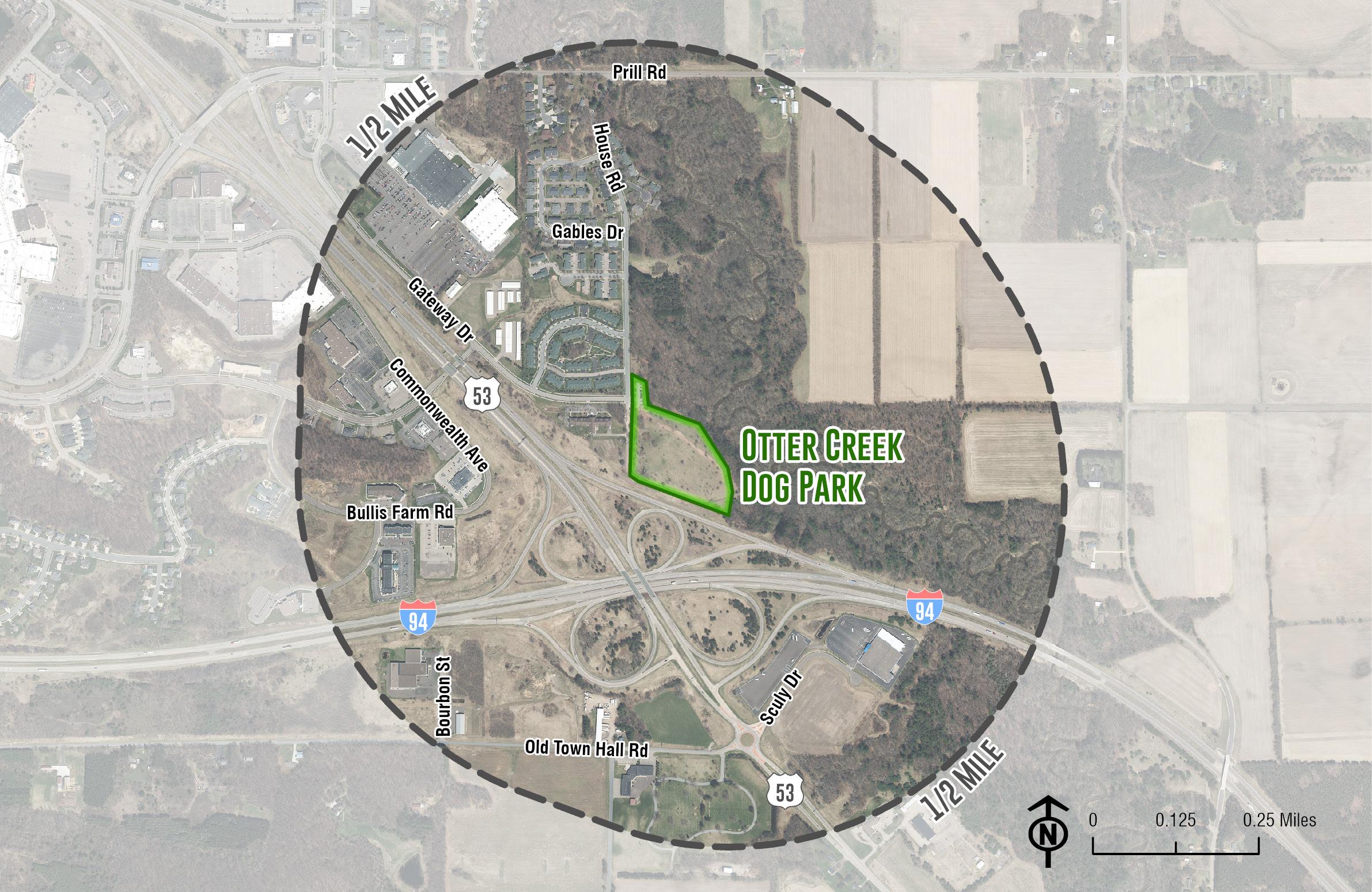
The existing dog park with ample shade and accessible parking. The challenge of this park is finding supporting uses that do not conflict with the already successful dog park. As the City of Eau Claire expands, this area will be important for future outdoor space. Located on the far south east side of Eau Claire this dog park is a regional destination for dog owners wanting to get their dog off the leash and run.
1/2 Mile Population = 777 (535 people per square mile) Population Breakdown
Events and Programming: None 22 out of 55 parks
out of 55 parks
The Shale Pit is a 12.2-acre special area located on the City’s east side, near the intersection of Zephyr Hill Avenue and Seymour Road. The site is a natural area with no recreational facilities.
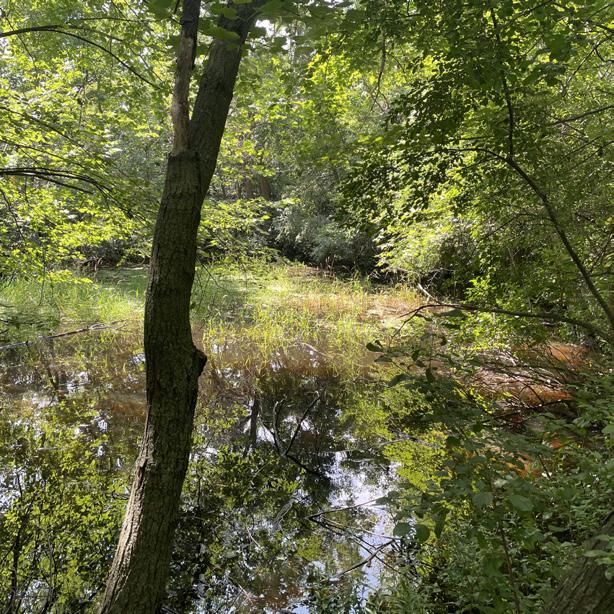
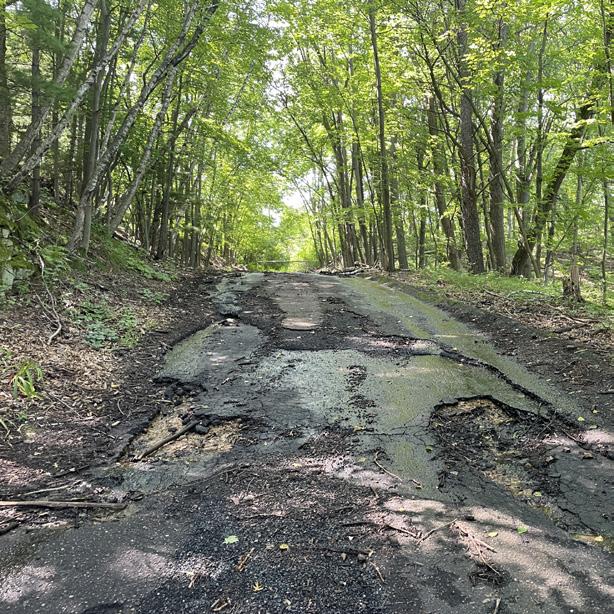
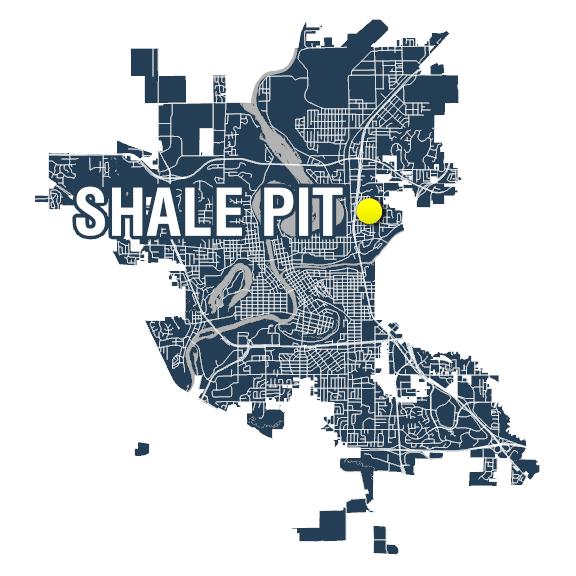
Limited access and unique habitat and topography. The biggest challenge is this park’s greatest opportunity, the unique geography and natural space make this park a destination worthy visit. Located just on the east side of Hastings Way, the shale pit is a natural area used by neighborhood residents to get out into nature.

Usability Rank
52 out of 55 parks
Population Breakdown
1/2 Mile Population = 3,121
(2,213 people per square mile)
None
Neighborhood Association
Events and Programming: None
Accessibility and Connectivity
47 out of 55 parks
Southwest Park is a 14.9-acre special area located at 1000 Ferry Street and adjacent to the Chippewa River. The park serves as the southwest Eau Claire offleash dog park.

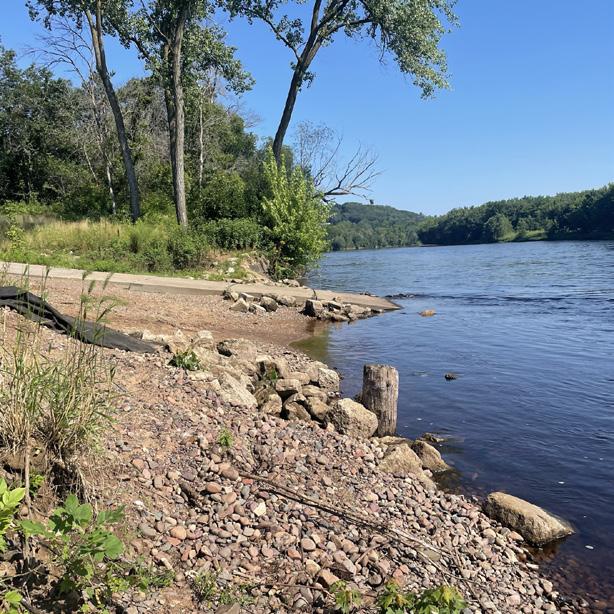
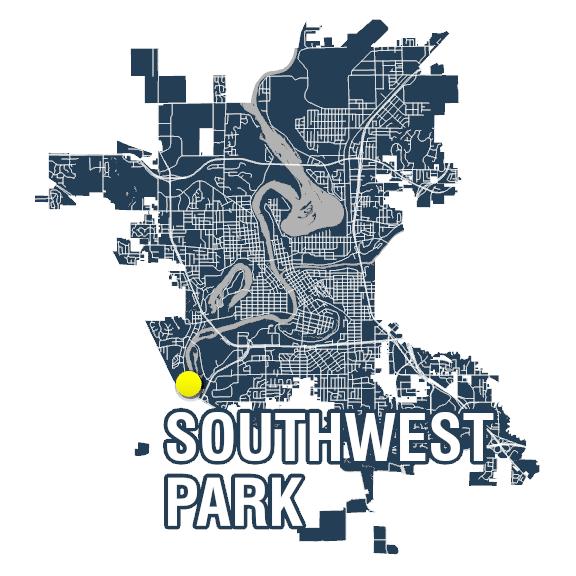
The newly upgraded dog park with boating access and an accessible parking lot are key features.
and working with the natural flows of the river are a challenge along with access to the larger community.
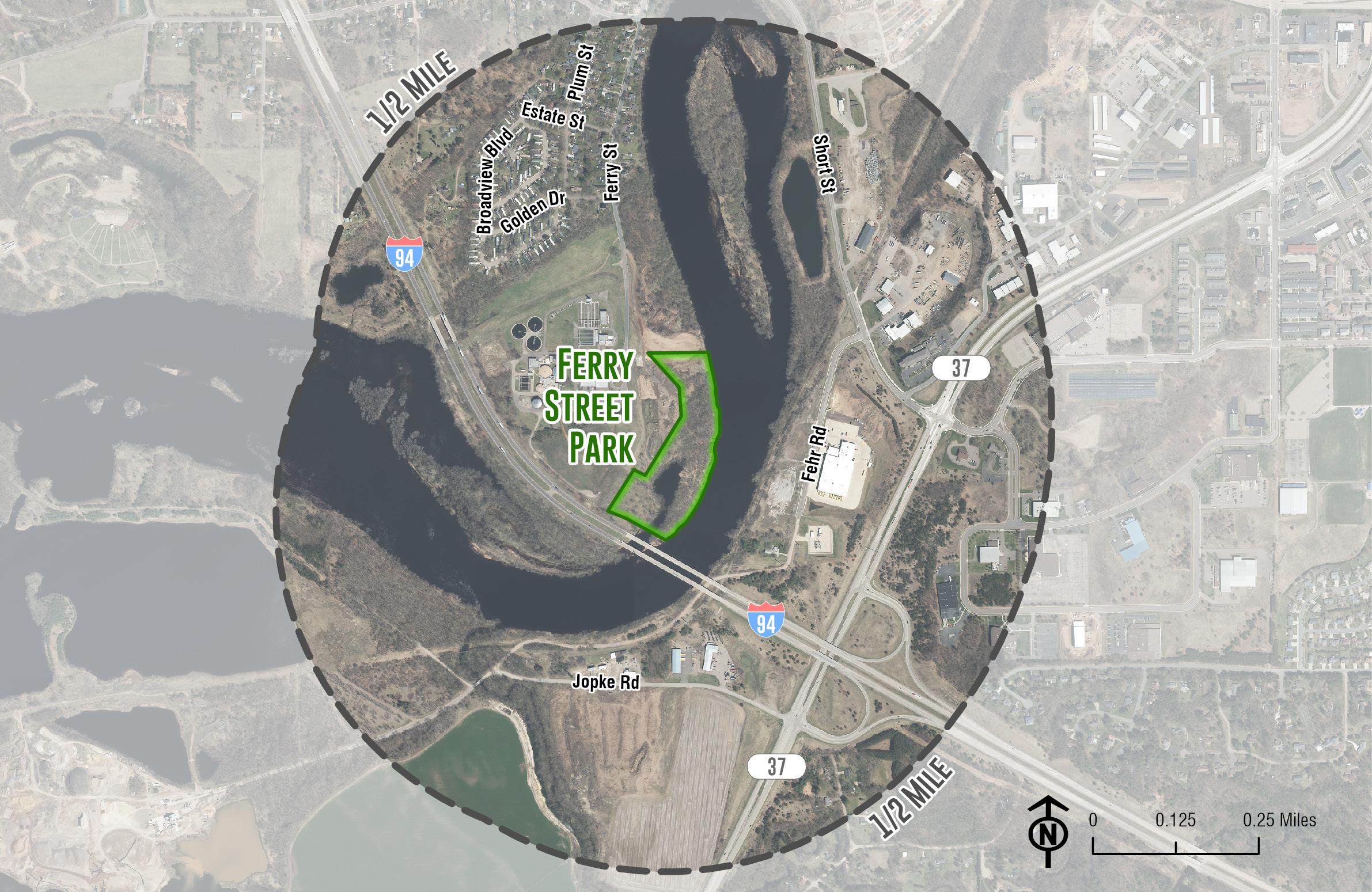
Stussy Park is a 0.1-acre special area located at the intersection of Truax Boulevard and Folsom Street. The site is currently open space with no improvements.

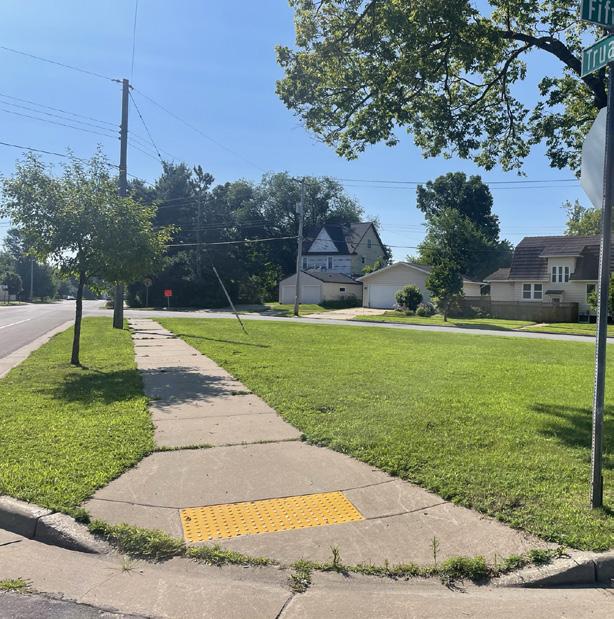
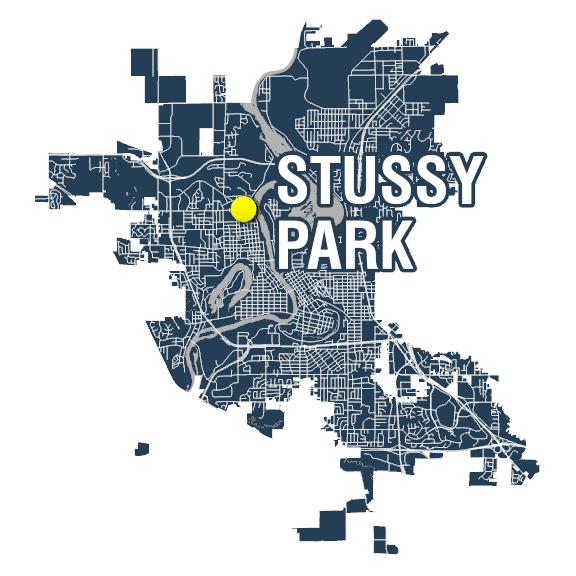
Key Features Opp. and Constraints
Concrete sidewalks. The limited space is a key constraint of this park, but its active location with high traffic presents a good opportunity.
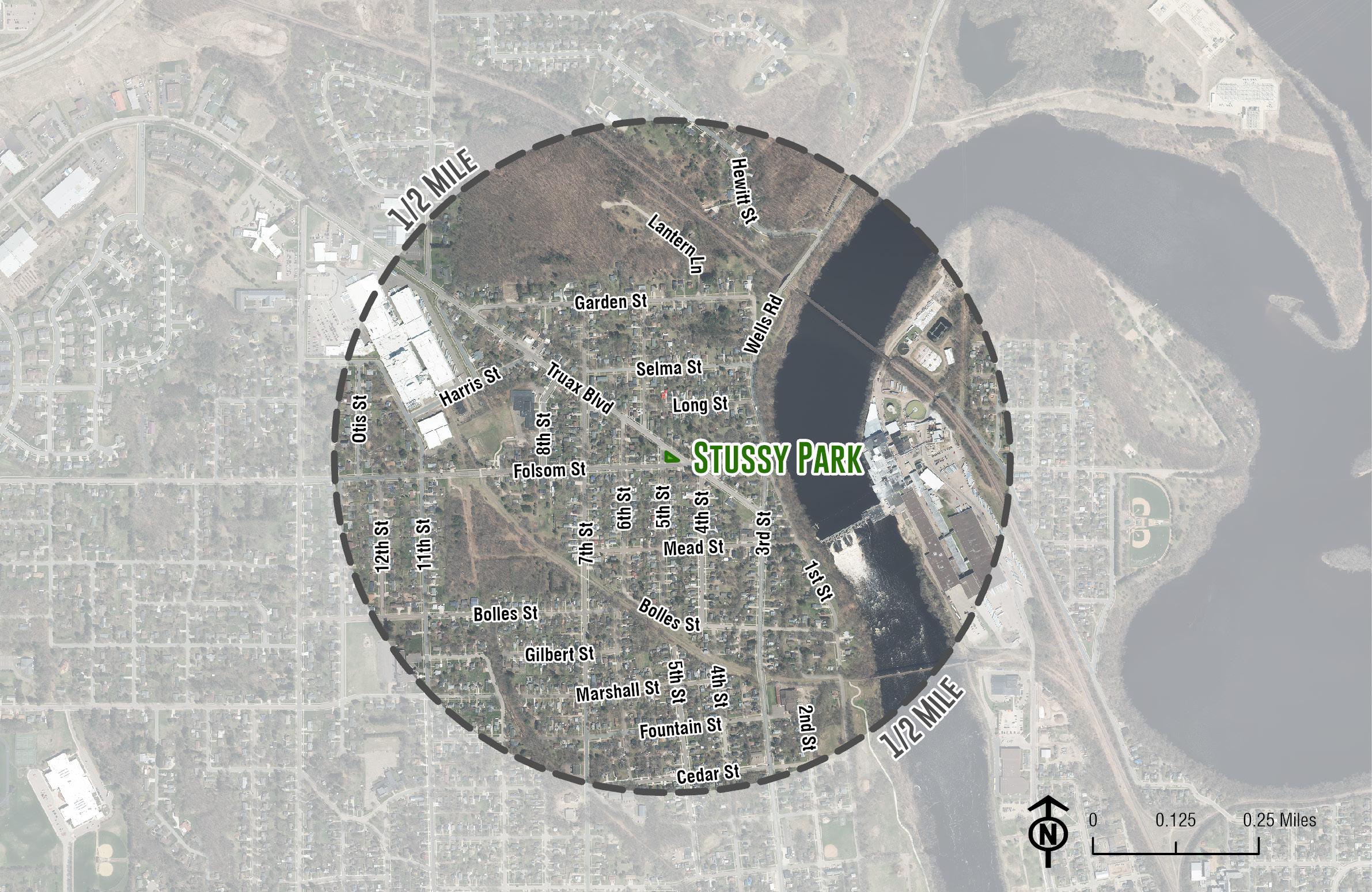
1/2 Mile Population = 2,170
(2,466 people per square mile) Population Breakdown
Events and Programming: None 54 out of 55 parks
28 out of 55 parks Accessibility and Connectivity
Sundet Dog Park is a 7.7-acre, special area at the intersection of Sundet Road and Robin Road.
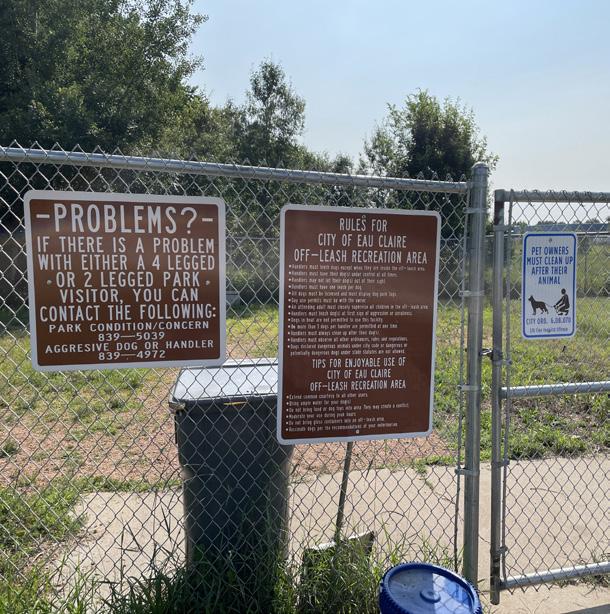

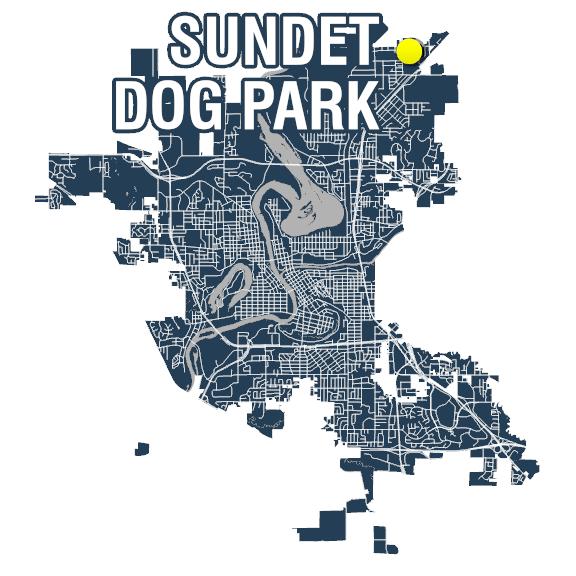
A fenced in dog area that is well regulated and has great shade. Dog parks typically have challenges incorporating additional amenities because of the conflict between uses. However, the biggest opportunity is dog owners continuing to visit.
Located on the far north side of Eau Claire, just northeast of the airport, Sundet Park is a great dog park for north side residents.

Usability Rank Neighborhood Association
21 out of 55 parks
Population Breakdown
1/2 Mile Population = 1,111 (3,086 people per square mile)
Sundet Park Neighborhood
Events and Programming: None
Accessibility and Connectivity
17 out of 55 parks
Veterans Park is an 8.1-acre special area located on the Chippewa River at the intersection of Race Street and Menomonie Street.
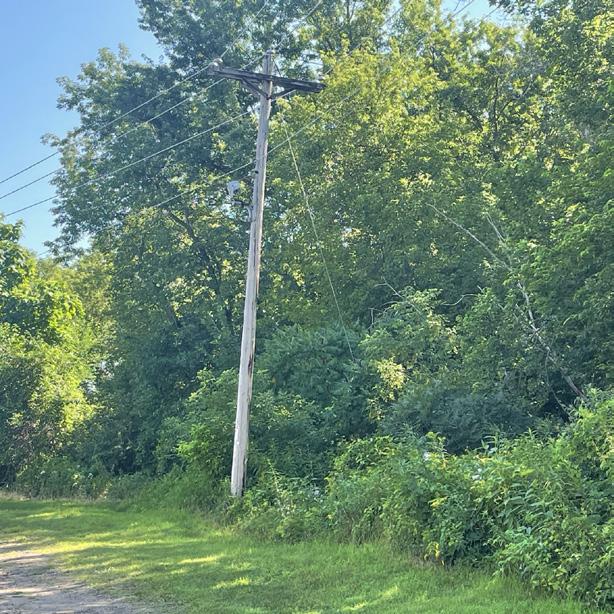
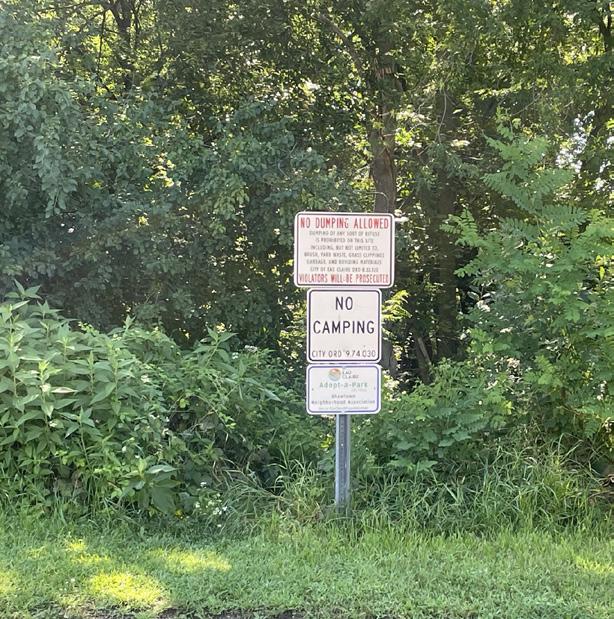

Key Features Opp. and Constraints Community
Trees, trees and more trees with a connection to the Chippewa River.
The flood plain, dense vegetation, and topography are the greatest challenges.
However, a connection to the Chippewa River presents the best opportunity.
Located just off the Chippewa River and adjacent to Highway 12. None at
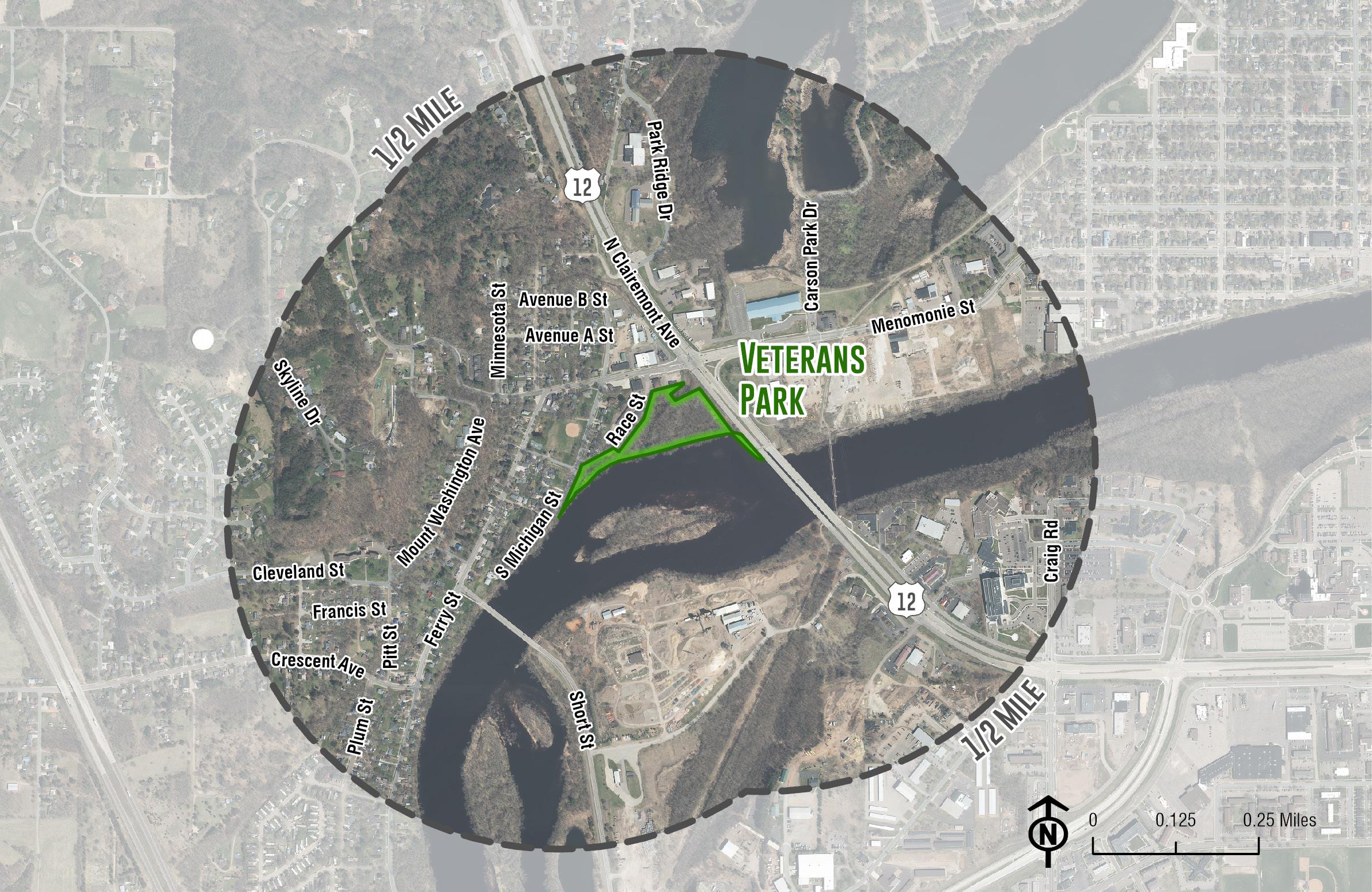
Usability
55 out of 55
Neighborhood Association
Mt. Washington Neighborhood
Population Breakdown
1/2 Mile Population = 1,641 (863 people per square mile)
Events and Programming: None
Accessibility and Connectivity
55 out of 55 parks
Eau Claire’s parks and recreation programming plays a vital role in fostering an active and engaged community. From youth soccer leagues to adult pickleball tournaments, the City of Eau Claire provides a diverse range of activities that attract participants across all ages. However, community feedback suggests there is room to refine and expand recreational offerings to better meet evolving needs.
Survey results indicate that Eau Claire residents generally feel positive about the variety of recreational programs available. When asked about their satisfaction, 42% of respondents said they were satisfied, while 12% were very satisfied. A significant portion (38%) remained neutral, suggesting an opportunity to engage more residents. Dissatisfaction was minimal, with only 7% expressing discontent and just 1% reporting they were very dissatisfied.
The participation data shows that Eau Claire’s recreation programming serves a broad audience:
• Adult Recreation: 45% of respondents participate.
• Youth Recreation: 63% of respondents participate, with swimming, soccer, and flag football being the most popular. Swimming, in particular, stood out as the dominant activity.
• Specialized Recreation: 17% of respondents take part in activities designed for unique interests and needs.
• Workshop Events: 19% of respondents enjoy various educational and skills-based programs.
Future Programming Opportunities
Residents expressed interest in diversifying and expanding park programming, with notable requests including:
• More bicycling opportunities, such as designated trails and events.
• Increased pickleball and volleyball facilities and leagues.
• More activities that reflect Eau Claire’s diverse community.
• Action sports such as skateboarding and snowboarding.
• Improved fishing experiences, including enhanced walleye stocking at Half Moon Lake.
• More sports rentals and the introduction of lacrosse programs.
Program Accessibility & Inclusivity
When asked about the accessibility of recreational programs, community feedback was mixed:
• 10% rated programs as Very Accessible
• 37% rated programs as Accessible
• 45% remained Neutral
• 6% found programs Inaccessible
• 1% found programs Very Inaccessible
1. Expand High-Demand Sports Offerings
• Build upon the popularity of pickleball, soccer, and swimming by adding more facilities and program options. Consider creating seasonal leagues, drop-in play times, and instructional clinics.
2. Diversify Recreational Opportunities
• Introduce new programs that reflect community interests, such as skateboarding, snowboarding, and lacrosse. Expanding bicycling opportunities through additional trails and bike-friendly events can also enhance engagement.
3. Enhance Accessibility and Awareness
• Address accessibility concerns by improving transportation options, increasing program outreach, and offering financial assistance or sliding-scale fees for participation. More marketing efforts could also help reach residents who may not be aware of available programs.
4. Expand Outdoor & Nature-Based Activities
• Enhance fishing opportunities by stocking Half Moon Lake with more walleye and organizing fishing workshops for all ages. Consider additional outdoor adventure programs such as guided hikes, nature education events, and winter recreation activities.
5. Strengthen Community Partnerships for Program Growth
• Collaborate with schools, local businesses, and community organizations to sponsor programs, provide facilities, and promote recreational initiatives. These partnerships can help expand offerings and improve access for all residents.
Previous sections of this report detailed a number of specific improvement options. This section provides the mechanism for implementing them. It includes a compilation of capital improvements, park development mechanisms and funding sources. The chapter also includes the process for adopting, monitoring and updating this plan.
A prerequisite to participation in outdoor recreation grant programs is the adoption and subsequent Department of Natural Resources acceptance of a local comprehensive outdoor recreation plan.
A comprehensive outdoor recreation plan (CORP) is only the first step in the development of a recreational park site or system. Comprehensive planning is an overall survey of the existing facilities within a given jurisdiction that gives recommendations for future improvements.
Master planning, which follows the recommendations of the comprehensive plan, is an overall view and analysis of an existing or proposed park area. The purpose is to guide the orderly development of a park or recreational facility. Site planning, is the detailed plan of how an area within a park or recreation area will be developed. Site plans supply the construction details needed to develop a facility recommended in the master plan. It is anticipated that master planning for proposed parks and park improvement projects is a high priority and should be featured prominently when budgets are determined over the life of this plan.
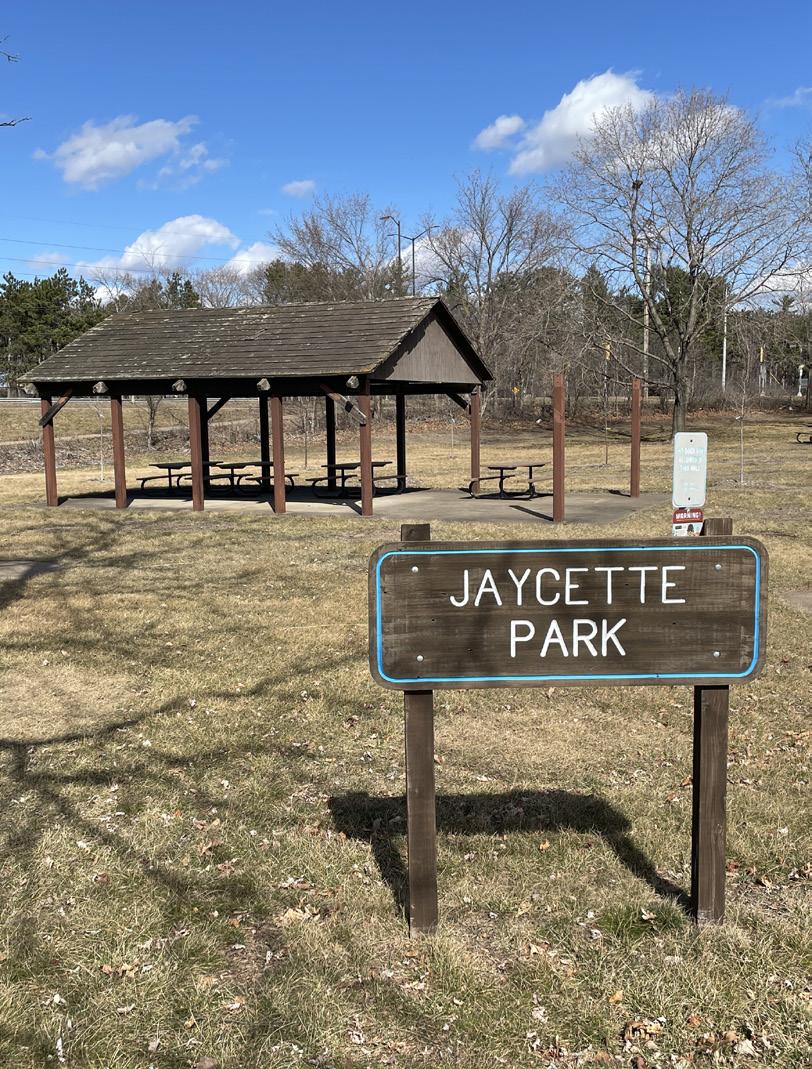
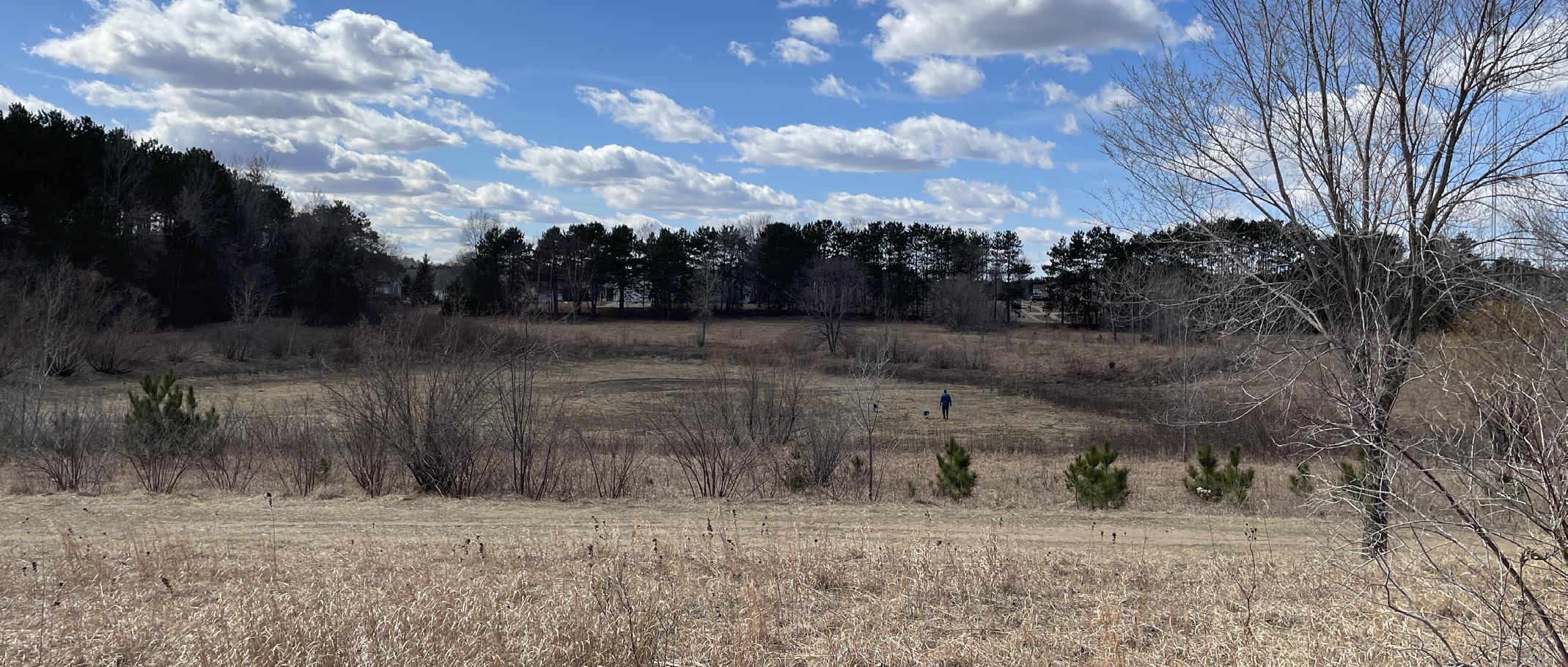
This CORP should be approved by the City Council after thorough review by the Waterways and Parks Commission. The City should follow all rules and procedures established in the citizen participation plan adopted as part of the comprehensive planning process (per State Statute 66.1001) when adopting this plan.
Plan amendments are common and should be considered part of the planning process. They frequently represent good implementation or plan usage and should be acceptable for consideration by local decision-makers. Amendments must follow the same process as the original plan and should be developed in coordination with the Parks Commission before they are presented to the City Council for approval. Amendments generally prolong the effectiveness of the parent plan.
The City of Eau Claire Comprehensive Outdoor Recreation Plan will make the City eligible for funding by the Wisconsin Department of Natural Resources through the year 2030. Since this plan was developed with a five-year time frame, it should be amended in 2030 to ensure grant eligibility and to reflect progress made over time.
The Eau Claire Comprehensive Outdoor Recreation Plan (CORP) is rooted in the understanding that implementation requires more than a list of projects, it demands sustained alignment between policy, operations, and community values. To build this alignment the Operational Brief and the CORP should be used in conjunction for decision making. While these reports varied slightly, there was strong alignment in three core areas: the need to maintain community access to parks, openness to reimagining underused spaces, and an understanding that long-term sustainability will require operational change.
The Operational Brief includes the following key directives:
1. Use the Usability Matrix to Prioritize Investment
Capital investments and maintenance strategies should be guided by the updated park usability matrix. This tool will help focus limited resources on parks that have the greatest potential to serve community needs while highlighting where investment can generate the most public value.
2. Pursue Strategic Parkland Repurposing with Clear Criteria
Underutilized park properties may be considered for repurposing, but only if the process ensures there is no net loss in level of service across the city. Park access must remain equitable, and any repurposed land will continue to serve a community-serving function.
3. Implement Operational Right-Sizing
The Operational Brief offers two future scenarios that realign parkland, staffing, and maintenance demands to improve efficiency. The City should adopt a phased strategy to transition toward one of these scenarios over time reducing acreage only in areas that are low-use, high-maintenance, or duplicative while concurrently seeking staff and funding capacity to meet the needs of core assets.
4. Synchronize Updates of the CORP and Operational Brief
These two documents must remain in sync. The CORP sets community and policy direction, while the Operational Brief ensures feasibility and alignment with internal capabilities. Annual staff workshops and performance audits should serve as touch points to evaluate progress, recalibrate strategies, and update both documents accordingly.
5. Track Level of Service and Avoid Park Deserts
As changes are made to the park system footprint or programming, the City should continue tracking geographic equity, connectivity, and access to ensure every resident lives within reasonable proximity to high-quality park space. This will help Eau Claire avoid creating park deserts and ensure the system continues to support quality of life for all neighborhoods.
Together, the CORP and Operational Brief provide a roadmap for a sustainable, community driven park system. Implementing these strategies will ensure Eau Claire continues to deliver excellent recreational opportunities while adapting to financial, demographic, and environmental realities.
Many communities have developer exactions for parkland acquisition. These exactions are designed to help a growing community acquire new park land to keep pace with new residential development. As residents move into a new subdivision, they place additional stress on existing park facilities. Developer exactions, agreed upon during the subdivision review and approval period, provide land, cash or a combination of both to be used for the provision of park facilities that serve the new neighbourhood.
The City has adopted the following policy for the dedication of public spaces in plat design. The code can be found in Title 17, Section 17.12.270 of the City Code of Ordinances:
“In the design of the plat, due consideration shall be given by the subdivider and the plan commission to the reservation of suitable sites of adequate area for future schools, parks, playgrounds and other public purposes.”
The City should coordinate with potential user groups when planning new facilities to see if cost-sharing, donation or outright purchase options exist. Groups that could potentially be involved include youth sports groups, private organizations and school districts.
In many communities, parkland development occurs with the availability of land. Donations of private land for a public purpose is not uncommon, and criteria for accepting these lands is needed. A formal procedure should be in place for how the land will be planned and used in the best interest of the community. An established planned giving program through the City would allow prospective patrons to dedicate land in a legal manner that provides a legacy for how the land will be utilized over time.
Implementation dollars are available for acquisition and development of recreation spaces and facilities. Linear parks and trails can be funded through the Wisconsin Department of Natural Resources (WDNR) or the Department of Transportation (WDOT). The WDNR also provides funds for the acquisition of lands, the stabilization of shorelands and the protection of environmentally sensitive areas. A complete list of grant opportunities is provided in the following section.
The state and federal government provide grants to local governments for the acquisition and development of parks. Many of these programs require that a local government submit an approved park and open space plan or master plan to the Wisconsin DNR as a condition for eligibility. By adopting this plan, by ordinance, the City will have met the eligibility requirement for these grant programs until 2030.
The high cost of park improvement projects necessitates the acquisition of outside funding to enable development. Grant funding provides seed money and crucial capital for leveraging additional community dollars and support. While many projects identified in this plan would benefit from the acquisition of outside funding sources, some projects will require grant funding if they are to be realized. Grant programs are discussed in the following section (4.3.2).
This section provides general information and details for many of the grant programs that may be used to acquire and develop local park and recreation facilities. Categories, by authorization agency, include:
• Wisconsin Department of Natural Resources
• Wisconsin Department of Transportation
• Wisconsin Department of Administration
• Other Programs - Various Agencies
Knowles-Nelson Stewardship Program: Named for two of Wisconsin’s most revered conservation leaders, Governor Warren Knowles and Senator Gaylord Nelson, the Wisconsin Legislature created this innovative program in 1989 to preserve valuable natural areas and wildlife habitat, protect water quality and fisheries, and expand opportunities for outdoor recreation.
All grant program awards cover up to 50% of eligible project costs. Projects eligible for Stewardship grant programs require that all land acquisition and development projects provide public access for “nature-based outdoor recreation” purposes. DNR decisions as to whether a particular project activity is “nature-based outdoor recreation” are made on a case-by-case basis. Please note that purchase and installation of playground equipment and the purchase of land for recreation areas not related to nature-based outdoor recreation (dedicated sports fields, swimming pools, etc.) are not eligible.
For more information and to submit applications contact the West Central Region representative (listed below). All applications are due May 1.
Grace Mikelsons
1300 W. Clairemont Ave. Eau Claire, WI 54701
715-492-6091
Email: grace.mikelsons@wisconsin.gov
The Stewardship Program includes the four funds described below (A – D).
Description: Stewardship sets aside 50% of funds for projects that improve community parks and acquire land for public outdoor recreation. Applicants compete against other applicants from their region. Funds may be used for both land acquisition projects and development projects for nature-based outdoor recreation such as fishing piers, hiking trails and picnic facilities. Funds are not available for non-nature based activities such as baseball and soccer fields. Costs associated with operation and maintenance of parks and other outdoor recreation facilities are not eligible for Stewardship funds.
Eligible Project Examples
1. Land acquisition projects that will provide opportunities for nature-based outdoor recreation.
2. Property with frontage on rivers, streams, lakes, estuaries and reservoirs that will provide water-based outdoor recreation.
3. Property that provides special recreation opportunities in areas adjacent to floodplains, wetlands and scenic highways.
4. Natural areas and outstanding scenic areas where the objective is to preserve the scenic or natural values, including areas of physical or biological importance and wildlife areas. These areas shall be open to the general public for outdoor recreation use to the extent that the natural attributes of the areas will not be seriously impaired or lost.
5. Land within urban areas for day-use picnic areas.
6. Land for nature-based outdoor recreation trails.
Ineligible Project Examples:
1. Projects that are not supported by a local comprehensive outdoor recreational plan.
2. Land to be used for non-nature based outdoor recreation such as athletic facilities.
3. Acquisition and development of golf courses.
Description: Stewardship allocates 20% of funds annually to restore or preserve the character of urban riverways through the acquisition of land or easements adjacent to rivers. Funding will be provided for projects that are part of a plan to enhance the quality of a river corridor. Applicants compete against other applicants statewide.
The purposes of the program are:
1. To provide for economic revitalization through the restoration or preservation of urban rivers or riverfronts;
2. To improve outdoor recreational opportunities by increasing access to urban rivers for a variety of public uses, including but not limited to fishing, wildlife observation, enjoy-
ment of scenic beauty, canoing, boating, hiking and bicycling;
3. To preserve or restore significant historical, cultural or natural areas along urban rivers.
Funding Priorities: Priority is given to projects that have one or more of the following characteristics:
1. Acquires land or land rights that preserve or restore natural values, including aesthetic values, and enhance environmental quality along urban waterways.
2. Provides new or expanded diverse recreational opportunities to all segments of urban populations.
3. Provides new or expanded access to urban waterways.
4. Acquires blighted lands that will be restored to complement riverfront redevelopment activities.
5. Encourages comprehensive riverway planning within and between municipalities and other agencies.
6. Provides opportunities for increasing tourism.
7. Acquires lands that through proper management will improve or protect water quality.
Description: The intent of the Urban Green Space Program (UGS) is to provide open natural space within or in proximity to urban areas; to protect from urban development areas that have scenic, ecological or other natural value and are within or in proximity to urban areas; and to provide land for noncommercial gardening for the residents of an urbanized area.
Funding Priorities: Priority is given to projects that have one or more of the following characteristics:
a. Planning considerations, including:
• Specifically implementing a priority of the Statewide Comprehensive Outdoor Recreation Plan.
• Implementing the approved master plans of 2 or more units of government or regional planning agencies.
• Preserving land that is listed on the natural heritage inventory database.
• Implementing elements of water quality plans or initiatives.
b. Project considerations, including:
• Serving the greatest population centers
• Serving areas of rapidly increasing populations
• Providing accessibility
• Having unique natural features, threatened/endangered species or significant ecological value
• Providing open natural linear corridors connecting open natural areas
• Having water frontage
• Containing or restoring wetlands
• Protecting sensitive wildlife habitat
• Protecting an area threatened by development
• Preserving a natural community or one that could be restored
• Having regional or statewide significance
• Relating to brownfield redevelopment
c. Administrative considerations, including:
• Projects that are ready to be implemented and/or to continue previously started projects
Description: The purpose of the Acquisition of Development Rights Program is to protect natural, agricultural or forest lands that enhance nature-based outdoor recreation. “Development Rights” are the rights of a landowner to develop their property to the greatest extent allowed under state and local laws. The goals of the program are achieved through the purchase of those development rights and compensating landowners for limited future development on their land.
Funding Priorities: Priority is given to projects that have one or more of the following characteristics:
• Property with frontage on rivers, streams, lakes or estuaries
• Property that creates a buffer between land that has been permanently protected for natural resource and conservation purposes and potential or existing residential, commercial or industrial development
• Property that is within the boundaries of an acquisition project established by the DNR, a government unit or a non-profit conservation organization where the uses of the property will complement the goals of the project and the stewardship program
• Property that is within an environmental corridor that connects two or more established resource protection areas
The Land and Water Conservation Fund (LWCF) and Recreational Trails Act (RTA) programs fund projects that are similar to the Stewardship programs. One primary difference is that LWCF and RTA programs are not restricted to nature-based outdoor recreation projects. In these programs, nature-based outdoor recreation projects compete against projects with non-nature based recreation elements for LWCF funds. Another difference is that federal programs have additional requirements that must be satisfied – for example, compliance with the National Environmental Policy Act, the Historic Preservation Act, etc. Federal programs administered through the DNR include the two funds described below (E, F).
Description: This program was established to encourage nationwide creation and interpretation of high quality outdoor recreational opportunities. The program funds both state and local outdoor recreation activities.
Funding Priorities: Priority is given to projects that have one or more of the following characteristics:
• Relationship to the Statewide Comprehensive Outdoor Recreation Plan; activities must be in locally approved plans
• Regional or statewide in nature
• Acquires land where a plan supports need
• Provides or enhances water-based activity
• Serves the greatest populations
• Involves other local government cooperation, volunteers, local donations
• First time applicants
• Sponsor has completed past projects
• Provides multi-season, multi activity use
• Basic, over elaborate, facilities
• Participant over spectator facilities
• “Nature based” restriction does not apply
Eligible Project Examples
• Land acquisition
• Development of outdoor recreation facilities, including active sports facilities
Description: These funds are used to develop and maintain recreational trails and trail-related facilities for both motorized and non-motorized recreational trail uses. RTA funds may only be used on trails which have been identified in or which further a specific goal of a local, County or state trail plan included or referenced in a statewide comprehensive outdoor recreation plan. 30% of funds must be used on motorized trail uses, 30% on non-motorized trail uses and 40% on diversified (multiple) trail uses.
Funding Priorities: Priority is given to projects that have one or more of the following characteristics:
• Maintenance and restoration of existing trails.
• Development and rehabilitation of trailside and trailhead facilities and trail linkages.
• Construction of new trails (with certain restrictions on Federal lands).
• Acquisition of easement or property for trails.
The Wisconsin Department of Transportation offers a variety of programs that can provide financial assistance to local governments, along with other public and private entities, to make improvements to highways, airports, harbors, bike, rail and pedestrian facilities. The use of these funds in Eau Claire would be most closely tied to developing trails to link parks to places of employment, residence, commerce and other parks.
Description: This program allocates federal funds to complete a variety of improvements to federal-aid-eligible roads and streets in urban areas. Projects must meet federal and state requirements. Communities are eligible for funding on roads functionally classified as major collector or higher. The WisDOT requires that pedestrian and on-street bicycle accommodations be part of all STP projects within or in the vicinity of population centers, unless extraordinary circumstances can be demonstrated to WisDOT for not providing these accommodations.
For 2024-2029 program development, total funds available are anticipated to be significantly greater than previous program cycles.
Contact: Randy Kirk, Northwest Region at (715)392-7860 or randall.kirk@dot.wi.gov
Description: This program allocates federal funds to complete a variety of improvements to rural highways. Projects must meet federal and state requirements. Communities are eligible for funding on roads classified as major collectors or higher.
For 2024-2029 program development, total funds available are anticipated to be significantly greater than previous program cycles.
Contact: Randy Kirk, Northwest Region at (715)392-7860 or randall.kirk@dot.wi.gov
Description: The Transportation Alternatives Program (TAP) allocates federal funds to transportation improvement projects that “expand travel choice, strengthen the local economy, improve the quality of life, and protect the environment.” TAP is a legislative program that was authorized in 2012 by the federal transportation legislation, Moving Ahead for Progress in the 21st Century Act (MAP-21). The Transportation Alternatives Program was authorized as part of the Fixing America’s Surface Transportation Act (FAST Act) in 2015. The program provides for the implementation of a variety of non-traditional projects, with examples ranging from the restoration of historic transportation facilities, to bike and pedestrian facilities, to landscaping and scenic beautification, and to the mitigation of water pollution from highway runoff. Examples of bicycle and pedestrian projects that TAP will likely fund include: multi-use trails, paved shoulders, bike lanes, bicycle route signage, bicycle parking, overpasses/underpasses, bridges, sidewalks and pedestrian crossings. Local municipalities contribute 20% of the project costs. Federal regulations restrict the use of funds on trails that allow motorized users, except snowmobiles.
Contact: Randy Kirk, Northwest Region at (715)392-7860 or randall.kirk@dot.wi.gov
J. Community Development Block Grant – Public Facilities (CDBG-PF)
Description: Available through the Wisconsin Department of Administration (DOA), communities receiving CDBG funds from the State may use the funds for many kinds of community development activities including, but not limited to:
• Acquisition of property for public purposes
• Construction or reconstruction of streets, water and sewer facilities, neighborhood centers, recreation facilities and other public works
• Demolition
• Rehabilitation of public and private buildings
• Public services
• Planning activities
• Assistance to nonprofit entities for community development activities
• Assistance to private, for profit entities to carry out economic development activities (including assistance to micro-enterprises)
Contact: DOACDBG@wisconsin.gov
Programs
K. KaBOOM! Grants
Description: KaBOOM! is a non-profit partnered with national organizations and businesses that awards grants for playground development. KaBOOM! accepts applications for grants on a rolling basis from child serving non-profit organizations, schools and municipalities.
Applicants with the best chance of receiving grants will:
• Serve children from a low-income area, serve children with special needs or serve children in a disaster impacted area
• Demonstrate the need for a playground
• Have a space that does not currently have a playground on have a playground that needs to be replaced
• Will implement a community-build model to engage the larger community in all aspects of project planning and playground build execution
Contact: Grant applications can be filled out at the KaBOOM! website; kaboom.org
L. Foundation Grants
Elevance Health Foundation (formerly Anthem Foundation) – Provide grants to communities to support health related programs. we are currently assessing and refining our strategy. During this review period, we are not accepting new funding applications.
Clif Family Foundation – Provides grants for projects that increase opportunities for outdoor activity, reduce environmental health hazards and build stronger communities. https://cliffamilyfoundation.org/grants-program
National Environmental Education Foundation – Awards grants for the promotion of a safer and healthier environment.
The Skatepark Project – Grants provided for the creation of skateparks.
U.S. Bank Foundation Play Grants – Grant support for play spaces for K-12 students in low to moderate income areas.
M. Online Grant Provider Lists
• FundsNet Services
• SPARK Grant Finder
• The Grant Helpers
• Afterschool Alliance Funding Database
• Federal Grants Wire
N. Purchasing Partnerships
• Grantmakers in Aging
• NPRA Grant Resources
• Grants.gov
• American Therapeutic Recreation Association
Description: Some equipment suppliers will allow multiple municipalities to make group purchases of equipment. Details of this type of agreement vary between manufacturers, but the result will often be a reduced cost to the purchasing municipalities. Examples include US Communities (omniapartners.com) and Buy Board (https://www.buyboard.com/).
Capital improvements to a park are the addition of labor and materials that improve the overall value and usefulness of that park. Capital improvements are designated and funded individually through segregated municipal funds. Routine maintenance, on the other hand, is considered to be the repair and upkeep of existing park facilities, such as painting a shelter building. Routine maintenance of park facilities does not appreciably increase the value or usefulness of the park, and is traditionally funded through the park department’s operations budget. Non-routine maintenance of park facilities, such as upgrading a restroom facility to be barrier-free, is usually considered to be a capital improvement.
Most projects can be easily identified and categorized, but some are difficult. When a project falls on the borderline between a capital improvement and maintenance, the overall cost becomes the determinant. Projects with a high cost, such as that for seal coating roads or parking lots, are categorized as capital improvements.
The capital improvements program for each park is a combination of several types of projects. These projects are ranked according to their importance and priority in the overall development of the park and the value of the project to the overall City park system. Capital improvements for this plan are ranked in the following manner:
a. Improvements to existing facilities that will:
i. Correct health and safety hazards
ii. Upgrade deficient facilities
iii. Modernize adequate but outdated facilities
b. Installation of facilities as deemed appropriate and necessary through public demand (public meetings, park committee input, City budgeting)
c. Development of new facilities as deemed necessary through level of service, population projection and age cohort analyses
Generally, improvements to existing facilities rank the highest in the capital improvements program. New facilities are usually ranked lower, according to their relative need in each park location. Improvements that correct health and safety hazards are always given the highest priority. Improvements that are deemed necessary through empirical analyses are usually ranked the lowest.
Parks have been divided by classifications established by the National Recreation and Park Association (NRPA) including Mini, Neighborhood, Community, Conservancy, and SpecialUse parks. Improvement costs are shown by year (2024-2028) which establishes a priority ranking – higher priority improvements would occur sooner in the schedule. In some cases a capital improvement may utilize a special fund. Depending on the fund, it may or may not be reflected in the subtotal for each park type.
Potential costs for site master plans have not been included in the Capital Improvement Plan (CIP) table but should be accounted for the budget planning. Depending on the level of public involvement and final deliverables, the City should anticipate a cost of $15,000-$25,000 for each site Master Plan. It should also be noted that if the City brings on new parklands, the required maintenance for these new facilities will also carry a long-term cost implication. A basic mini-park for example will require at minimum, weekly mowing. Neighborhood and Community parks will require mowing, snow removal, playground maintenance and potentially other monthly or annual upkeep depending on the level of facility development.
The total improvement cost by park classification and by year is assembled in Table 4.1. Costs associated with each park improvement option are based upon recent regional project construction costs and may be spread out over many years.
This update includes a new system-wide project in 2026: a publicly accessible, interactive database listing major park amenities, with a strong emphasis on water access locations. This initiative enhances wayfinding, accessibility, and public engagement by making it easier for residents and visitors to locate and plan their recreational activities.
System-Wide Priorities
1. Seating & Picnic Area Upgrades (2025-2027)
• Install shaded seating and picnic tables in Carson Park, Rod & Gun Park, Half Moon Beach, Riverview Park, and Boyd Park (2026).
• • Add benches along major trail networks (Carson Park, Chippewa River Trail).
• • Funding: Capital Improvement Plan (CIP), grants.
2. Wayfinding & Interactive Access Database (2026-2027)
• Develop and launch a public-facing, interactive database listing major park amenities, including water access points, trails, playgrounds, shelters, and sports facilities.
• Ensure mobile-friendly features and GIS integration for real-time updates.
• Funding: CIP, technology grants, tourism funding.
3. Playground Replacements & Upgrades (2025-2028)
• Upgrade aging playgrounds at McDonough Park, Pinehurst Park, Putnam Heights Park.
• Add inclusive/nature-based play areas at Kessler Park, Demmler Park.
• Funding: Grants, DNR funding, CIP.
4. Accessibility & Connectivity Enhancements (2026-2028)
• Upgrade ADA seating, paths, and amenities at Half Moon Beach, McDonough Park, Putnam Park.
• Improve trail surfacing at Riverview Park, Oakwood Hills Park, Cameron Park.
• Funding: ADA compliance grants, CIP.
5. Master Plans & Major Park Developments (2025-2030)
• Complete Master Plans for Cameron Park (2025), Owen Park (2025), Buffington Park (2026), Westridge Park (2026), and County Farm Park (2027).
• Phase 1 improvements occur the year after the master plan is completed.
• Funding: CIP, grants, public-private partnerships.
Years 1-2 (2025-2026):
• Complete master plans, launch interactive park access database, begin seating, signage, accessibility, and playground projects.
Years 3-4 (2027-2028):
• Phase 1 improvements for master-planned parks, implement connectivity improvements, trail upgrades, and athletic field projects.
Year 5 (2029-2030):
• Complete final phase of large-scale projects, including trail systems, park expansions, and major renovations.
The five-year action plan outlines a dynamic roadmap of park improvement projects, each detailed by project name, associated park, description, cost estimate, anticipated time frame, and identified funding source. These initiatives serve as objective milestones, providing a structured yet flexible framework for enhancing community spaces. While the plan establishes a clear trajectory for investment and development, it remains adaptable, allowing priorities to shift based on emerging needs, funding availability, and evolving community goals. By maintaining this balance between structure and flexibility, the action plan ensures that park improvements continue to align with long-term vision while responding to real-time opportunities and constraints.
Table 4.1
Citywide Wayfinding and Park Signage
Wayfinding and Signage Master Plan
Project Name Park
Pinehurst Park Winter Recreation Upgrades
Pinehurst Park Improve sledding area, expand winter skate loop
Putnam Heights Playground Replacement Putnam Heights Park Install new playground equipment
Boyd Park Seating Improvements Boyd Park Install new shaded benches and picnic tables
Weed Harvester and Trailer Half Moon Beach Purchase of a weedharvester and trailer
Buffington Park Phase 1 Improvements
Cameron Park Accessibility & Sidewalks
Half Moon Lake Water Access
Westridge Park Master Plan
Jeffers Road Athletic Fields Expansion
County Farm Park Master Plan
Buffington Park Implement ADA access, seating, and first-phase upgrades
Cameron Park Improve sidewalks and pedestrian crossings
Half Moon Lake Improve boat launch, add canoe/kayak racks
Westridge Park Develop master plan for park upgrades
Jeffers Road Install lighting for ball fields, add pickleball courts
County Farm Park Develop master plan, outline improvements
Forest Street Park Trail Connectivity Forest Street Park Improve trail access and safe crossings
Phoenix Park Performance Area Enhancements
Riverview Park Boat Launch & Accessibility Upgrades
Westridge Park Phase 1 Improvements
Northwest Community Park Site Development
Newell Park Pedestrian Safety Enhancements
Fairfax Pool & Aquatic Center Upgrades
$250,000 2026 CIP, grants
$225,000 2026 Grants
$50,000 2026 CIP
$275,000 2026 CIP
$200,000 2027 CIP, grants
$80,000 2027 CIP
$95,000 2027 DNR grants
$75,000 2027 CIP, grants
$1,250,000 2028 CIP, grants
$45,000 2028 CIP, grants
$160,000 2028 Safe Routes to School grants
Phoenix Park Expand event space, add shaded seating
Riverview Park Upgrade boat launch, improve ADA accessibility
Westridge Park Implement playground and sport court upgrades
Northwest Community Park Develop trail system, first phase of active-use areas
Newell Park Add crosswalks, improve sidewalk network
Fairfax Park Install new shade structures, improve concessions
Project Name Park Description
Oakwood Hills Park Connectivity & Trailhead Improvements
County Farm Park Phase 1 Improvements
Putnam Park Trail & Environmental Restoration
University Park Seating & Accessibility
Zephyr Hill Park Parking & Trail Upgrades
Oakwood Hills Park Develop trail network, add wayfinding signage
County Farm Park Implement trail connectivity and accessibility upgrades
Putnam Park Improve trails, restore native plantings
University Park Improve seating, install ADAcompliant paths
Zephyr Hill Park Expand parking, improve trail connections
Estimated Cost Time Frame Funding Source
$450,000 2029 CIP, grants
$250,000 2028 CIP, sponsorships
$300,000 2028 DNR grants
$750,000 2028 CIP, grants
$1,000,000 2029 CIP, grants
$55,000 2029 CIP
$500,000 2029 CIP, grants
$250,000 2029 CIP, grants
$300,000 2030 Environmental grants, CIP
$150,000 2030 CIP, ADA compliance grants
$575,000 2030 CIP

ANSWER CHOICES
Answered: 494 Skipped: 13
RESPONSES
Q2 Using the above map, identify the neighborhood you live in?
Answered: 486 Skipped: 21
Other (please specify)
U. Westridge Neighborhood
T. West Riverside Neighborhood
S. Upper Westside Neighborhood
R. Third Ward Neighborhood
Q. Southwest Eau Claire
P. Southeast Eau Claire
A. Airport Neighborhood
D. Downtown
E. East Hamilton Avenue Area Neighborhood
F. Eastside Hill Neighborhood
G. Historic Randall Park Neighborhood
K Northeast Eau Claire
L. Northwest Eau Claire
A
C. Dells Park
D Downtown
E
F. Eastside Hill
G Historic Randall Park
H
I North River Fronts
K
L
M.
P.
Other (please specify)
Answered: 438 Skipped: 69
Sundet Dog Park
Roosevelt Neighborhood Park
Rod and Gun Park
Riverview Park
Pinehurst Park
Phoenix Park
Owen Park
Otter Creek Dog Park
Northwest Community Park
Mount Simon Park
Mitscher Park
Eau Claire Soccer Park
Fairfax Park
Jeffers Road Athletic Fields
McDonough Park
Domer Park
Eau Claire Soccer Park
Grover Heights Park
Half Moon Beach
Haymarket Plaza
Hobb's Landing
Jaycette
Kappus
Northwest Community Park
Oakwood Hills Park
Otter Creek Community Park
Otter Creek Dog Park
Owen Park
Phoenix Park
Pinehurst Park
Randall Park
Riverview Park
Rod and Gun Park
Roosevelt Neighborhood Park
Shale Pit
Stussy Park
Sundet Dog Park
Sundet Park
University Park
Veterans Park
Westridge Park
Wilson Park
Wold Court Park
Zephyr Hill Park
Answered: 439 Skipped: 68
Walk trails and paths
Participate in organized sports
Attend community events (Concerts, markets, etc )
Play on the playground equipment Bird watch Have picnics Use pet facilities
Total Respondents: 439
Q5 Please rate the following on if you strongly disagree, disagree, neutral, agree, strongly agree.
Answered: 440 Skipped: 67
Strongly Di Disagree Neutral Agree Strongly Ag The parks in Eau Claire are accessible The parks are available and convenient The parks are connected to the community
The parks in Eau Claire are accessible for people with mobility devices.
The parks are available and convenient to me
The parks are connected to the community and easy to travel to
I feel safe when using the parks
The parks are clean
DISAGREE
Q6 Please rate the following elements of the parks in Eau Claire (Poor, Fair, Good, Very good, Excellent, N/A)
Answered: 415 Skipped: 92
Play areas for children
Location of benches or picnic tables
Quality of benches picnic tables
Location of drinking fountains
Quality of drinking fountains
Trash cans
Cleanliness of restrooms
Accessibility of restrooms
Play areas and equipment
Shade areas
Answered: 420 Skipped: 87
ANSWER CHOICES RESPONSES
Benches
Trash cans
Restrooms
Basketball court
Pickle ball court
Sand Volleyball
Baseball/Softball field
Soccer field
Trails
Bike racks
Bike repair stations
Outdoor grill stations
Pavilion/gathering spaces
Indoor gathering spaces
Athletic equipment
Natural habitat
Respondents: 420
Q8 Please select one of the following to describe seating
There are enough places to sit in our parks and in good
Answered: 413 Skipped: 94
There are enough places to sit in our parks but in the wr
There are enough places to sit in our parks and in good locations
There are enough places to sit in our parks but in the wrong places
There are not enough places to sit in our parks
I don't use seating in the parks
There are not enough places to sit in our parks
I don't use seating in the parks
Q9 How satisfied are you with the variety of recreational programs offered by the City of Eau Claire?
Answered: 389 Skipped: 118
Something that can make engaging with government interesting / light hearted I feel the biggest issue with policy decisions is the lack of communication and understanding of the processes involved Helping people understand this, and not using it as an excuse to not do something, may encourage problem-solving behavior rather than toxic meetings
would like to see more pickleball offerings at varied times. many childrens activities are scheduled during the day when we can't get my niece there due to work schedules I would like to see more variety as well, maybe some less physical and more intellectual or experiential activities such as learning new skills (cooking, construction, tiling, etc)
We need a park on south side of eau claire or more added to Oakwood Hills Park We have nothing! 8/31/2024 8:19 AM
50 It would be cool to see more Sand Volleyball and Tennis only courts There’s way too much pickleball and it’s hard to find a spot to play Tennis a lot of the time 8/30/2024 7:25 AM
recreational opportunities for adults For instance, swimming lessons for adults, casual tennis leagues, groups to go hiking and walking with 8/29/2024 10:01 PM
8/29/2024 8:37 PM
Some outdoor activities for teenagers. Classes like the library offers but outside at the parks. Maybe bike meetups that go from park to park with fun stuff at each one 8/29/2024 3:29 PM
54 I would appreciate more activities for children from the times of 4pm to 7pm, it can be hard for a parent who works a 1st shift job to being their kids to activities during the day 8/29/2024 2:20 PM 55 Organized bike rides, and walking history tours. More historical placards and signs relating to the history of the city 8/29/2024 10:20 AM
57 Fix the bike trails They are full of cracks Getting hard to ride on They are in poor shape 8/29/2024 8:45 AM
58
59 Indoor biking/walking trail for the winter months and inclement weather days 8/28/2024 7:01 PM 60 Skateboarding events 8/28/2024 5:19 PM
61 More soccer fields 8/28/2024 3:51 PM
62 It would be kind of nice to have some sort of guide/map/list/resource of walks/runs/biking/hiking trails or ideas. We have a lot of various terrains and beautiful scenery but it sort of feels like I have to think up those features myself when thinking of a new or different walk or run to take So something where it's like, are you looking to see water here some route ideas, do you want hills here's some ideas, etc It's really easy living here to just get into a pattern of what you know but if there was a sort of guide that could give ideas that would be cool and a way for people to see parts of the city outside of where they live or typically go 8/28/2024 3:00 PM
More activities for young children and families 8/28/2024 10:58 AM
66 Additional parks with bocce ball court—lower Simon park and/or Carson park 8/28/2024 7:58 AM 67 More evening activities for working adults 8/28/2024 7:15 AM
72 I like the variety but wish they were offered year round We prefer the summer programming and wish there were similar opportunities in the winter 8/27/2024 10:14 PM
73 Mountain biking, skateboarding, snowboarding 8/27/2024 9:59 PM
74 Tow rope at pinehurst for snowboarding/skiing 8/27/2024 9:53 PM
75 My kids are grown. I have no opinion. 8/27/2024 8:59 PM
76 More lighting at skateparks, more seating, more shade, clean up and figure out the washout situation at Canary Skatepark 8/27/2024 8:48 PM 77 Bicycle groups for adults 8/27/2024 8:14 PM
80 Outdoor events like Altoona has in the parks, especially for the holidays. River Prairie does a tree lighting with Santa, an Easter egg hunt with Easter bunny 8/27/2024 7:08 PM
81 Please improve the Carson Park stadium! 7/28/2024 2:47 PM
82 Adult indoor volleyball 7/23/2024 7:07 AM
83 More opportunities with utilizing the Braun's Bay The canoeing class is very challenging to get into and one of the best elements of the ecpr I would like to see the department add kayaks and more classes using the water. Let's run canoeing or kayaking for all of June and July. 7/23/2024 7:02 AM
84 Randall Park could use some playground equipment and nearby benches for parents/grandparents 7/22/2024 8:47 AM
85 More opportunities to run and park runs races 7/21/2024 8:30 PM
86 More winter sports on the hill at Pinehurst and lights for use at night 7/21/2024 8:07 PM
87 volleyball, co-ed and women's 7/21/2024 9:52 AM
88 Biking group for adults Running club for adults 7/20/2024 8:32 PM
pool and dog park on Northwest side Fairfax pool is generally overcrowded and no nice dog parks are available to us
Free programming, more things aimed at young adults! I feel there are so, SO many things for kids — which is certainly a positive — but a lack for young adults Older folks too have programming at community centers + rec programming, but there’s a gap in the middle
options of times/days for tball not just Mondays and Wednesdays etc as this does not allow kids to be involved in other activities in the community and limits them to access to one thing
Carson Park needs to be updated! The fact that each year there is a delay in its opening due to lack of updates is very frustrating.
5:16 PM
parents Very catered to IF a parent is home and I’d like to see Eau Claire offer some activities after “business hours” for families that only get time together during the evenings.
121 Bouldering, more trails for walking 7/18/2024 9:58 PM
122 General outside play groups with guidance/councilors 7/18/2024 9:54 PM
123 Walleyes stocked in Half Moon like the 80s The city and DNr put 10000 walleyes in the lake It gave families a place to fish close to home Now the lake is terrible for fishing 7/18/2024 9:52 PM
124 Learning 7/18/2024 9:45 PM
125 I wish there were more specialized swimming lessons for special needs youth/adults The openings are scooped up quickly with long wait lists. 7/18/2024 9:32 PM
126 Summer programs for kids (all day ones) 7/18/2024 9:12 PM
127 Educational events about native wildlife/plants/etc 7/18/2024 9:02 PM 128 Adult classes like pickleball 7/18/2024 8:53 PM
129 I would like to be able to sign my kids up for a set of fun activities like pickleball, swim lessons, and art class that are all at the same location (ie DeLong, South, or Fairfax) For example, dropping kids off at 9 am for pickleball, having the instructors walk them to swimming at 10, and at 11 having them transition to an art activity (or similar) I would find this much more enriching and useful than River City Adventures. 7/18/2024 8:53 PM
130 Adult casual leagues 7/18/2024 8:48 PM
131 i would love to see a bigger presence for disc golf the sport is exploding in popularity, and the chippewa valley has plenty of courses to play It could possibly be a place to hold more events in the future
7/18/2024 8:45 PM
132 More “fun” leagues for beginners, esports, stuff focused on connection instead of competition FREE 7/18/2024 8:40 PM
133 Soccer teams - an alternative to AYSO 7/18/2024 8:35 PM
134 More evening activities for those of us who work, and kids programming that isn't an hour in the middle of the day - we can't get them there! Need transport options, which we would gladly pay extra for 7/18/2024 8:27 PM
138 I wish they could have an entrance to the diving pool that is easier to enter instead of the ladder. Like steps going down into it. Also a kayak launcher at half moon. 7/18/2024 6:29 PM
139 Parks are a waste of money Spend that money to deport the niggers mexicans and middle eastern inbreed hordes you continue to force upon the state
140 When swim lesson or swim aerobics heat the pools! Ya shiver and don't wanna move cause it's cold We quit going cause of that Every time I had gone for 3 yrs everyone complained about it.
7/18/2024 6:24 PM
7/18/2024 5:57 PM
5:51 PM
144 Training classes from your employees. How to cut trees, grass seed information, irrigation, how they keep Carson baseball field in good condition 7/18/2024 4:47 PM
7/18/2024 4:38 PM
146 I think more options for rollerskating on the west side of town would be nice 7/18/2024 4:33 PM
147
competitive summer youth baseball for ages 8+ 7/18/2024 4:26 PM
151 More evening time slots offered for swimming lessons (specifically South Middle School) Would like to see sports programming for younger children Other than swimming there are no sports offered for 3-5 year olds
short intro sports activities for kids wanting to try things out, single day things scheduled on days when there is no school on the ECASD calendar 7/18/2024 11:03 AM
How accessible are the recreational programs in terms of location , timing and affordability?
Answered: 365 Skipped: 142
ANSWER CHOICES
80+
Prefer not to answer.
Answered: 386 Skipped: 121
Answered: 381 Skipped: 126
White
Hmong
Black or African American
American Indian or Alaska Native
Asian
Native Hawaiian or Other Pacific Islander
Prefer not to answer.
Multiple ethnicity / other (please specify below)
Multiple ethnicity / other (please specify)
Total Respondents: 381
Answered: 156 Skipped: 351
1 Thanks for this survey and for your efforts to improve facilities and programming in our parks 7/26/2025 5:51 PM
Love, love the new trail and boardwalks from Rod and Gun park to around Half Moon lake!! Thanks very much 7/20/2025 4:18 PM
please make Rod and Gun Park handicap accessible 7/13/2025 10:27 PM
Would like to see playground equipment and have the fountain brought back to Wilson Park so the public can again enjoy the park 7/5/2025 8:12 AM 5 I like what the city provides and could simply collaborate more fully with people who may want to create outdoor programming 6/23/2025 7:51 AM
6 I think the city should work with the community, businesses, and neighborhood associations to improve Wilson Park. It is disappointing that the decision made in the face of issues there was to not maintain it which just adds to the problem Working together with community members who care to address the issues there would be a much better approach 6/8/2025 8:19 PM
7 We need more things to do in Eau Claire! We love Eau Claire but we need things to do since we prefer to get out of the house!
8
9
5/15/2025 2:01 PM
You have no right to cut down the trees in Mount Simon Park Community members have been jumping there for over half a century, and now you think you can take that away from them? We, the people of Eau Claire, will not stand for this I will do everything in my power to get Steve Plaza fired This was a natural attraction for Eau Claire; I know of people from Minneapolis to Madison who would come to cliff jump. This is the most dysfunctional and despicable thing that this department has ever done 5/12/2025 10:07 AM
Take care of what we've got. There isn't a park in the Airport Neighborhood but we have a Airport You want input until the next organization shows up with a bucket of money then it's give them whatever they want Veterans Tribute Park & CORBA Wells project for example, screw the locals railroad it through Master Plan we don't need a master plan - money, money money.
the quietness
the
I understand that lighting may be important for some safety concerns but I hope that the city will take into consideration light pollution I would love to see the stars in Eau Claire more easily Especially in the parks!
I have two small children and play surfaces are a big factor to us We tend to pick and choose our parks to visit based on this mainly Sand is not a very friendly surface and we tend to travel away from our neighborhood park because of this reason
4/17/2025 2:43 PM
Ranger Pro Herbicide should not be utilized in Riverview Park or on Riverview Drive Many young children and families have not been warned to previously applied herbicide prior to utilizing the park. Many people are barefoot in this park. Certainly is not a good choice for any human or any animals domesticated or otherwise Ranger Pro Herbicide is “OVER” utilized in this park and playground and walking trails Thoroughly disgusting that the community is at a health risk while attending this park for the zero lack of notifications to the public before application of a herbicide 10/24/2024 6:32 AM
I love the new boardwalk and trail along Half Moon Lake! We love the pickleball nets at Owen Park - it’s easy for us to bike there with our teenage children and play together as a family It’s hard to find an activity that we can all do together so I appreciate the pickleball opportunity close to my neighborhood 10/10/2024 2:48 PM
16
17
18
19
20
I have serious concerns about the condition of the pickleball court surfaces at McDonough Park. The conditions are becoming a potential slip or trip hazard.
Give consideration to the disproportionately large number of pickleball players and the few resources the City is willing to devote to maintaining the courts.
9/20/2024 11:02 AM
9/19/2024 2:56 PM
I think the most important thing is to keep our parks as clean and natural as possible They need to be able to be enjoyed by the wildlife that lives there as much as the humans who visit 9/14/2024 6:59 AM
i think we have more than enough parks and trails but most importantly something needs to be done about wilson park the one down on farwell it is not safe and over run by the homeless camping out.
9/13/2024 3:49 PM
Improve the Half Moon Beach area and expand it back to it's original, larger footprint (especially with how busy it has been the last few years) - fix the steps leading down to the beach and permanently move the bench that is on that upper part of the steps away from half blocking the steps Move the dock away from the boat entry as it often creates issues for folks trying to enter/ exit the water when the dock is full of folks either fishing or running/ jumping off the dock 9/13/2024 2:26 PM
22 I play tennis and am very disappointed that my favorite park use has totally fallen off the priority list for the city The only city tennis courts (Owen and Carson) are being converted to pickle ball courts and it seems tennis players are being shown the exit door on city parks
9/11/2024 2:04 PM
23 Northwest park needs parking and please add some shade by the Jeffers park playground 9/11/2024 10:24 AM
24 playgrounds close to neighborhoods 9/10/2024 9:58 AM
25 This is a strange survey. Options for what you do in the parks were limited (nothing about access to water for boating/fishing/swimming, which is important to me; nothing about winter activities ( skiing, skating, sledding)
9/9/2024 9:37 PM
26 I am disappointed you didn’t bring up safety Feeling safe is a definite issue in some parks and I think it’s a priority over the other things in the survey 9/9/2024 5:16 PM
27 We should have the new types of playgrounds they promote creativity and autonomy as promoted by the organization Let Grow 9/9/2024 3:07 PM
28 This survey only mentions things we already have Parks should be inviting to a wider variety of cultures present in the local area, less ethnocentric with more sport courts for other demographics 9/9/2024 8:44 AM
29 I think one thing, a continuing issue in Eau Claire overall, is that it is hard to find out what is being offered without knowing where to look exactly You don't really "stumble" across new things, and websites are not always easy to find what you are looking for on your own Often you need a person who knows to show you what you want, or to tell you about an activity/event
30 Safety is an issue in the parks (homeless individuals and/or people drinking, smoking, or acting “off”), I don’t feel safe going to many alone or alone with kids, but with my husband or another adult I enjoy going to the parks
31 The Ride Of Your Life Oganization Rules!
32 Great job overall!
33 I would like to see a board walk trail beginning at Kappus Park and traversing Little Niagara Creek It could connect with Putnam Park, if that would not be too controversial
9/9/2024 8:36 AM
9/8/2024 7:42 PM
9/8/2024 1:47 PM
9/8/2024 11:52 AM
9/8/2024 6:39 AM
34 Would love to see a park within walking distance in the dells park neighborhood! Riverview is the closest park and that is a bit of a long walk 9/7/2024 9:54 PM
35 The bike network - while good and improving - needs to be drastically expanded This doesn't mean relying on sidewalks or streets for bicycles, but dedicated bike paths (not lanes on the street, but wide sidewalks that, if necessary, make the street/parking smaller). Looking at a google maps map of eau claire's bike network, there are the clear "highways", but very few "last-mile" destinations that are easy and safe to get to (e g not interacting with cars/streets) Having parks and recreation is nice, but finding parking is not so bike infrastructure need to be 9/7/2024 9:39 PM
well integrated and people need to feel more-than-safe while on a bike It's safer to get hit by a bike while walking than to get hit by a car while biking.
36 The tennis court at Carson Park is missing a net and the lights don't work
37 Why does the city allow homeless people to vandalize and destroy our parks? That’s a basic function of government! It should not be a common occurrence to have human waste in the parks or smeared all over the bathroom
38
9/7/2024 9:17 PM
9/7/2024 9:01 PM
Please check into critter proof trash cans for some parks 9/7/2024 8:51 PM
39 More trees please, and native plants
40
41
42
9/6/2024 12:33 PM
Otter Creek Dog Park needs better tree maintenance and more frequent grass mowing 9/5/2024 10:05 PM
There is a problem with loitering from the homeless population around town We have had to remove guys from baseball dugouts in the mornings. Not safe to have around the kids. And they often leave a big mess
Kind of weird questions here. Nothing about boating or water access, cross country skiing, public gardens Two similar questions about play areas
9/5/2024 5:40 PM
9/5/2024 1:37 PM
43 Repairs or replacement is needed for the benches and bandshell at Owen Park. 9/4/2024 11:28 AM
44 we actively want to participate more in park and rec activities, they just aren't available to us schedule wise :( 9/3/2024 12:04 PM
45 It would be great if all the parks had some sort of bathroom Anytime I’m at a park (specifically Mitcher and Delmer) with children, we have to leave in order to use the bathroom.
9/2/2024 8:50 AM
46 My Simon by the big playground right at the entrance could use some new tables and benches 9/1/2024 11:48 AM
47 Sucks losing tennis courts to pickle ball Need way more sand volleyball courts and water fountains 8/31/2024 7:06 PM
48 Please add to the south side!
8/31/2024 8:19 AM
49 Need to offer more times for younger (3-4yr) kids activities for working families 8/31/2024 6:43 AM
50 I believe we need to look at our parks and trails as assets that allow for people to get around the city, and do important things like have lunch, hold an in-person or virtual meeting, and use as a place to take a break while getting around the city walking, biking, or taking the bus These functions require the location of parks, and their amenities, to be utilitarian and not just recreational, so I don't know why this is being called an outdoor recreation plan. Our parks and trails are part of the transportation network, part of survival and meet the basic needs of our community, only if they have been designed to do so Pure recreation does not come close to realizing the need that is out there 8/30/2024 9:44 PM
51 Drinking fountains with water bottle refill access would be great for mountain bike parks Bathrooms are also mostly lacking 8/30/2024 6:30 PM
52 I would also like to see more bike trails connecting neighborhoods to the downtown area I live in southeast and find it challenging to go to a park since there aren't any nearby and no safe/traffic free trails to get downtown
53 We need more “shade” seating areas and shade canopies for play areas
8/29/2024 10:03 PM
8/29/2024 9:30 PM
54 Replace pavilions at Carson River Prairie has some nice pavilions Maybe Carson could update 8/29/2024 4:31 PM
55 The City's handling of the homeless in the parks is a disgrace The Parks Department had it ABSOLUTELY RIGHT when they attempted to deal with the homeless in Wilson Park and in doing so at least attempt to address the problems with the drug paraphernalia, feces, and used condoms that are so common after the army of the walking dead sets up shop in the parks surrounding downtown. The City Council's ridiculous handwringing after the Parks department actually did something to make the contributing citizens of Eau Claire feel safe was a case study in feckless leadership Thank you to the Parks employees who had the courage to step up and attempt to do something other than put lipstick on the foul-smelling, dangerous pig that is ruining our downtown area 8/29/2024 3:01 PM
56 More Skateboarding spots please 8/29/2024 2:21 PM
57 A small part would be very appreciated in the Dells Pond Neighborhood, just south of 312 The Riverview park is a long way to walk with little kids and having a small playground near the trails would be perfect for small kids.
58
59
More garbage cans and dog waste stations are needed Altoona does awesome at River prairie and Chippewa does an amazing job at Irvine and throughout town
8/29/2024 1:05 PM
8/29/2024 10:21 AM
Always enjoy visiting parks in Eau Claire, well maintained, easy access and connect well with nature 8/29/2024 8:58 AM
60 Homeless are Ming the parks and trails feel a bit uncomfortable 8/29/2024 8:46 AM
61 Please add trash cans on trails and street corners to encourage people to throw items out instead of littering 8/29/2024 7:52 AM
62 I’d like to see more parks left natural 8/29/2024 7:45 AM
63 Somehow better utilize the massive field at Cameron Park. It just seems underutilized and a waste to always mow the lawn Whether it is frisbee golf, plant more trees, some sort of organized sports court, etc Something other than a boring field
64 Save trees because city is starting to look nude Don’t build too many pickleball courts because in 10 years the novelty will have passed Yes I am not a resident but love Ec and especially the parks and trails But I would never ride alone or visit parks alone Doesn’t feel very safe
8/29/2024 7:27 AM
8/28/2024 7:11 PM
65 The website isn't the easiest to navigate to find information on what parks we have and what's available in them 8/28/2024 3:03 PM
66 The condition of many of the bike paths is very poor They need to be resurfaced in many areas Some areas are downright dangerous They need to be asphalt, not gravel repairs as skaters and bikes need smooth surfaces
8/28/2024 1:55 PM
67 Pinehurst Park needs a new tow rope for this upcoming winter season 8/28/2024 11:48 AM
68
Benches are prevalent but not picnic tables in most of the parks 8/28/2024 11:10 AM
69 The homeless population is destroying most of our beautiful city parks It is getting dangerous to walk the parks alone I have personally been harassed and threatened by the homeless residents of our city parks Our city council is a disgrace they way they pander to, and embrace the homeless population Rules don't seem to apply to them I bet if I dragged a tarp full of garbage into a park I would be arrested. The same laws need to apply to the homeless as well 8/28/2024 9:44 AM
70 The homeless encampments (especially by Madison st bridge) is a big deterrent for bike bath usage, especially in the am Most pavilions are full with homeless folks seeking shade/ shelter/ storage of their belongings
8/28/2024 8:56 AM
71 As older adults, we need handicapped parking, seating, and accessible paths to fully enjoy the city parks 8/28/2024 8:00 AM
72 Don’t lock perfectly good bathrooms just because you don’t understand the homeless situation Invest in mental and physical care for the individuals; Or at least establish a street team that are trained responders rather than thinking the police can handle every situation Shade structures would be nice for any future sporting endeavors And I’ll also say lighting for said activity should be part of the plan… rather than having a local non profit pay for it.
8/28/2024 5:21 AM
73 We need a bike park similar to Carver Lake Park in Woodbury for children and families, centrally located 8/27/2024 11:01 PM
74 I’m an old skater and I love the recent skatepark options Bike trails are great You guys are doing a good job I think. You’ll never please everyone but there are sooooooo many options available for people I personally would like a skate tool like this at all the bike repair spots https://a co/d/fXWM2b8
8/27/2024 10:59 PM
75 We could use more mountain bike trails built professionally like bentonville Arkansas! 8/27/2024 10:01 PM
76 Parks should be safe A regular drive through by ECPD would be appreciated 8/27/2024 9:00 PM
77 I like the improvements you have made Keep up the good work
78 Love the new skate park
79 I've lived in EC most of my life I chose to raise my family here Now my kids are grown and I now take my grandson to the same parks to play I love the city and it's parks
80 Benches in the neighborhood parks are often not located in the shade Bathrooms are also not available year round at the parks around the bike path It would really help the running community to have year round bathrooms available wherever they exist next to the pathway Total bummer when you think relief is in sight and then you pull the handle and it’s locked :(
81 You need to put more porta-potties around the park system and the trails So many older adults have nowhere to go to the bathroom I know many people that don't walk because of this issue
82 Leave the tennis courts alone, stop making more pickle ball courts
83 There are a few "Triangle Parks" (Folsom & Truax, 12th & Cedar) within the Upper Westside neighborhood that are very cute and under utilized Would be great to work with Neighborhood Association on how to better use them
84 I still see people smoking on playgrounds I just saw a grandma light up in the middle of the Carson play equipment chasing her grandkids smoking all over the playground We need signs or someway to enforce the new no smoking ordinance Some adults are still this dumb that they shouldn't be exposing kids to second hand smoke on the actual playground
85
Rod & Gun Park is such a beatiful park but does not have running water or bathrooms, other than the one porta-potty. Any plans to add water and bathrooms in the long-term plans? Also, any plans to add parking spaces to Carson Park? Vehicles park anywhere they can fit when all parking spots are taken, creating a hazard when trying to leave the park I understand trying to keep green space but with all the private family/business functions going on as well as baseball/football games, there is not enough parking to support all that. LOVE the new trail and boardwalk to Rod & Gun Park However, on multiple occasions, some bikers do not "walk their wheels" on the boardwalk as instructed to do Maybe highlight that better on the signs?
86 Would like to see improvements in the seating areas and restroom facilities at Carson Park Baseball Stadium They are badly needed
87 The stadium is a huge draw, historic, and worthy of renovation. A renovated field will make Eau Claire an even more important tourism draw
88 Let homeless people exist in public spaces, please stop clearing them out. They have a right to be there and have nowhere else they can go
89 A wind and rain shelter at the Otter Creek Dog park would be amazing.
90 Fairfax is in need of more picnic tables, chairs, and playground equipment The concession stand should be open past 5:00 PM to accommodate those who come after work with kids. Why not sell Little Caesar's pizza slices at that time to make more revenue and help our working families It would benefit the pool to start establishing a food contract that includes lunch/dinner with even one of the local food trucks to place in the parking lot or on the Fairfax grounds (Ramones and Olson's are great, but I would like to purchase lunch or dinner if the pool is going to stop serving at 5:00 PM.
91 Would like to see a river level gauge painted on one of the bridge supports at the River Prairie landing under Hwy 53 on the Eau Claire river. Too many accidents on the stretch of river coming into downtown near Banbury, which could be reduced by communicating when the river is at dangerous flow levels
92
93
94
Public gardens like the perennial gardens in Phoenix Park are weedy and not properly maintained Gardens along trail by river in downtown area are not properly maintained Weeding and pruning should be done on a regular basis throughout the growing season It is good to plant along walkways and in parks, but maintainence should be part of the plan
Parks/Rec used to offer a wider variety of adult programs including kickball, volleyball and more robust softball league Focus seems to be mostly on pickleball Would be nice to see a wider variety of options for sports.
8/27/2024 8:58 PM
8/27/2024 8:46 PM
8/27/2024 8:27 PM
8/27/2024 8:26 PM
8/27/2024 8:15 PM
8/27/2024 7:55 PM
8/27/2024 7:42 PM
8/27/2024 7:09 PM
8/3/2024 1:16 PM
7/31/2024 1:36 PM
7/28/2024 2:49 PM
7/23/2024 8:13 PM
7/23/2024 7:08 AM
7/23/2024 7:08 AM
7/21/2024 8:11 PM
7/21/2024 10:32 AM
7/21/2024 9:55 AM
Love the EC parks! I would love to see a bench out at LL phillips where the trail goes far left by the backwaters towards trail end. Also notice a lot of writing & graffiti on picnic tables & 7/21/2024 5:06 AM
bridges Noticed this yesterday at Riverview Island I know its impossible to stop Still love our parks! Thanks for all you do!
95 Riding my bike in the morning or running in the morning on the bike trails can make me nervous because of the amount of homeless in the parks.
96
Cross walk at Damon and Fairfax would be helpful to more safely access Fairfax Pool and Park Oakwood Hills Park is kind of sad
7/20/2024 8:34 PM
7/20/2024 8:28 PM
97 I really just filled out the survey to express the want for a lacrosse program in Eau Claire 7/20/2024 5:27 PM
98 Why “Race” question— you might want to rethink loading that type of crap onto a survey We’re all simply people /human/ Same
99
Overall Eau claire does a great job Part of the reason we moved here was because of the wonderful parks and bike trails The unhoused population makes things tricky Many benches are taken by folks sleeping It would be nice to have more garbage cans on the trails
100 Would like to see some improvements to Carson park More stadium seating, better concessions during games Maybe astroturf field?
101
102
Please take the condition of the Carson Park ballpark more seriously If you are going to continue to use this historical ballpark in all of your tourism and promotional advertising then you should take more pride in this site This space cannot continue to be ignored by City officials It is your responsibility and it appears that you’d rather let it fall apart It is difficult to give favorable reviews to other programming and spaces when you don’t take care in the restoration or proper maintenance of what you have now The condition of the field is amazing but letting the restrooms, paint, seating and scoreboard/audio system age the way it has without updates is unfortunate. You may see this as an issue that only serves users of the ball field but that vision falls short of how this facility actually serves this community Families gather here for affordable quality time together Businesses bring their employees and customers to show appreciation to them Teams and fans come here from other communities to cheer on their children Former players come back to reminisce and meet up with people they share the Carson Park connection with. Place some value on that feeling that people get when they walk up to this park and see the Hank Aaron plaza and gaze upon the field and see the beauty that it truly is It has so many things going for it that most stadiums do not Gorgeous surroundings, ample parking, several incredible teams that call Carson Park home and an organization that is capable and willing to make game days memorable for those who visit Please take a moment to recognize what you have and how it can be made more modern without compromising any of the history that we all love
I love the amount of skateparks, listen to the skaters when designing and making skate spaces, make more!
103 Boyd Park is INCREDIBLE thanks to the dedication of its neighborhood associations and, really, the perseverance and continued efforts from local skaters I drove past it every day for work for two years until this June, and it was so blatant the positive impact since the skate park opened There’s just more people there, and more people of all ages
104 We need dog waste stations on bike paths and walking trails throughout the city
105 Northwest Park needs a bathroom - it is not accessible to many users due to the lack of basic facilities There are hygiene concerns if people use nature for a bathroom Please add this basic access to one of our best parks for trail use!
106 I believe the cityhas done a great job with the park system they need to keep acquring riverfront property ash it becomes available
107
Money needs to be spent by the city to make upgrades to Carson Park The dugouts are outdated The metal bleachers are unsafe The plumbing and electrical of the grandstand needs to be updated Given the number of teams that use the field the surface needs to be addressed. It is a historic site in our city but it’s shameful that the required updates continue to be overlooked You’re going to lose teams - UWEC and the Express - if you don’t make this a priority!
7/20/2024 3:39 PM
7/20/2024 9:16 AM
7/20/2024 8:41 AM
7/20/2024 8:06 AM
7/20/2024 12:02 AM
7/19/2024 10:17 PM
7/19/2024 8:00 PM
7/19/2024 4:34 PM
7/19/2024 3:53 PM
7/19/2024 3:36 PM
108 The homeless issue has become a huge issue in the downtown parks Wilson Park is full of homeless people and I never feel safe using the restrooms at Phoenix Park because homeless men hang out in front of the area (it is shaded) and I am a female Recently there was a 14 year old who was sexually assured in a restroom at a park The quality of life is declining in 7/19/2024 12:59 PM
109
Eau Claire I would love to see someone in a leadership position within parks and recreation address this with city council. It is not fair to the citizens of Eau Claire!
I find it hard to see all the options of recreation activities I wish there was a way to see everything for the year that would be offered. It's hard to plan and confusing.
110 The parks have become a gathering place for unhoused people Consider changing existing benches to have hand rails in the middle or not be suitable for sleeping on - take a look at the shelter on the west side of the phoenix park bridge (wooden bridge) - always filled with homeless sleeping and drinking with evidence of drugs almost always present Do not have outlets, bathrooms, tables, etc when there is a rampant homeless population - if you build it, they will come & continue to make for unsafe mixing of children and homeless (evidenced by recent sexual assault in porta-potty in community garden downtown! YIKES) -- regardless of your view of homeless, you can't go wrong with the wavy style benches used in california to make benches a place for SITTING not SLEEPING!
111 There are way too many homeless people sleeping on benches downtown They leave trash all over the place
112 My partner and I have a difficult time finding a park that’s not near water. We always seem to have to fight off mosquitoes, but most of the good parks that are bigger are near water Maybe we still need to do some research but would love a nice wooded park where we don’t have to deal with getting eaten alive But we do enjoy relaxing at several EC/Altoona parks! Thank you for doing this survey!
113 The Carson park baseball field is in need of major upgrades The bathrooms are substandard It needs turf with the amount of games that are played on it each year. You have 7-8 teams that use it as their home field The bleachers are terrible and dangerous, honestly I’m waiting for them to fall down some day The city has spent money on Hobbs ice arena, the farmers market area, art projects, the library (twice), and yet Carson is still the same as 70 years ago There are many people that use it each year and the city does receive tax money from hotel stays and other purchases. New bleachers are needed badly with updated locker rooms. The dugouts might be worse than about any field in Eau Claire Fairfax has nicer dugouts Spend the money that the facility deserves, the only upgrades are ones that the express has mainly paid for Let’s get this moving, the cities residents deserve it
114 I greatly enjoy walking the trails, but, with the loss of Kessler, I feel the city is losing its neighborhood parks to developers
115 Our city has many parks which are wonderful but the diversity of activities within those parks is limited Build more features with specific input from neighborhood communities please! It’s about the little things too, like frequent cleaning of bathrooms and lighting in parks, cleaning up graffiti etc. maybe some enforcement of rules on posted signs too
116 Q7 asks about features I would like to see more things that people can as participants (rather than as spectators). I mentioned another small skatepark above -- this is an example. It'd also be nice to see facilities better maintained --Thanks again for asking
117 The game amenities at McDonough are WONDERFUL. Two suggestions: post signage clarifying how to access supples for those games (table tennis, bocce, etc ), and incorporate things like this at some of your other parks
118 Love all the parks and rec EC has to offer!
119 Plant more trees…Then plant more And be less aggressive in taking them down Don’t just jump at every little scare or reason
120 Again ec citizens would like to see better fishing in lake half moon The lake needs to be stocked like it used to be.
121 Dog owners are unfairly penalized by needing to pay to use dog parks Many dog owners treat dogs as family and are marginalized with a fee structure. It wouldn’t be well received if families had to pay (in addition to taxes) to use playgrounds for children
122 I do not use the specialized recreation. My 17 year-old does.
123 Online sign-up for adult soccer is clunky and confusing I always have better luck emailing the parks & rec office. It’s also very helpful to have paper copies available at the soccer field to sign up in person
7/19/2024 10:24 AM
7/19/2024 9:23 AM
7/19/2024 9:14 AM
7/19/2024 9:10 AM
7/19/2024 8:16 AM
7/19/2024 8:01 AM
7/19/2024 7:15 AM
7/19/2024 7:00 AM
7/18/2024 11:55 PM
7/18/2024 11:28 PM
7/18/2024 10:45 PM
7/18/2024 9:53 PM
7/18/2024 9:47 PM
7/18/2024 9:33 PM
7/18/2024 9:11 PM
124 I wish more parks were within walking distance of my home on the northside The few parks near me (Zephyr and Shale Pit) aren’t very invested in Zephyr has minimal amenities and isn’t well used reflecting that Shale pit is not accessible at all and I wish it was more accessible to hike and walk my dogs through
125 Carson park baseball field needs new dugouts, they are embarrassing The infield should be turf, the city staff whom maintains the infield has no clue how to properly do it, there is a 2” lip where the grass and dirt meet. The stands need to be updated, paint is peeling and it looks like garbage
126 I wish that Parks and Rec could offer aquatics instruction in conjunction with ECASD summer school Just imagine—kids who attend summer school could ride the bus to a middle school for swimming instruction at their appropriate level And rather than having the district subsidize Parks and Rec classes in summer for all kids, why not offer a sliding scale? Some families, like mine, could afford to pay much more than we do and you could save the subsidies for children who truly need it
127 We need a good 4th of July parade
7/18/2024 9:04 PM
7/18/2024 9:00 PM
7/18/2024 8:58 PM
7/18/2024 8:54 PM
128 Love that there are paddle boards at Brauns Bay! More shade at parks please 7/18/2024 8:54 PM
129 Tower Ridge could become a big attraction for tourist if we had another course added 7/18/2024 8:46 PM
130 I would love more infant/toddler friendly playgrounds closer to where I live.
7/18/2024 7:50 PM
131 Would love to see more sessions for swimming lessons 7/18/2024 7:35 PM
132 Ages 13-17 desperately need things to do in this town other than game, watch tv, and get into trouble Please, please offer some stuff for them in the summer
133 the staircase that goes down to the shore at Domer park is a beautiful spot but the bottom stair before the shore line is starting to get washed out and may need to be stabilized
7/18/2024 7:31 PM
7/18/2024 7:17 PM
134 Please monitor the homeless population more in parks Especially Owen Park and Phoenix Park 7/18/2024 7:13 PM
135 Help to give Carson Park baseball field the much needed upgrade it needs to continue youth and adult baseball in this historic facility 7/18/2024 6:58 PM
136 Very concerned about continued maintenance Willing to play a role financially to improve the otter creek dog park Also very concerned about the city owned property on House road and its future use Please keep me informed 7/18/2024 6:33 PM
137 If you look at the seniors using WA it is a high amount The stairs would be very helpful and also the kayak launcher would be a great help to seniors
138 This isn't a survey You framed the questions to get the outlook you wanted while offering no space for input Eat a bag of donkey cock
139 Trying to enroll my child in swimming lessons is impossible I have tried logging on right when they open and they are gone immediately The o lyrics ones that are available are during the week during conventional work hours More evening or weekend classes would be huge!
140 The parks have become unsafe due to the homeless population, drug addicts leaving needles everywhere There is feces and trash in the parks It's unsafe to go to a park when people are doing drugs, drinking or sleeping
141 I want to see more done with Carson Park, especially the ball field The dugouts make zero sense and when it rains, it just absolutely sucks because sometimes the game gets cancelled because the field can't take much water I also think there should be some sort of protective netting that goes out a little further down the 1st base line and the 3rd base line A couple of weeks ago there was a bat that flew into the stands I think the concession stand should also be looked at I don't think it is in a very good spot It gets very warm in the tunnel and the stairs suck to have to constantly go down just to get a brat. I hate that I have to walk all the way around just to get to the concession stand However, I do love the new area that has the Traxx Station I can sit over there and not have to worry about stairs I am a season passholder These are my only comments about the parks in the area
142 It would be nice to add an outdoor skate rink to Boyd Park for practicing skills, playing hockey, or just skating around It could double as the ice rink in the winter and provide a better ice
7/18/2024 6:31 PM
7/18/2024 6:25 PM
7/18/2024 5:53 PM
7/18/2024 5:48 PM
7/18/2024 5:34 PM
7/18/2024 5:20 PM
143 we need more outdoor basketball courts Please ensure there is both fencing and trees outside the fencing This prevents balls from getting away and reduces wind on the court
144 We interact with the parks and rec system several times each week We are fortunate to have so many opportunities in this community Keep up the good work!
7/18/2024 4:51 PM
7/18/2024 4:27 PM
145 I am a transgendered lesbian 7/18/2024 4:20 PM
146 Nice if The baseball stadium was remodeled and the permanent bleachers on the first and third base line done and the grandstand repainted 7/18/2024 4:19 PM
147 You need to invest in Carson Park again The high schools are moving their programs away You have one of the best old parks in the Midwest for baseball and you put no time or money into it You have a baseball park that could be a great tourist destination, but because you don’t invest in it, it’s falling apart
148 Carson park baseball field needs to be upgraded indefinitely General admission seats need to be upgraded, while raining the bleachers becomes dangerous to walk on because of slippery conditions. Locker rooms need to be upgraded to allow more space for home and away teams, with bigger rosters for high schools and northwoods league it is a confined and uncomfortable place to change before and after games Dugouts need to be upgraded, also with bigger rosters it’s hard to fit the entire team in the dugout away from foul balls and line drives It becomes a dangerous place to stand/sit when you can’t be in the dugout
149 Please be sure to do background checks on those assisting with summer activities We’ve lost track how many times our children have had coaches/leaders with criminal backgrounds that included meth, assaulting police, and domestic abuse. Also, PLEASE address the issue of unleashed dogs It is a regular occurrence to find aggressive dogs running loose and taking dumps in the park It’s gross and unsafe It also leads us to visit parks in other cities instead
150 Fix up some of the small parks Cameron Park has lots of space to be developed into a wonderful space With new playground equipment and other fun things
151 You need a better way for people to sign up for summer programming Obviously there is a higher demand for activities than is available, so maybe find a way to have more availability, AND a better way to sign up Having sign ups at 8am on a weekday puts those of us who can't just leave our jobs to sign our kids up at a huge disadvantage
152 Carson Park Baseball Stadium is extremely unique It's a shame that it's been ignored by the city of Eau Claire for so long It needs more/better restrooms, more accessible seating, and the bleachers need to be replaced.
153 When big events happen, more soap and toilet paper need to be stocked in the restrooms Either more trash cans would be appreciated during bigger events or have them replaced frequently during the event Garbage overflows during big events in Phoenix Park
154 Keep up the good work!
155 The Parks and Rec department does a wonderful job I am so grateful for all the hard work and effort made by this group Thank you!
156 I would like to see more trails for hiking in Eau Claire There are a lot of parks that have limited trails or unmarked trails Carson Park is a great example of this; it has paved roads and some random trails that are unmarked. It would be great to have a trail system in some of the bigger parks that allows park users to hike in nature and to know the distances they are able to hike Mt Simon has some limited signage for its trails, but they are largely unmarked and don't show the distance Trails allow park users to get into nature within the city, to see the rivers and lakes and trees and birds and experience the physical benefits of hiking along with the mental/emotional benefits of nature. I would also like to see more signage in parks about dog leash laws and picking up dog waste I walk my dog through a number of parks each week and on a regular basis, I've had dog owners with their dogs off-leash running up to me and my dog On a fairly regular basis, I find dog waste littering the parks
7/18/2024 4:18 PM
7/18/2024 4:13 PM
7/18/2024 4:05 PM
7/18/2024 4:03 PM
7/18/2024 3:55 PM
7/18/2024 3:52 PM
7/18/2024 2:55 PM
7/18/2024 11:57 AM
7/18/2024 11:05 AM
6/12/2024 11:57 AM



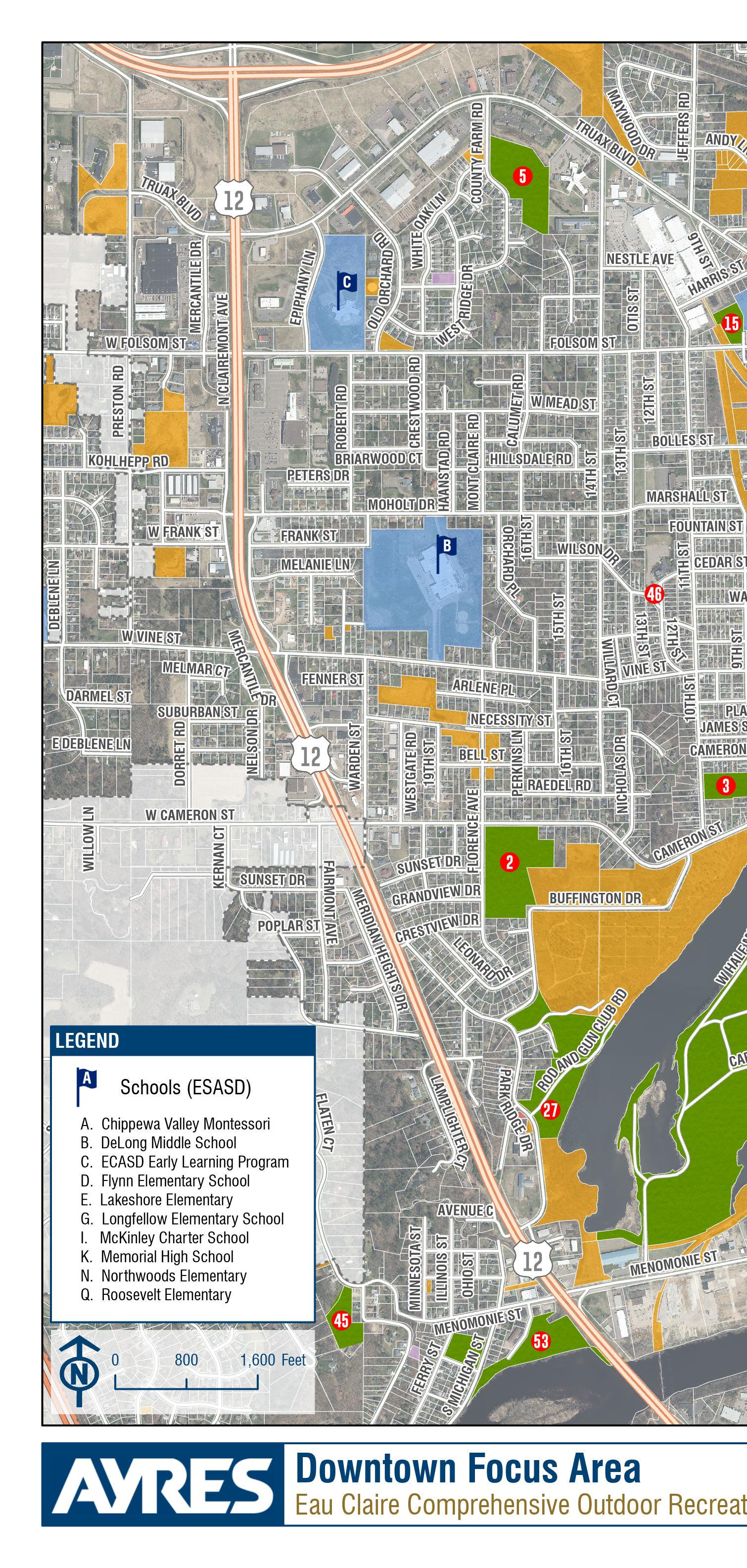
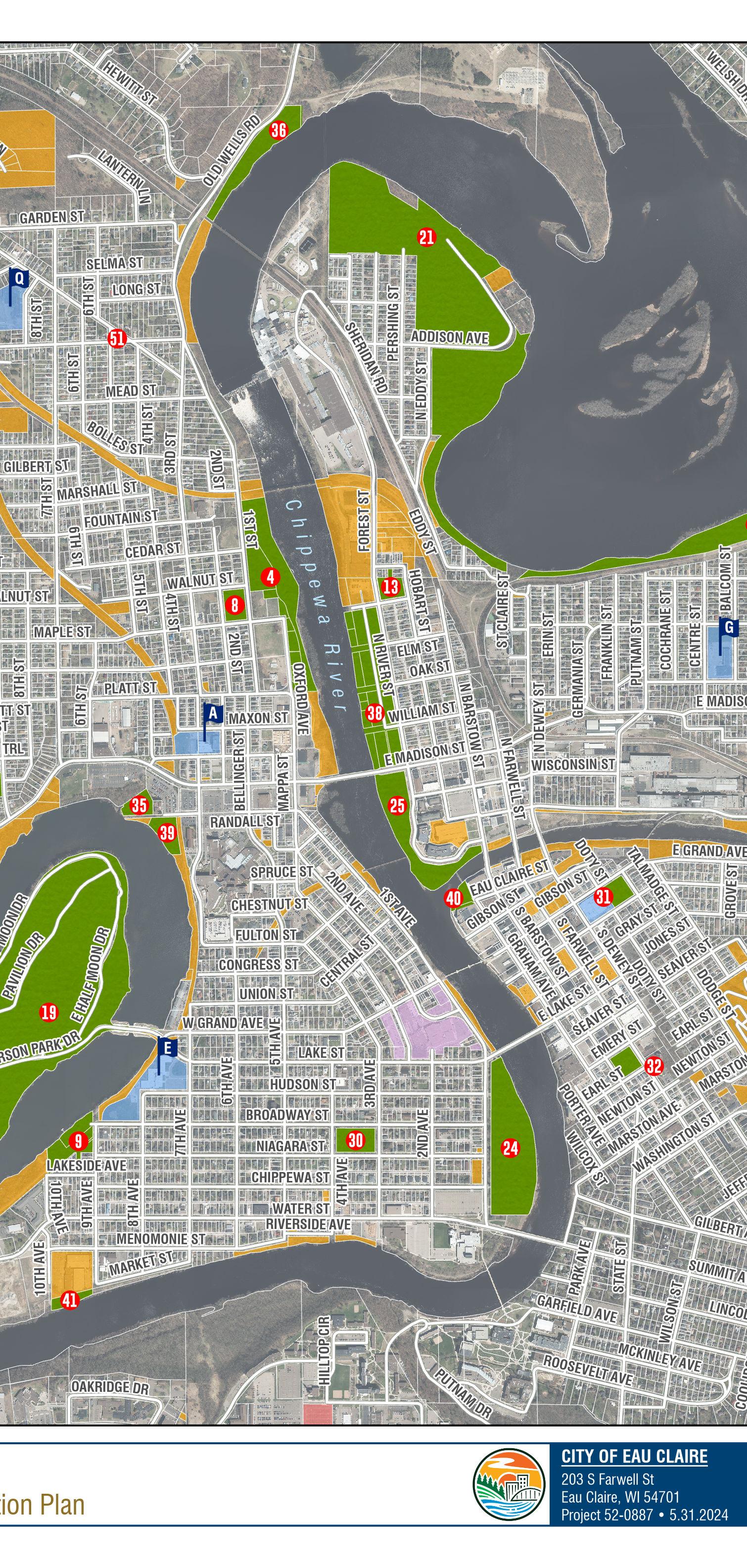
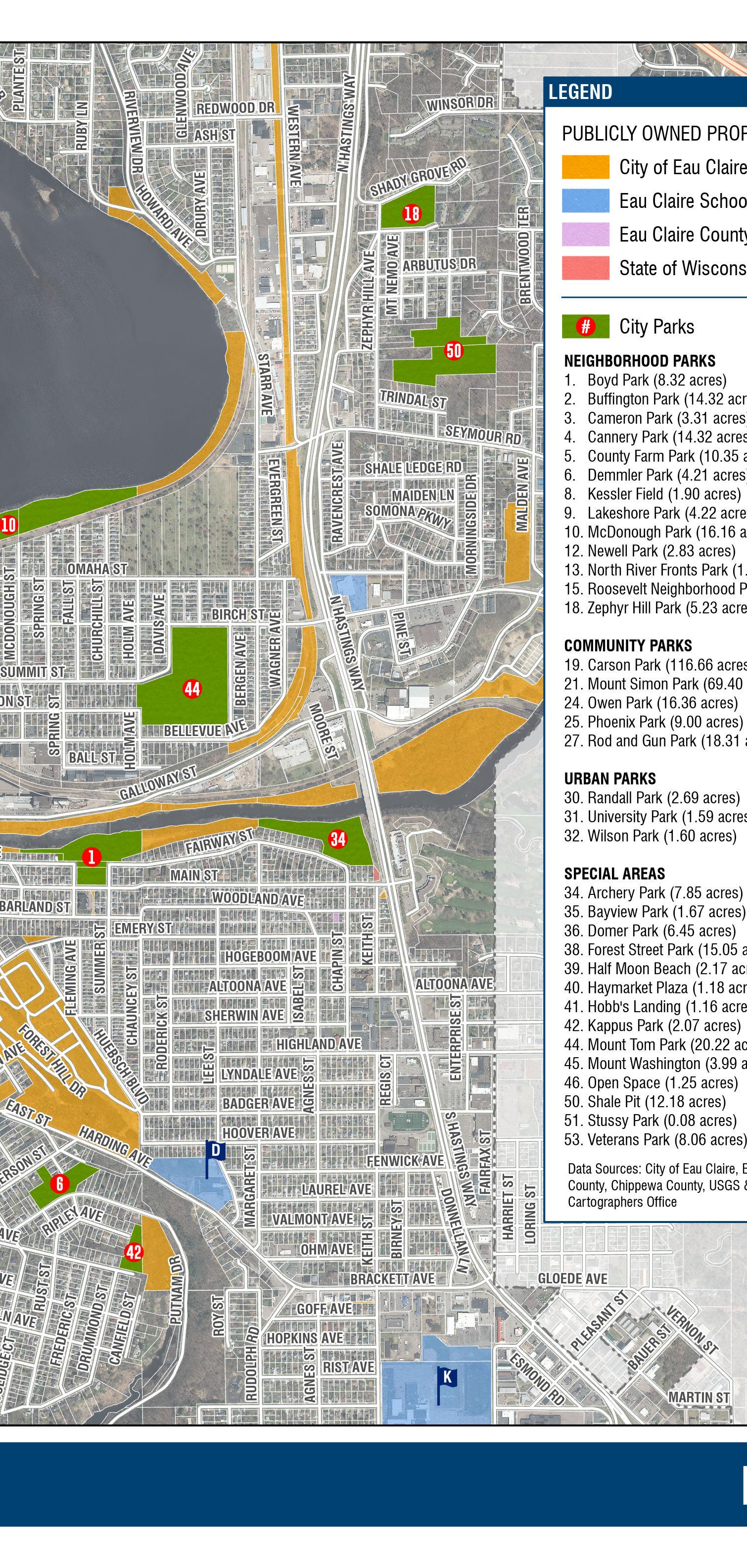
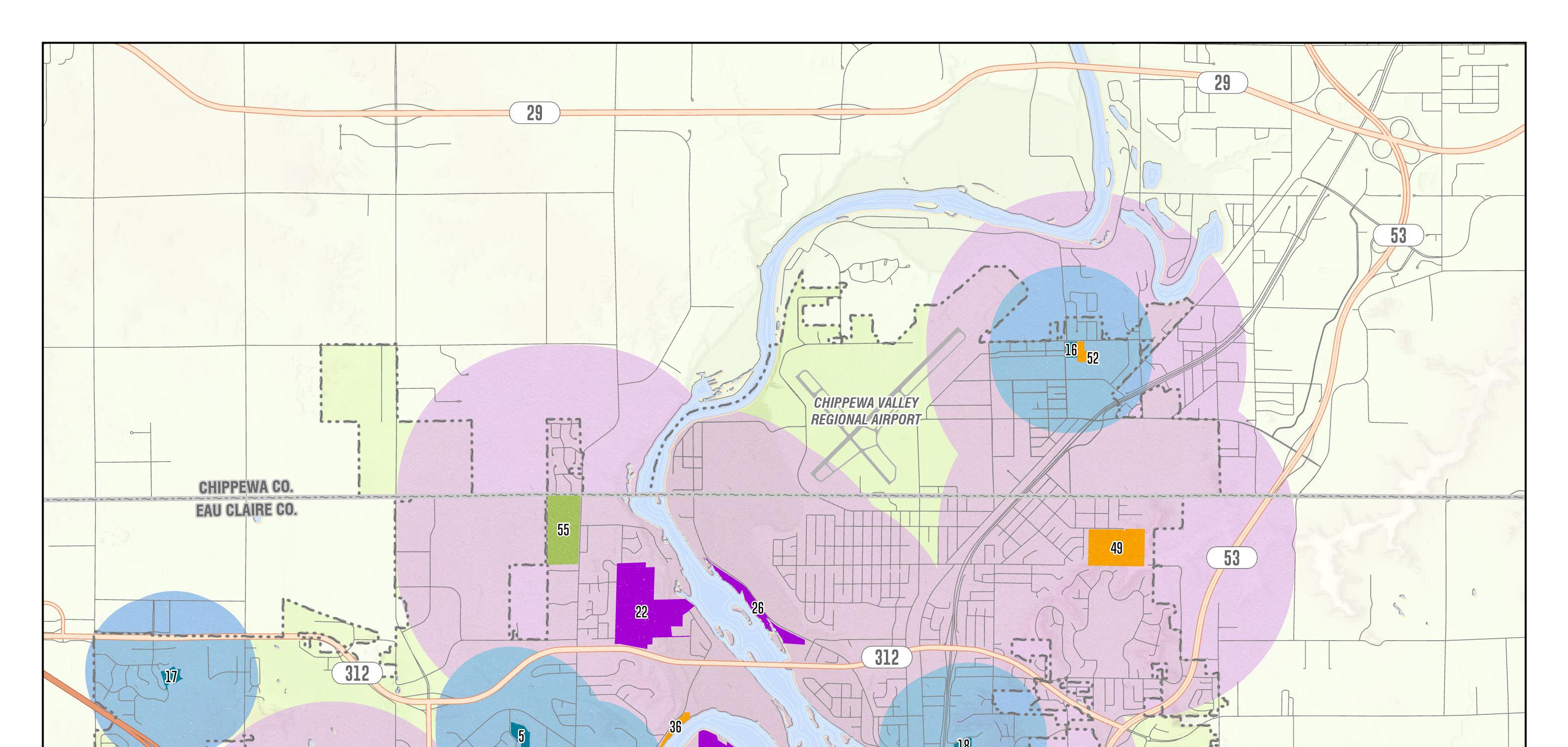
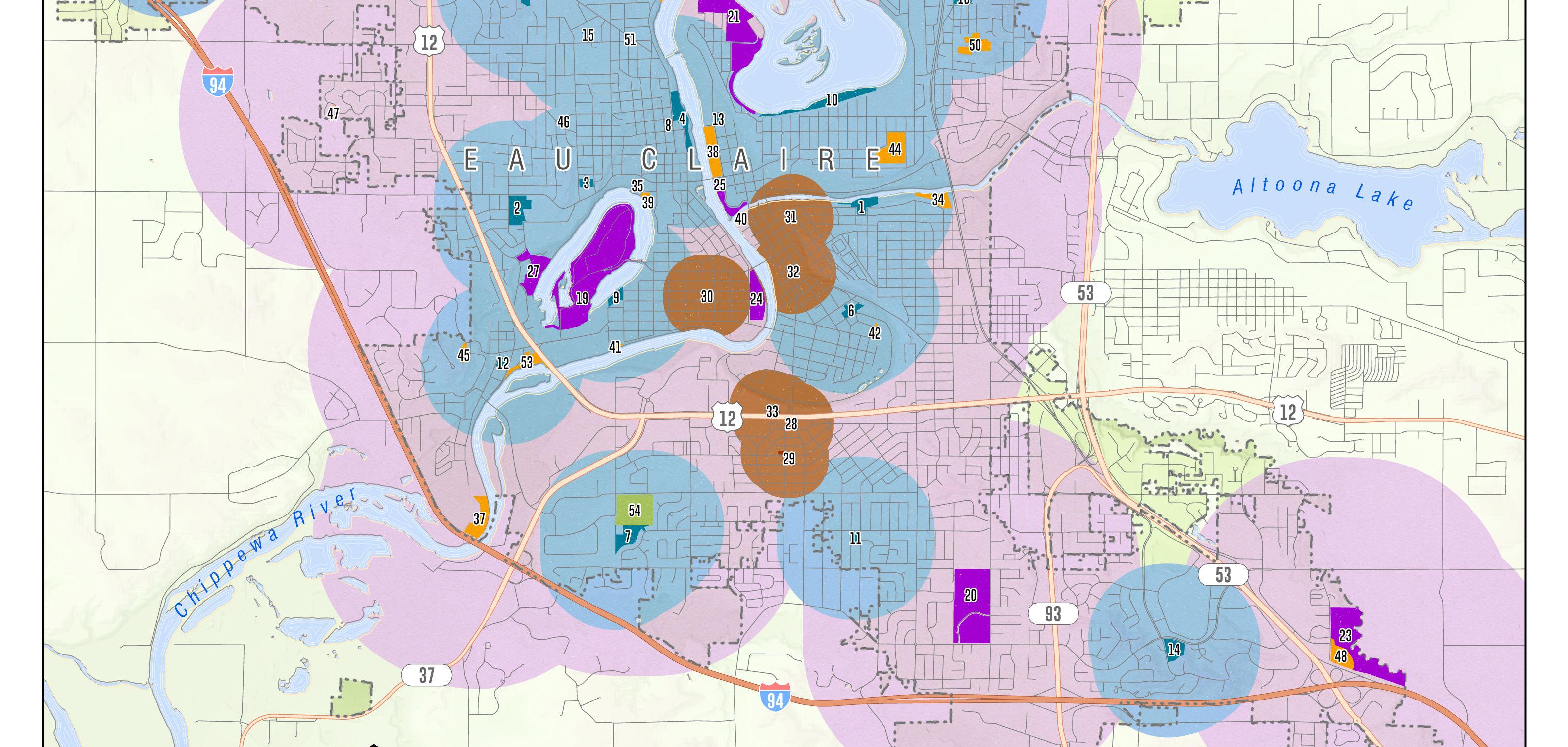
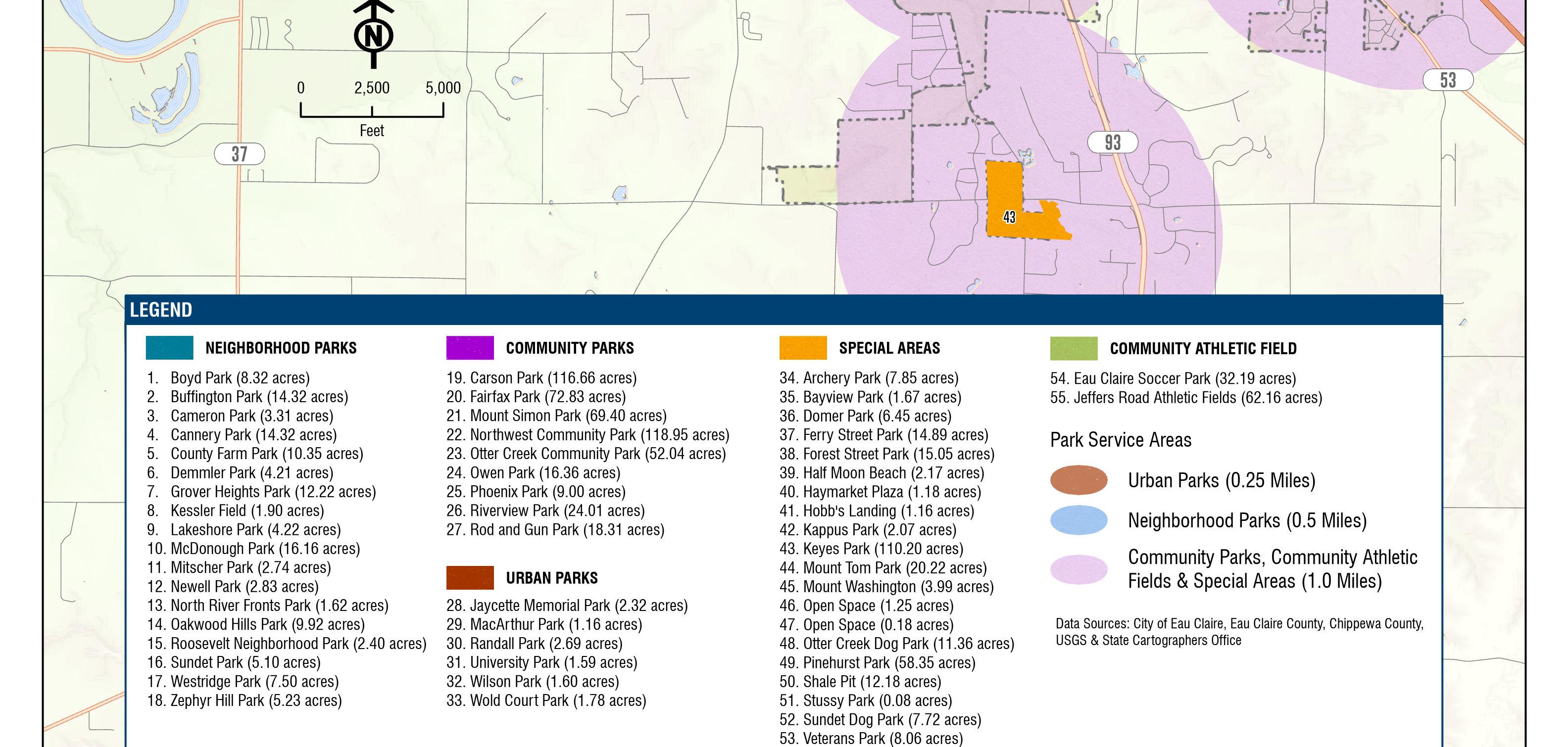
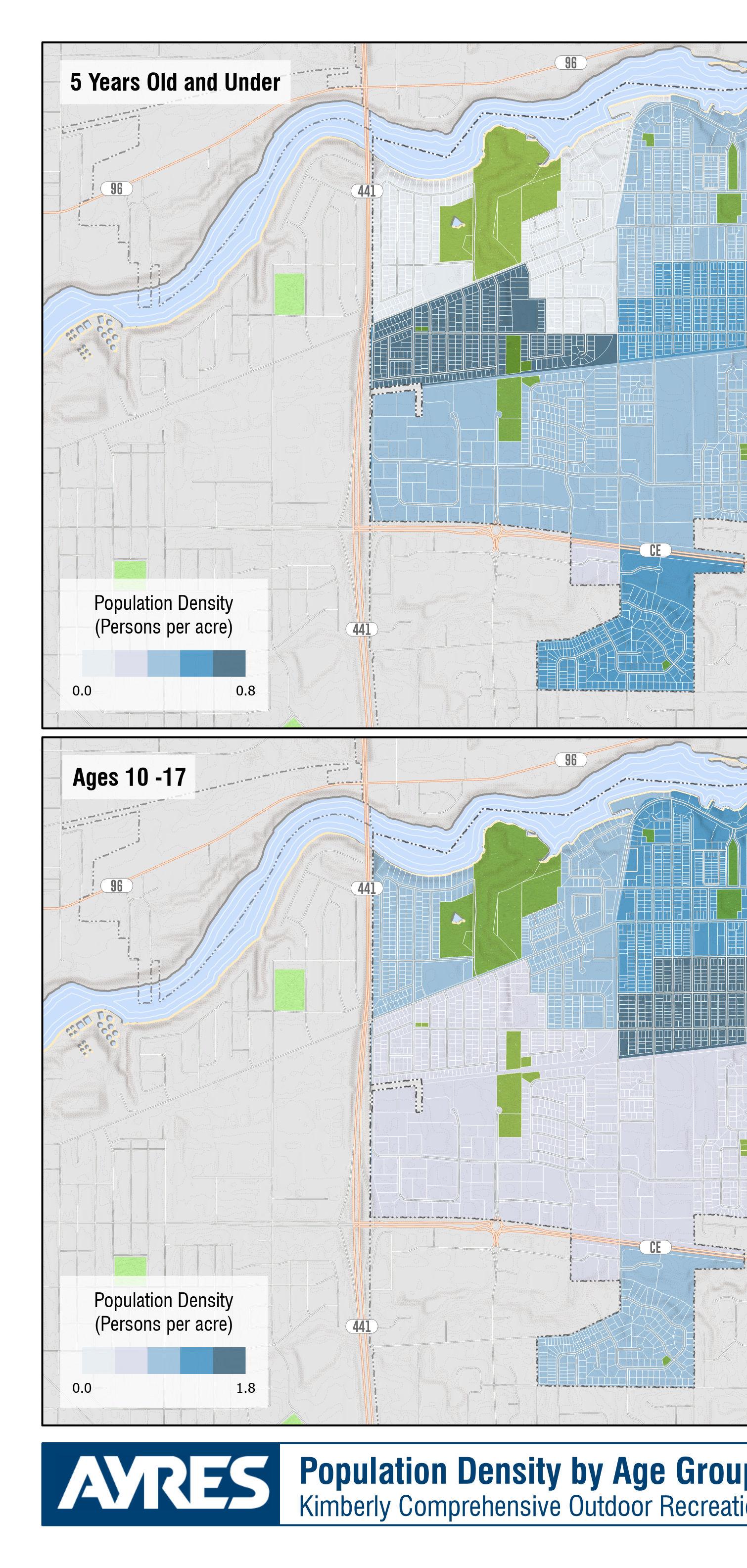
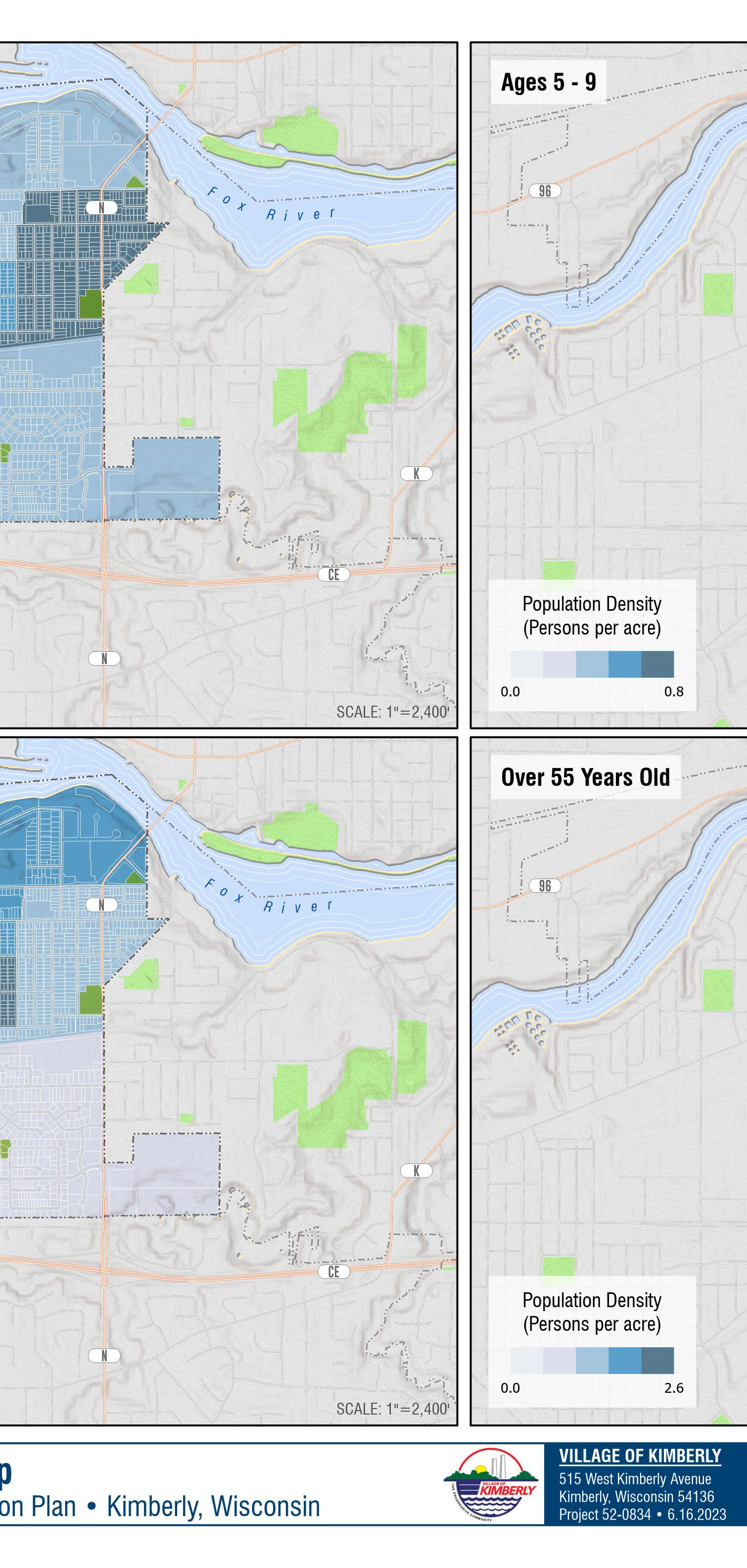

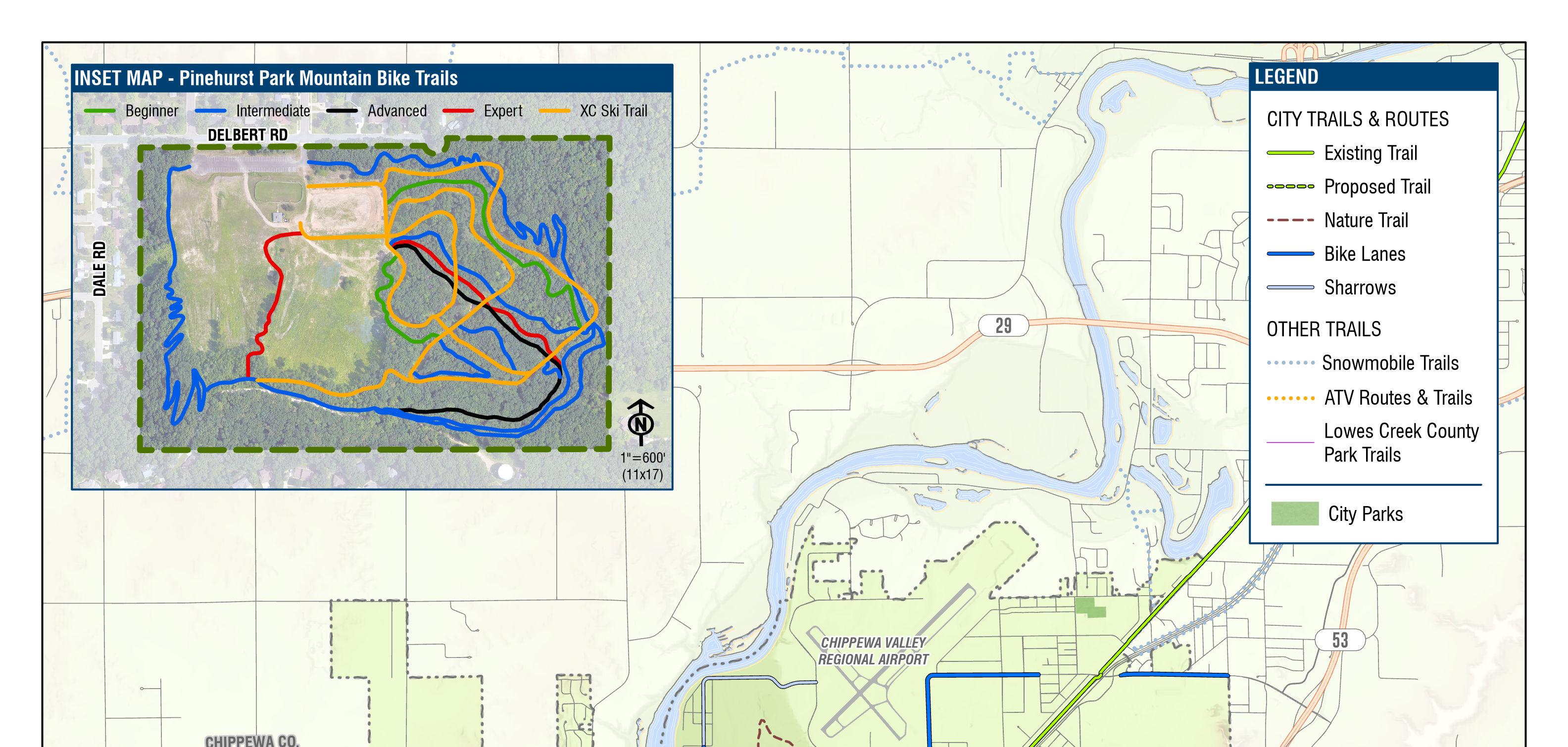
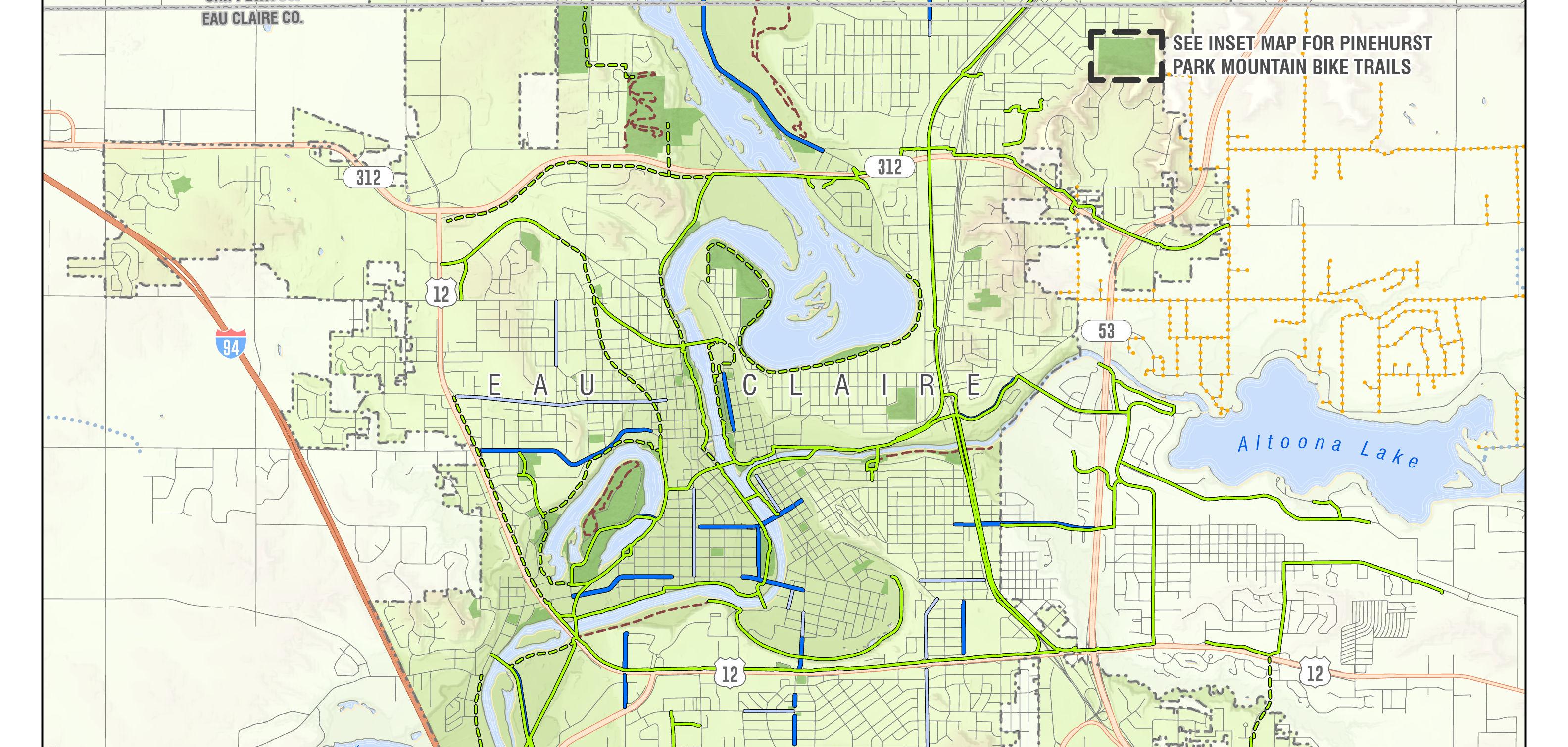




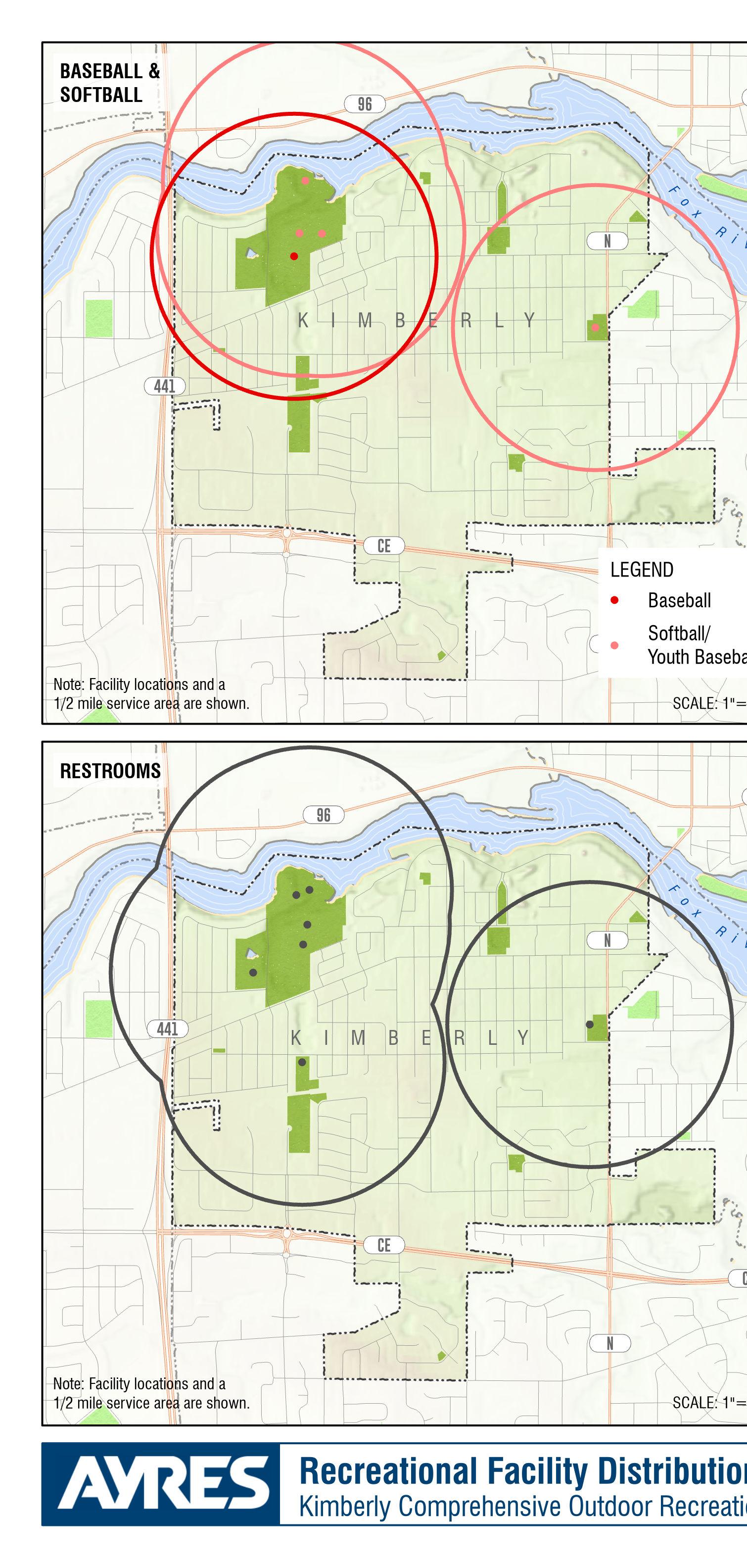

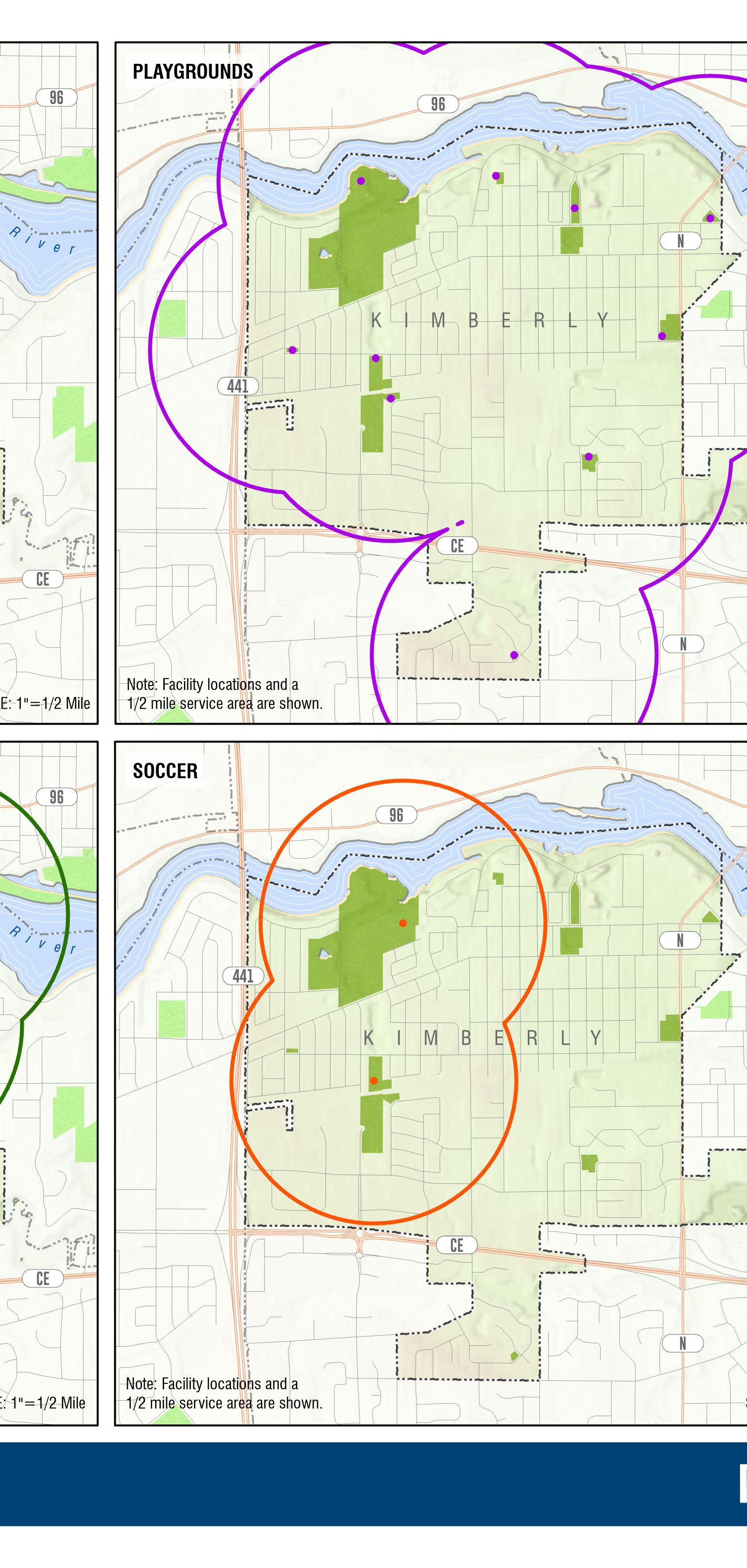
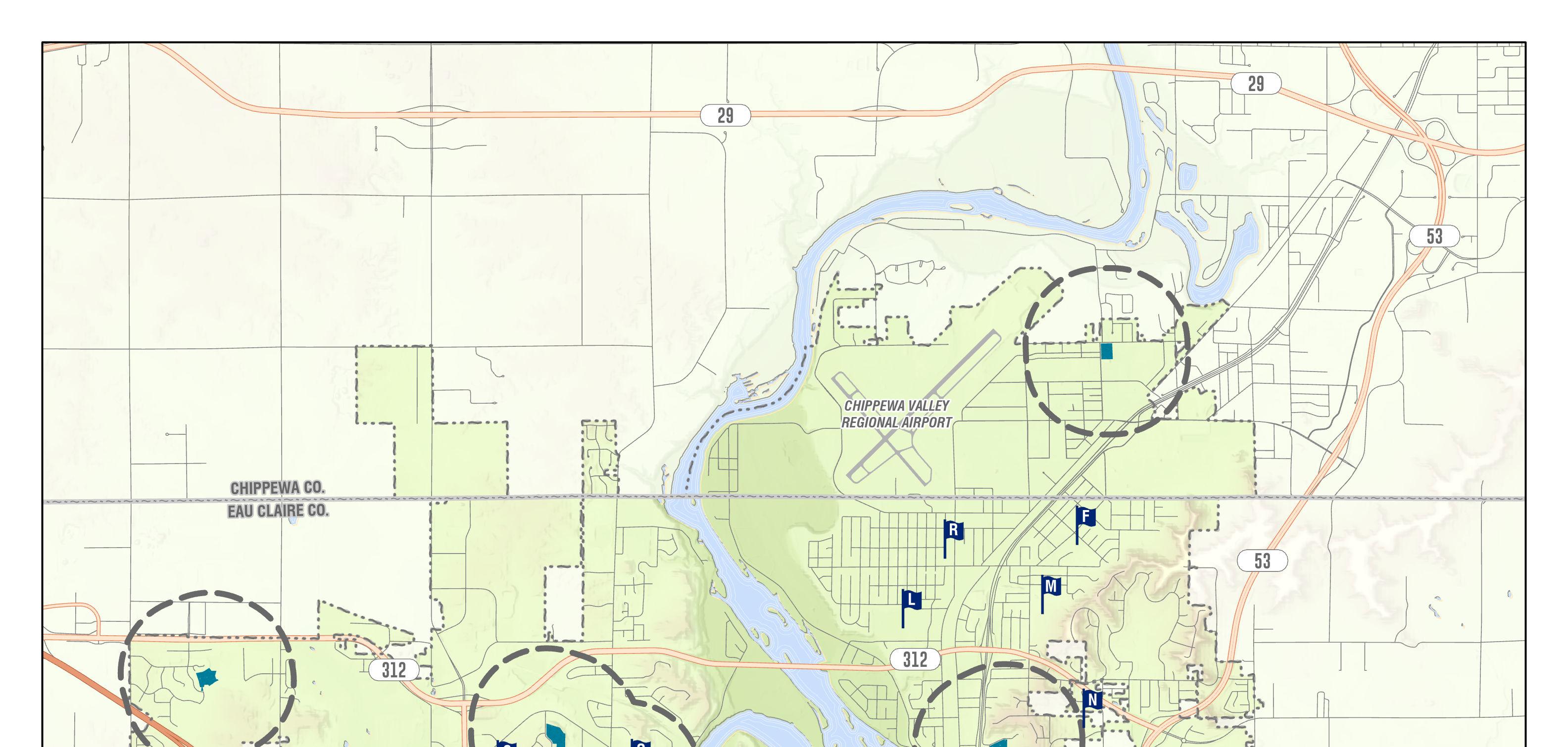
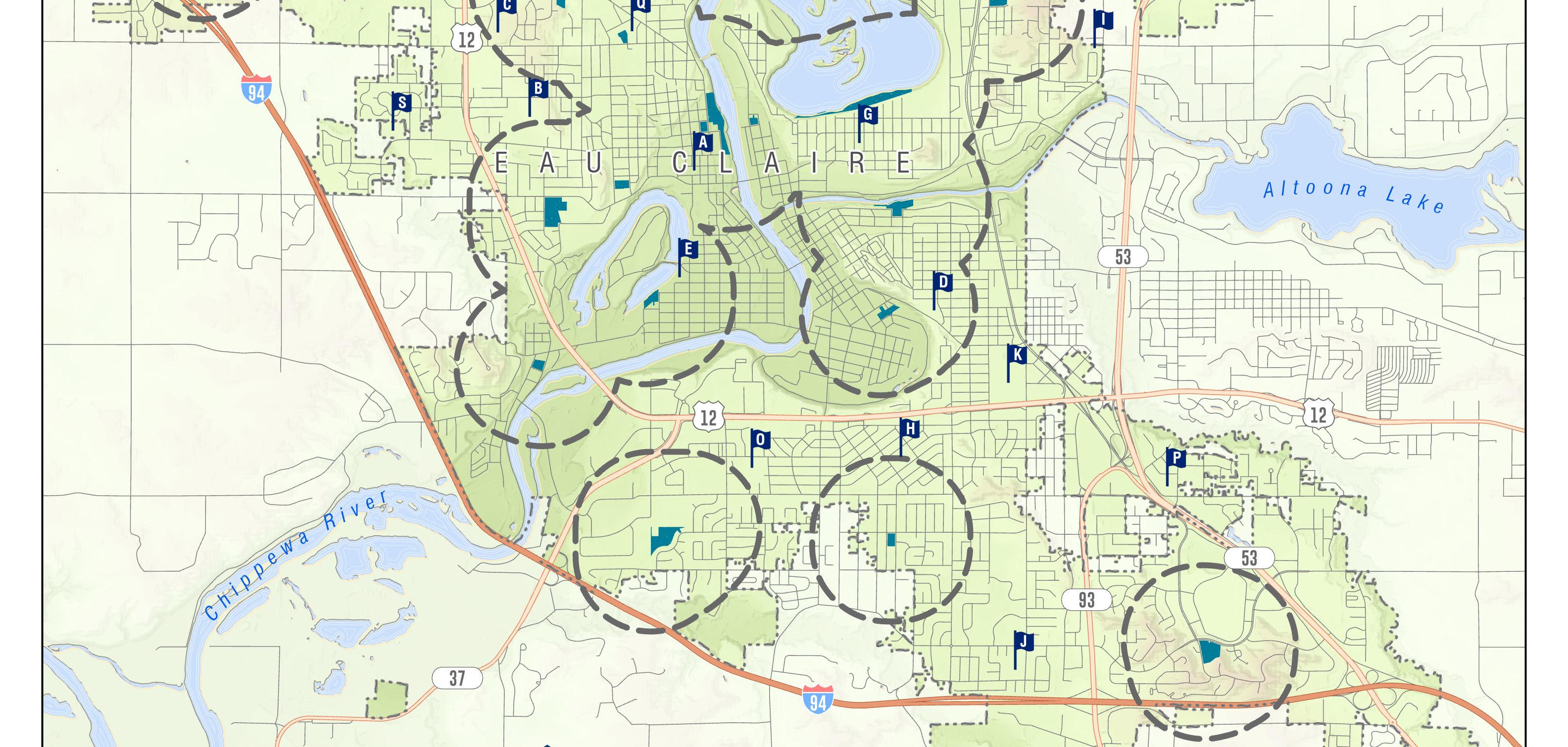
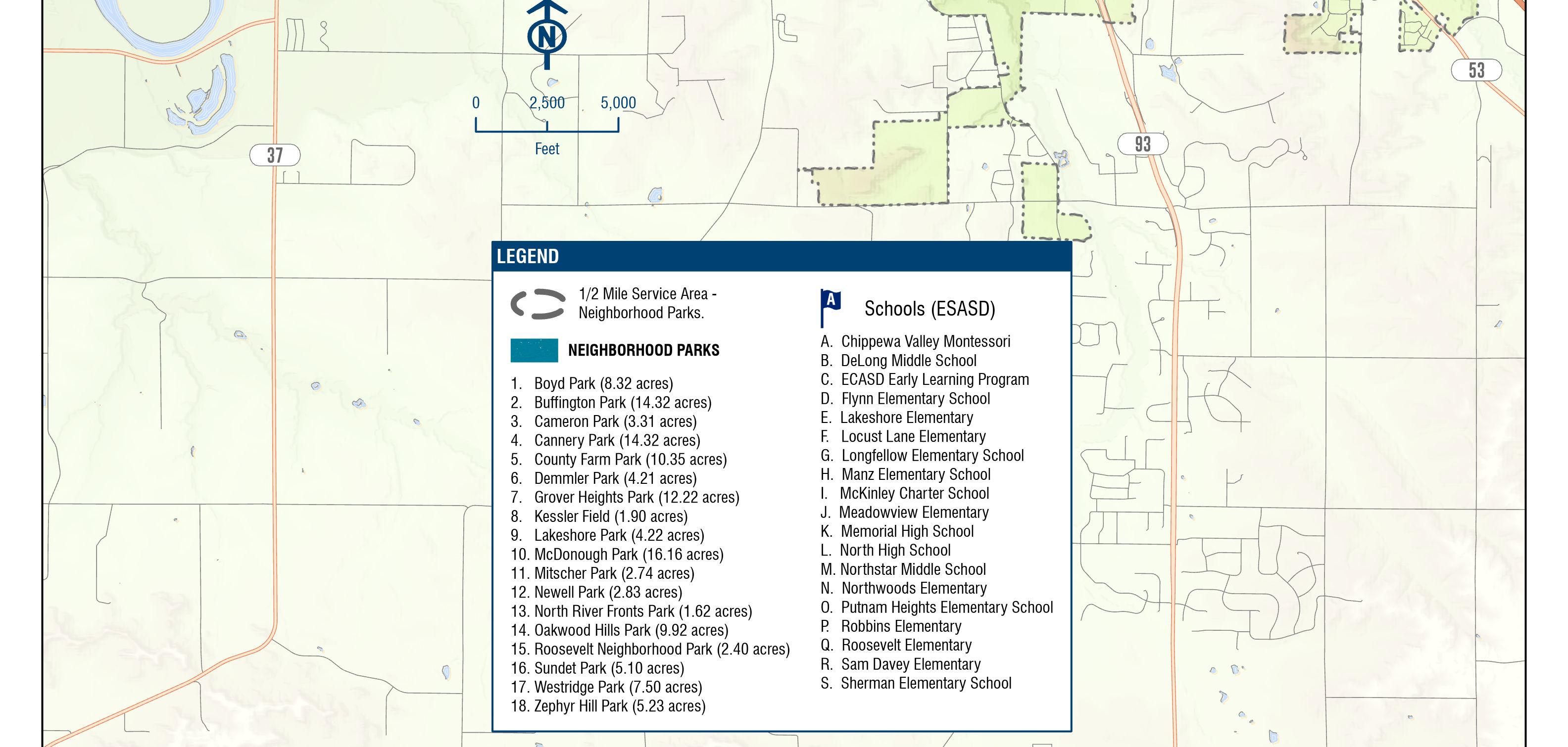
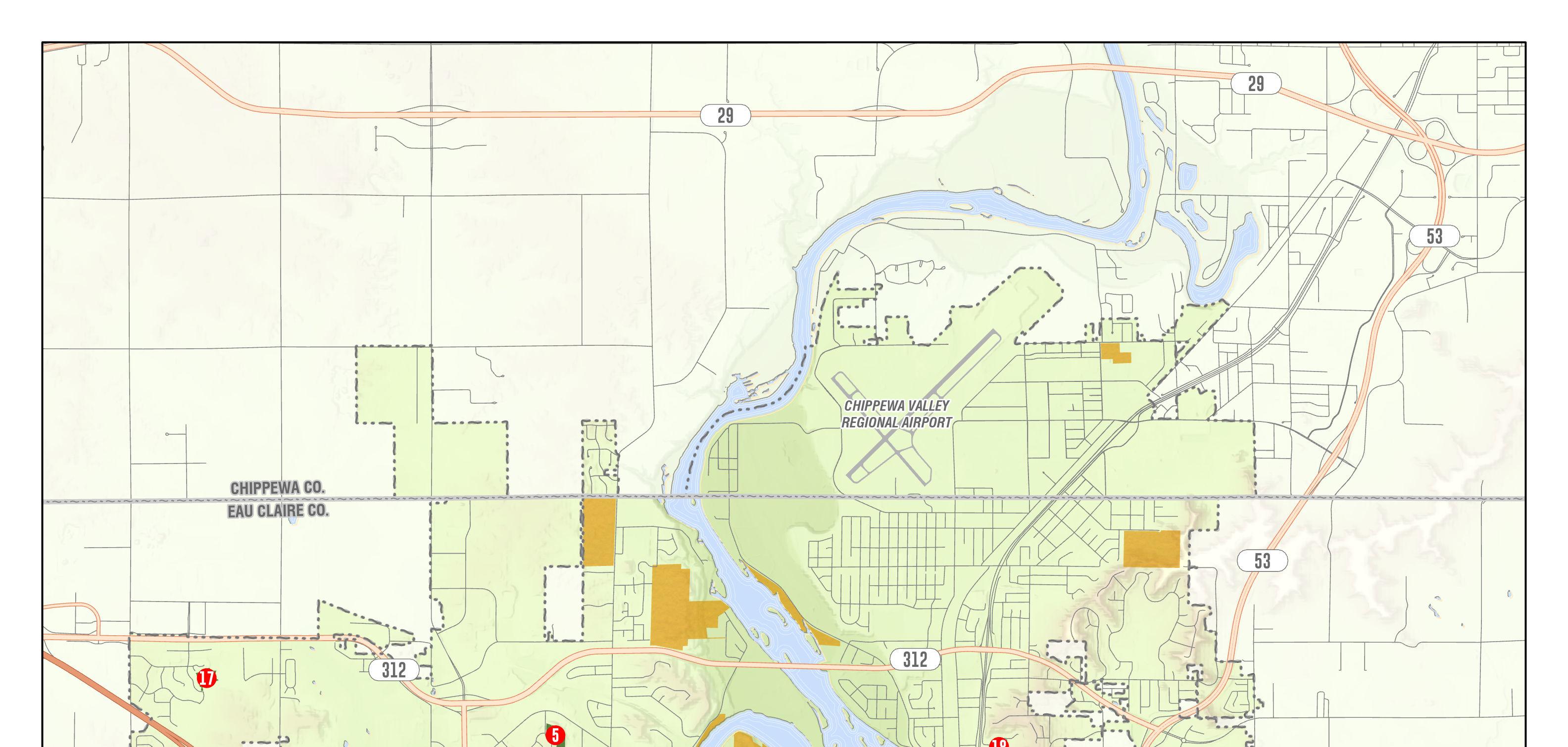
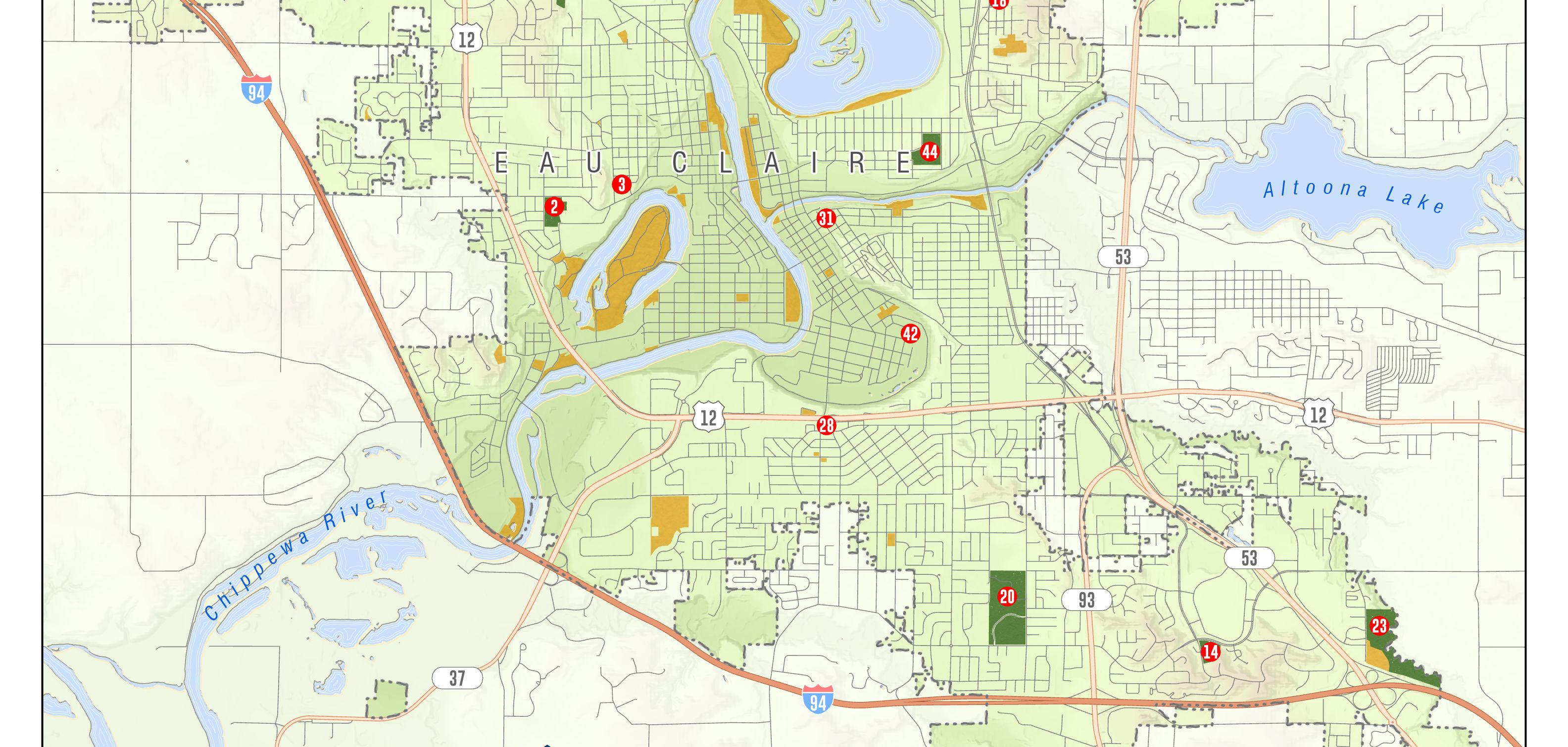
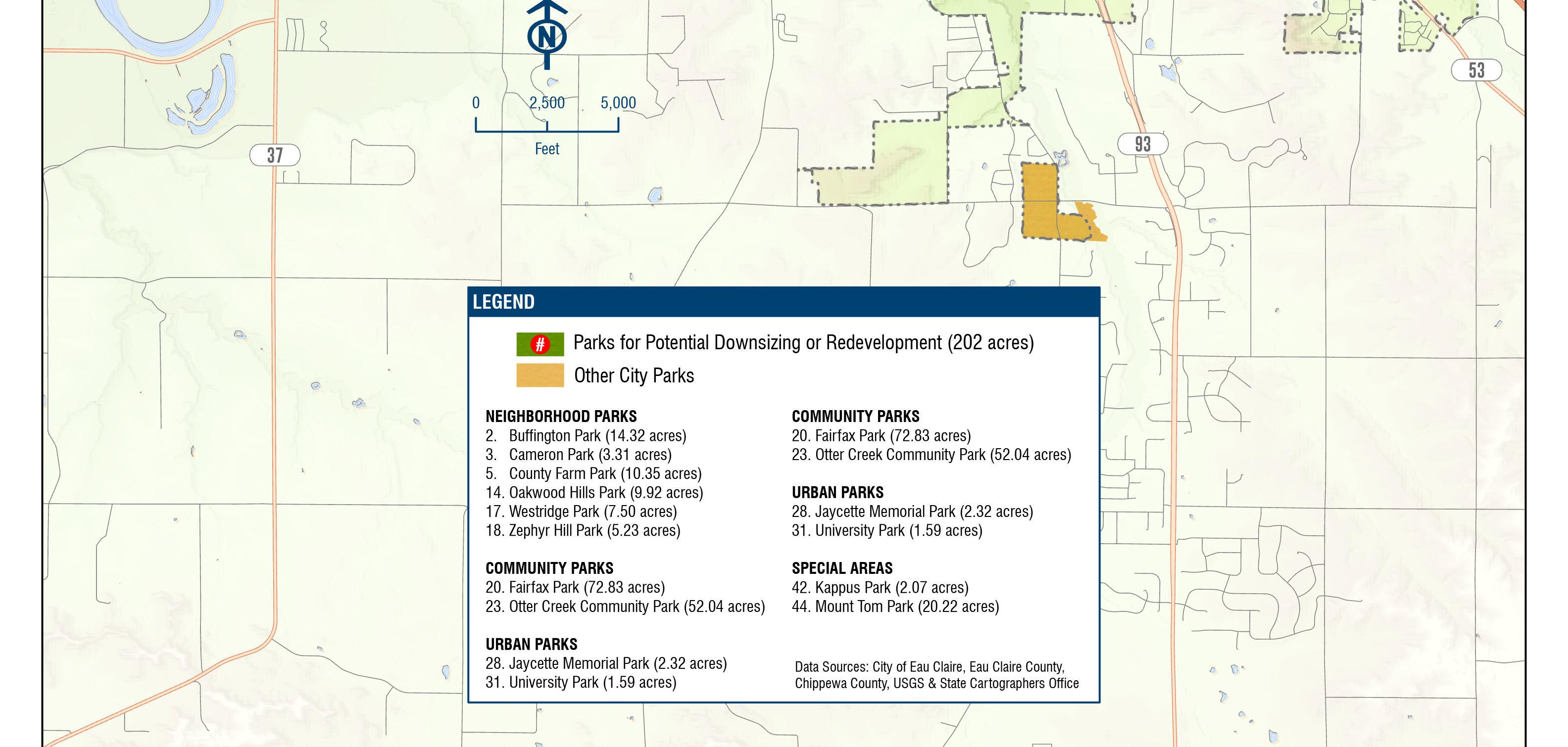
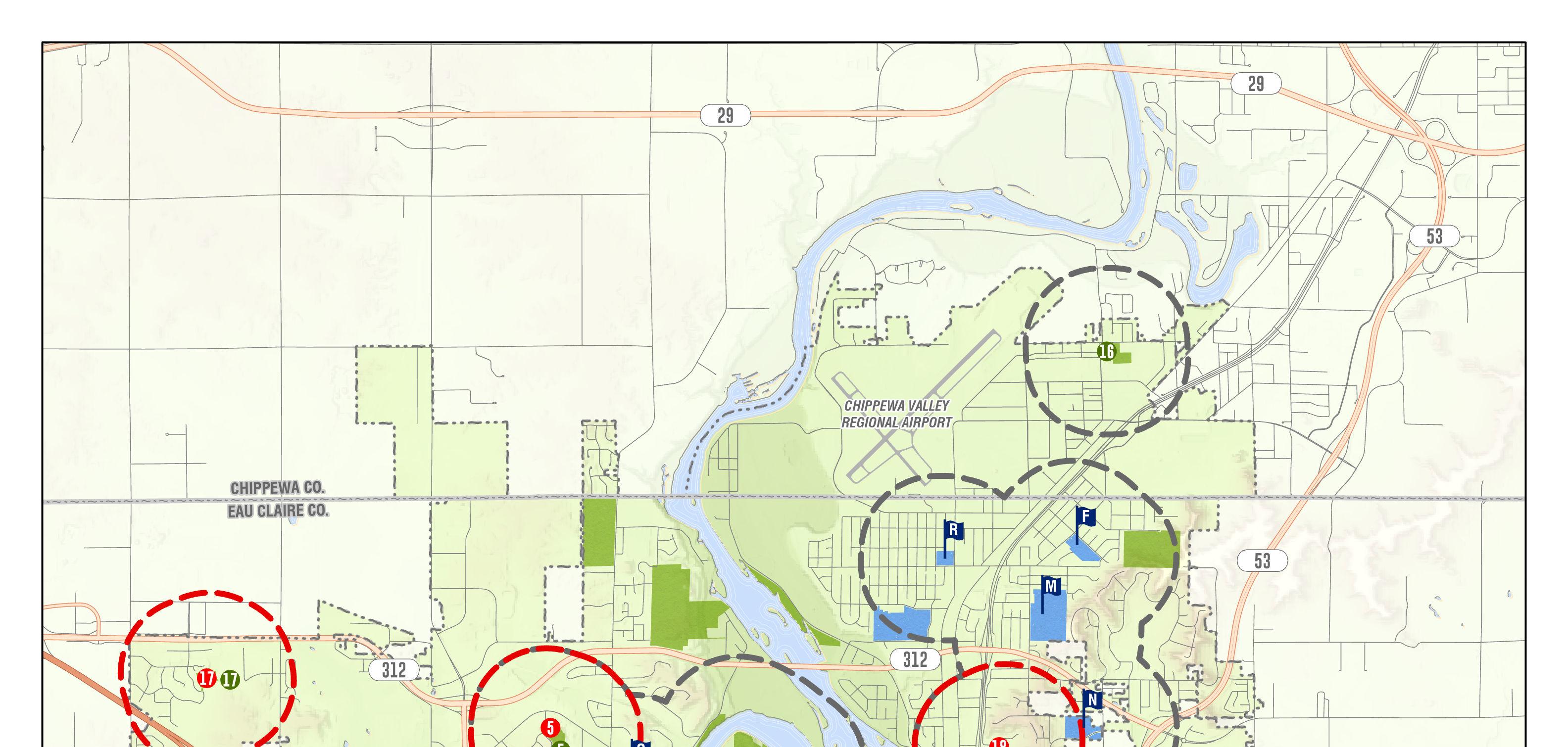
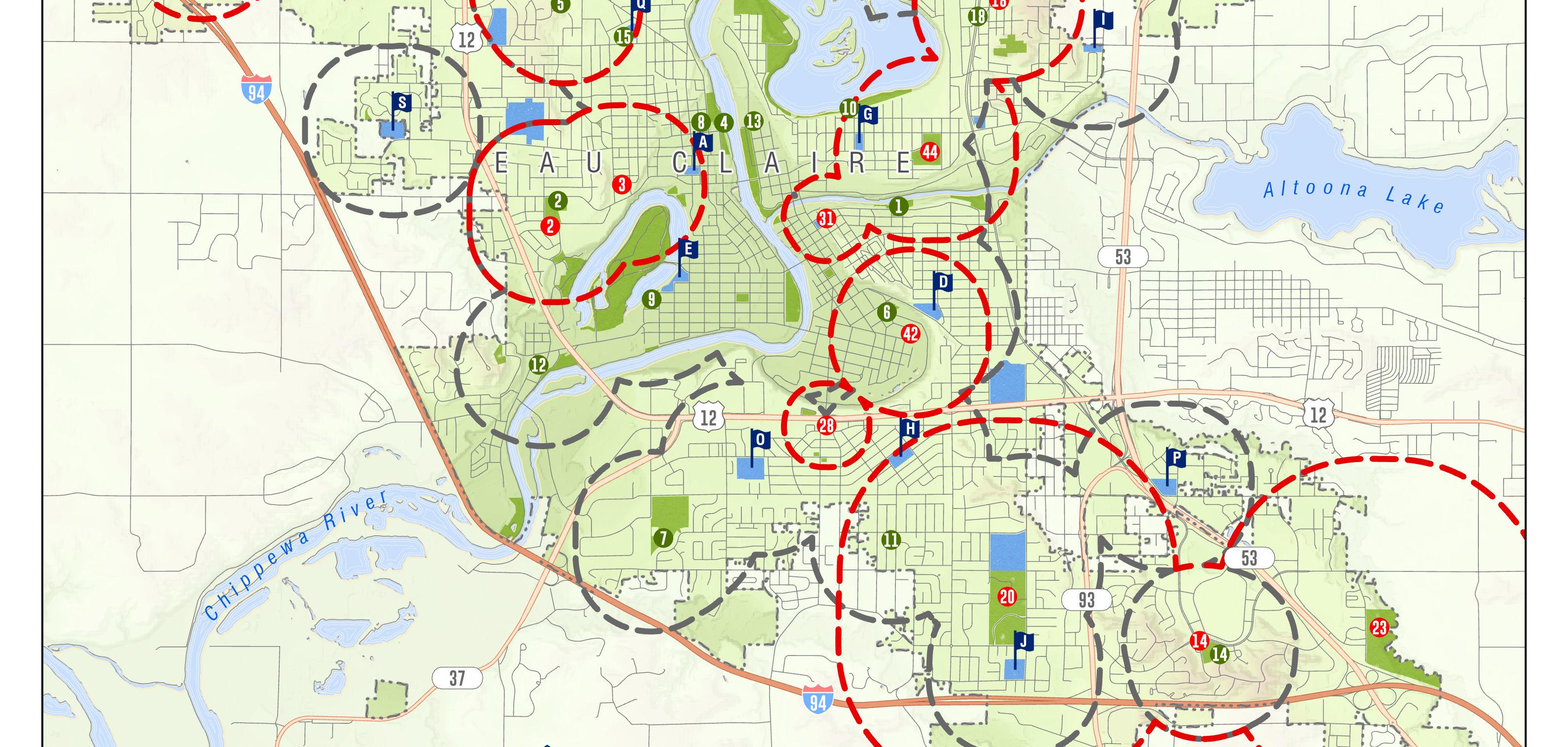
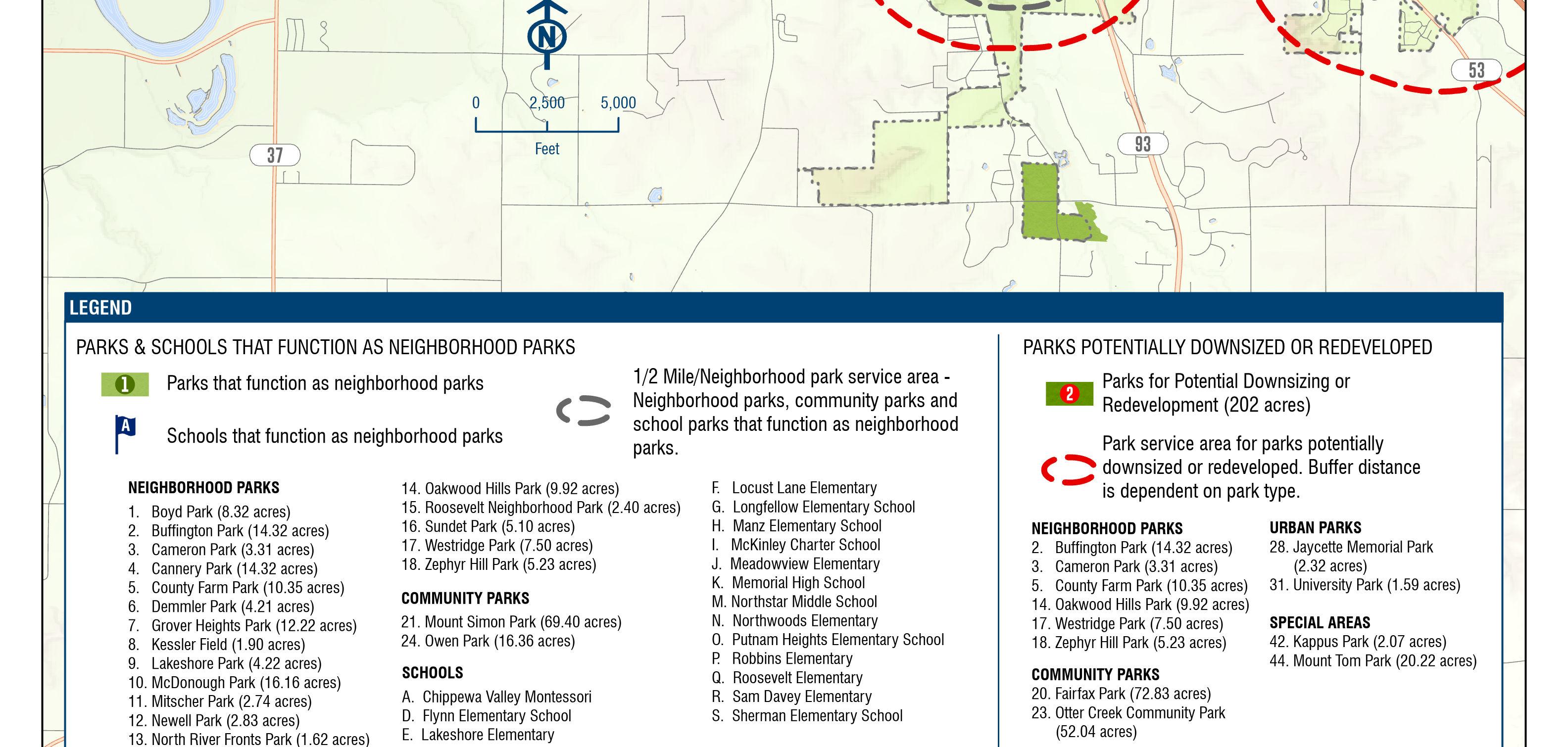

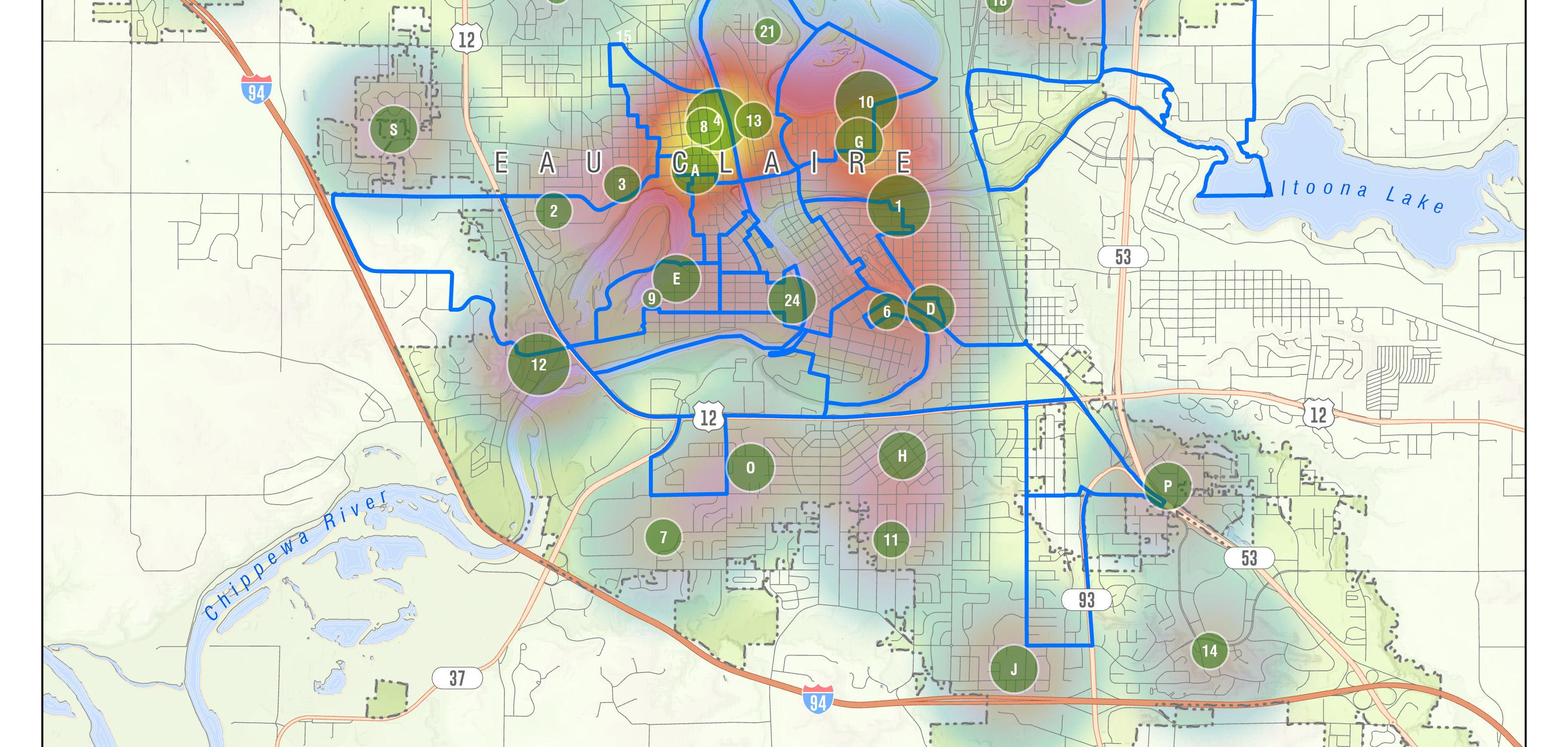
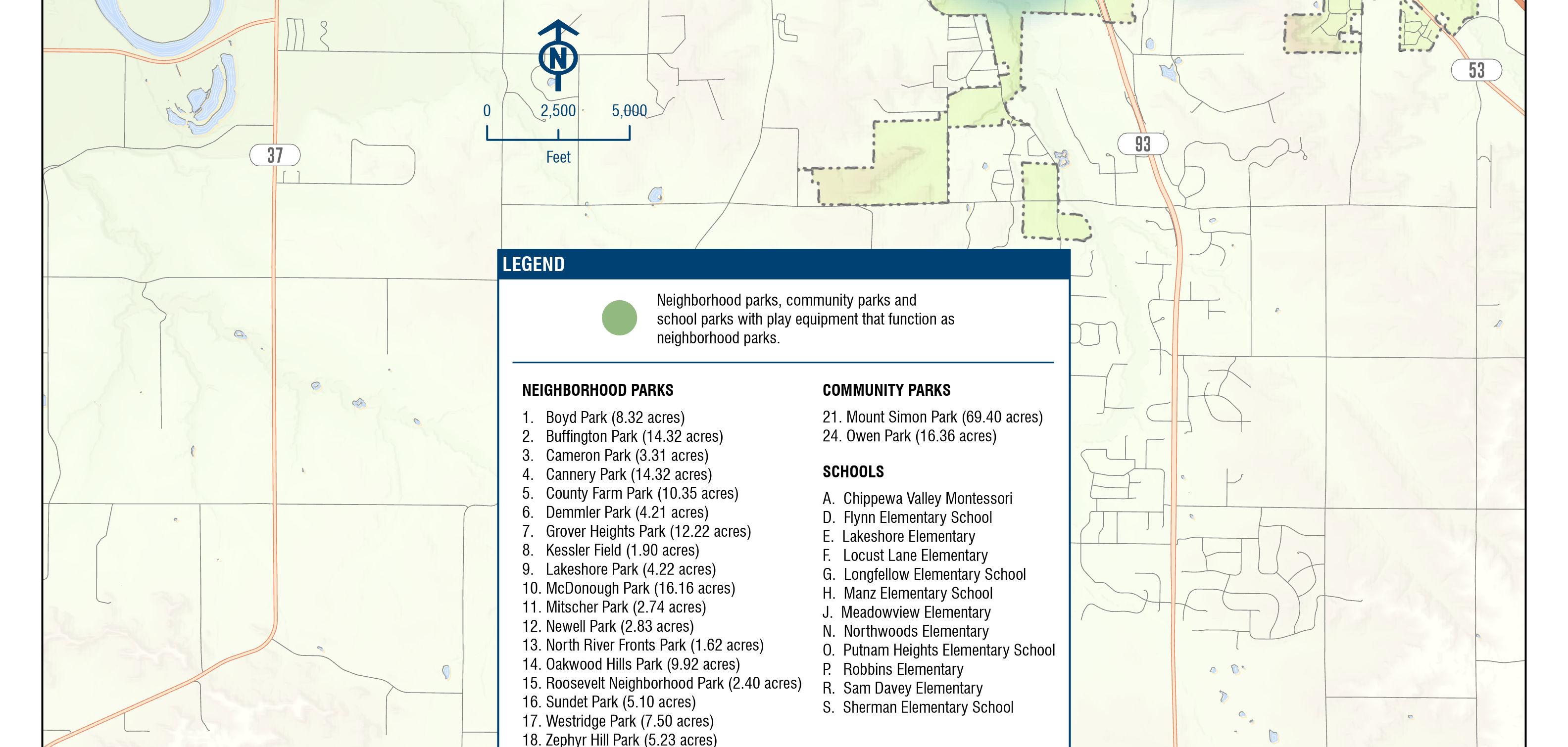
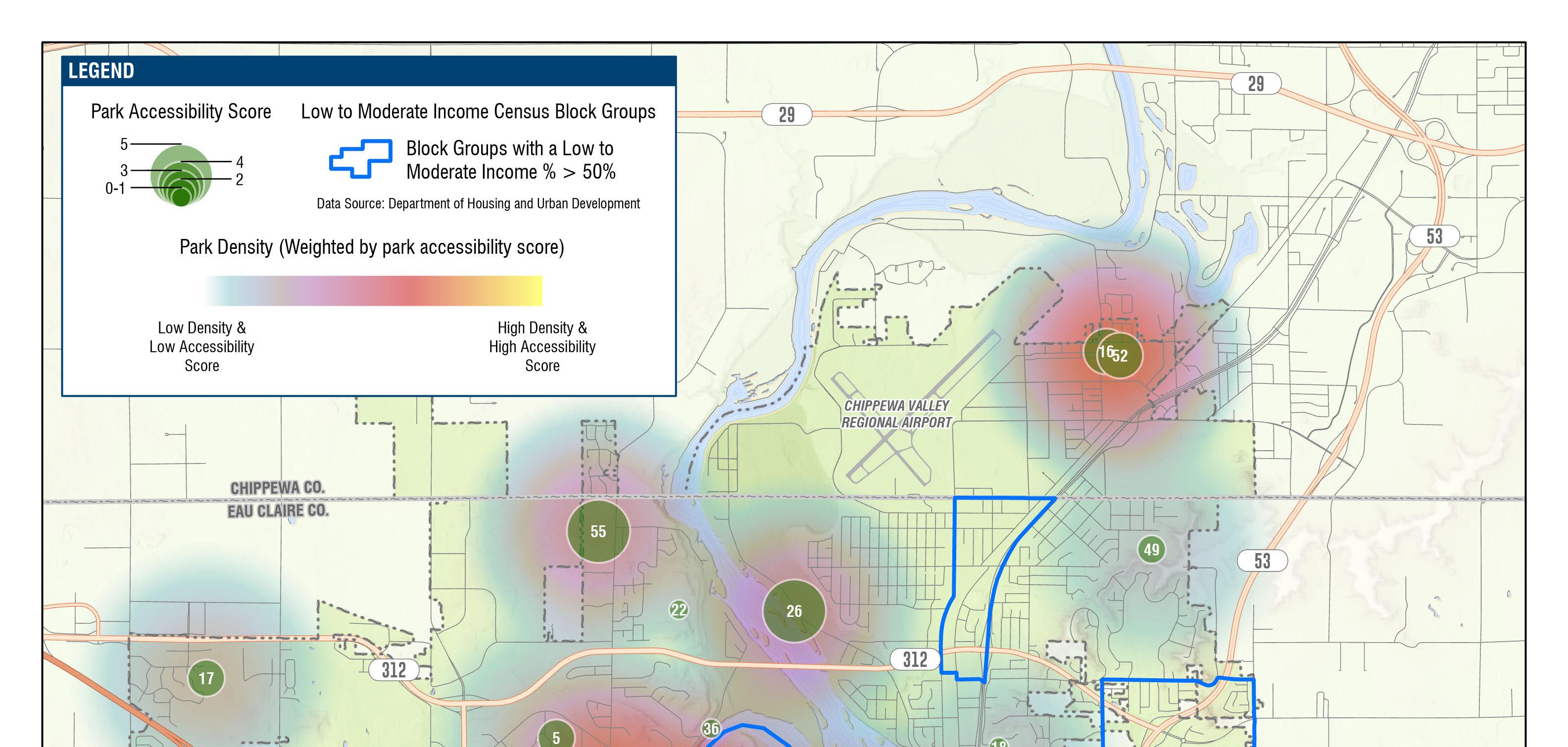
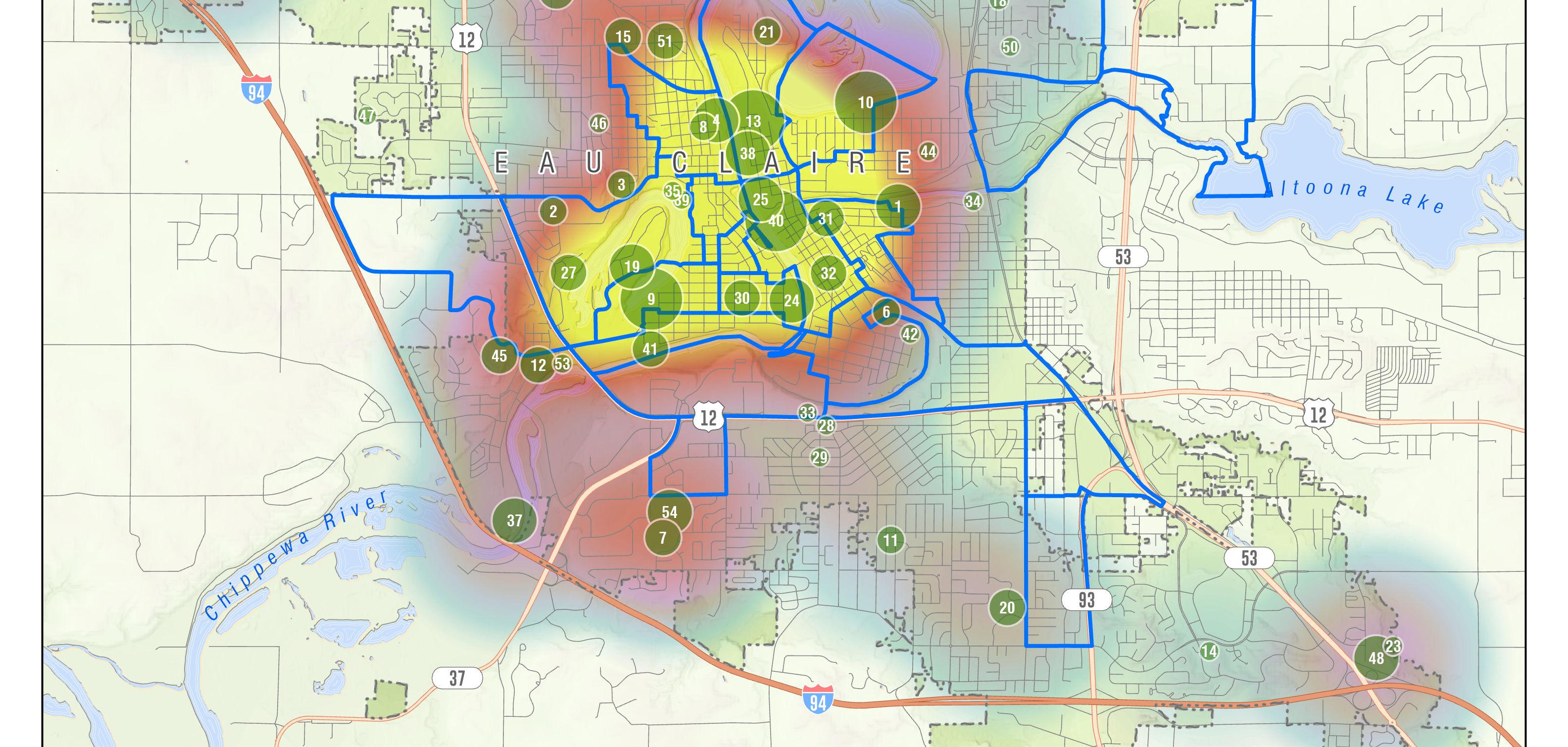
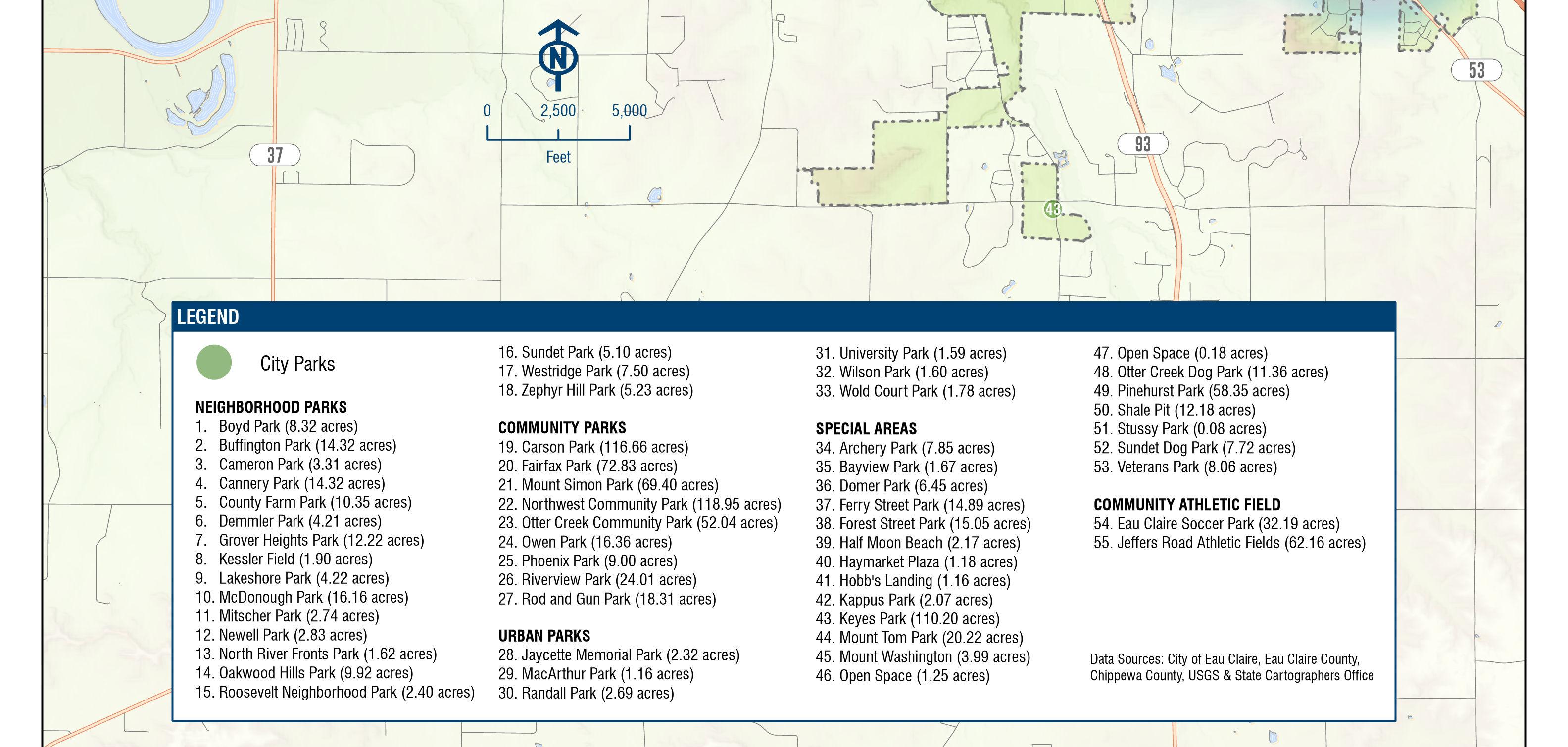
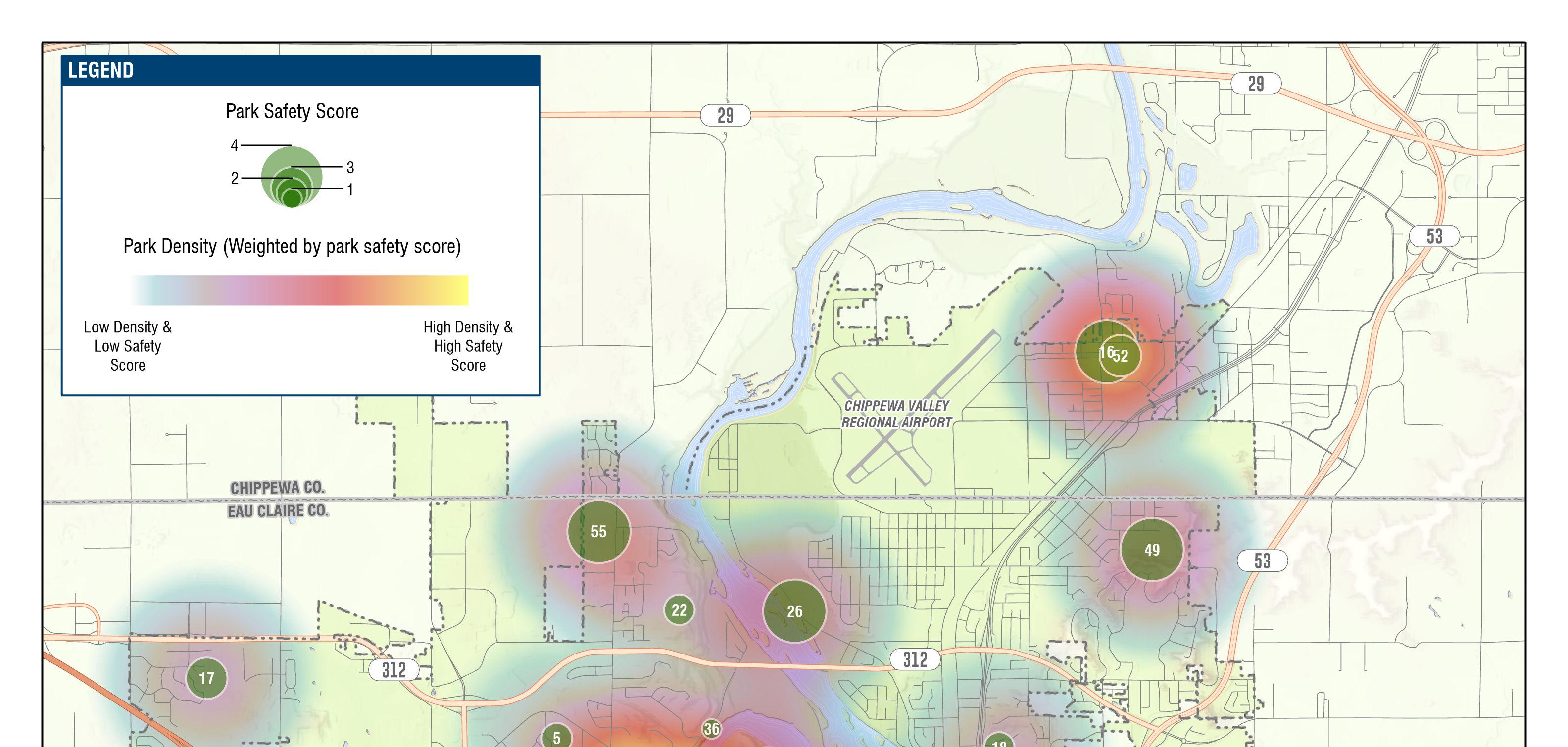

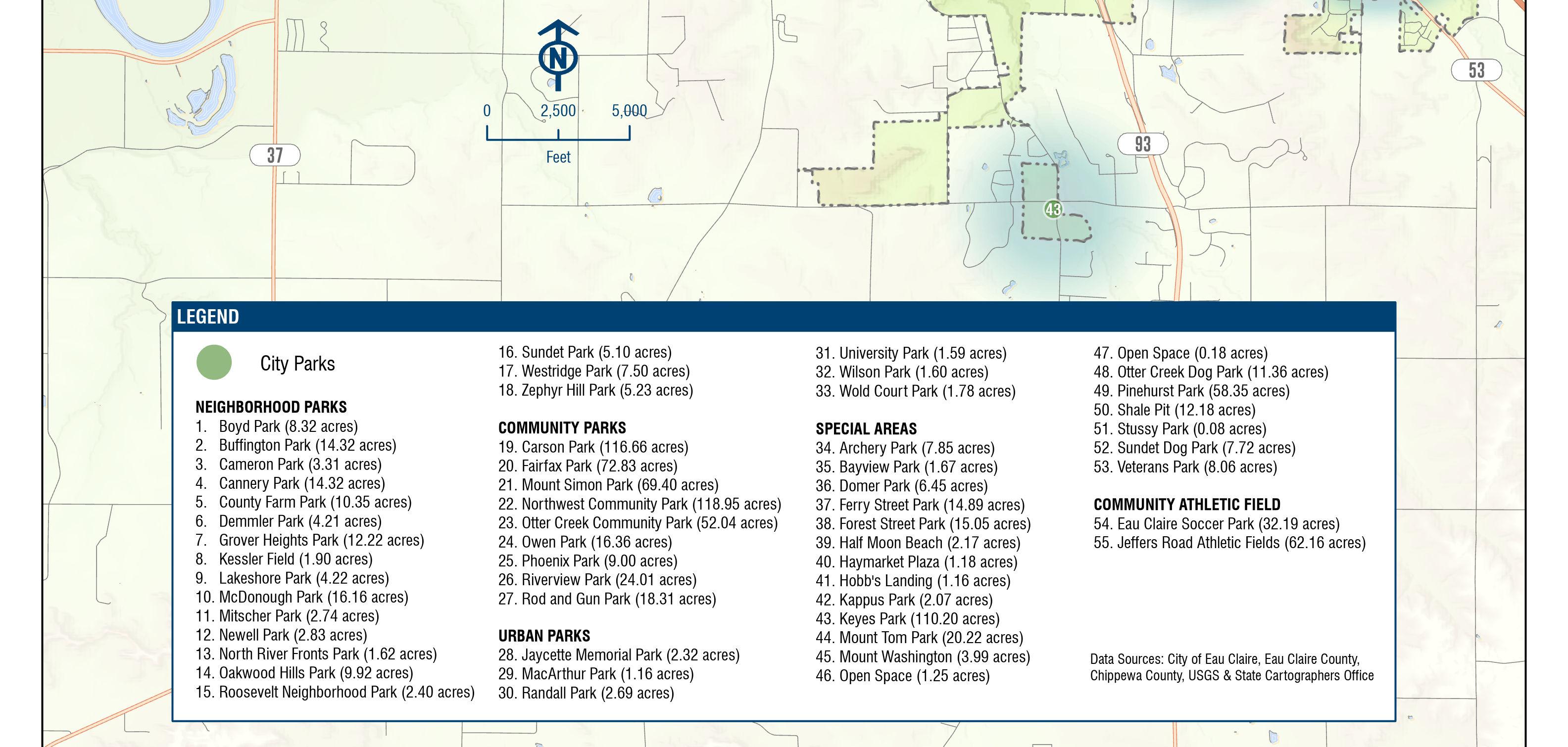
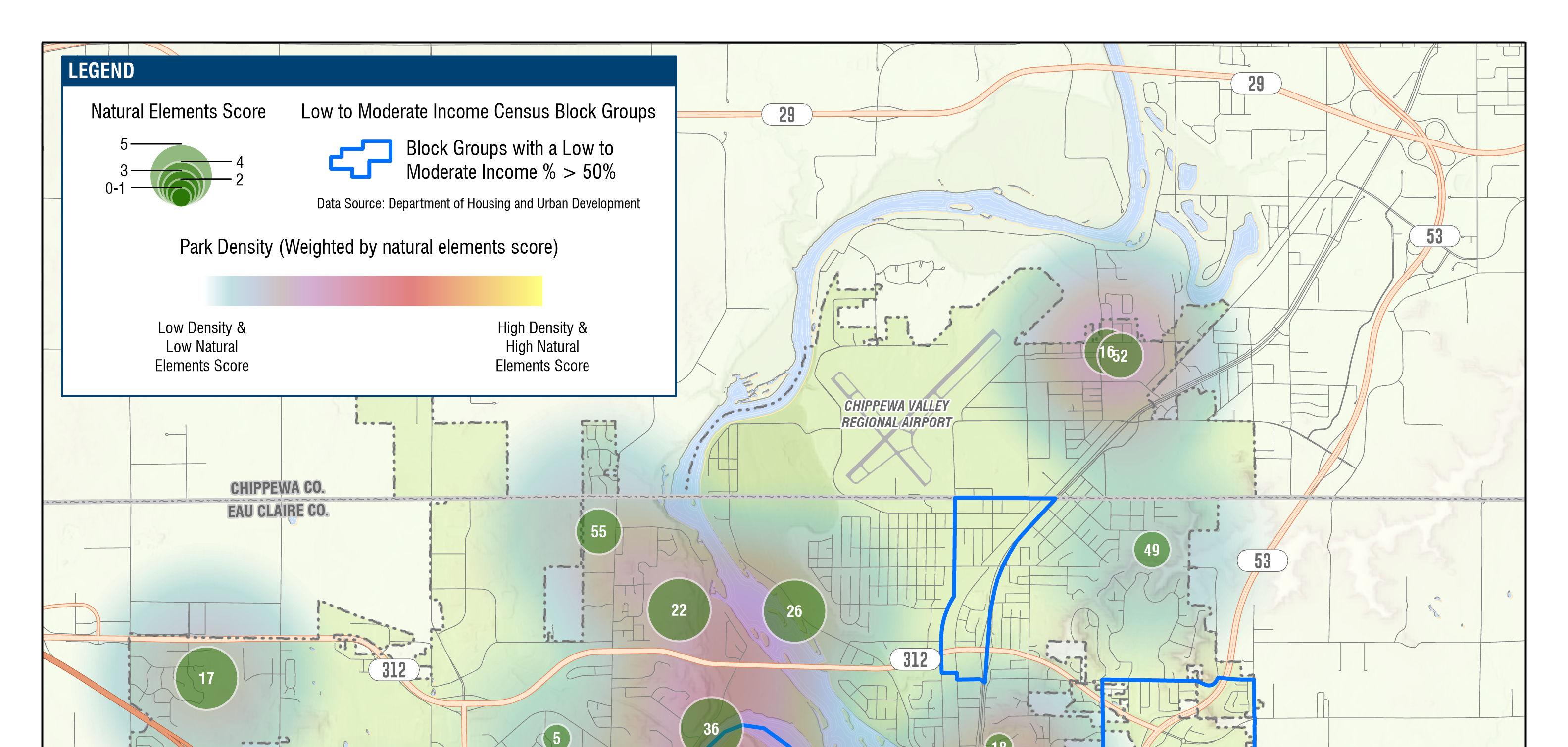
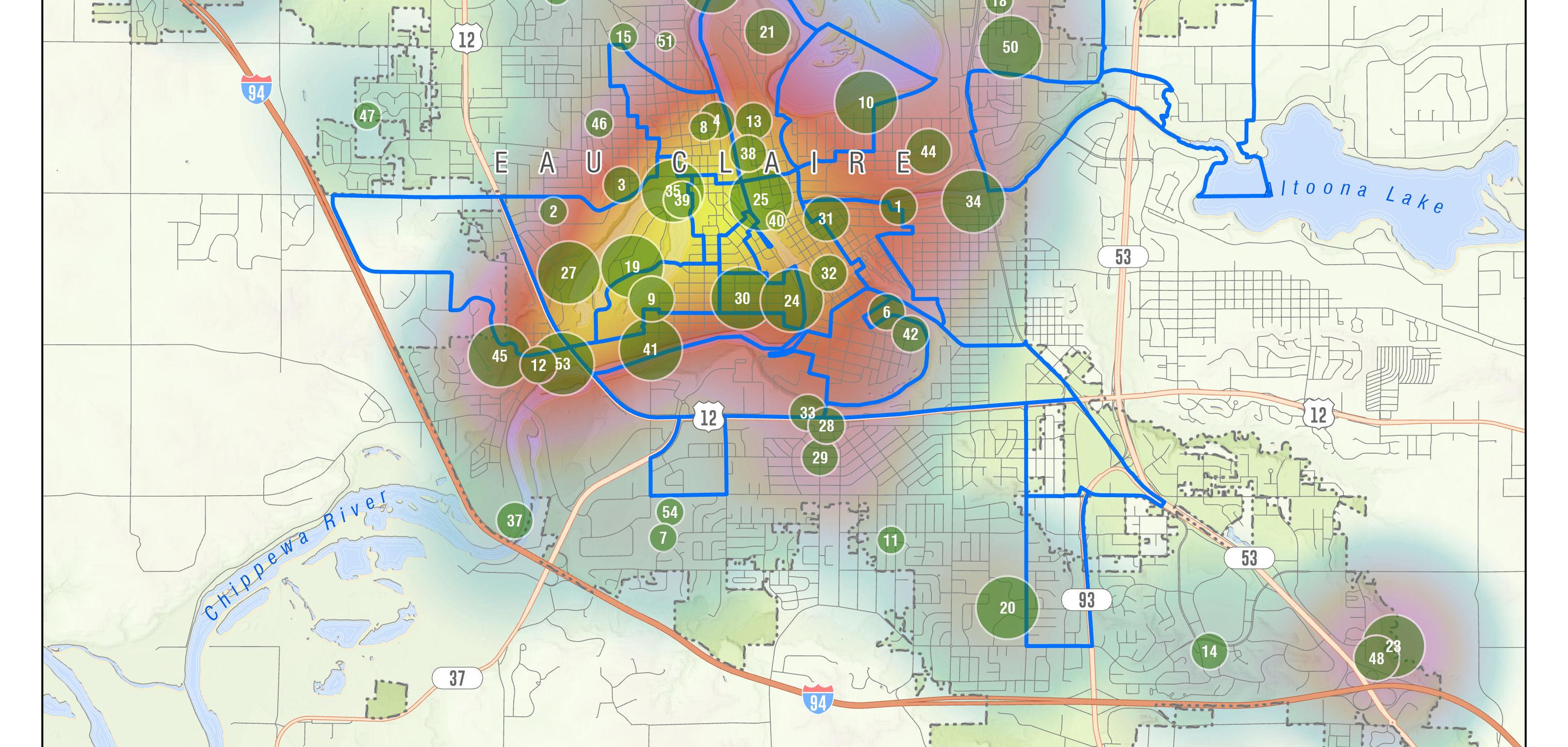


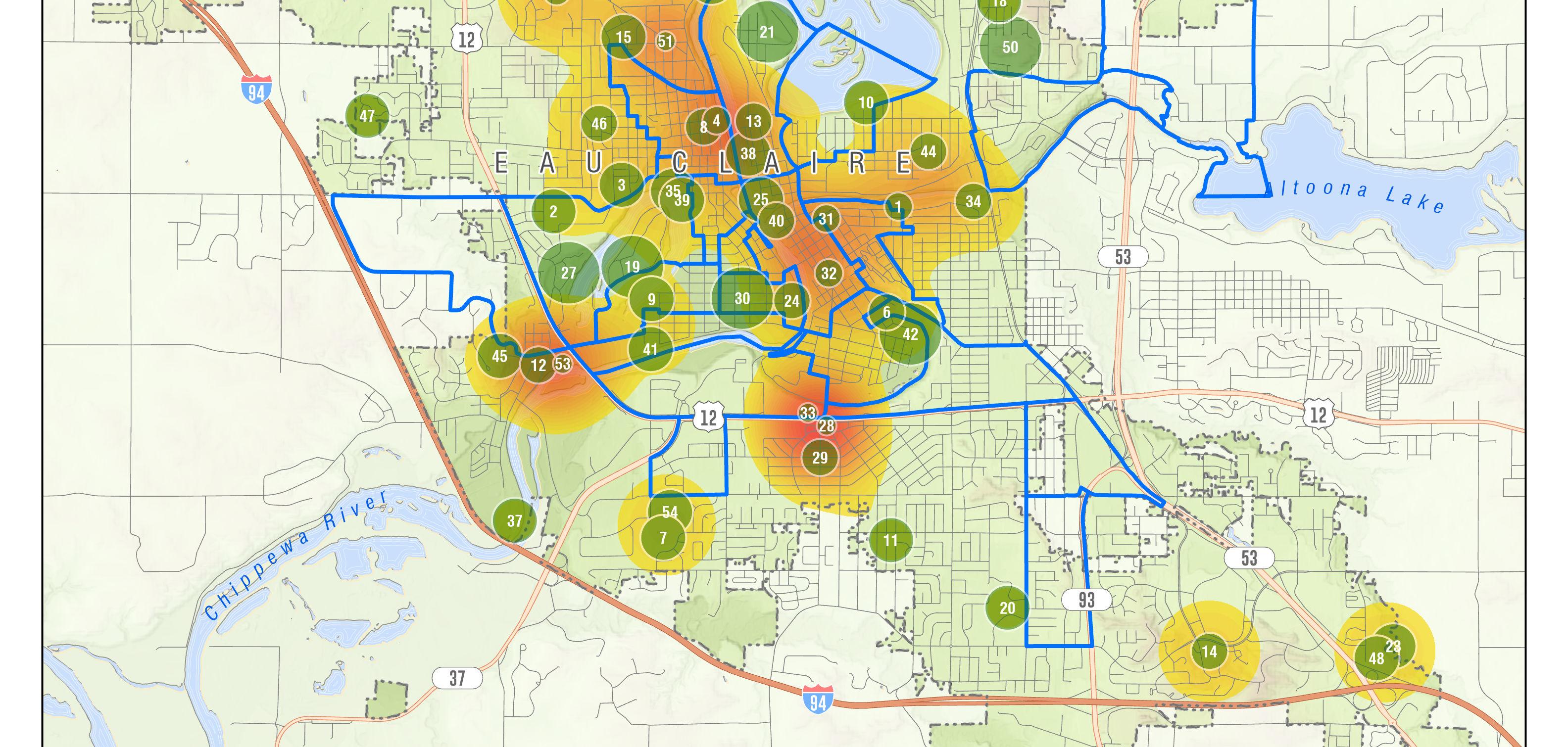
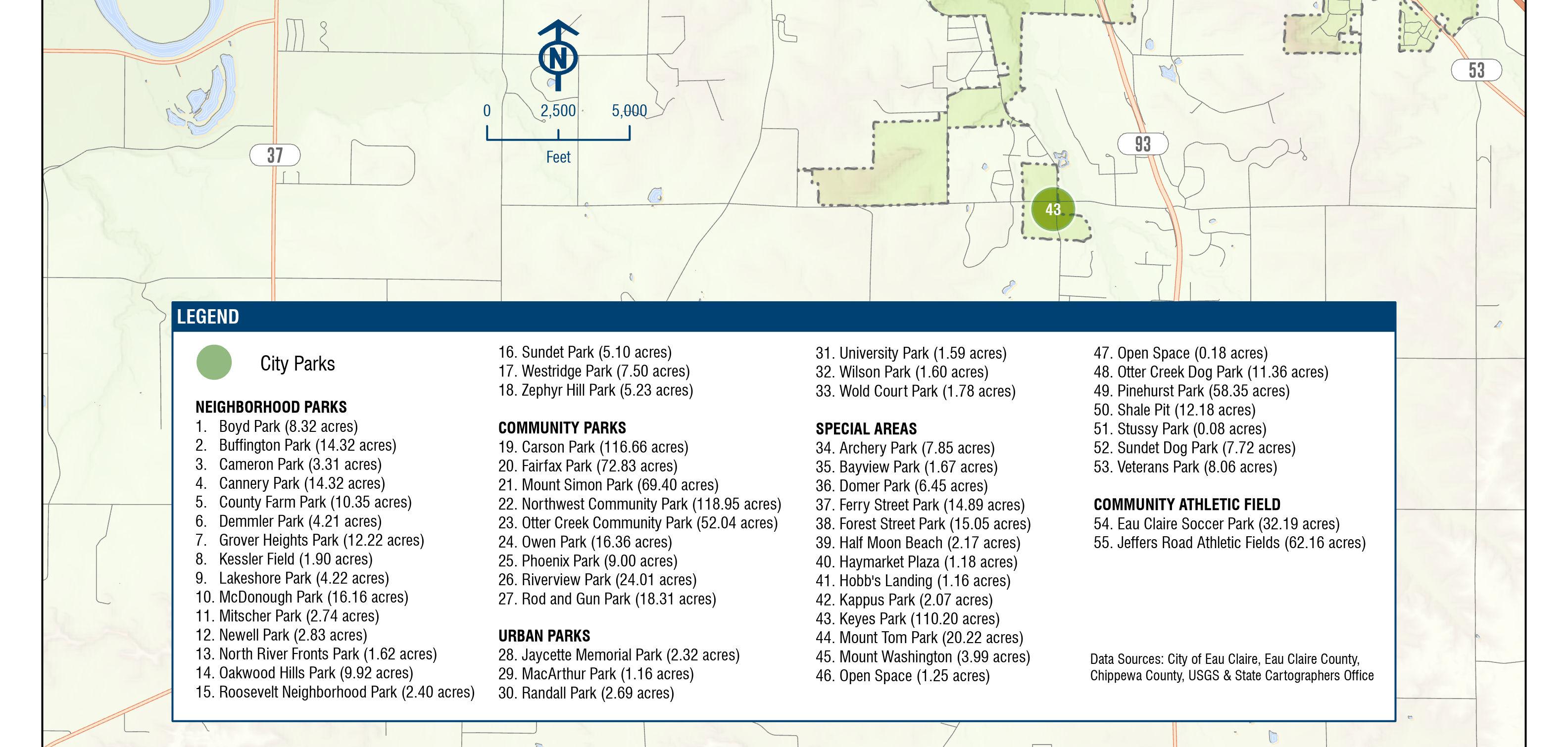
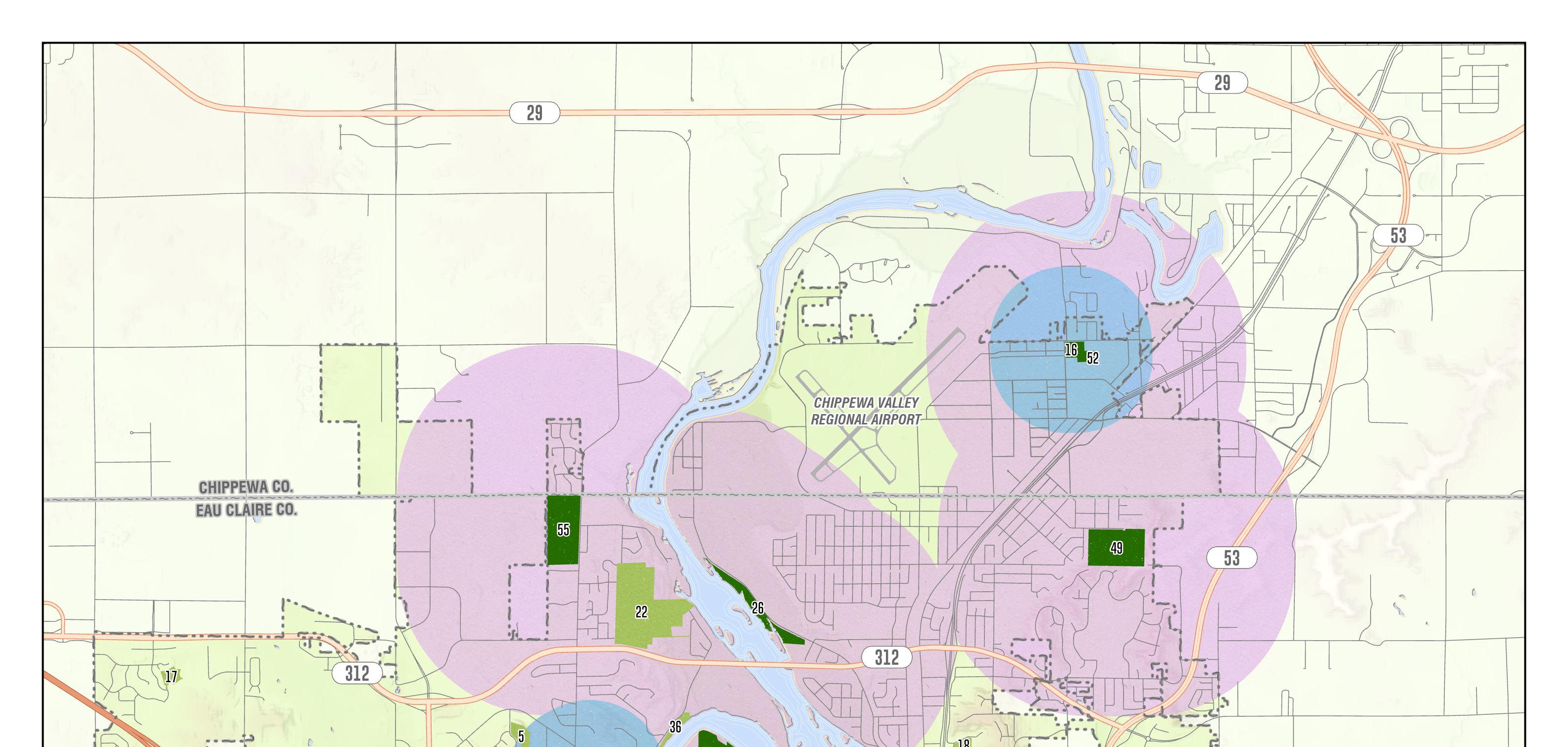
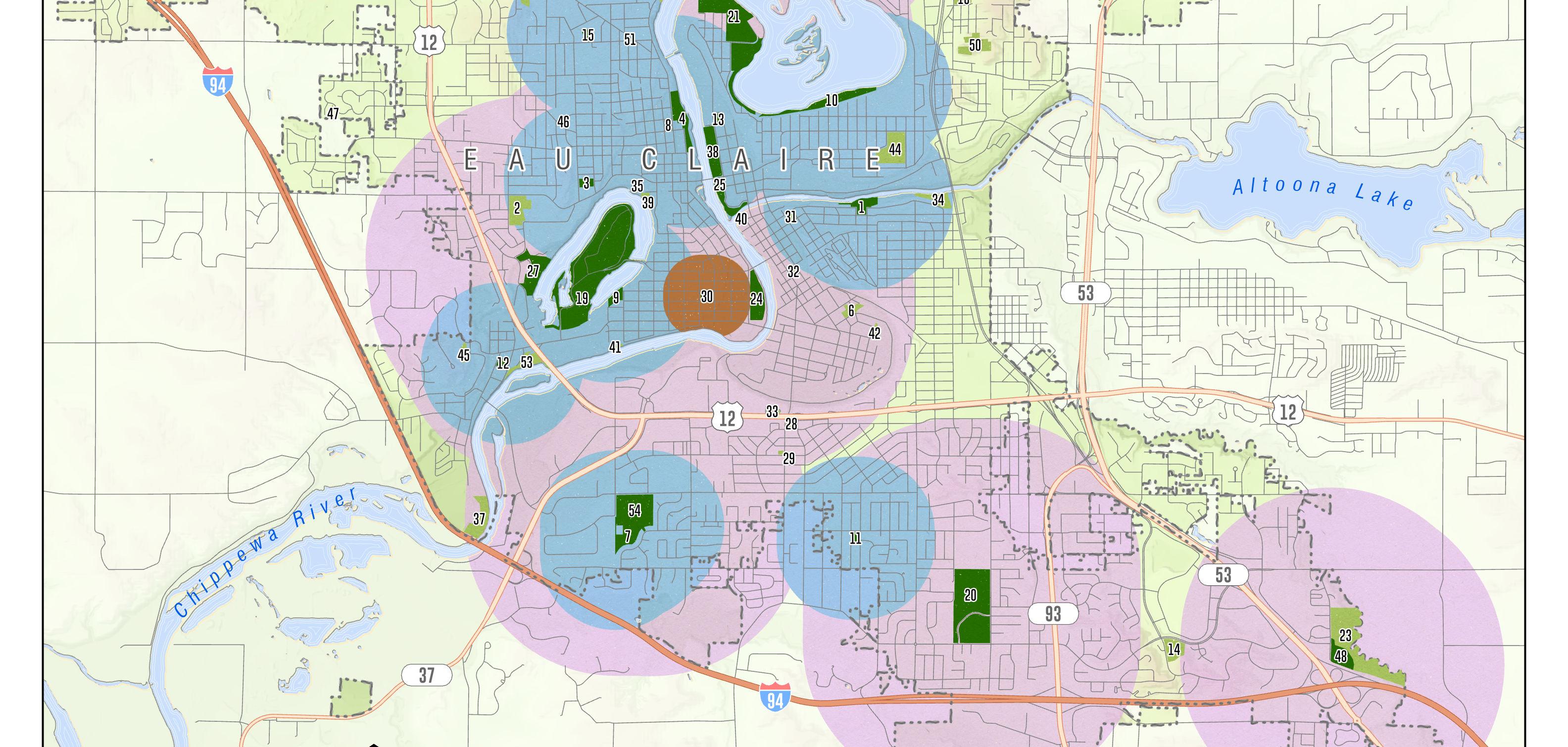
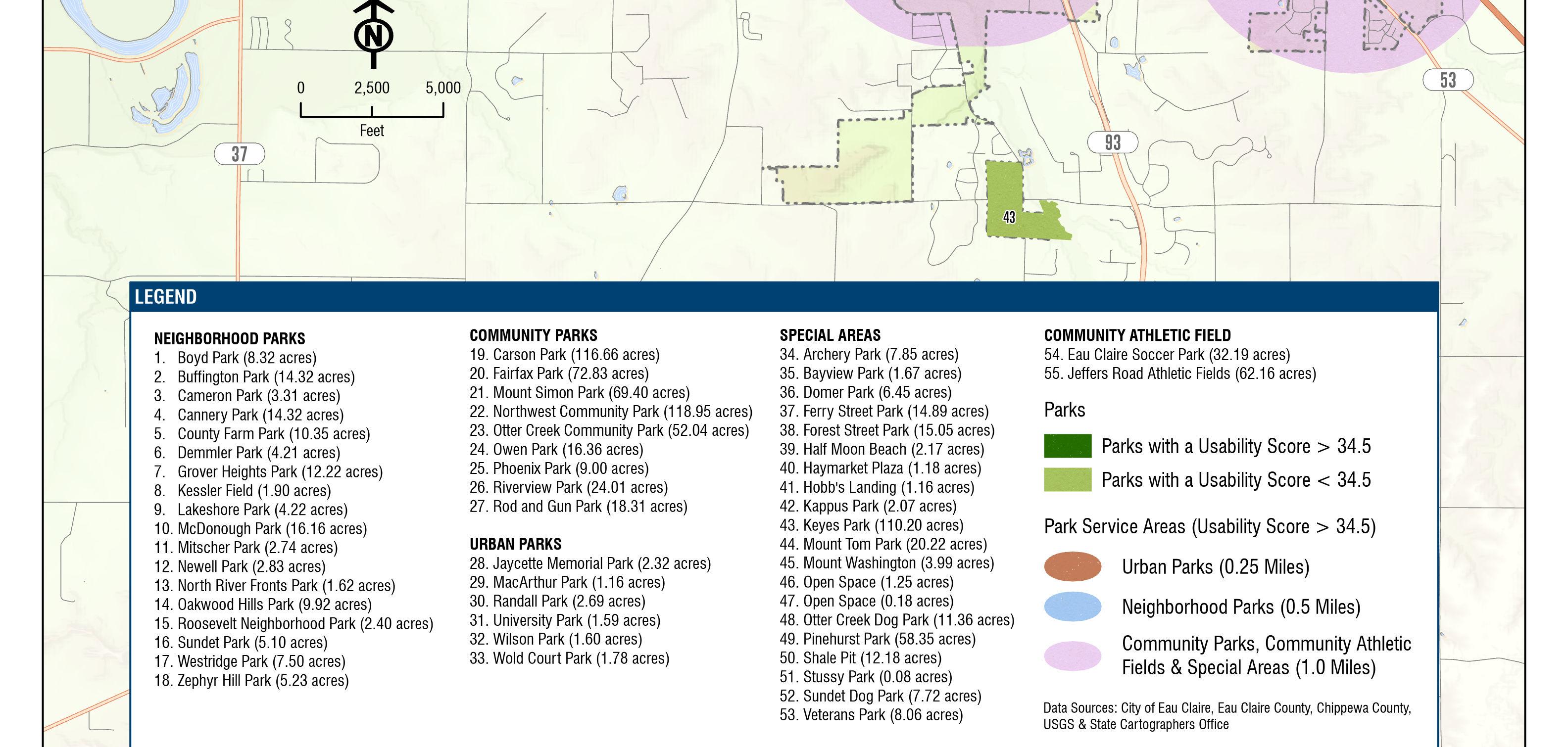






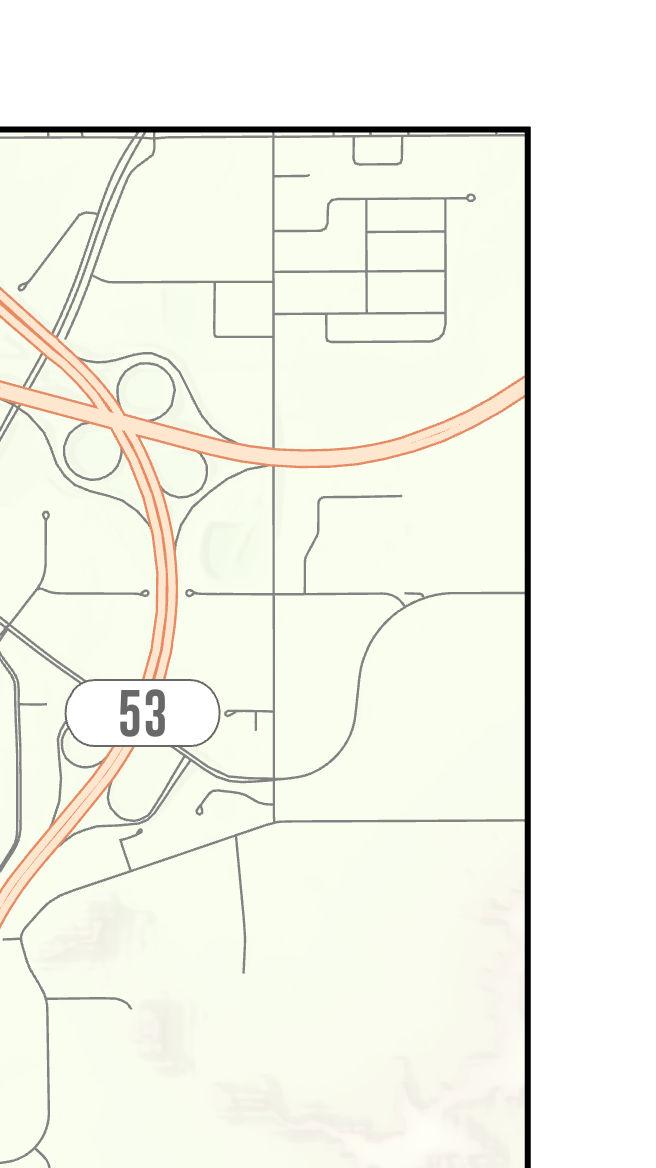

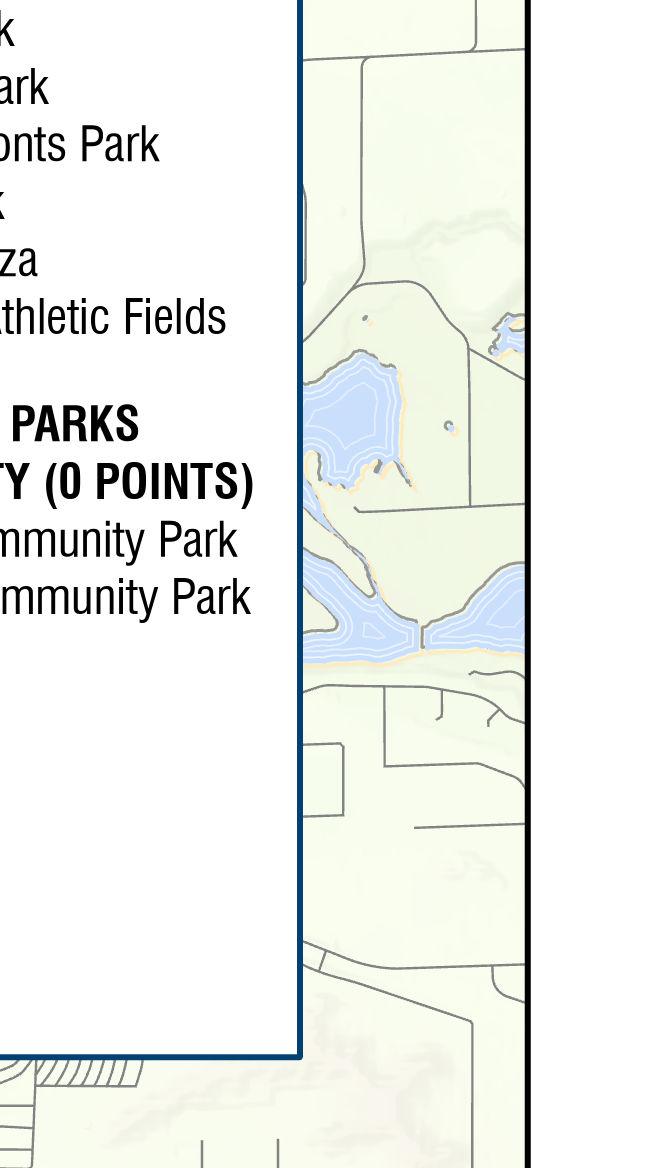
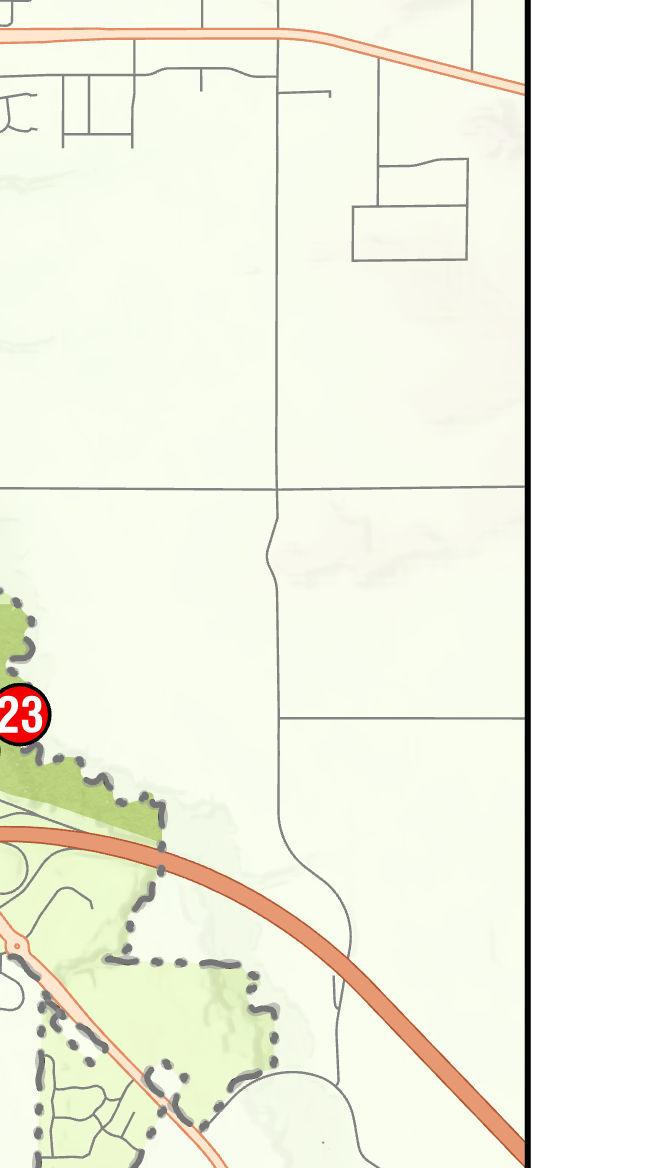
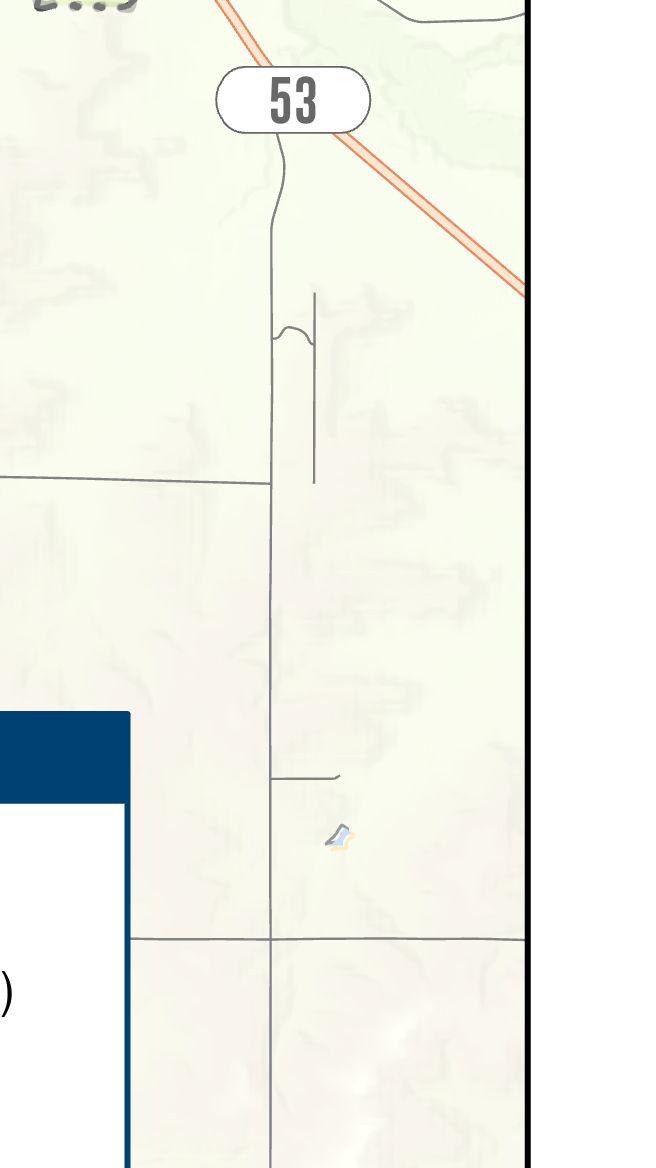

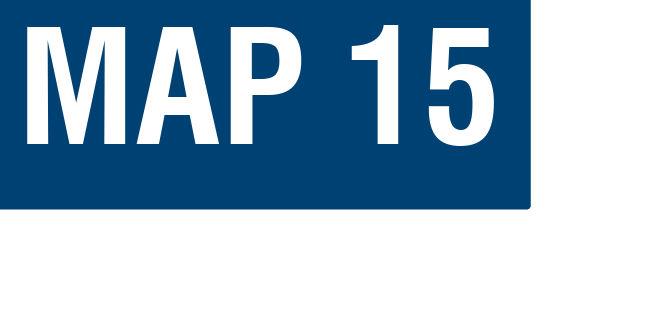






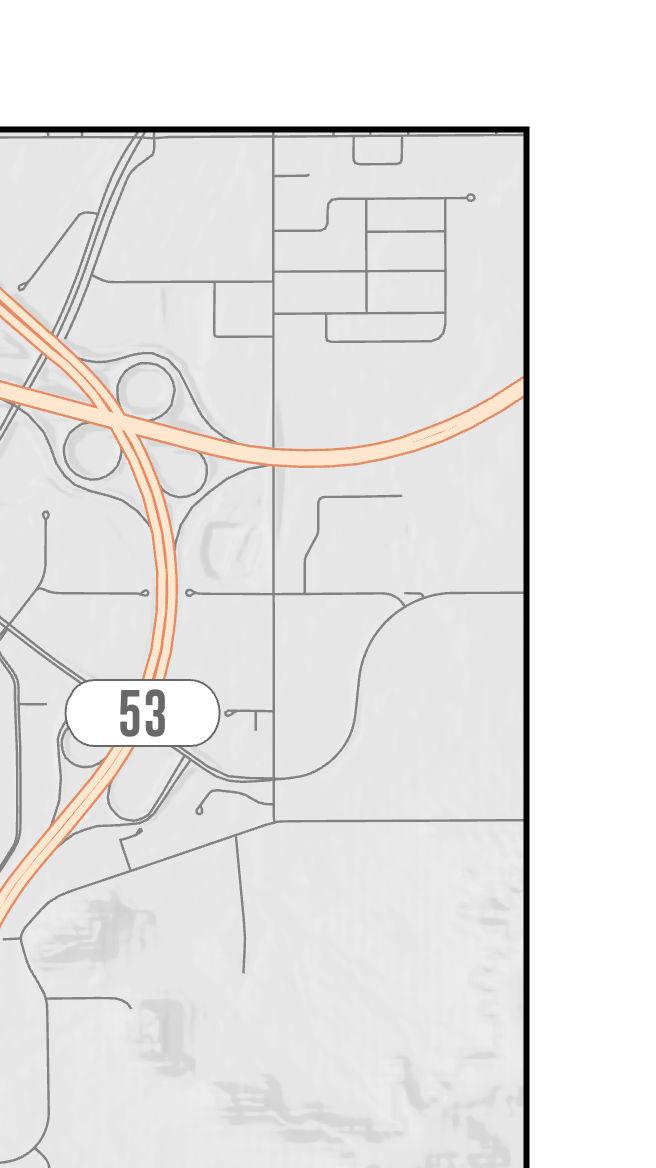
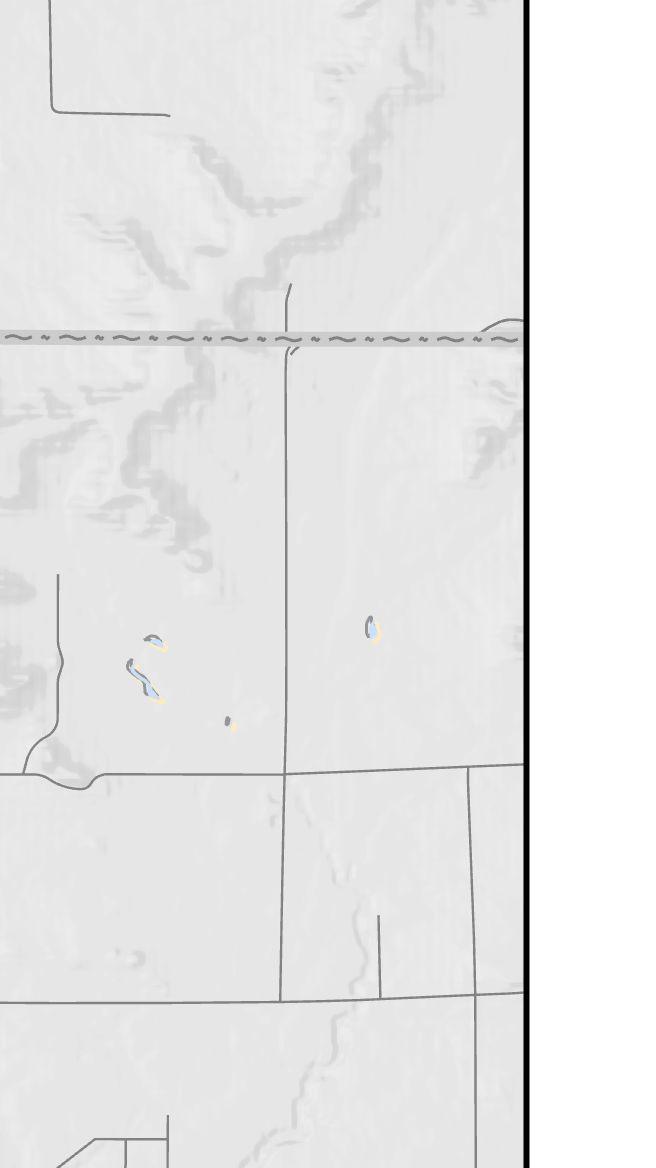

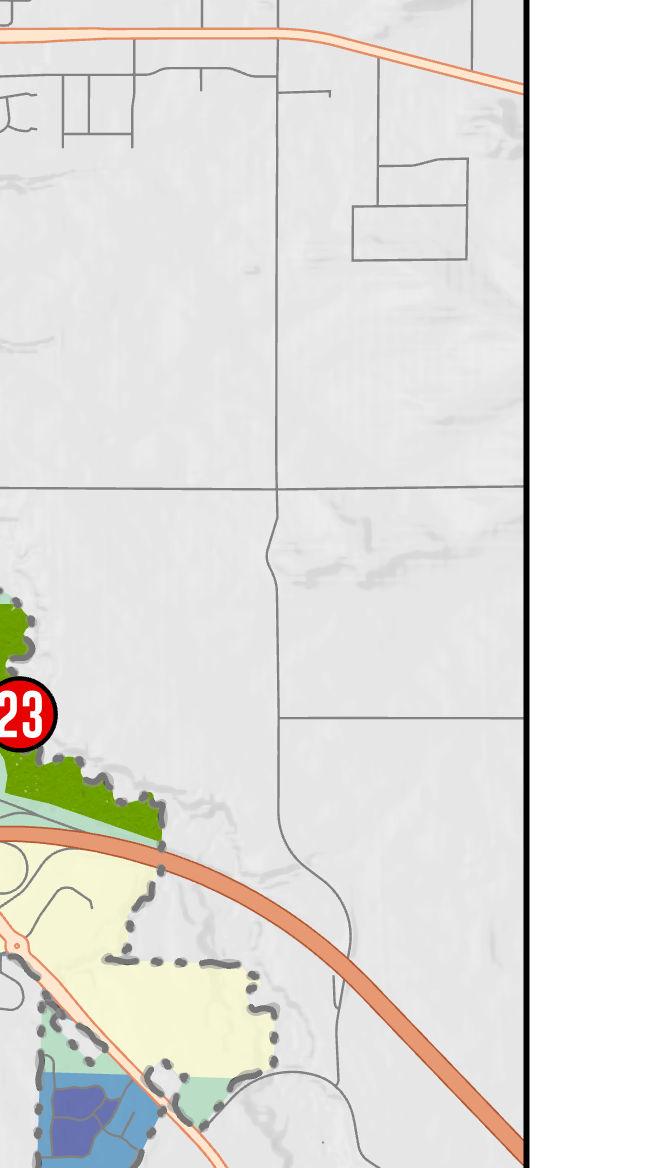
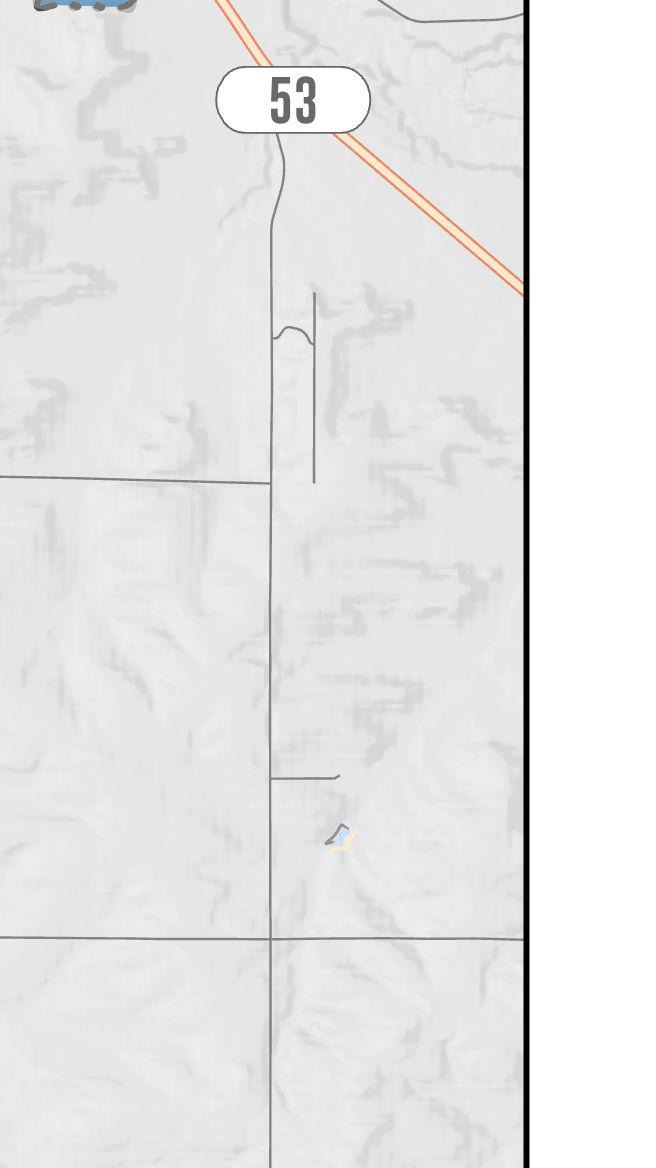
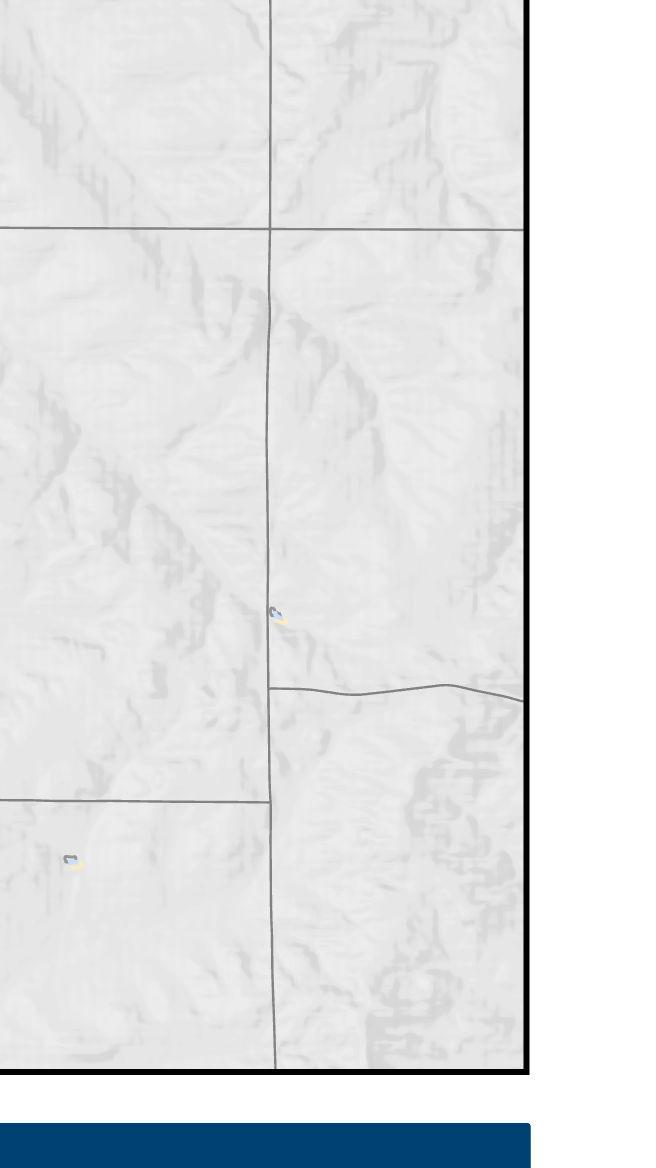








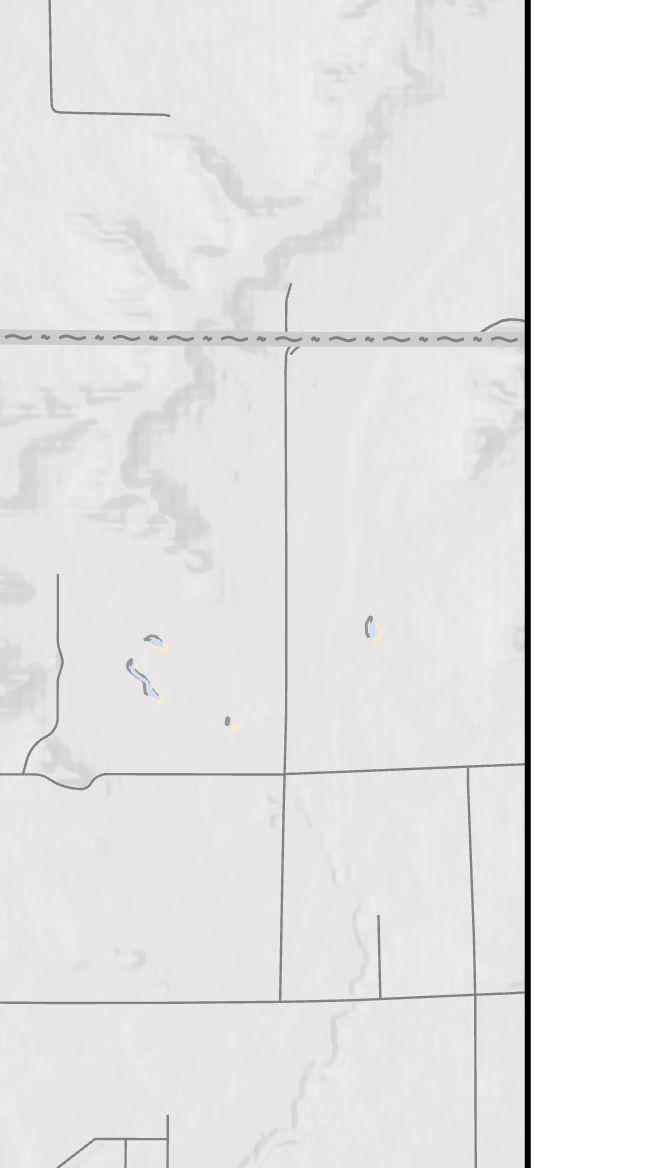
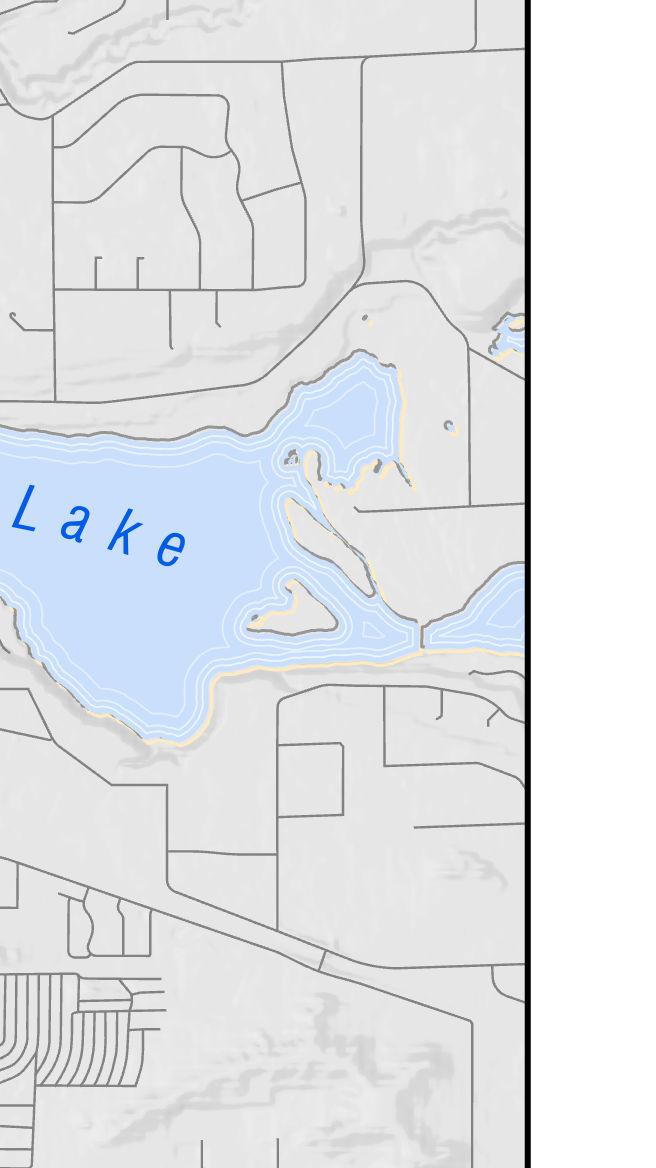

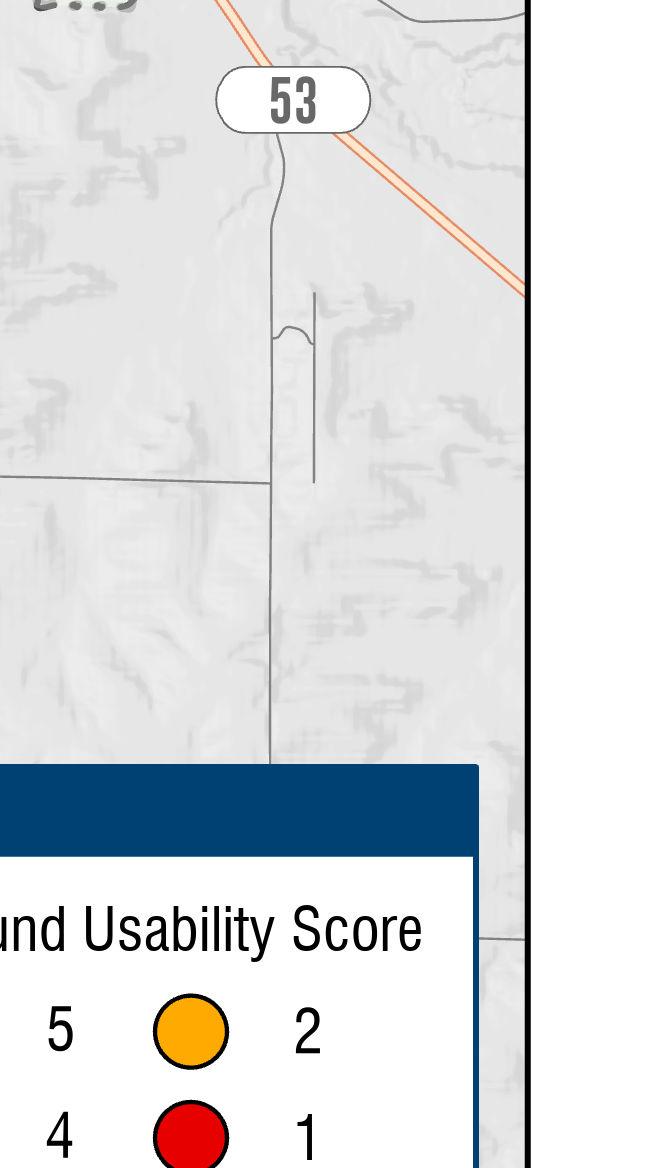



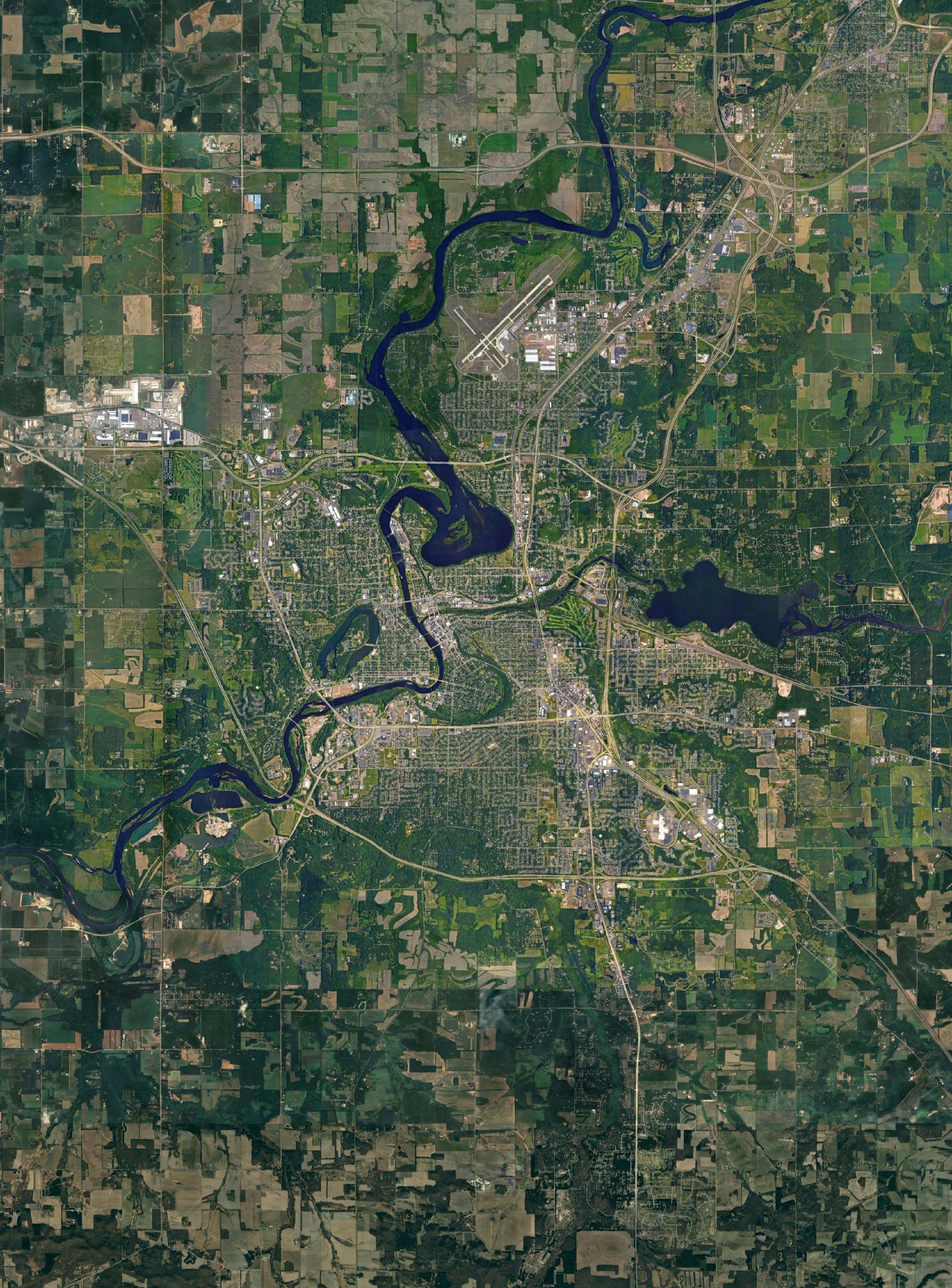


Dear Eau Claire Park User,
A study of the City of Eau Claire Park System is currently underway. The process will result in a Comprehensive Outdoor Recreation Plan that will guide the City with park improvement recommendations over the next 5 years.
We want to hear your thoughts! Scan the QR code stamp to share your hopes and concerns for the future of the park system.
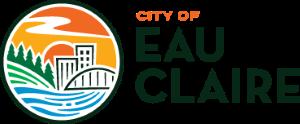
Dear Eau Claire Park User,
A study of the City of Eau Claire Park System is currently underway. The process will result in a Comprehensive Outdoor Recreation Plan that will guide the City with park improvement recommendations over the next 5 years.
We want to hear your thoughts! Scan the QR code stamp to share your hopes and concerns for the future of the park system. SHARE YOUR THOUGHTS!




that people would like to see
Natural Elements
The items below are listed in order of priority based on community feedback
that needs the most improvement
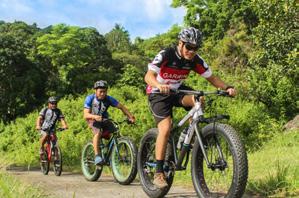
Play
Restrooms
Shade
Bike Facilities
Sports Courts
Dog Amenities
Indoor Recreation
Activity Lawn

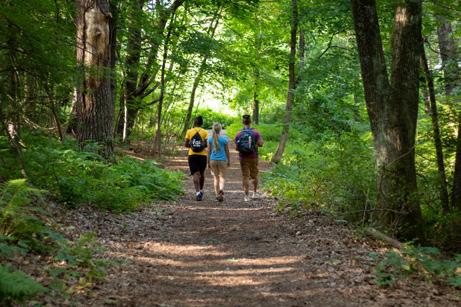
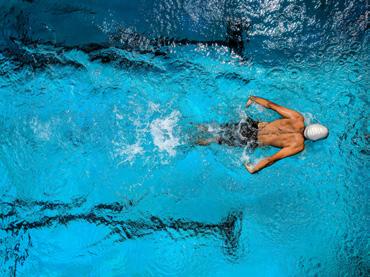

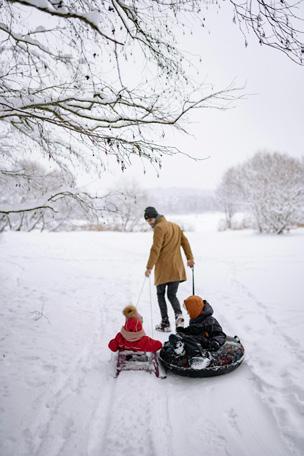

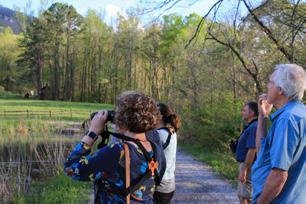

Biking Facilities
Paddle Sports / Tubing
mentioned at the previous engagement

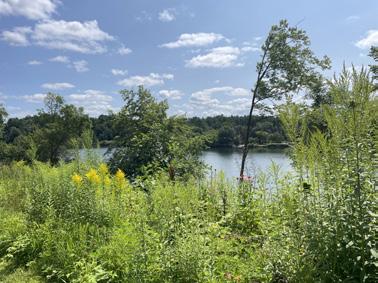
Walking Trails
Swimming Pools / Aquatics
Playgrounds
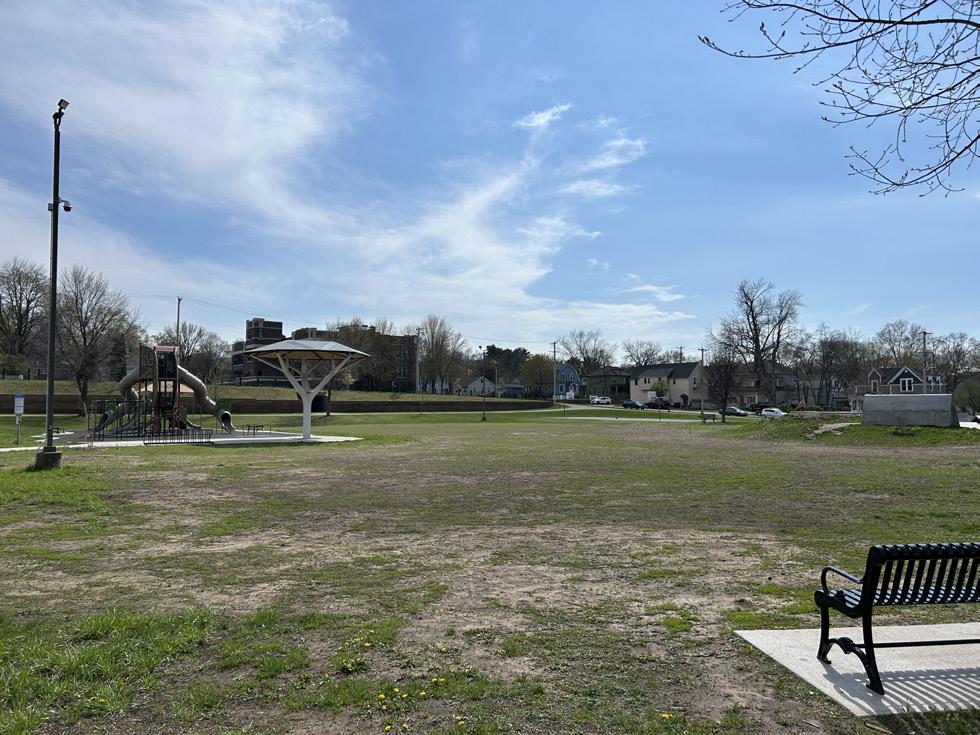
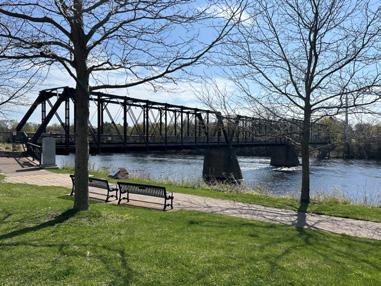
Sledding Hills
Water Access
Wildlife Observation
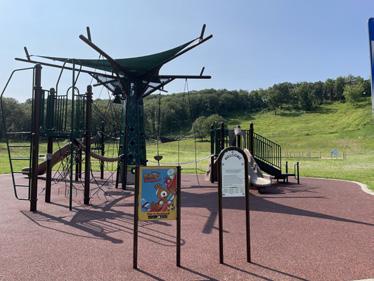
and Gun Park
Park
Phoenix Park
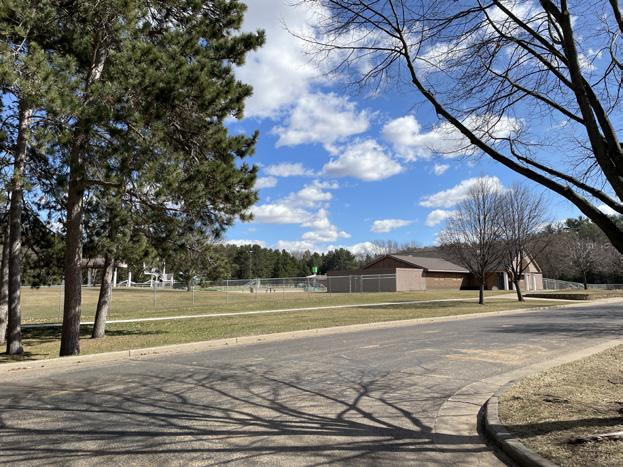
Seating

Community Gardens
Skate Parks
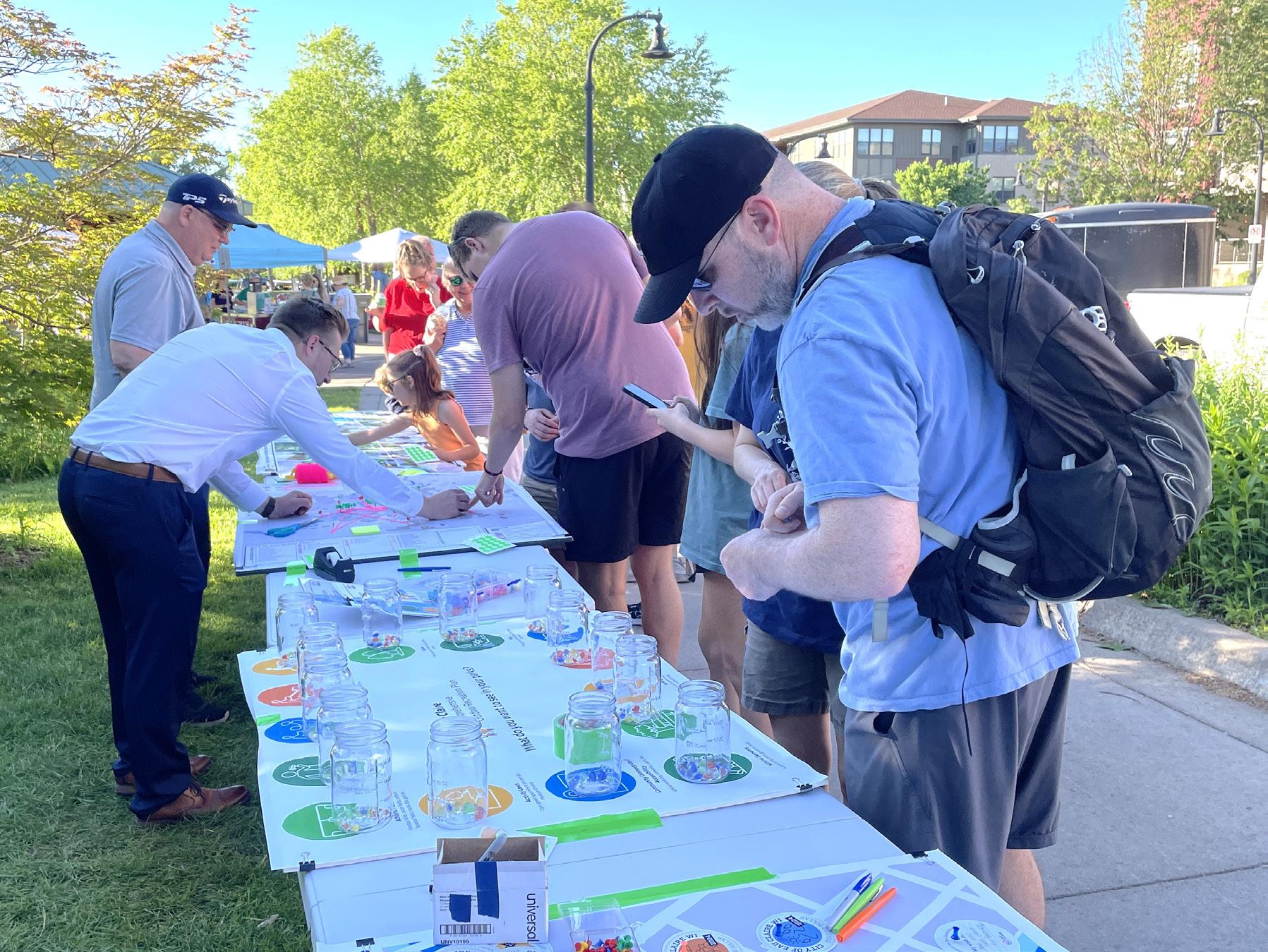

to improve the park system
• More downhill bike parks
• E-bike rental near parks
• More skiing and biking
• Fruit stands and water bottle filling stations
• More play equipment and playgrounds
• More kayak rentals
• Outdoor exercise equipment
• For an indoor pool
• Wilson Park fountain to work
• Connecting bike trails for better commute
• More dog parks connected to trails and parks
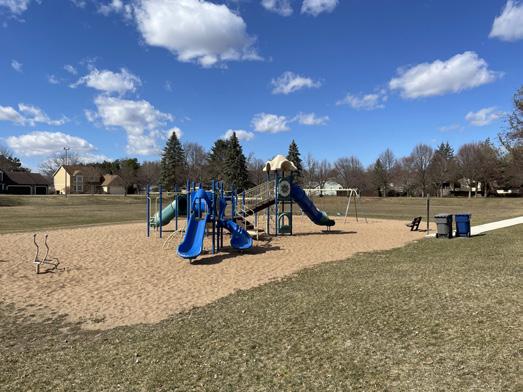
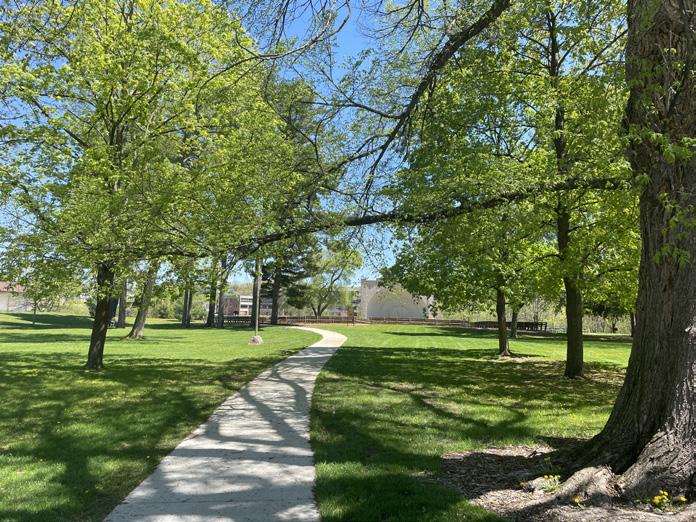
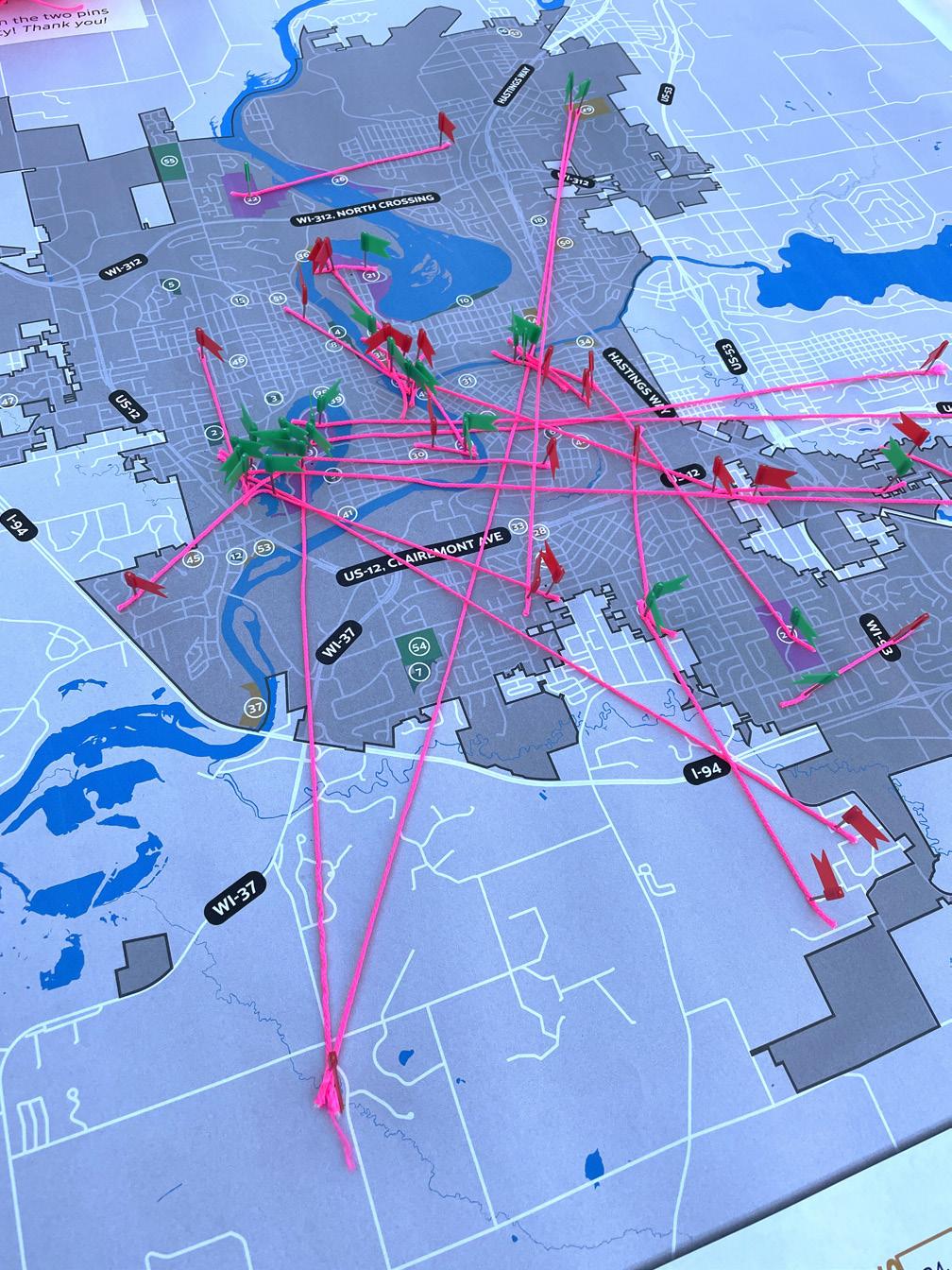
Park
• More splash pads
• More garbages on the trails
• Awesome sledding hills
• An Asian garden with a koi fish pond
• Million dollar playground
• High swinging things to climb and play on
• Ice cream stands
• More sports courts
• More shade in the summer
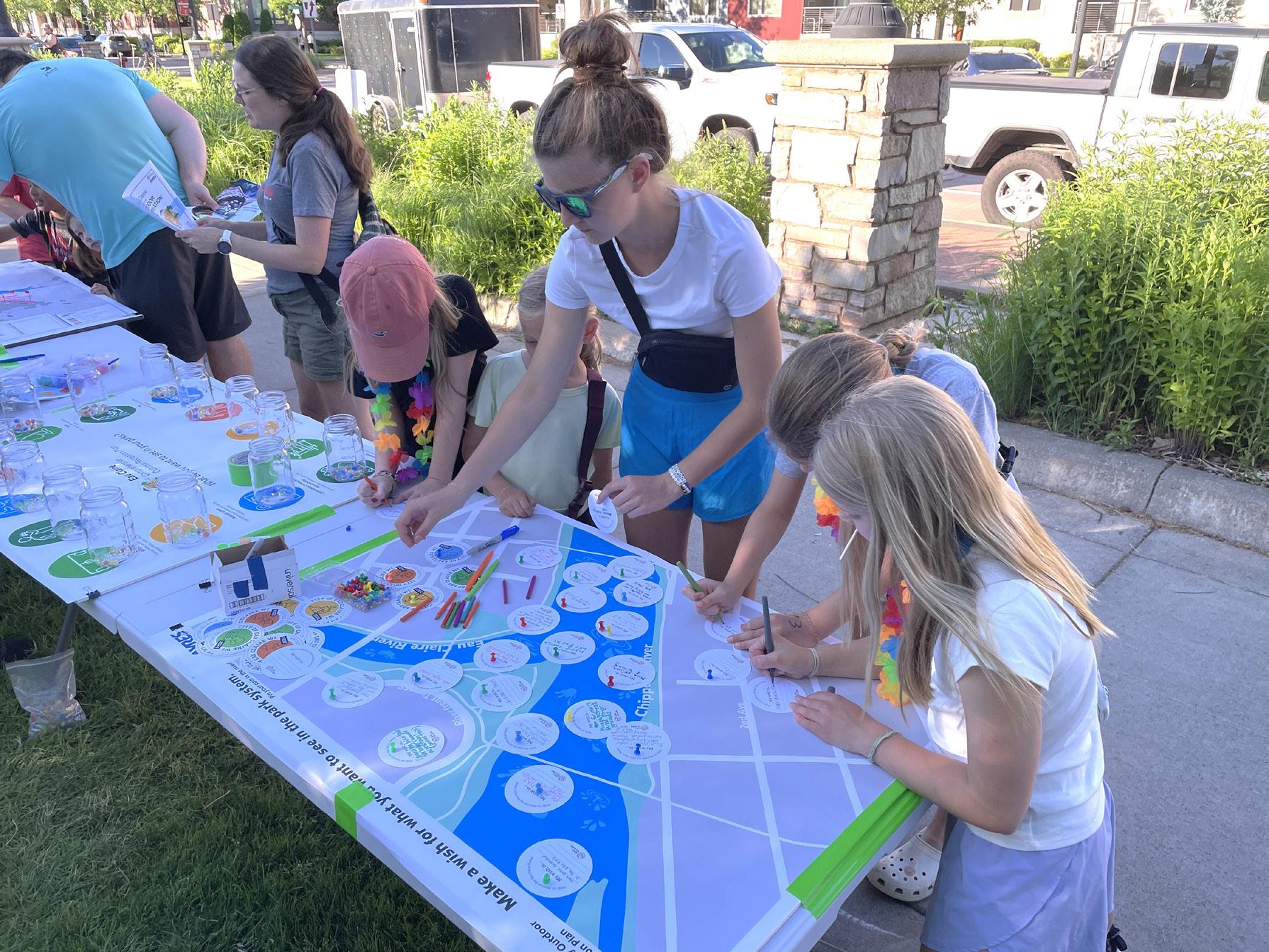


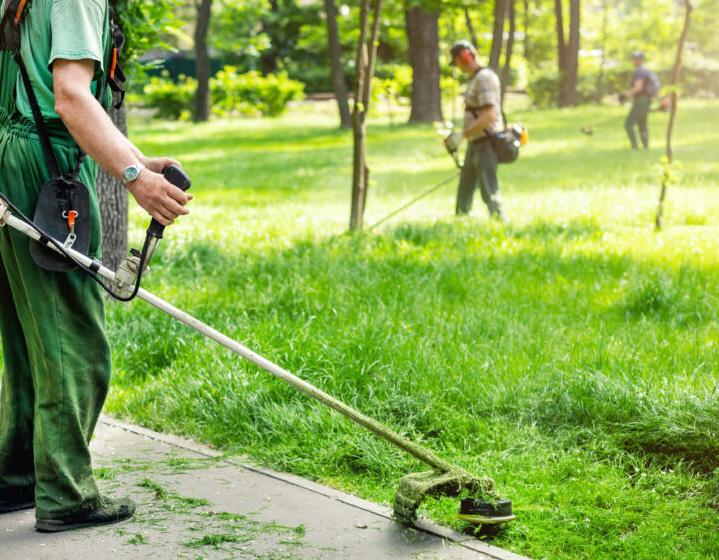
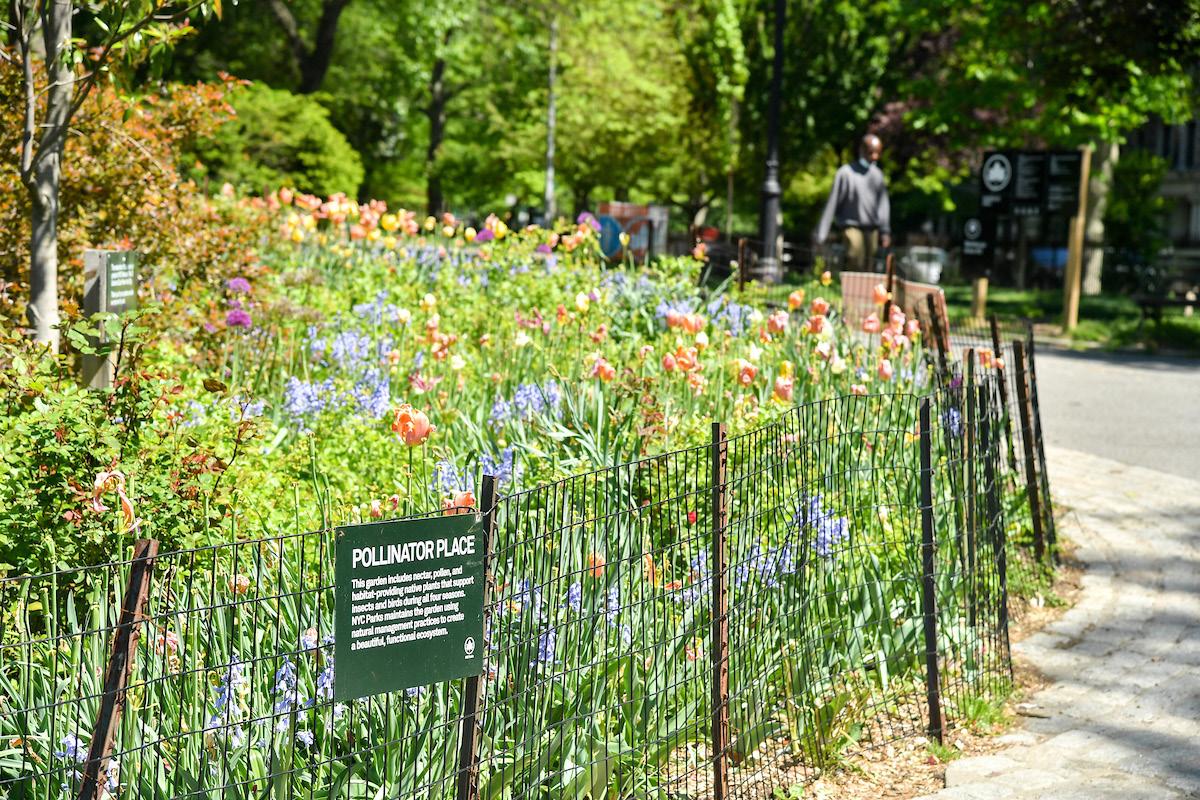
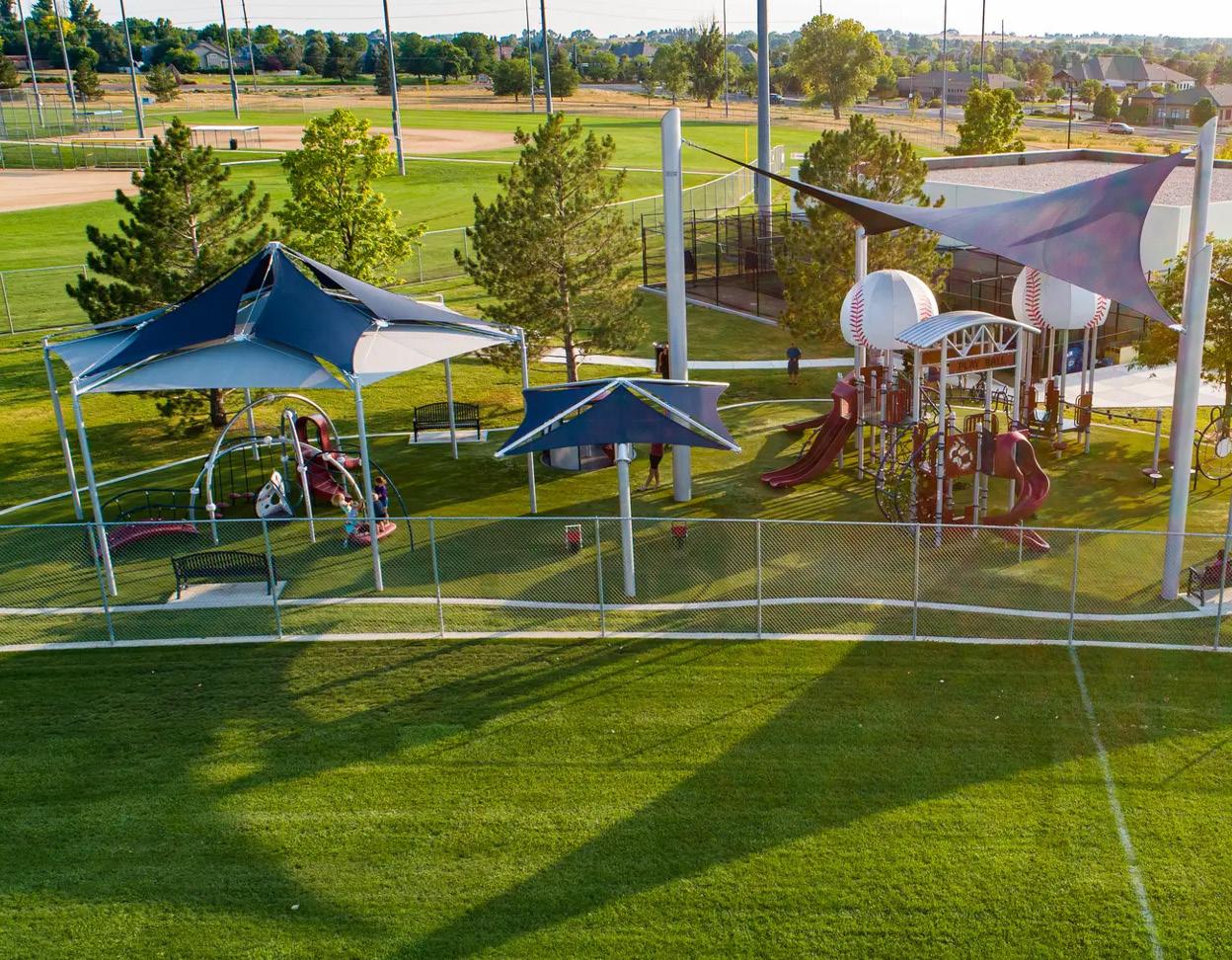
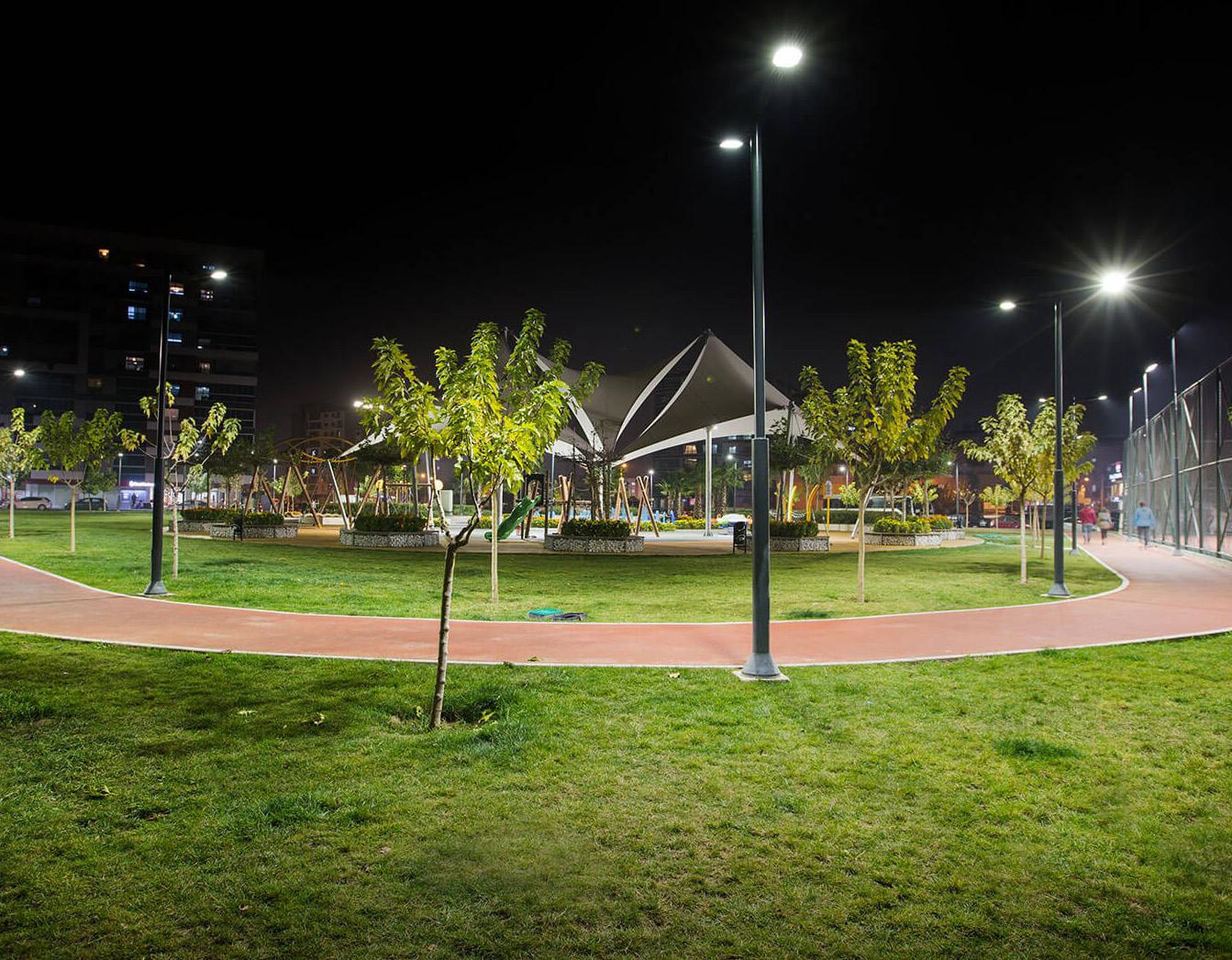
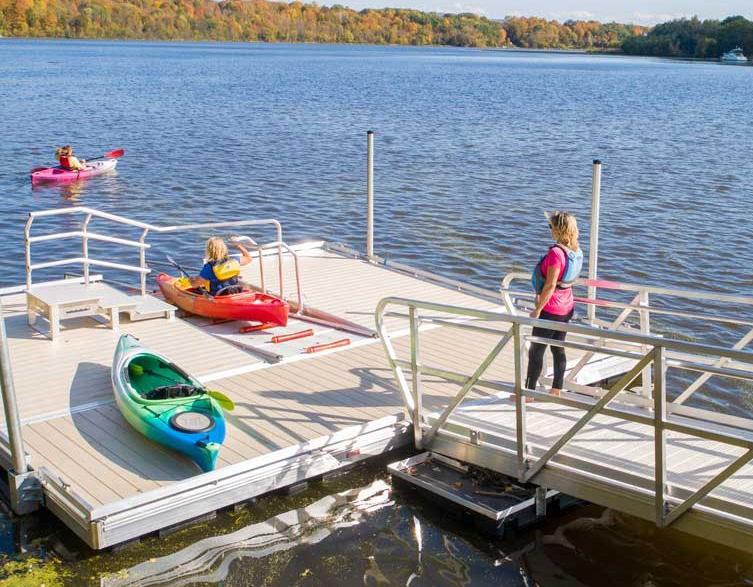
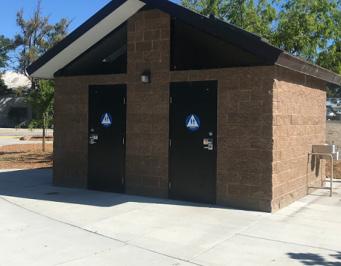
there is a park within walking distance for every resident
community parks are celebrated and programmed with exciting events
our seasons are embraced with year round recreational opportunities
the parks prioritize habitat for urban wildlife
I can learn about nature through educational opportunities
I can travel to parks throughout the city without a car
people of all ages and abilities can enjoy the park system
our parks draw in visitors from across the region
the current parks are well maintained and invested in
the park system continues to grow with new recreational opportunities


MUSIC IN THE PARK
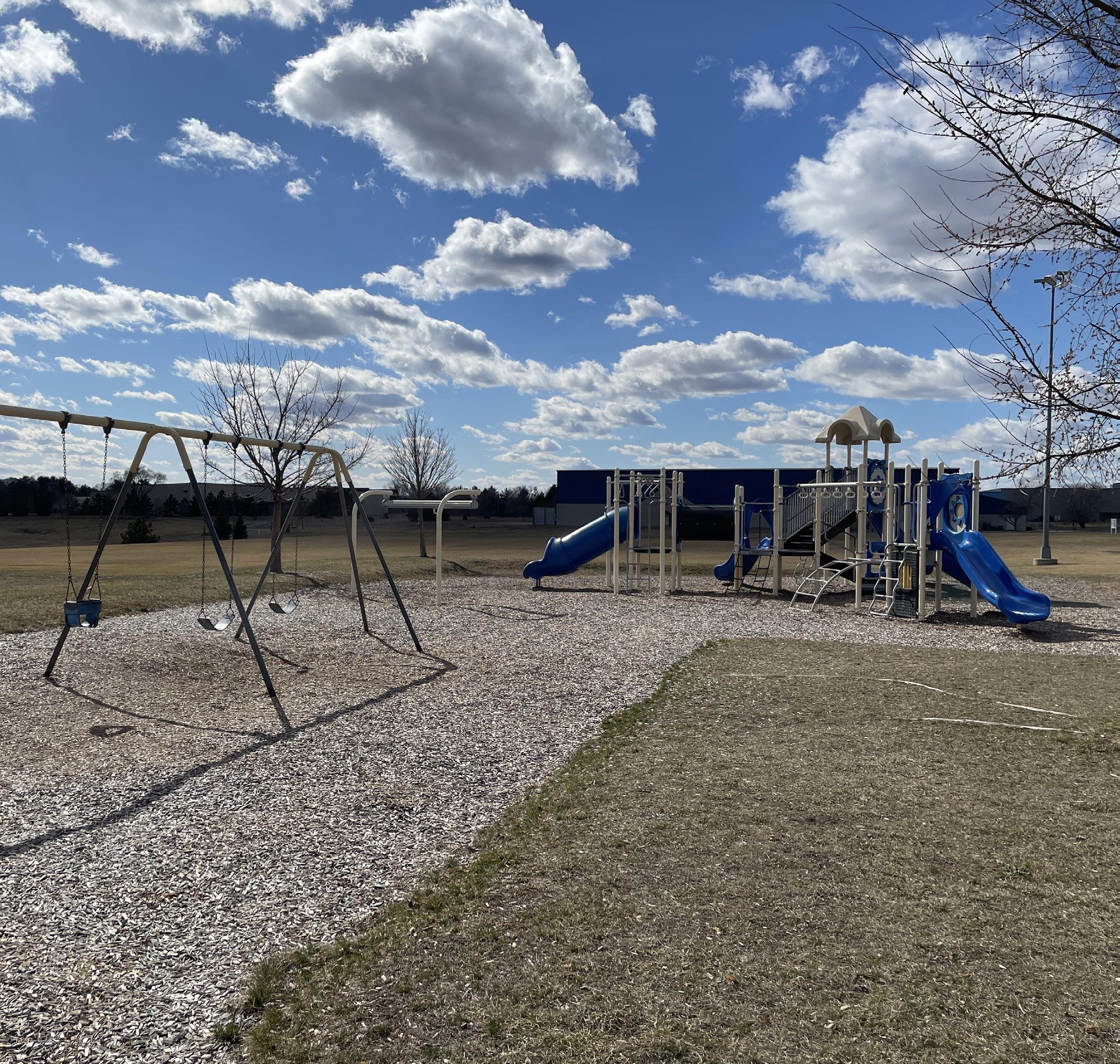
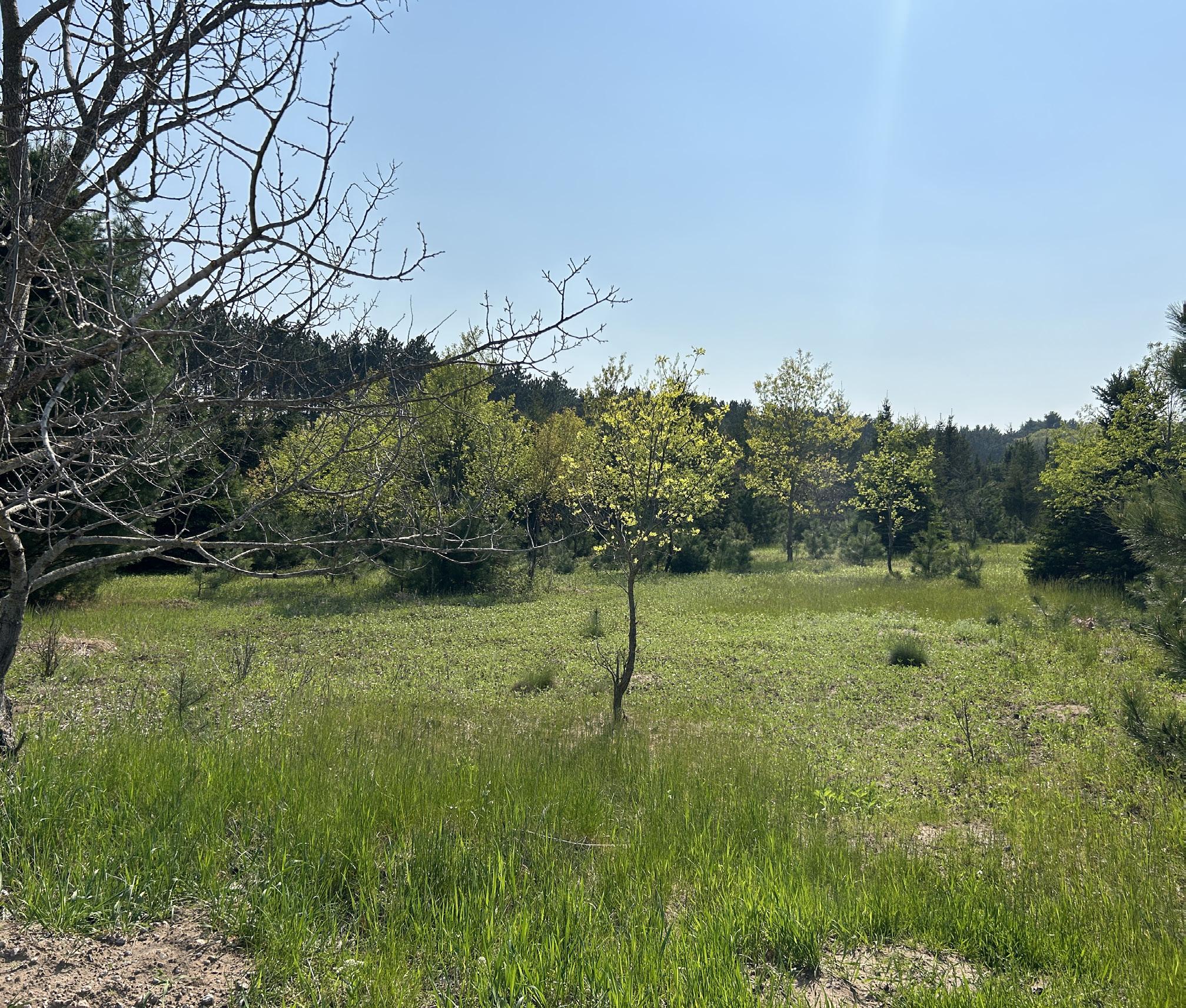
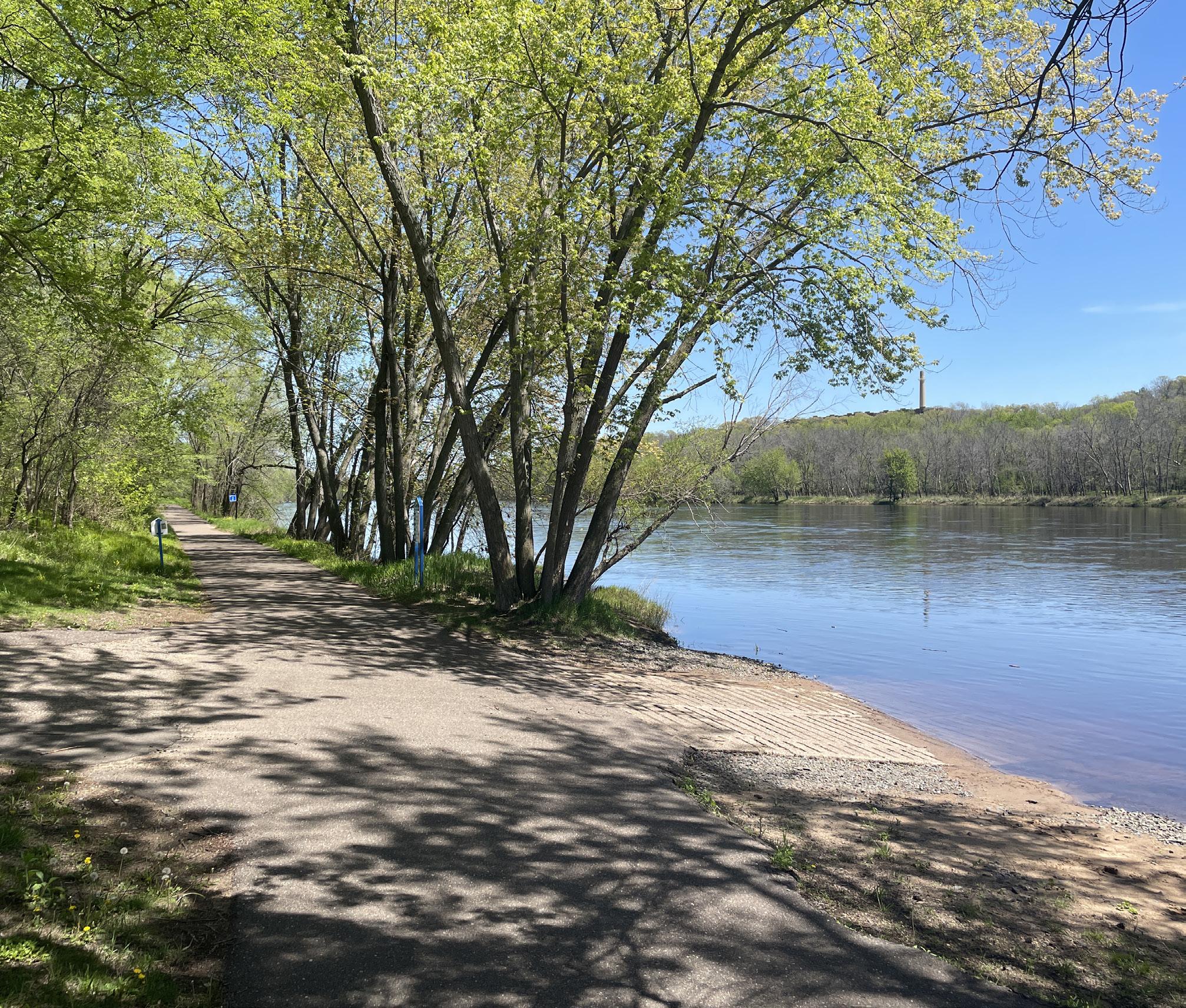
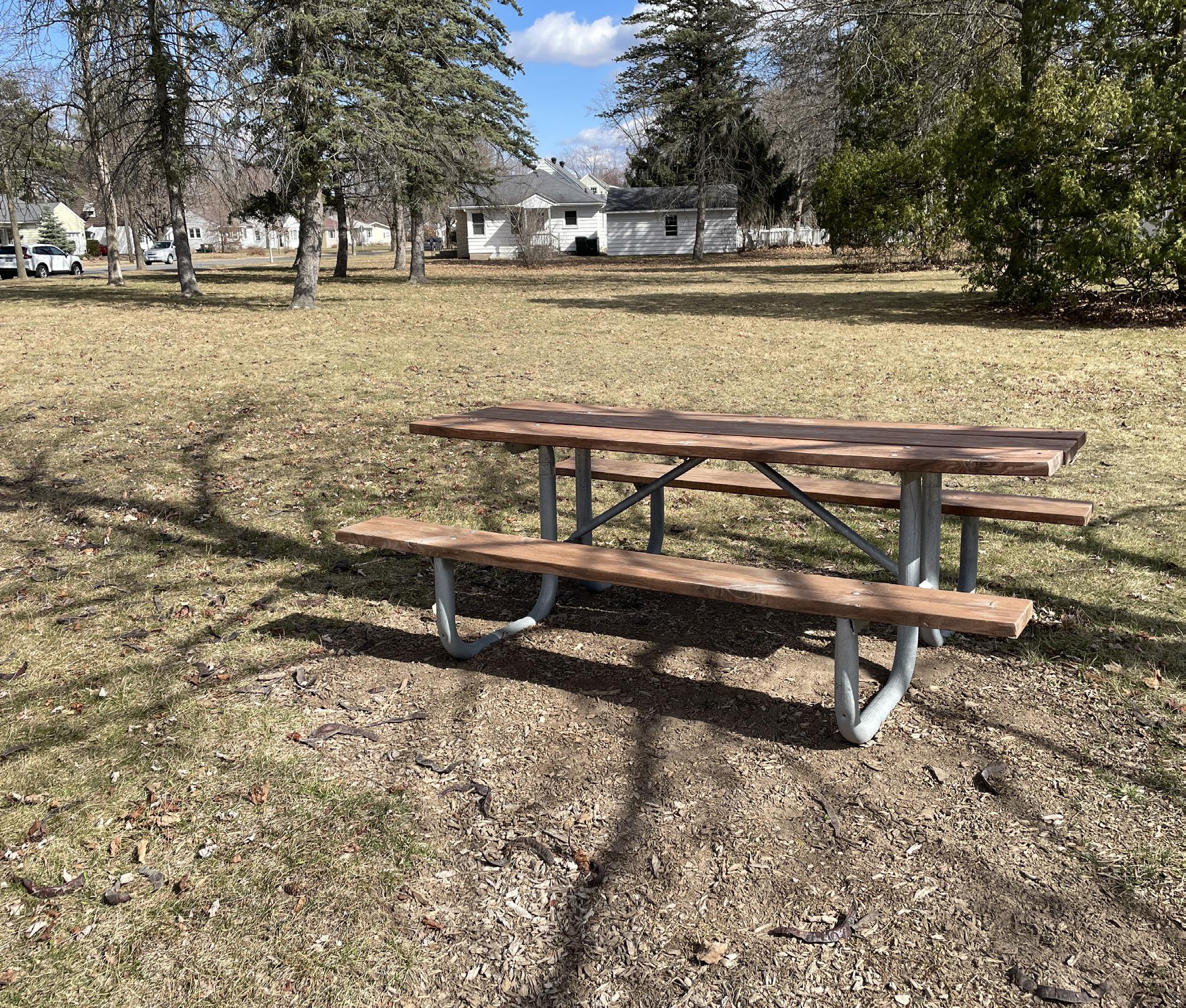


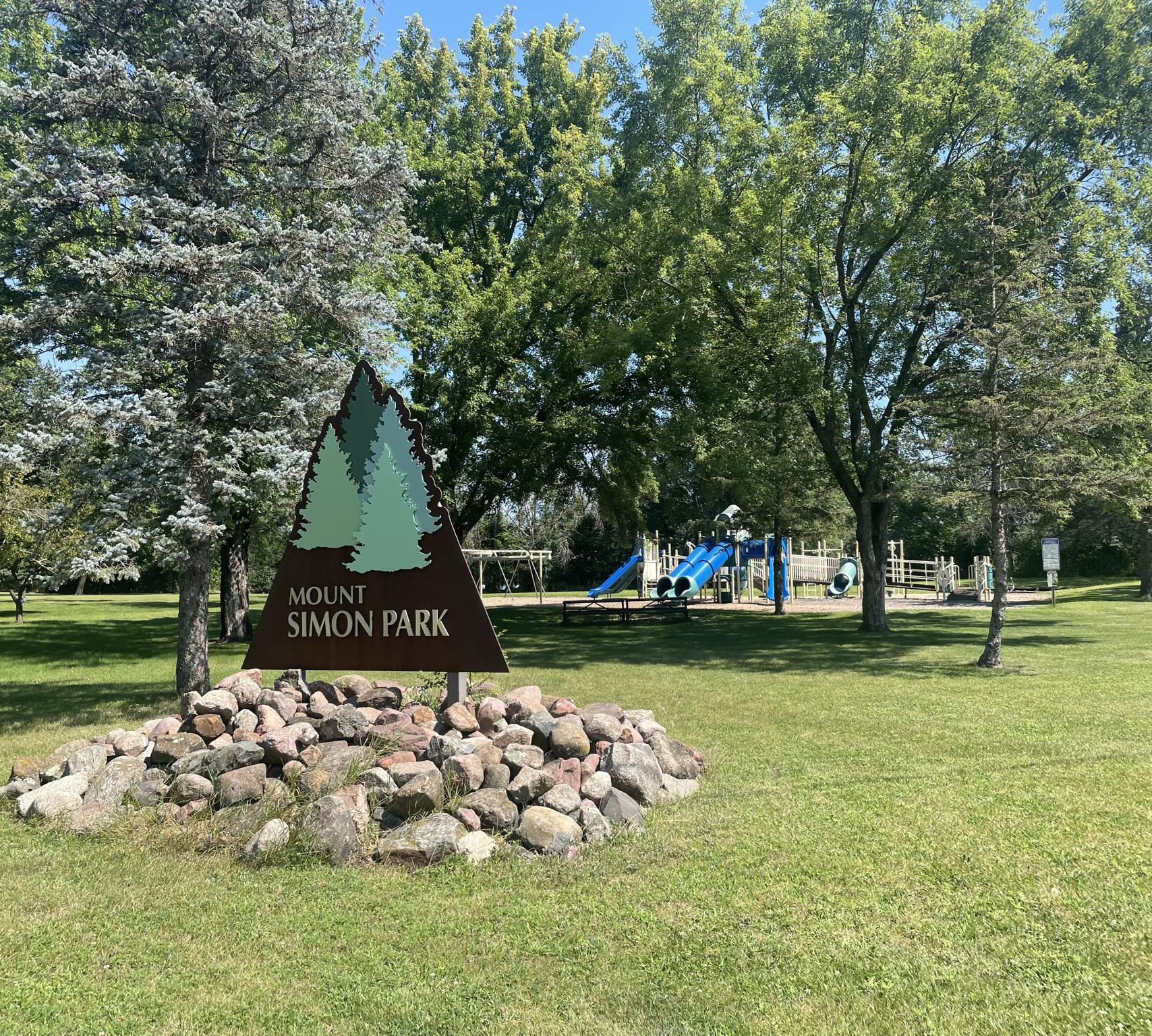
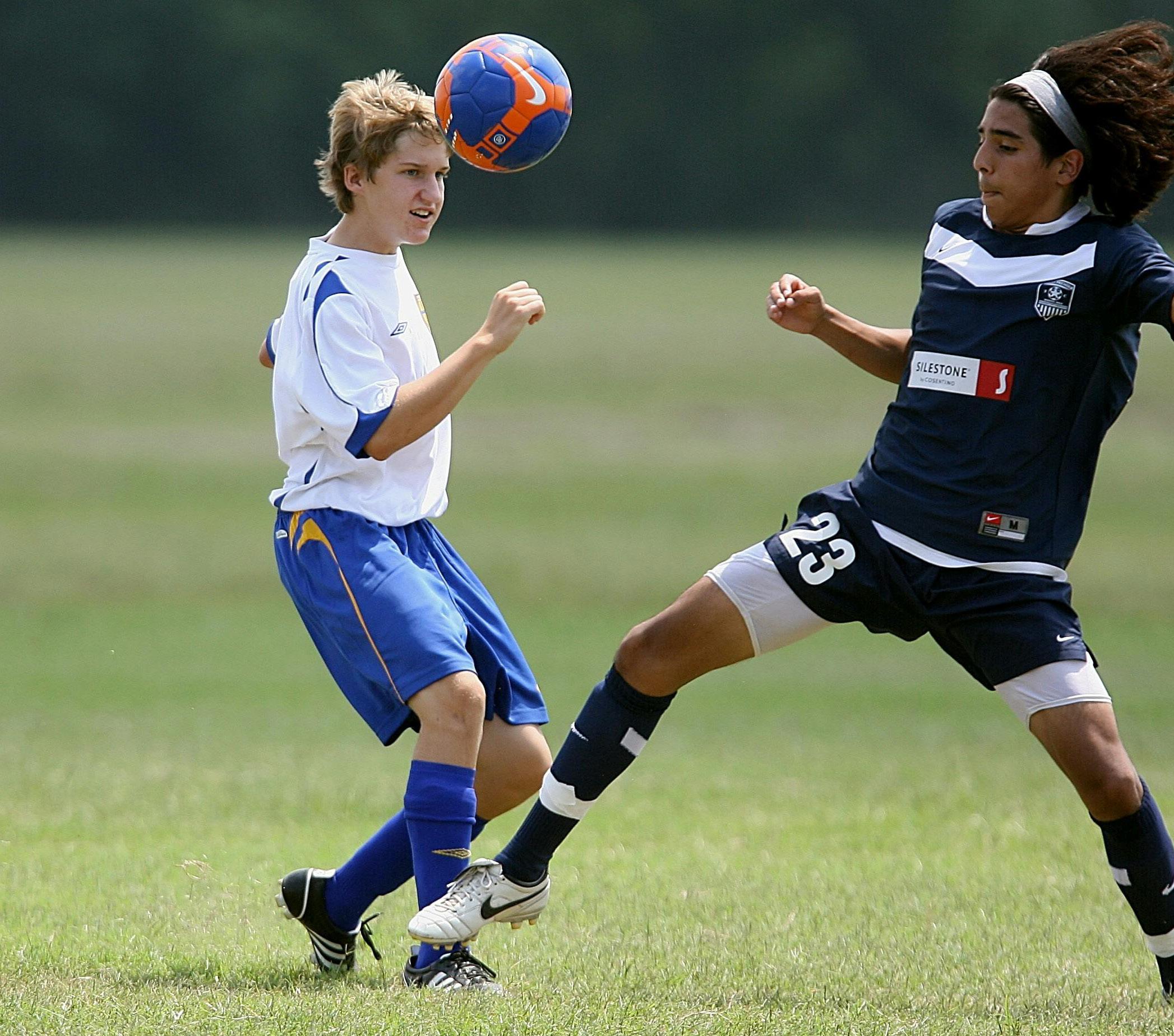
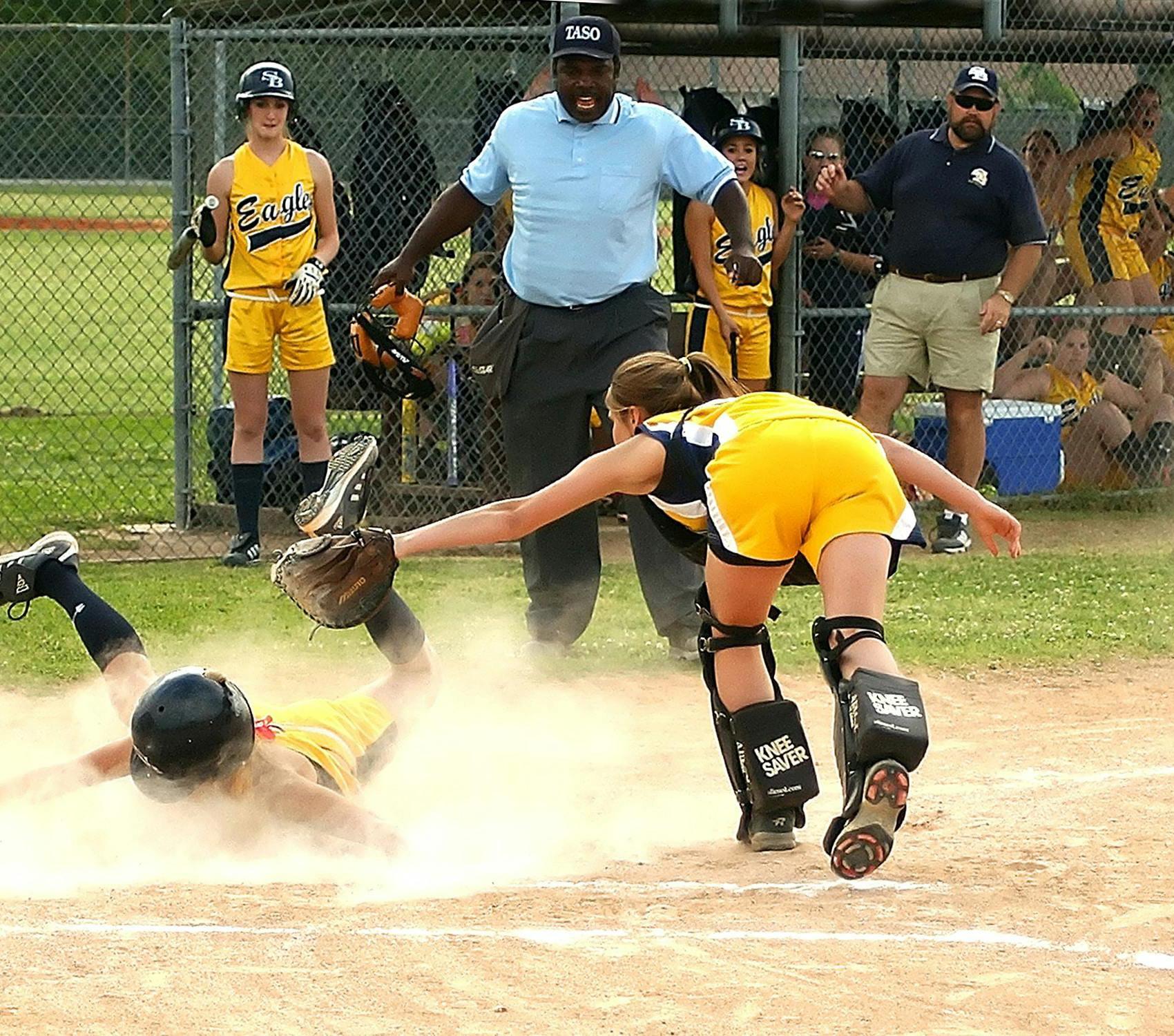
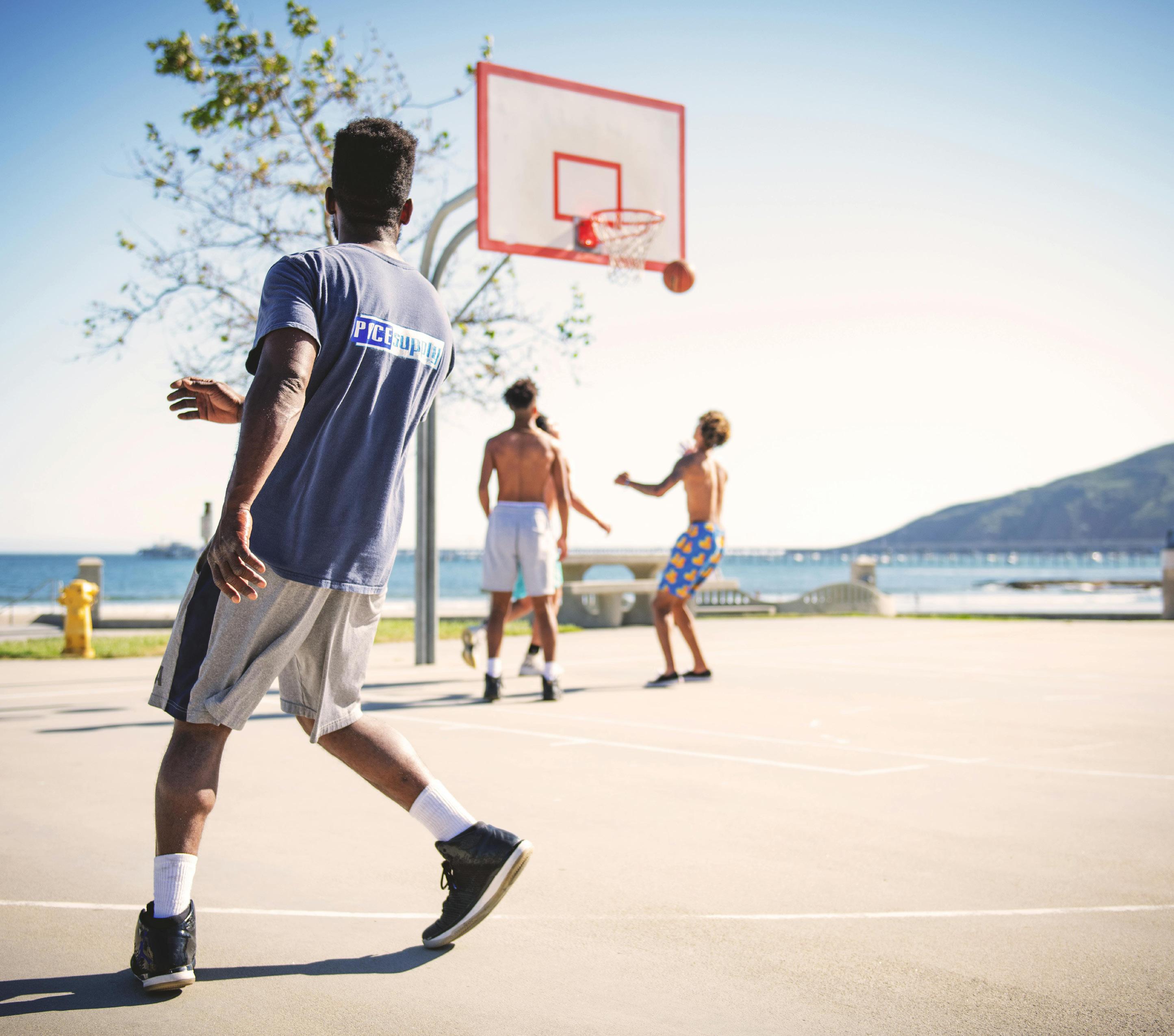
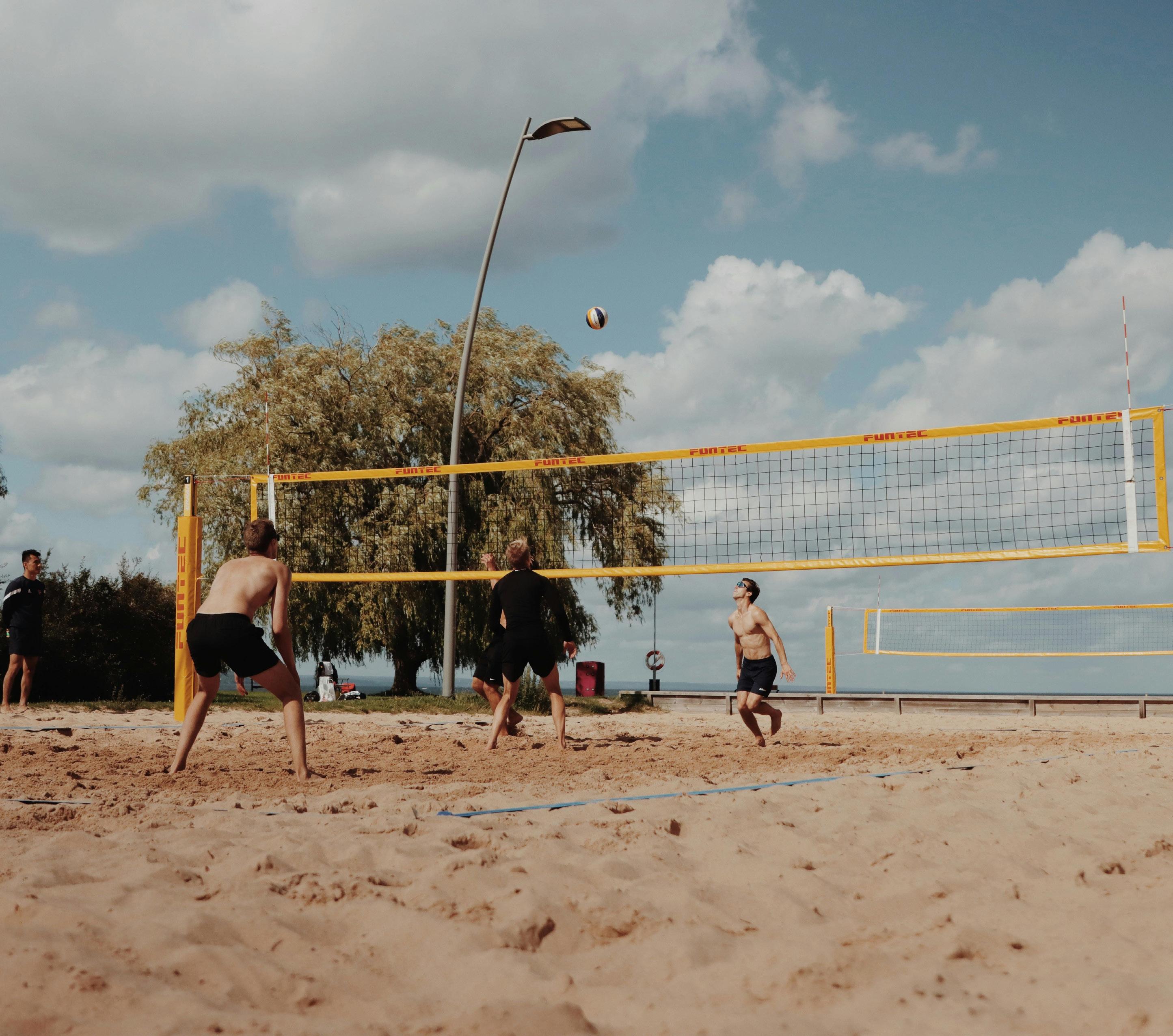
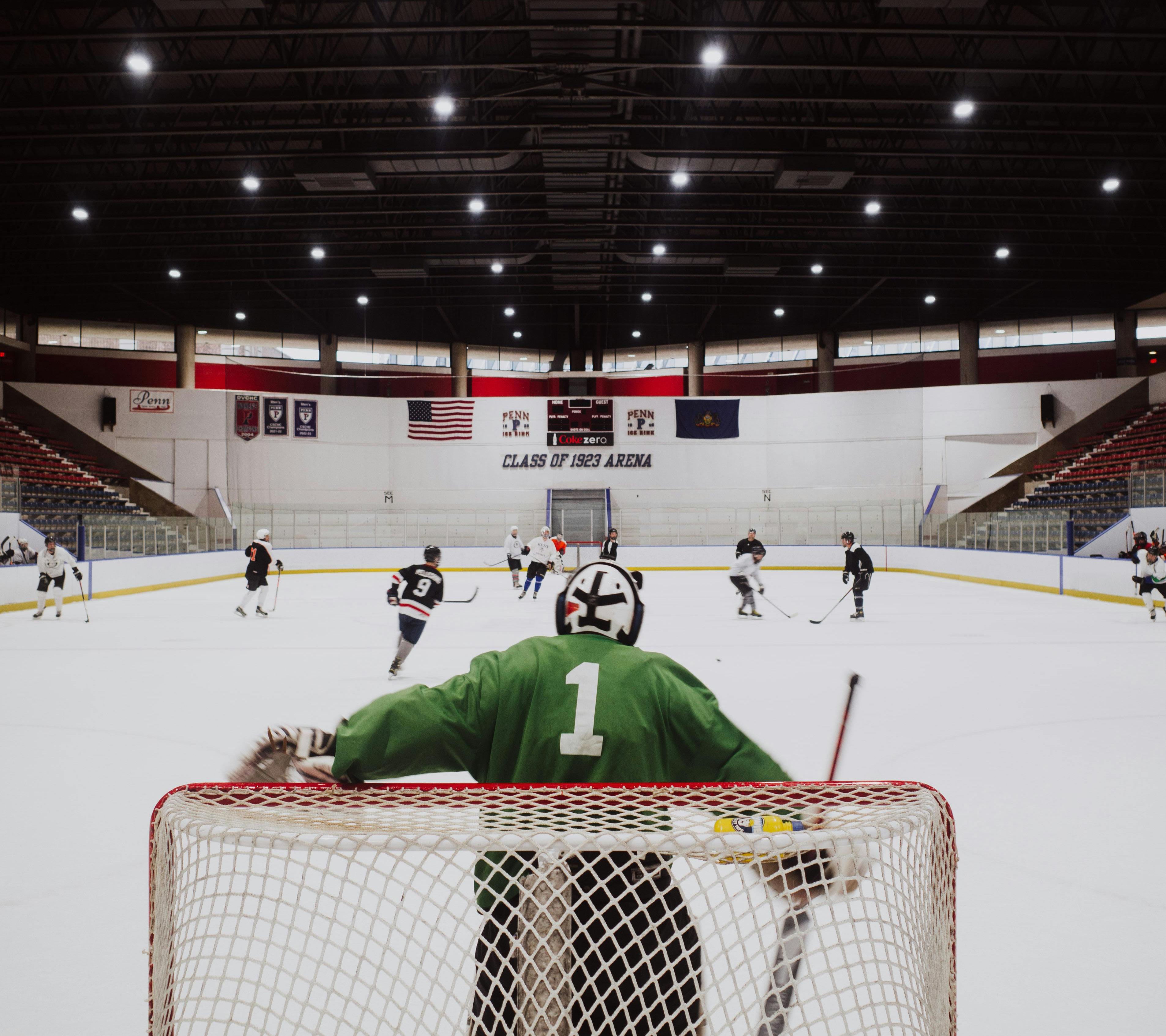
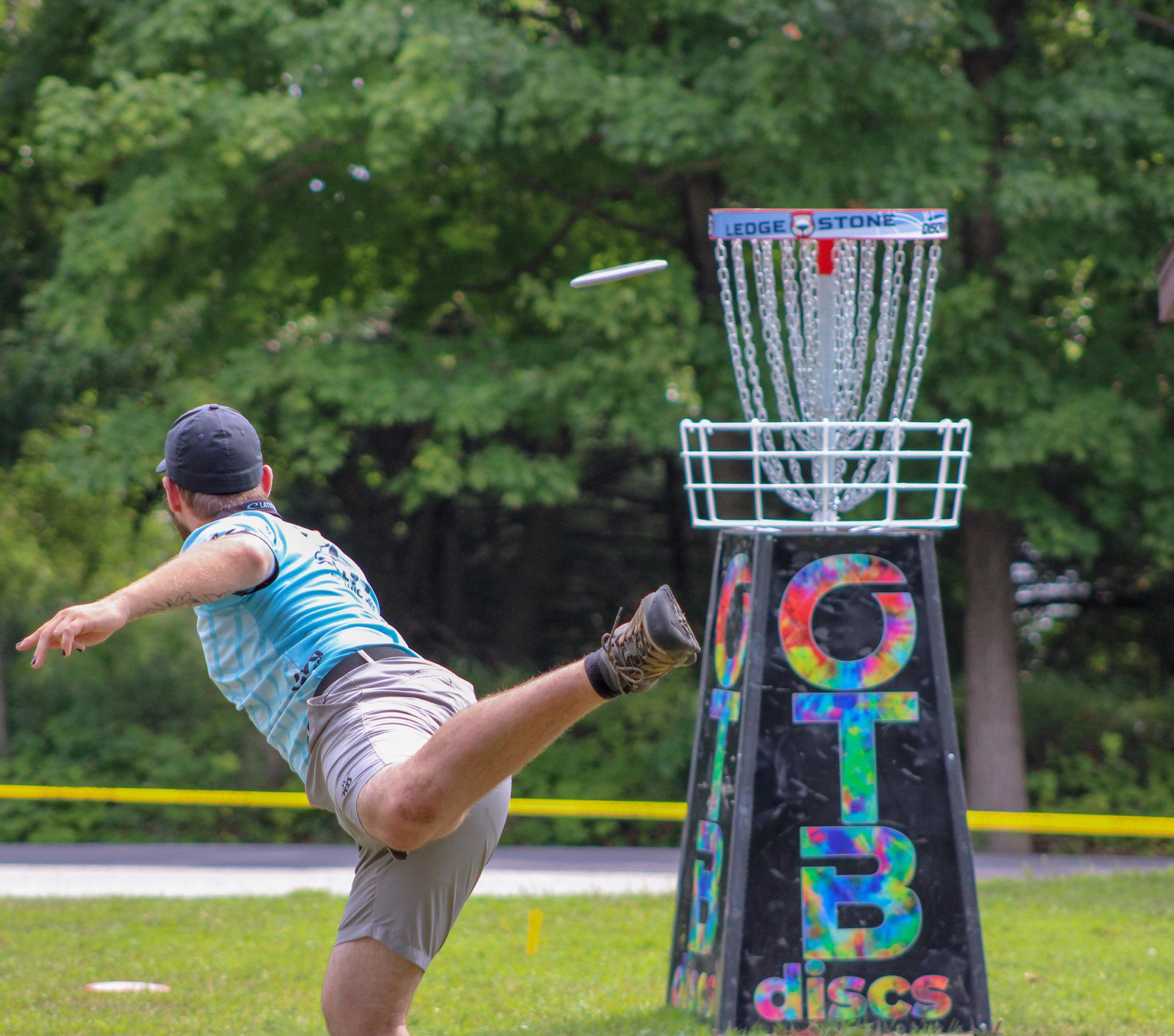
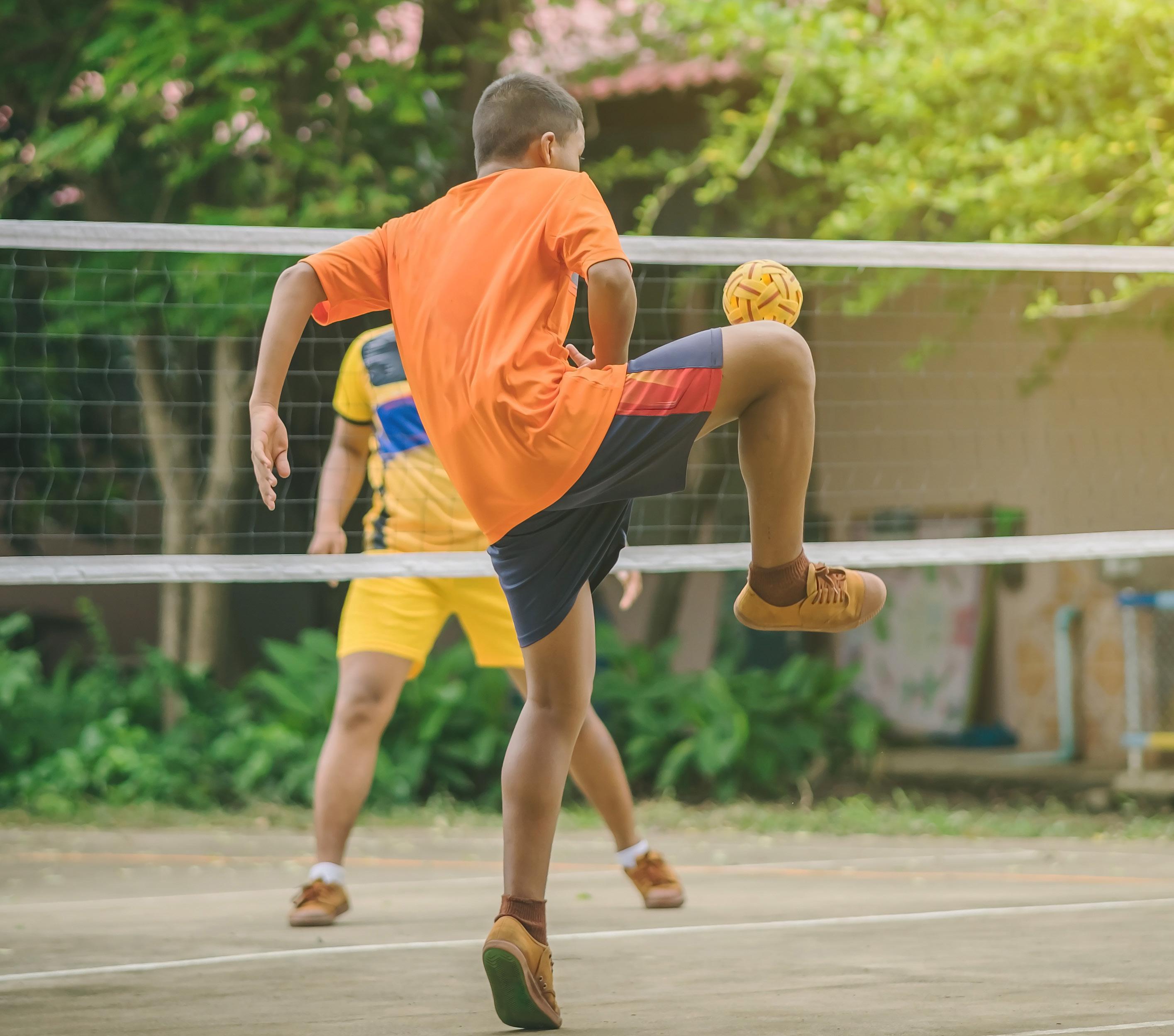
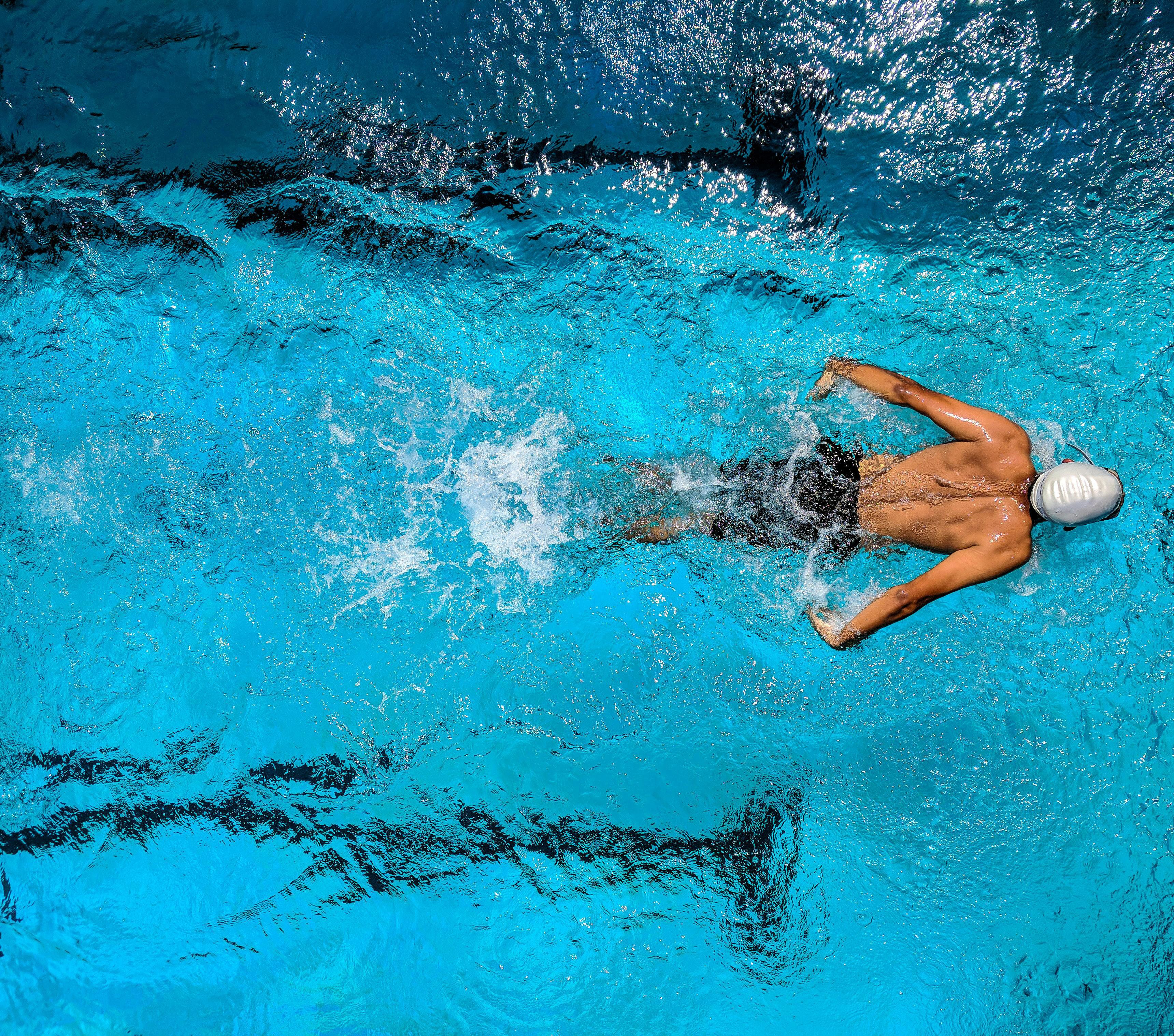


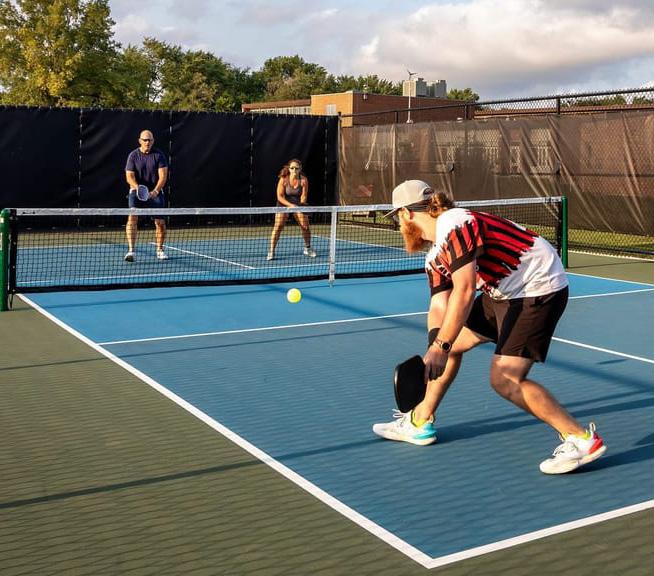
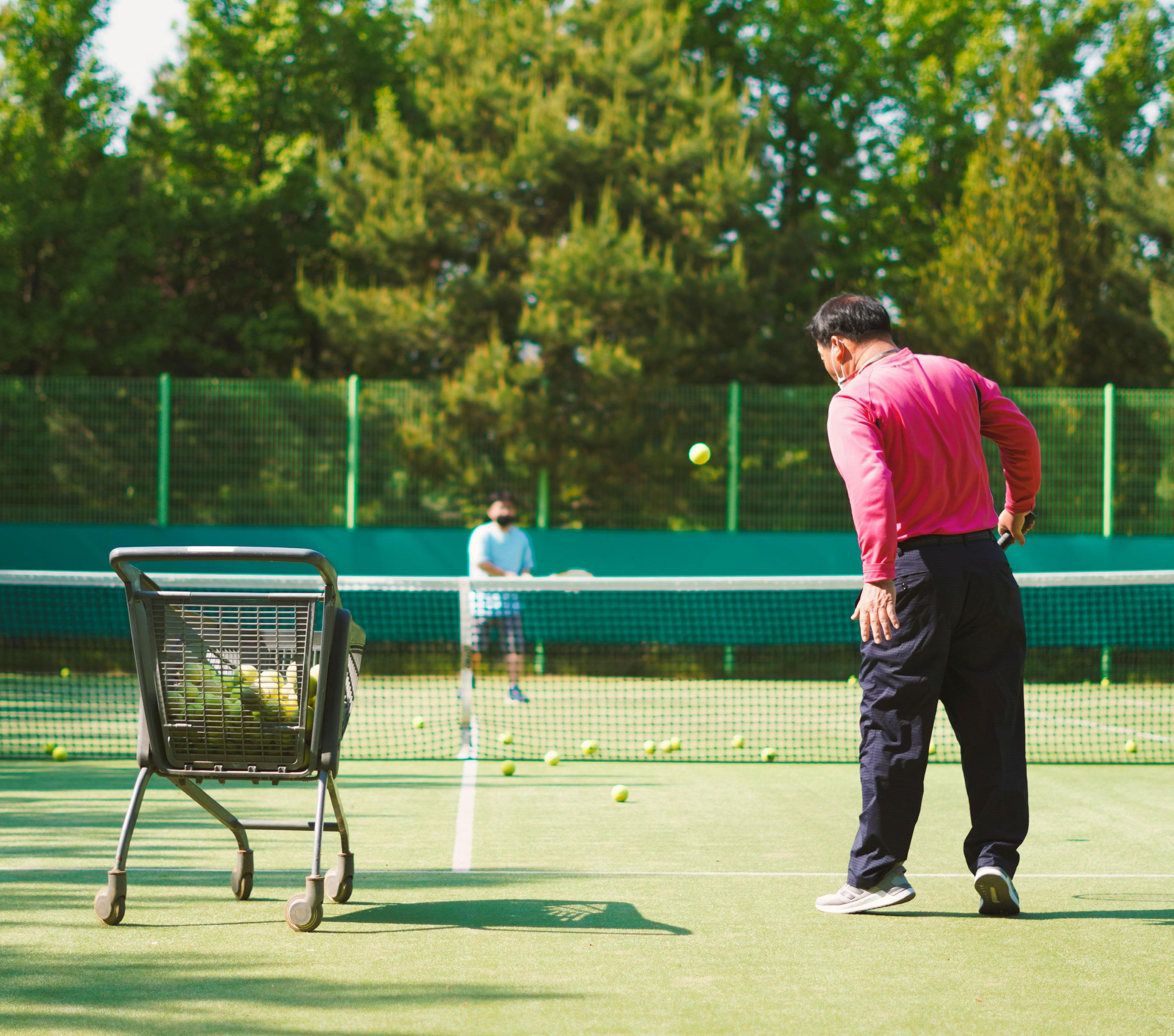
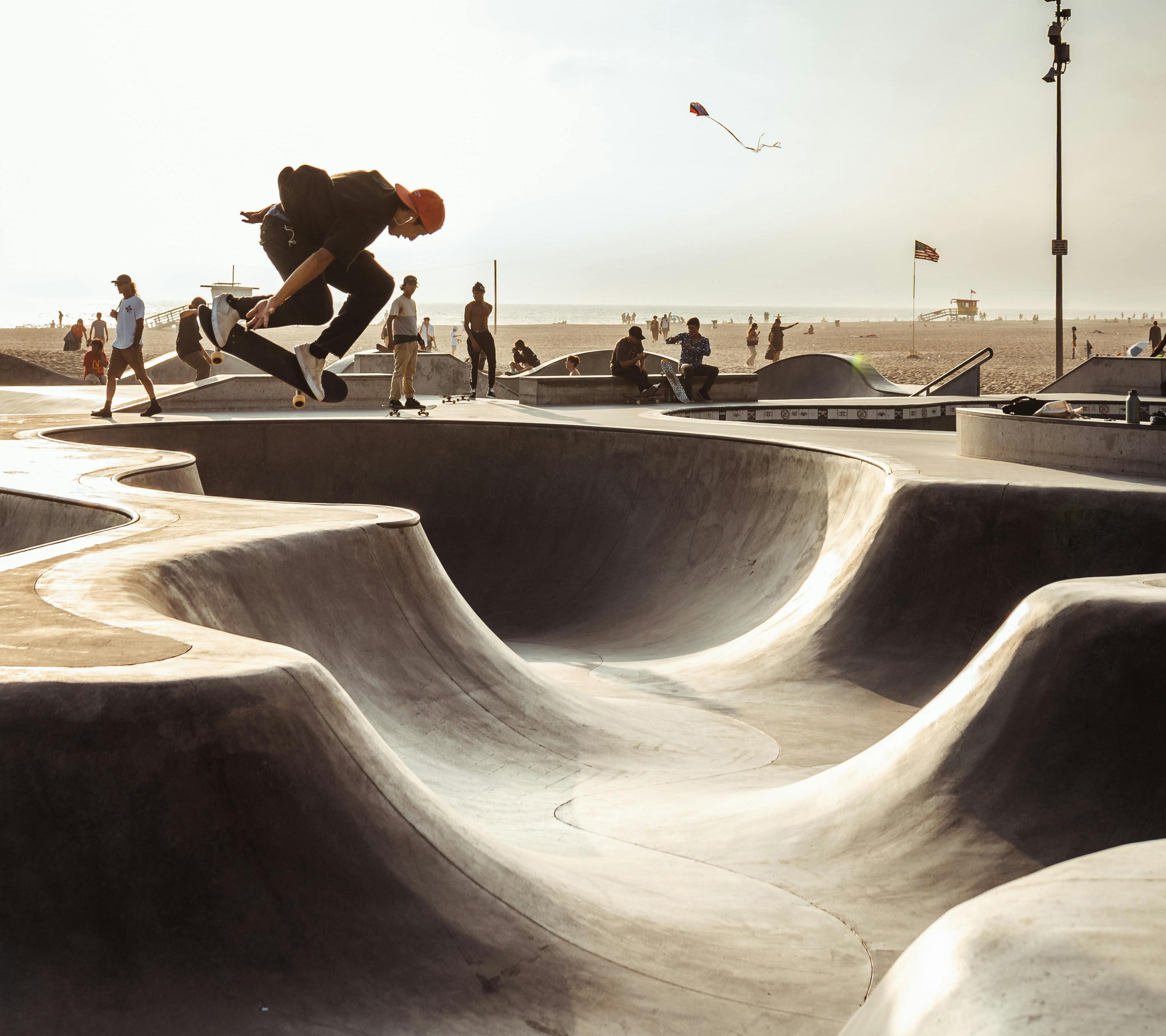
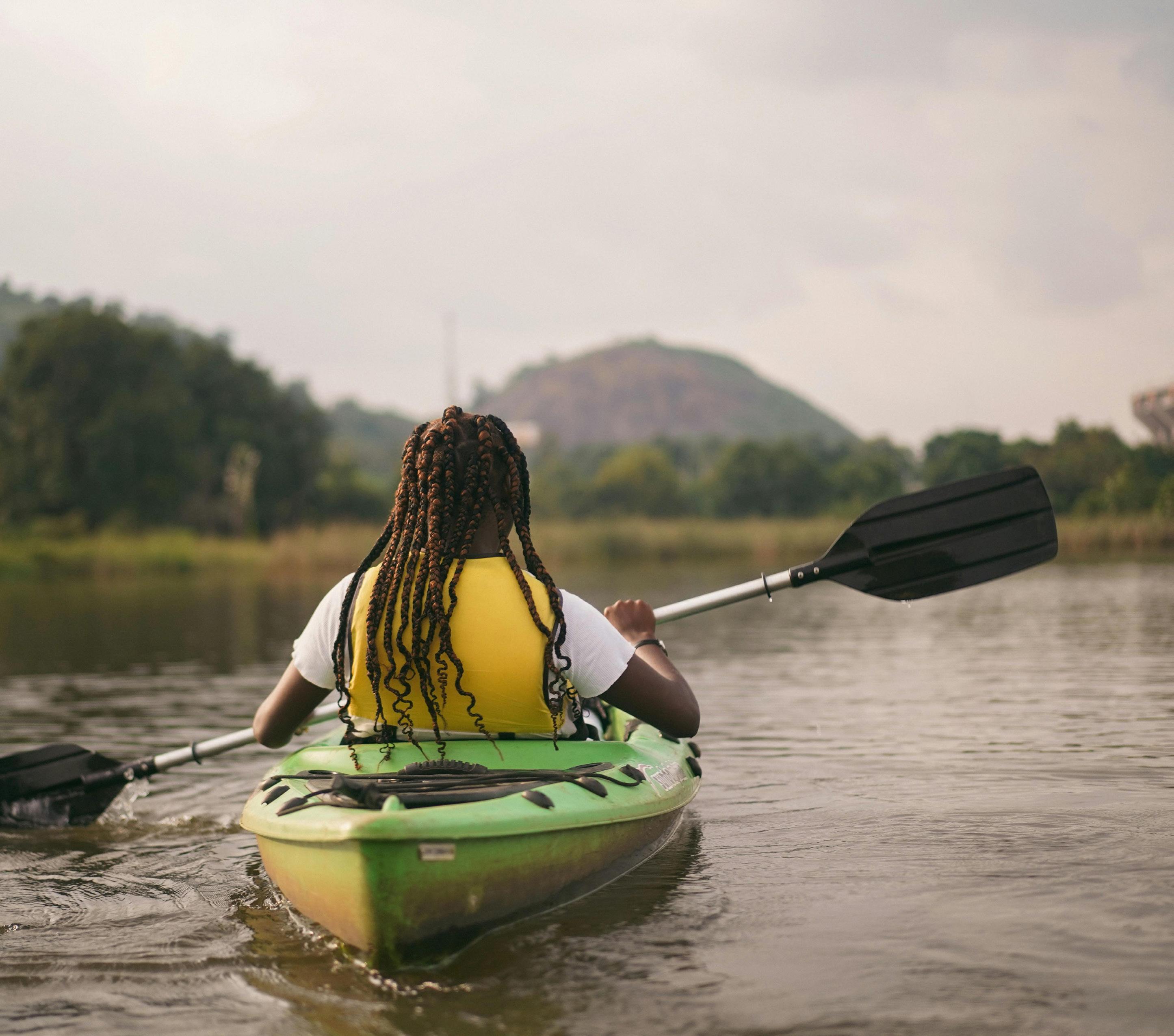


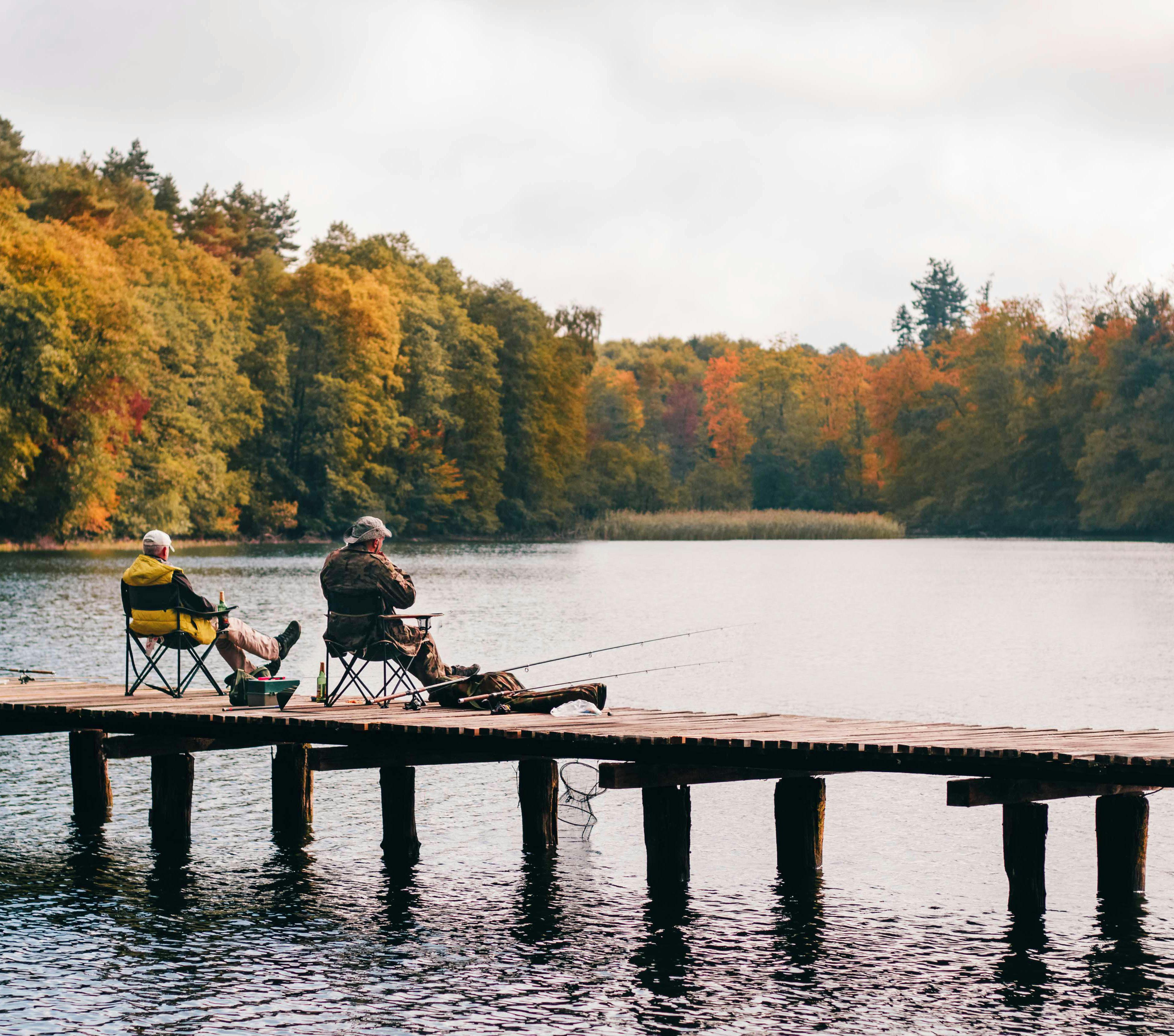
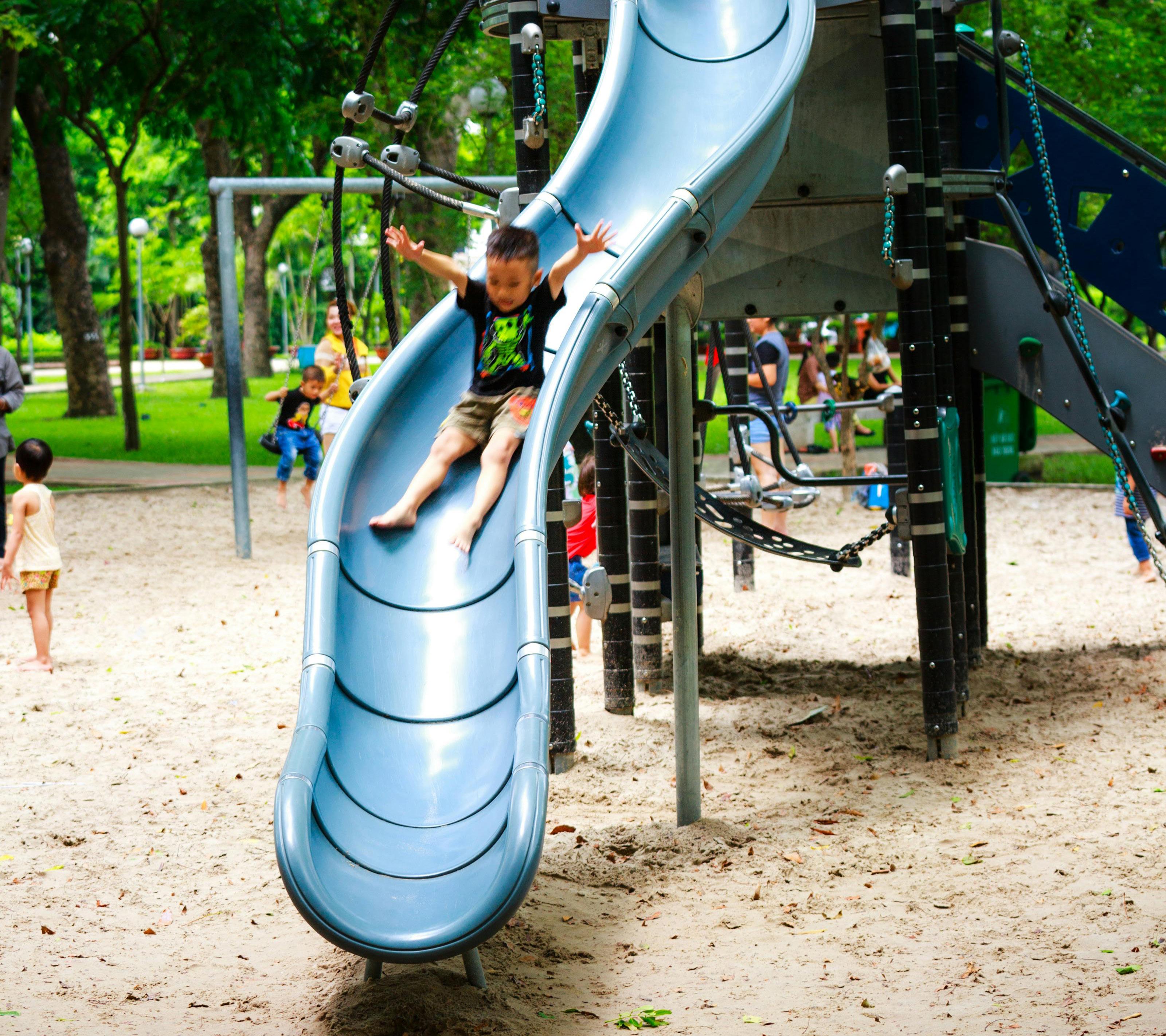

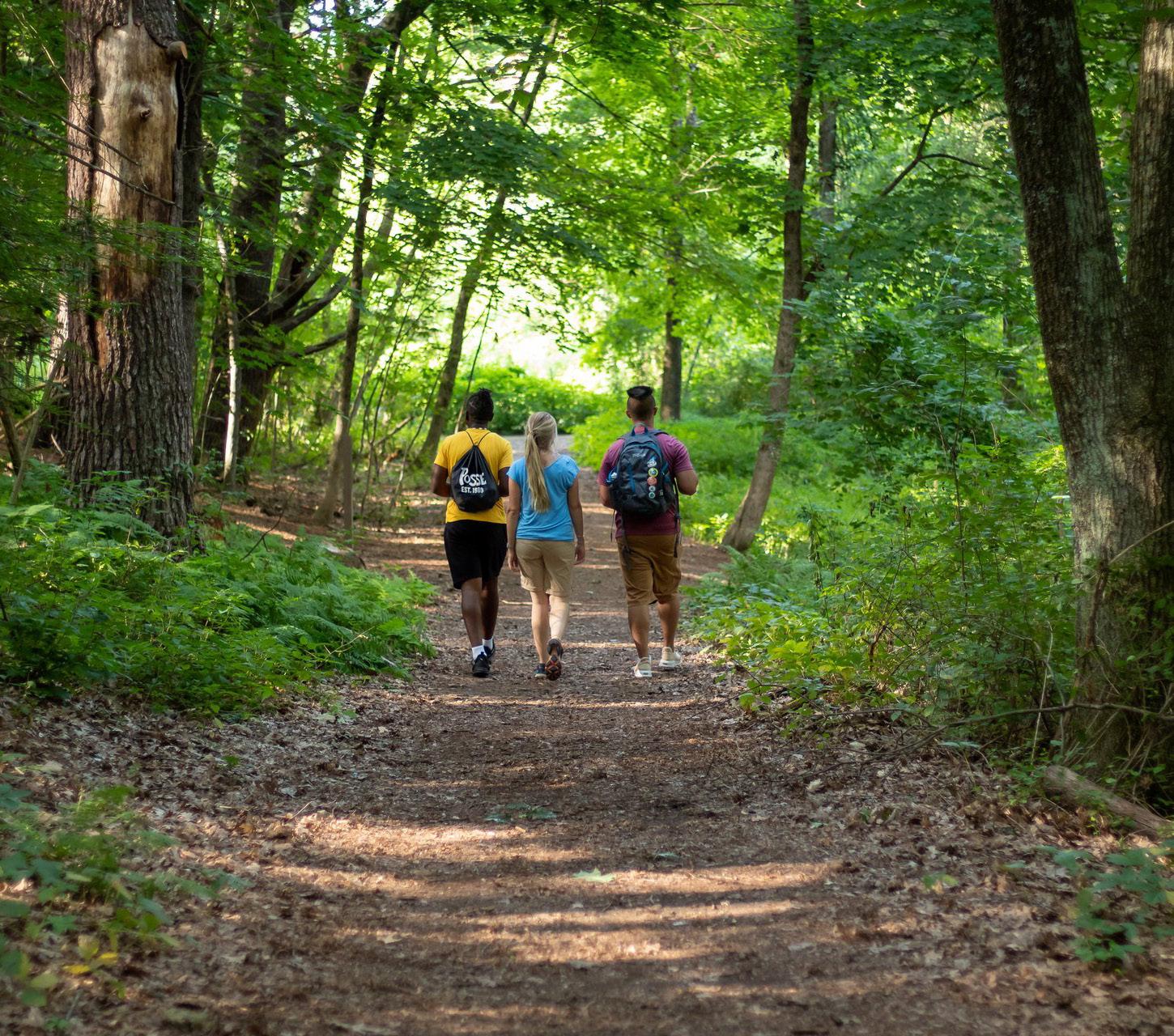

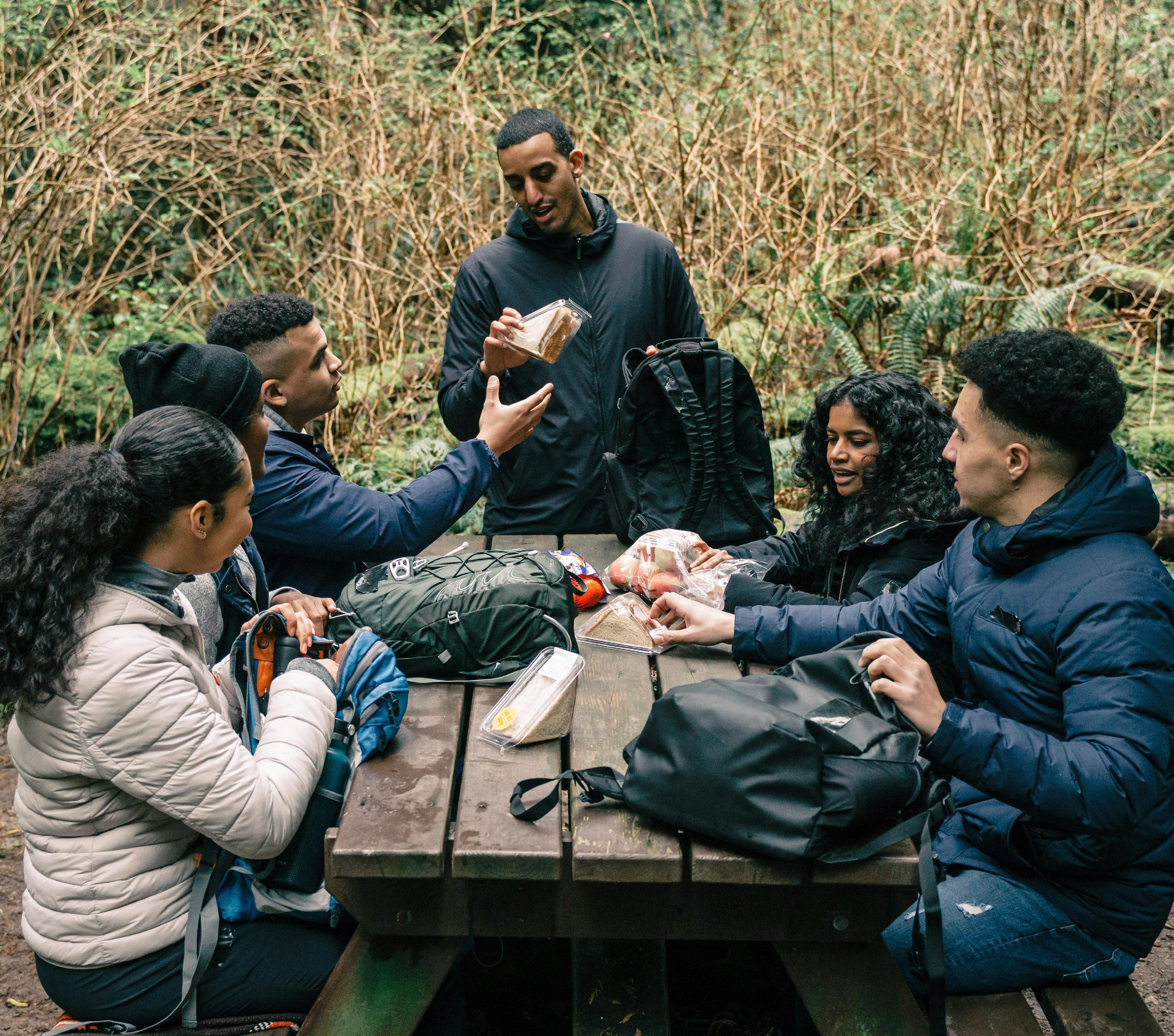


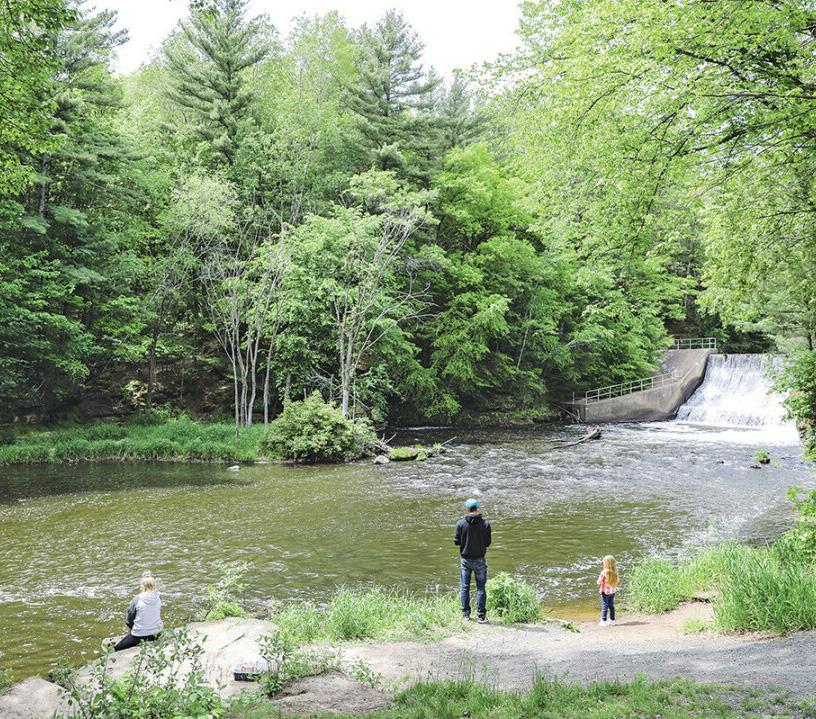
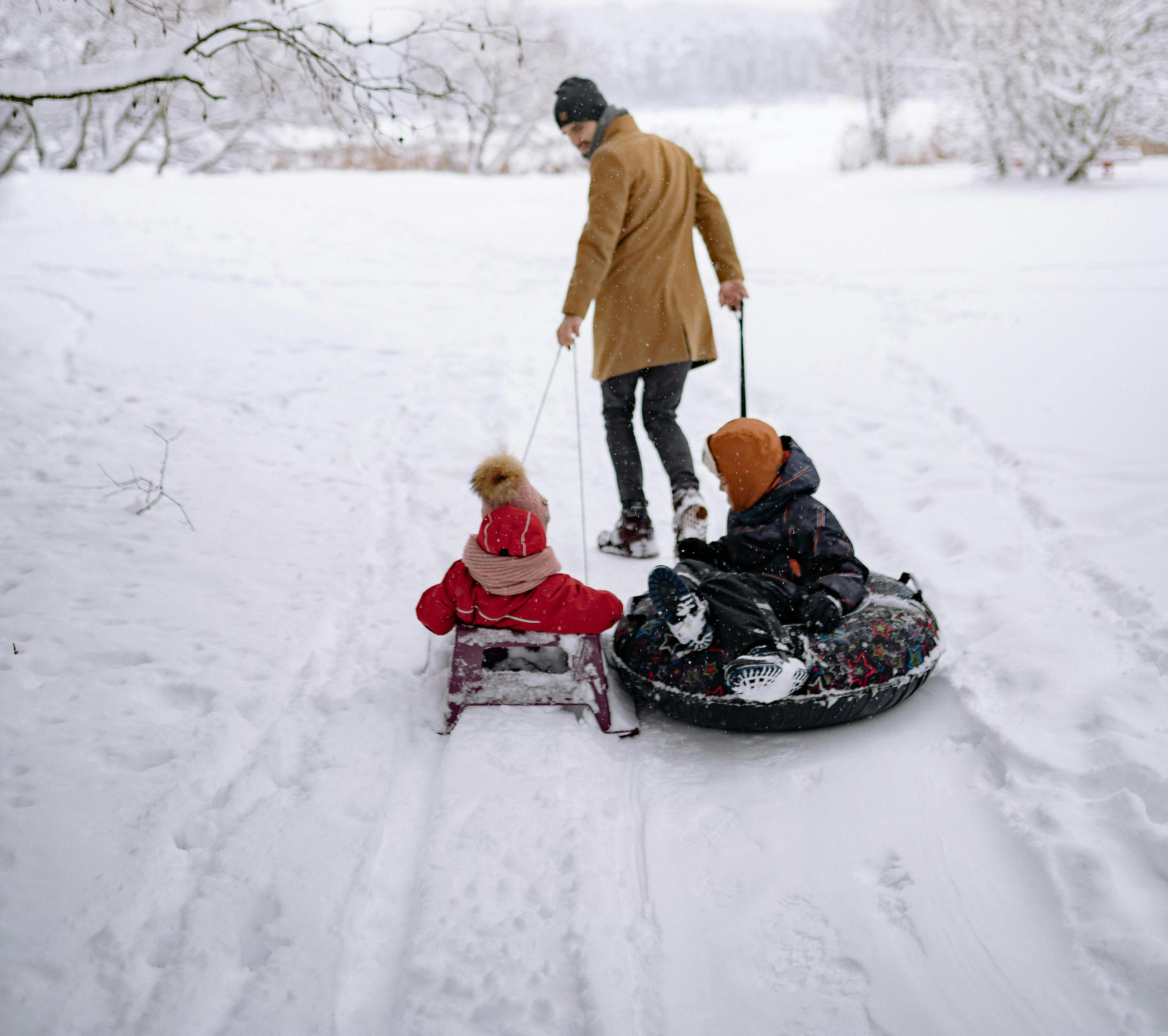
I would visit a park to .
I would visit a park to .
I would visit a park to .
I would visit a park to .
I would visit a park to .
I would visit a park to .
I would visit a park to .
I would visit a park to .
I would visit a park to .
I would visit a park to .
I would visit a park to .
I would visit a park to .
I would visit a park to .
I would visit a park to .
I would visit a park to .
I would visit a park to .
I would visit a park to .
I would visit a park to .
I would visit a park to .
I would visit a park to .
I would visit a park to .
I would visit a park to .
I would visit a park to .
I would visit a park to .
I would visit a park to
Fill in the blank with your thoughts.
I would visit a park to .
I would visit a park to
I would visit a park to
I would visit a park to
I would visit a park to
I would visit a park to
I would visit a park to
I would visit a park to
I would visit a park to
I would visit a park to
I would visit a park to .
I would visit a park to
I would visit a park to .
I would visit a park to
I would visit a park to .
I would visit a park to
I would visit a park to
I would visit a park to
I would visit a park to
I would visit a park to
I would visit a park to
I would visit a park to
I would visit a park to
I would visit a park to
I would visit a park to .
I would visit a park to
I would visit a park to
I would visit a park to
I would visit a park to
I would visit a park to
I would visit a park to
I would visit a park to
I would visit a park to
I would visit a park to
I would visit a park to
I would visit a park to
I would visit a park to
I would visit a park to
I would visit a park to
I would visit a park to
I would visit a park to
I would visit a park to
I would visit a park to
I would visit a park to
I would visit a park to
I would visit a park to
I would visit a park to
I would visit a park to
I would visit a park to
I would visit a park to


SATURDAY, JULY 27TH
SHARE YOUR OPINIONS ON THE EAU CLARIE COMPREHENSIVE OUTDOOR RECREATION PLAN
EXPRESS GAME 6:00 - 8:00 PM AND